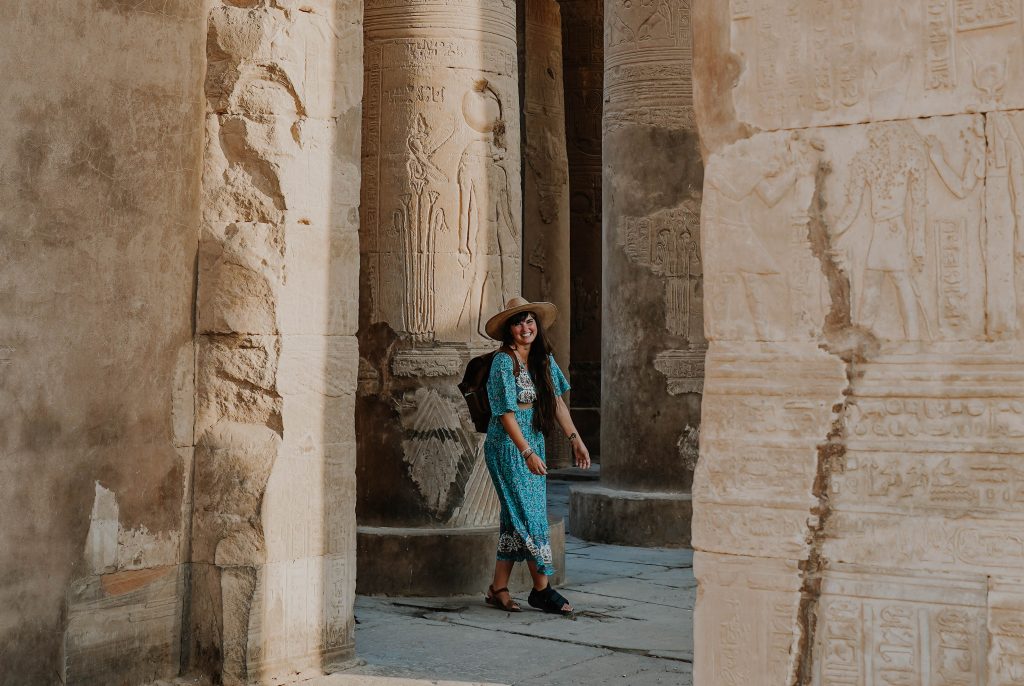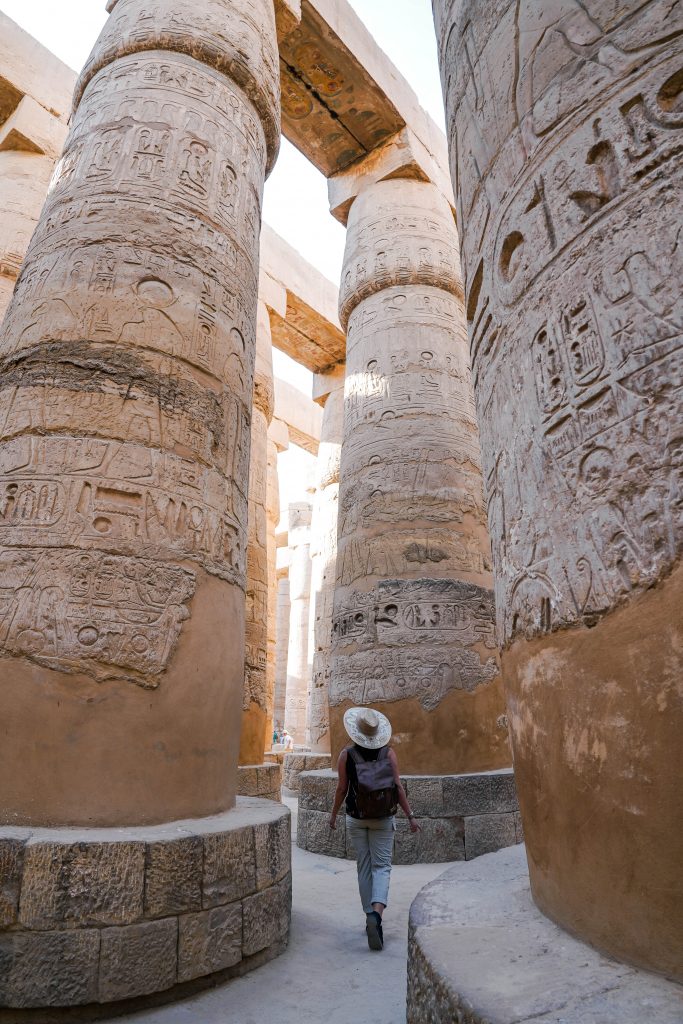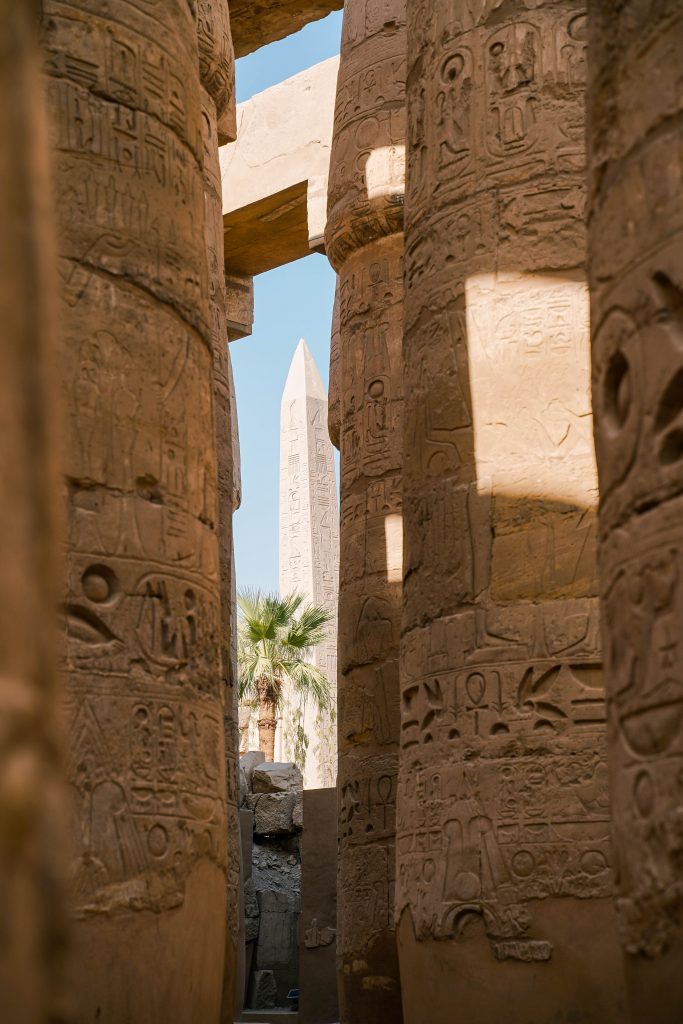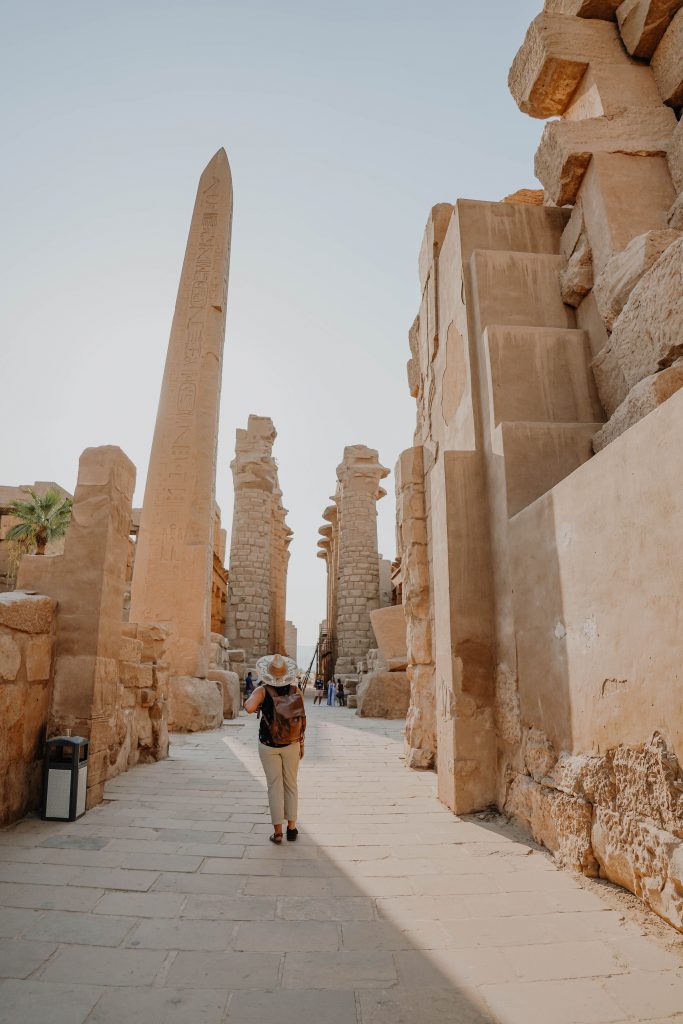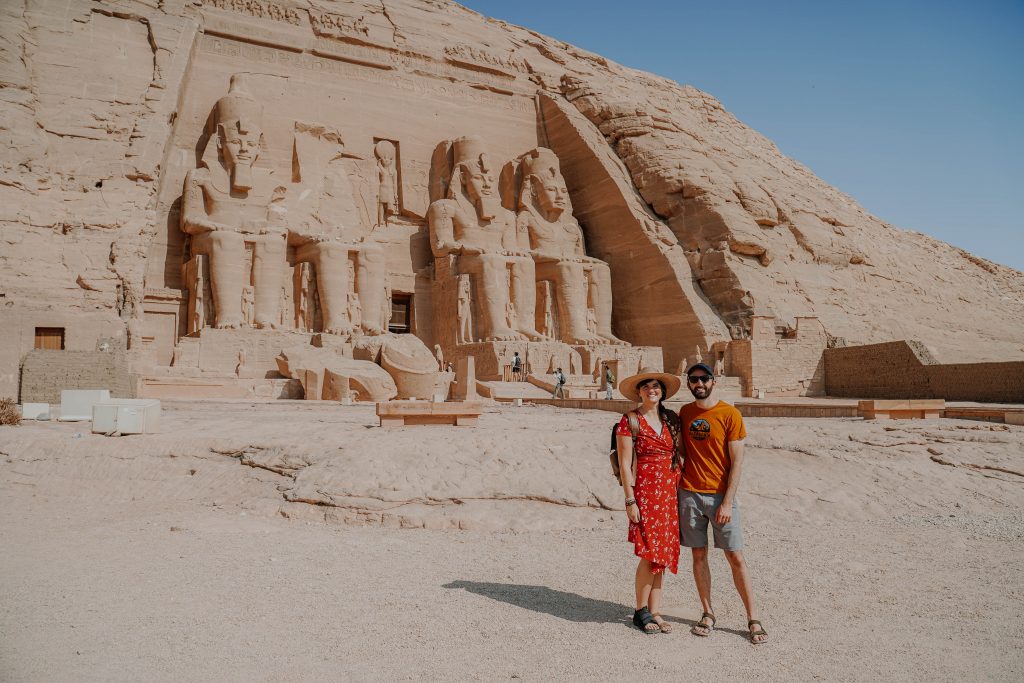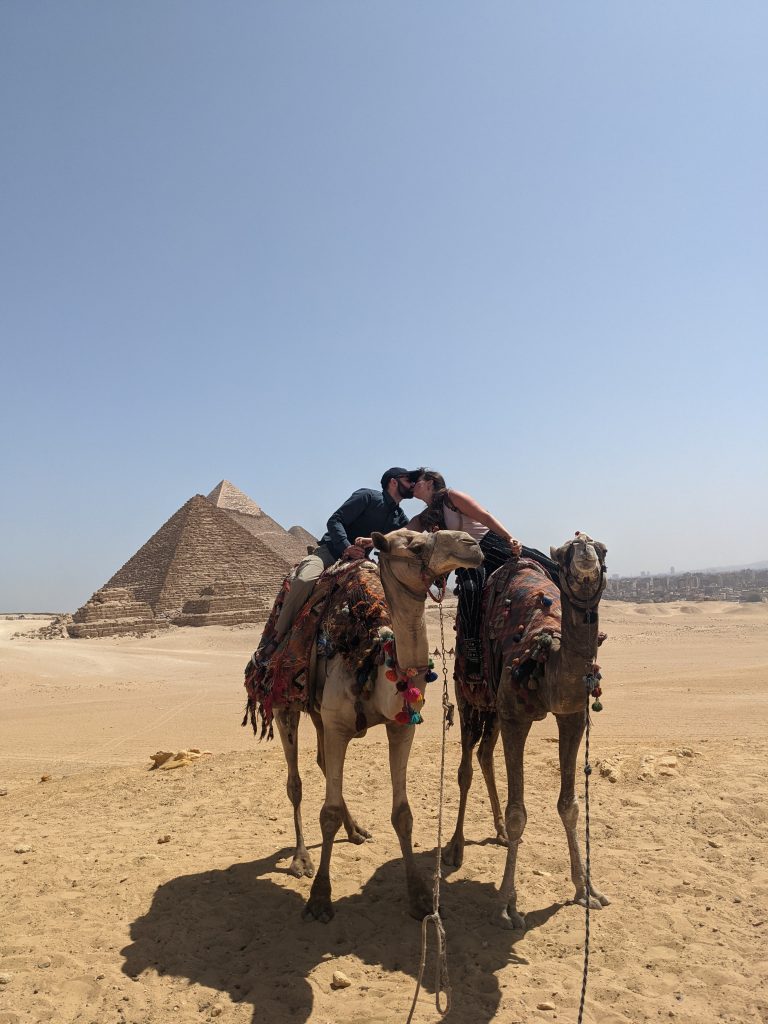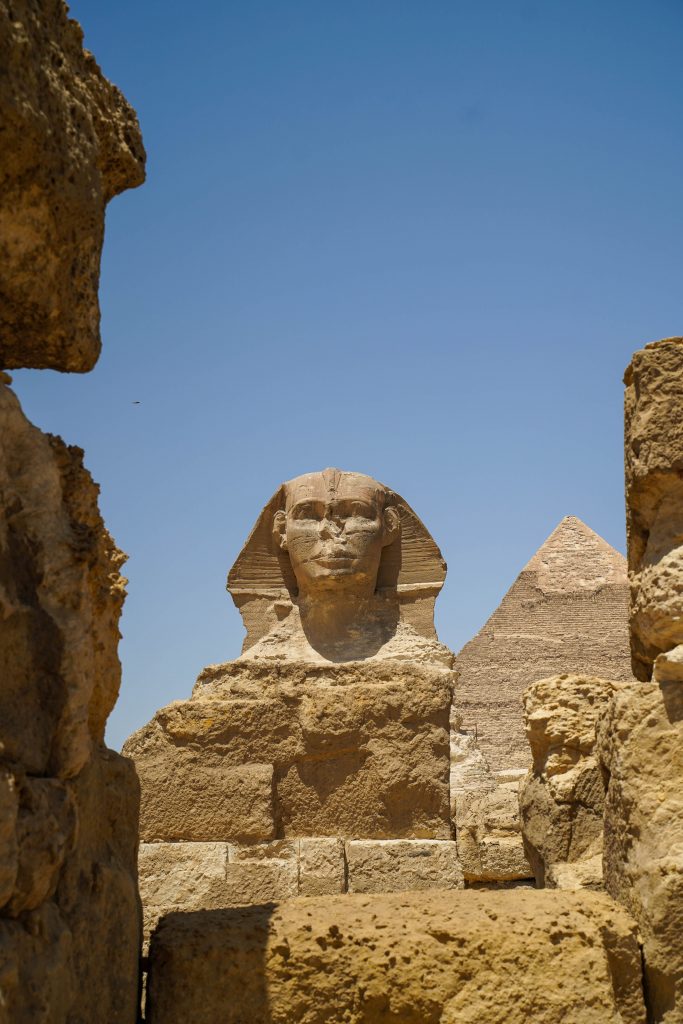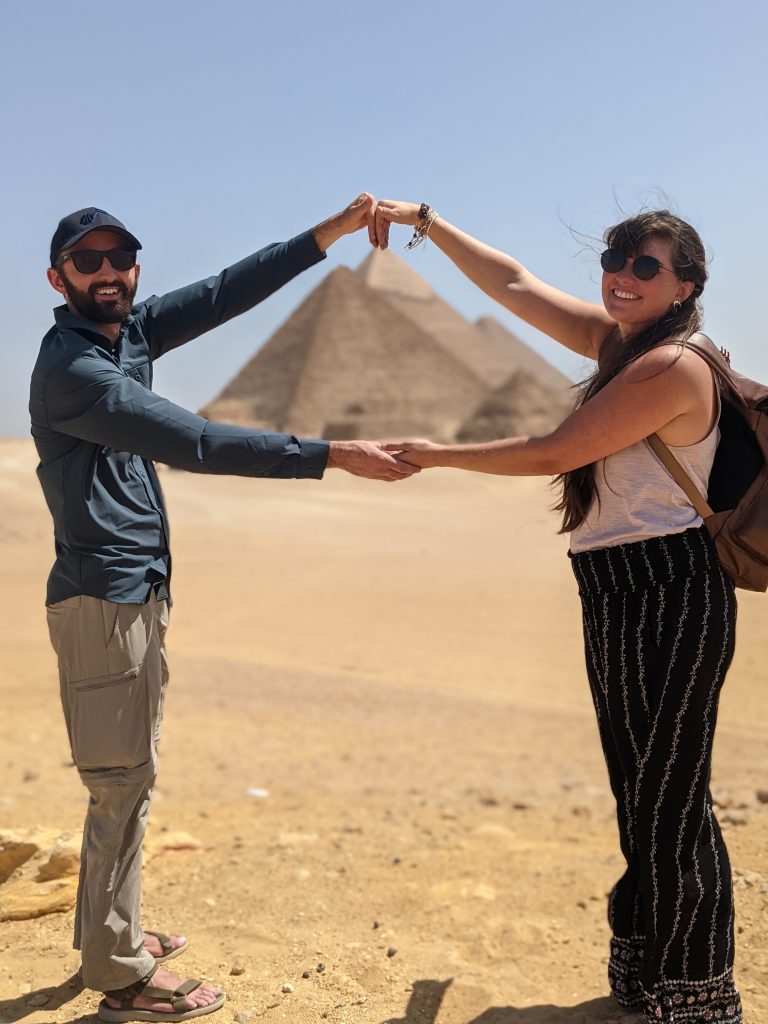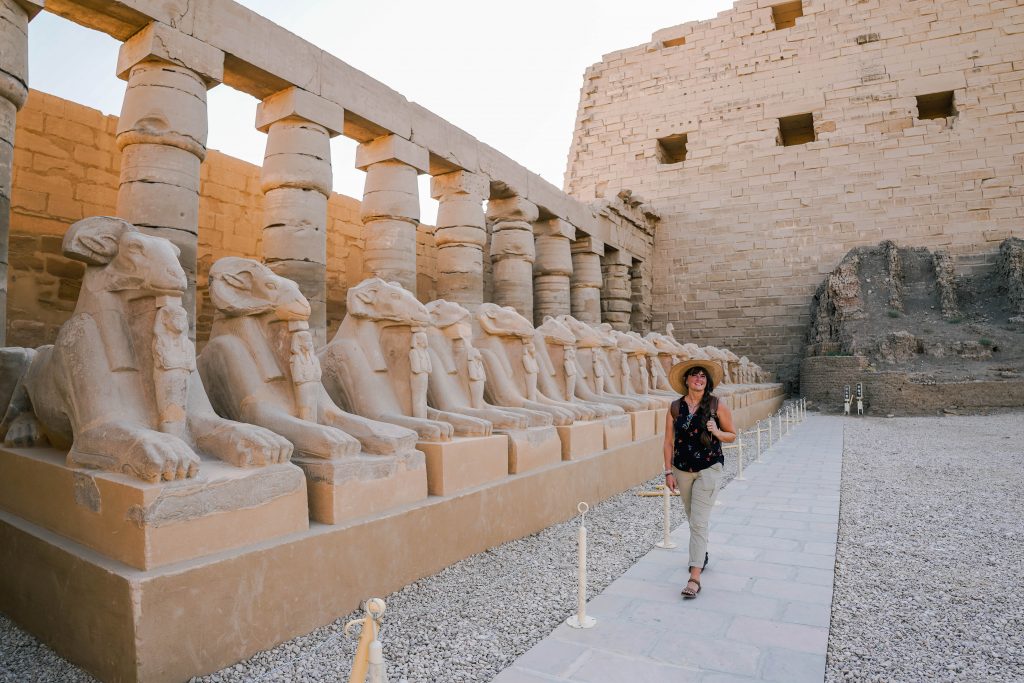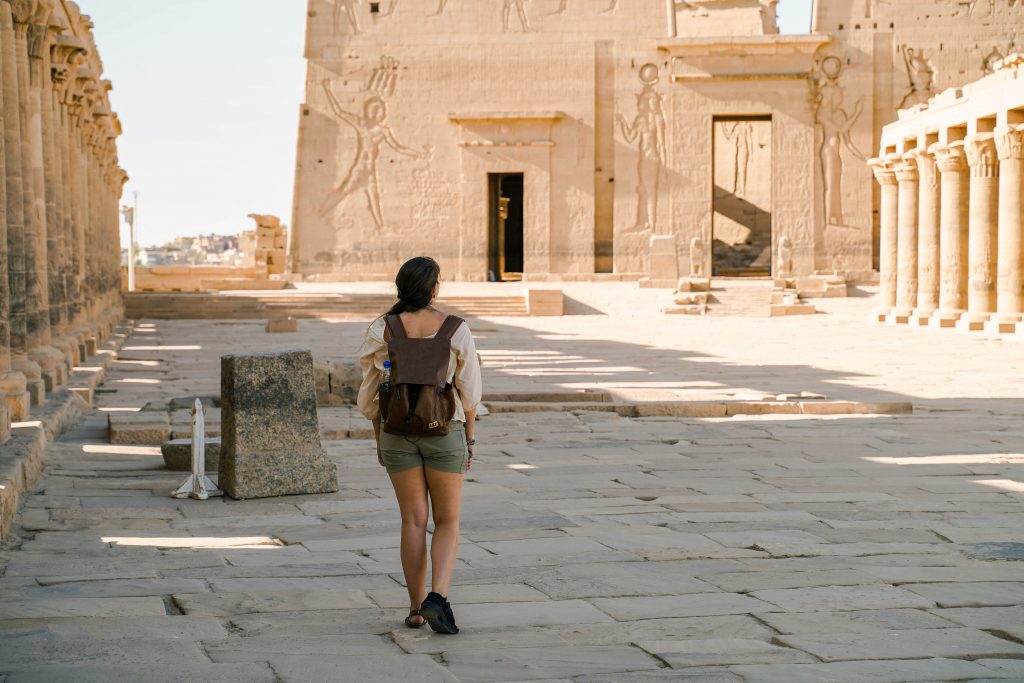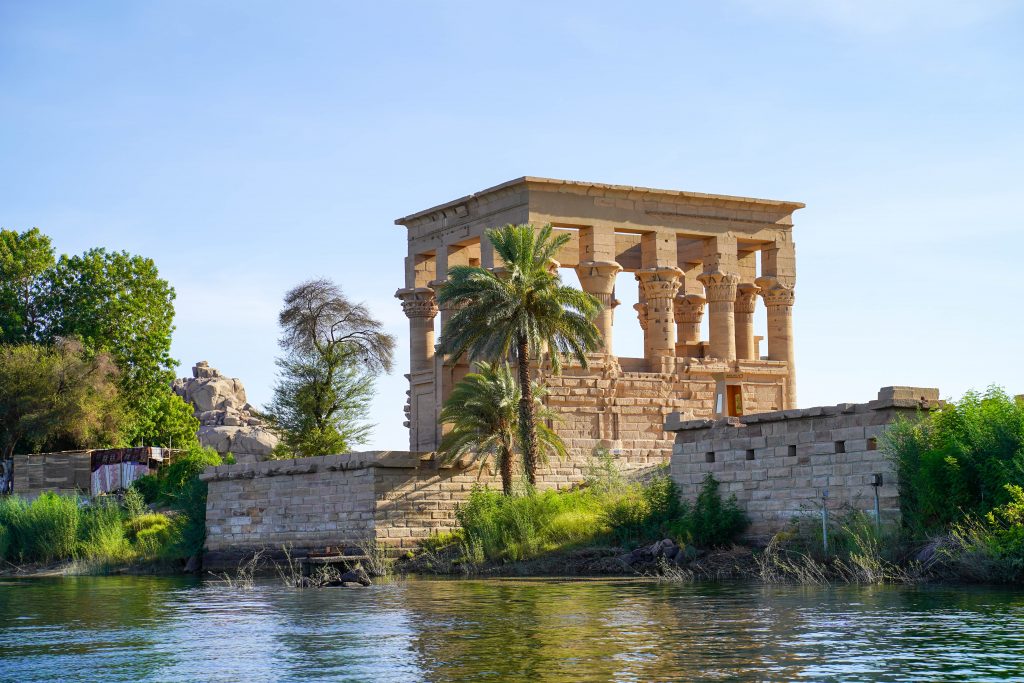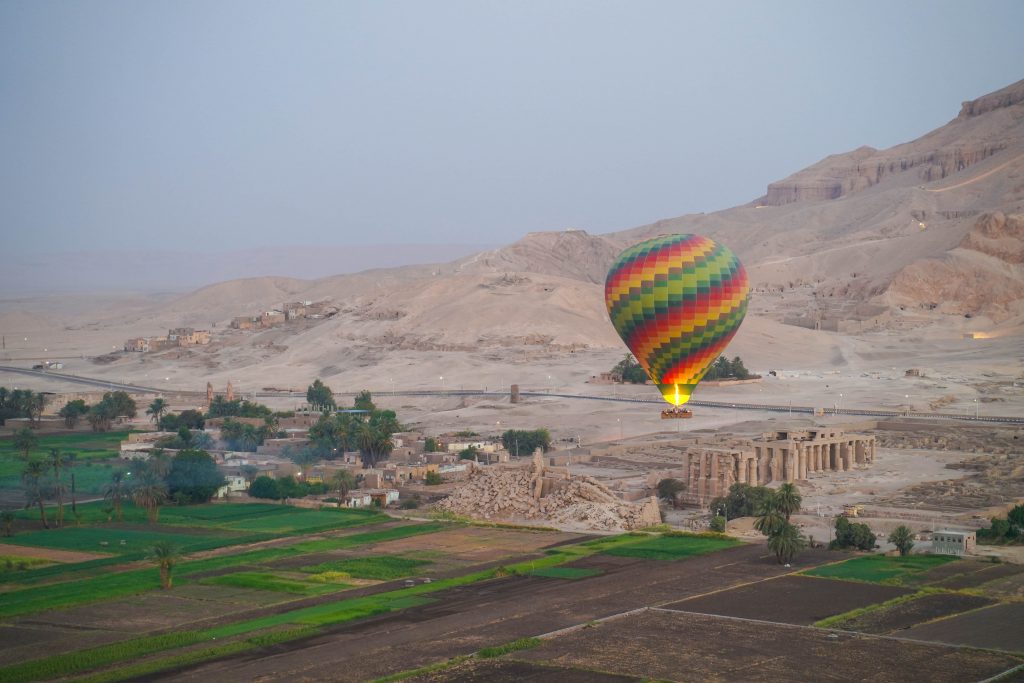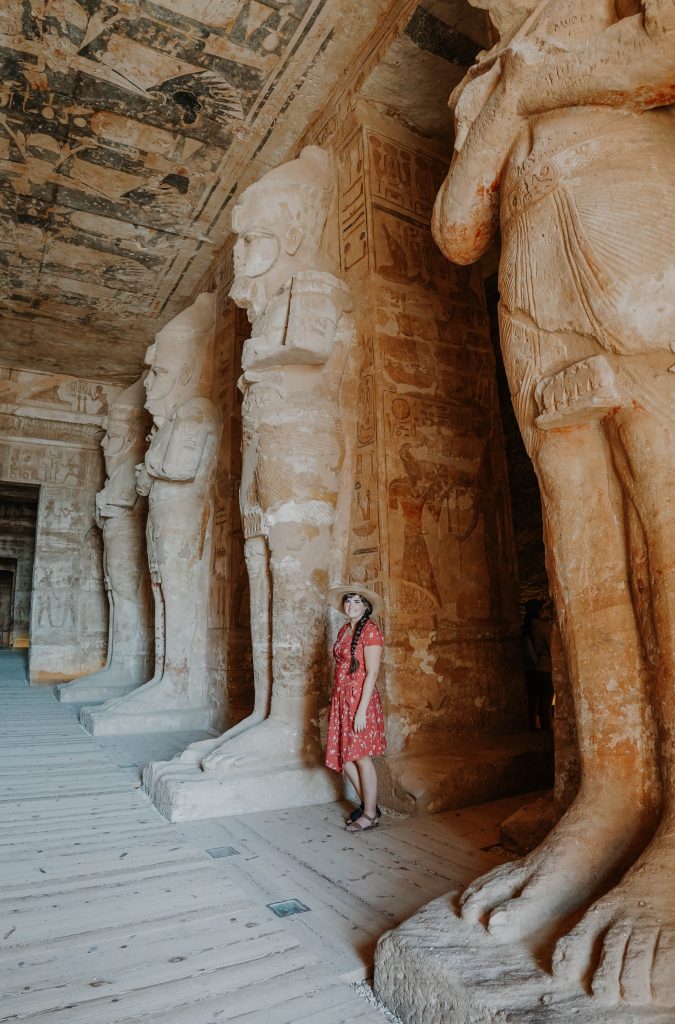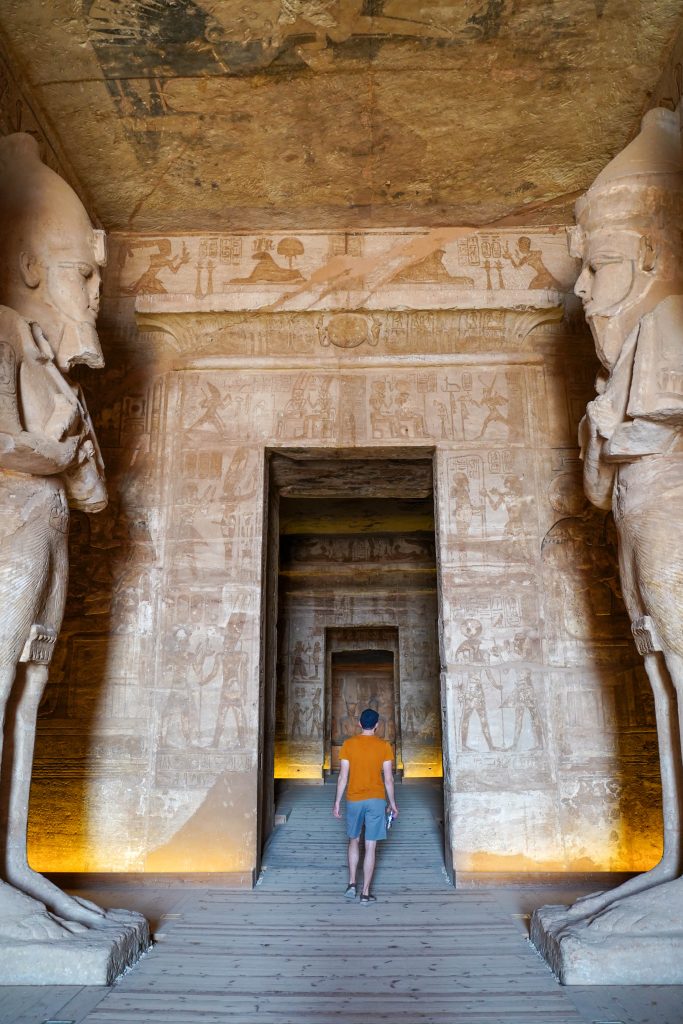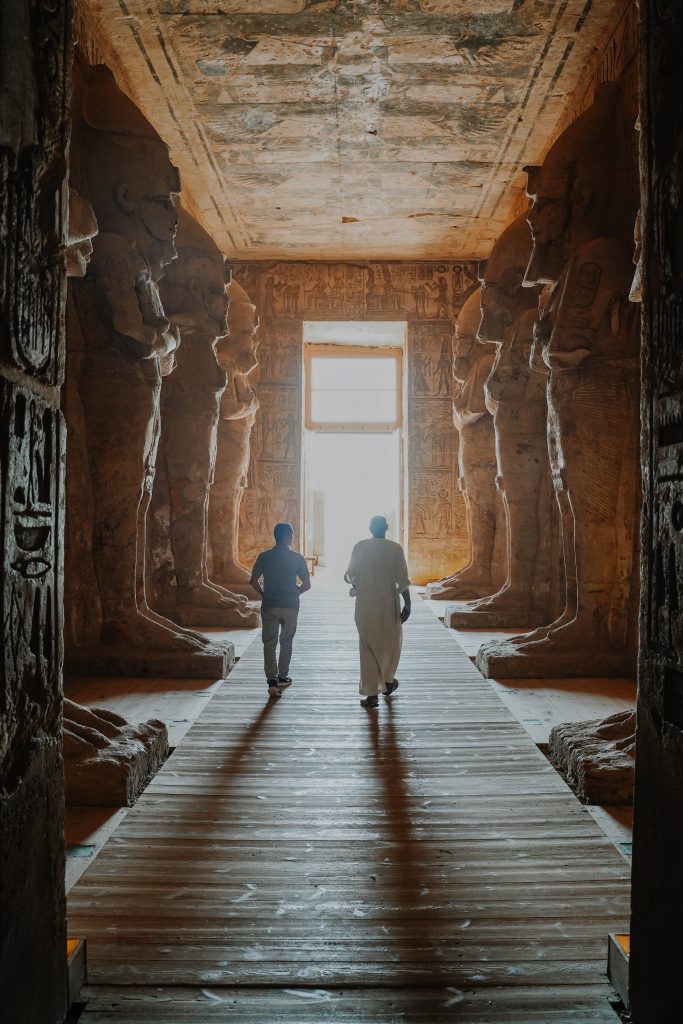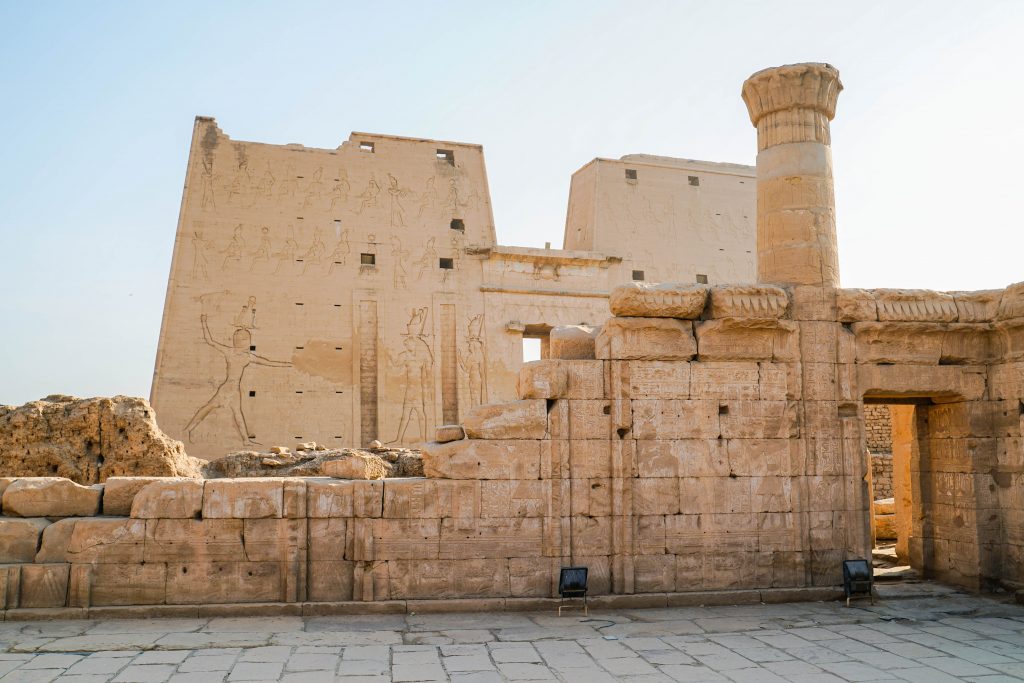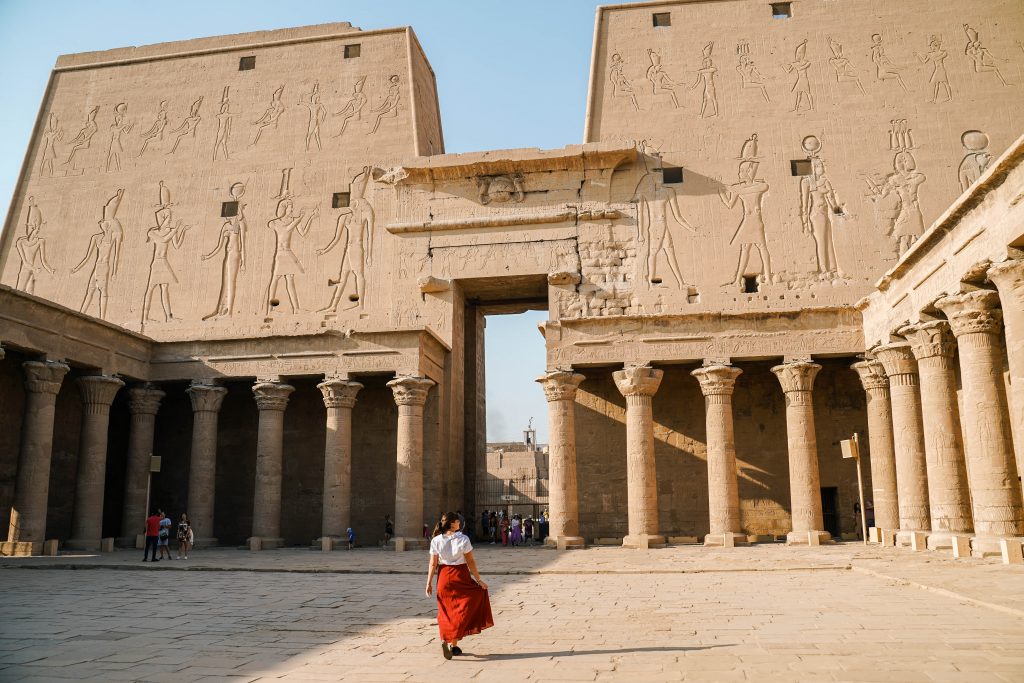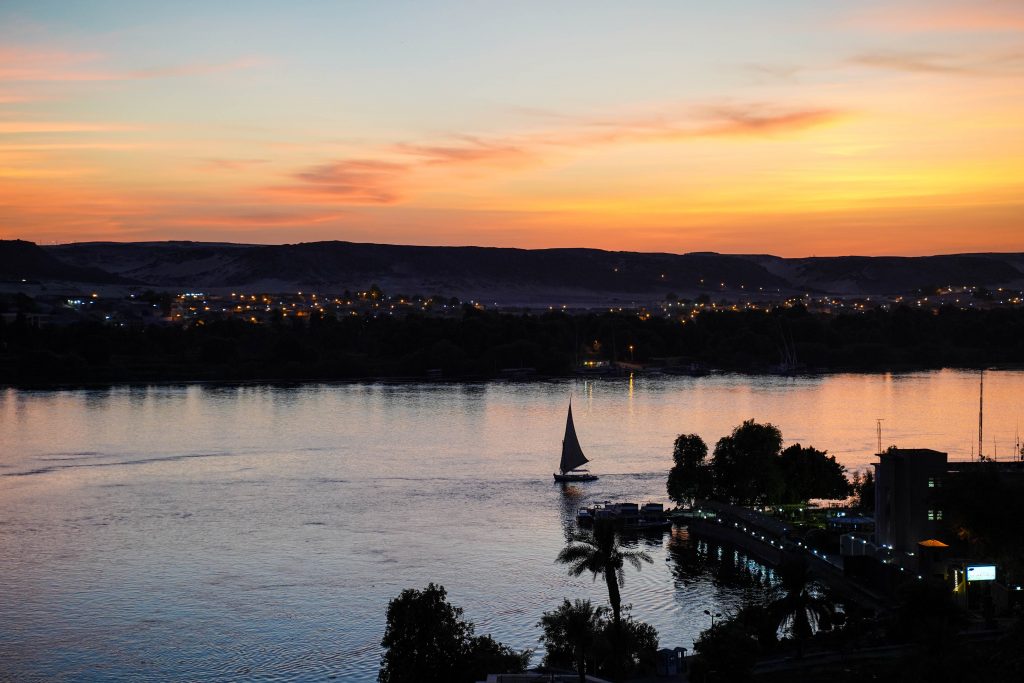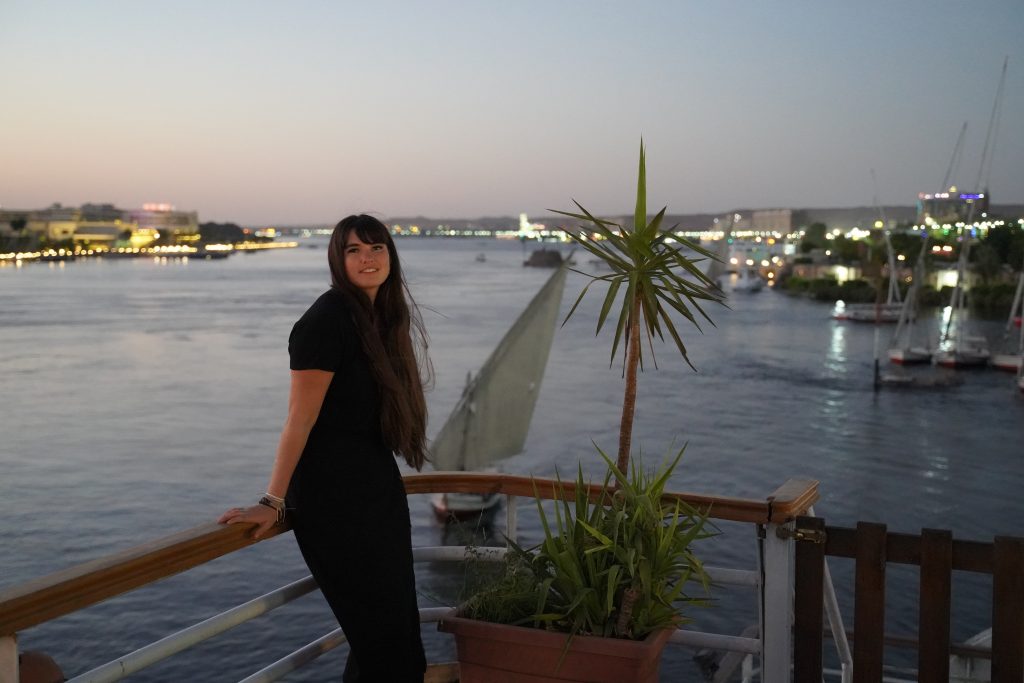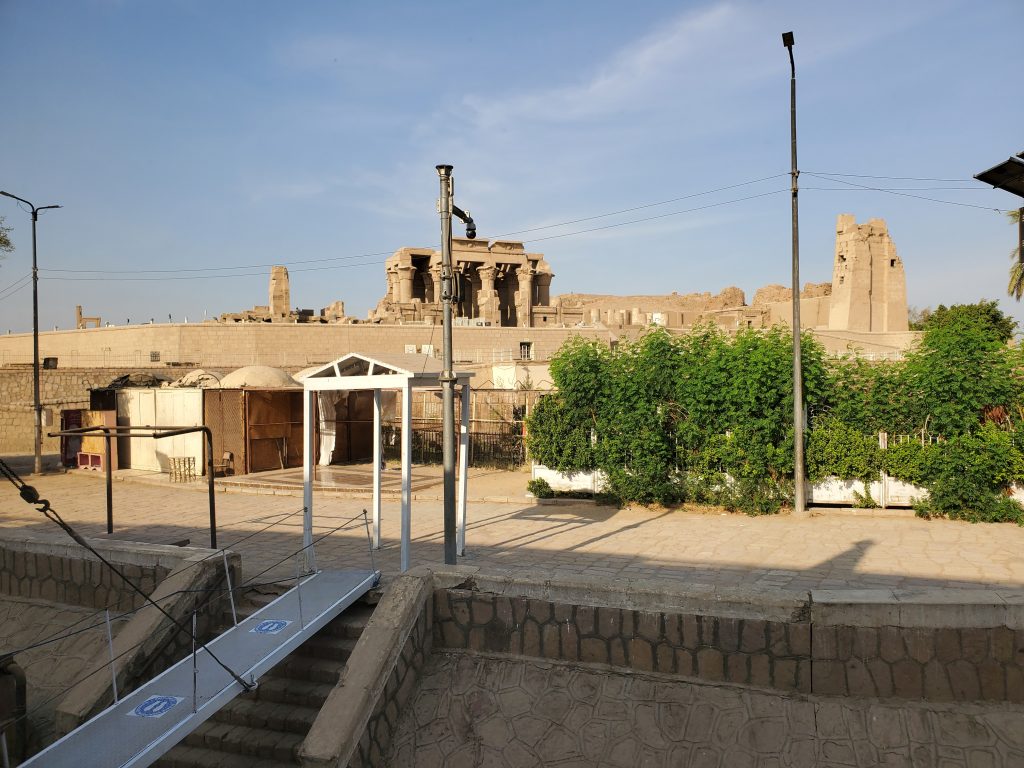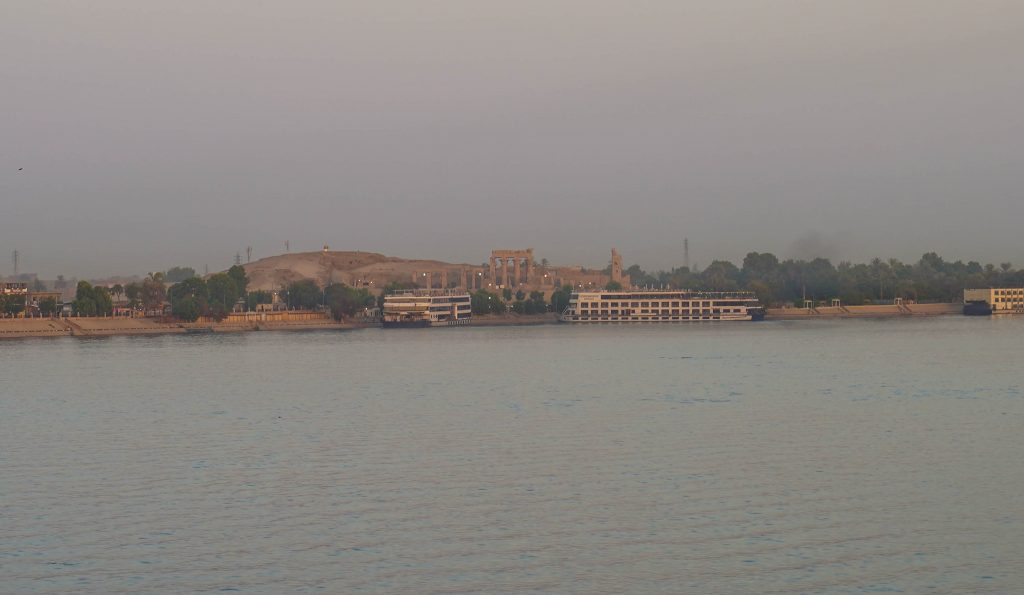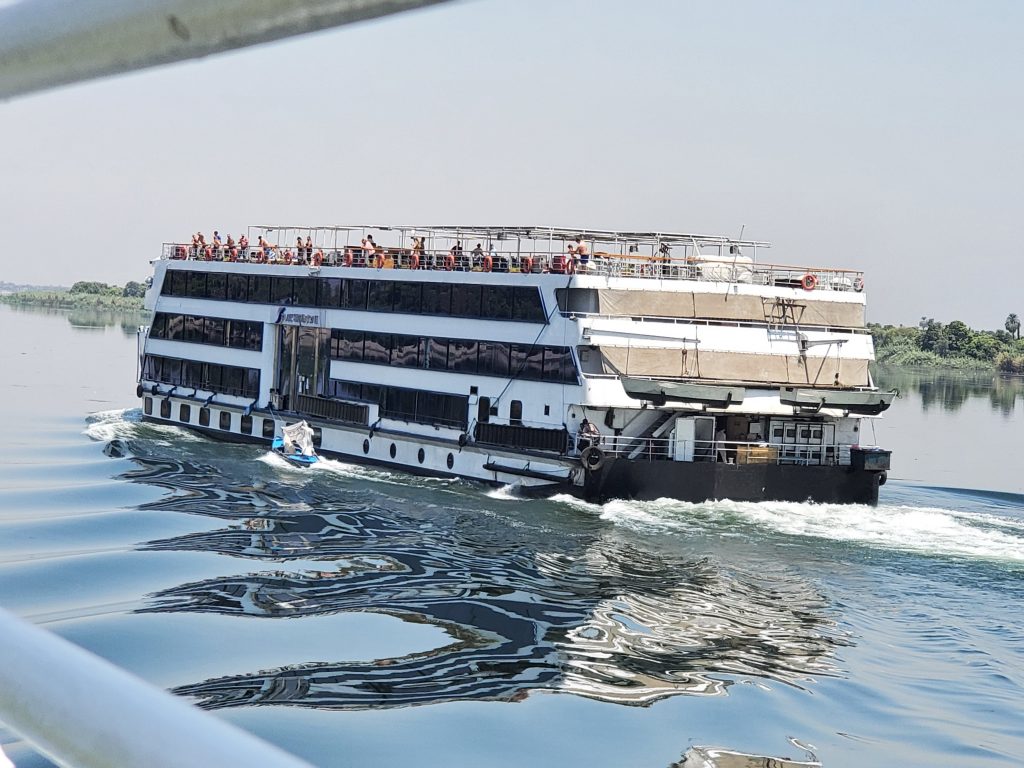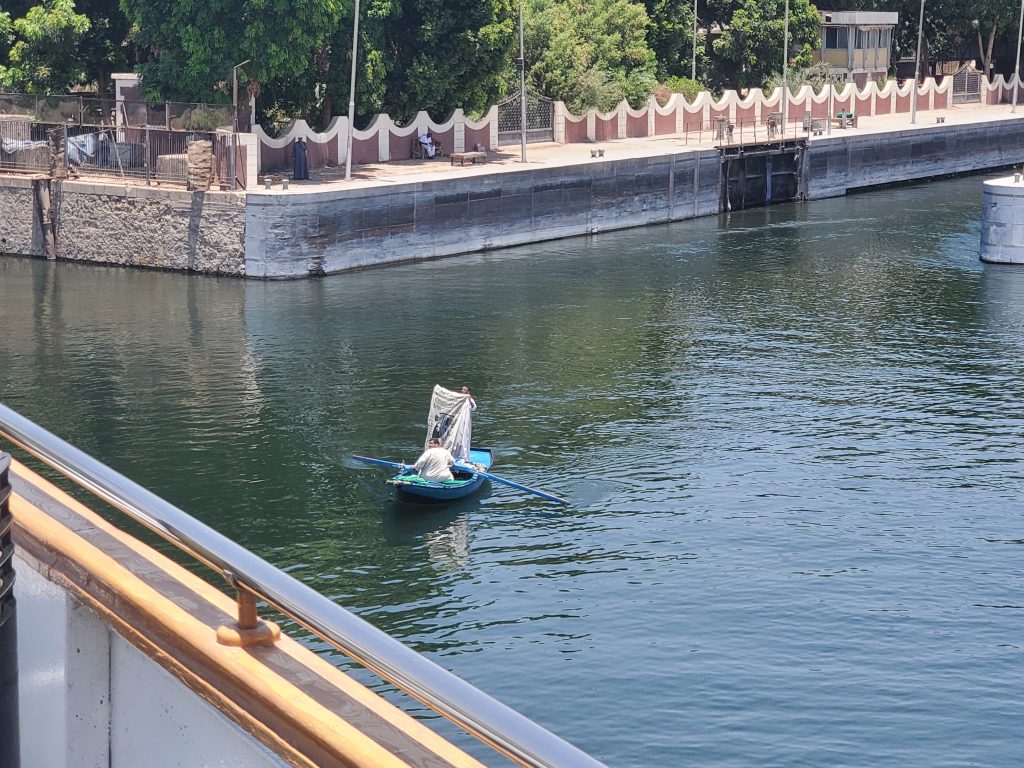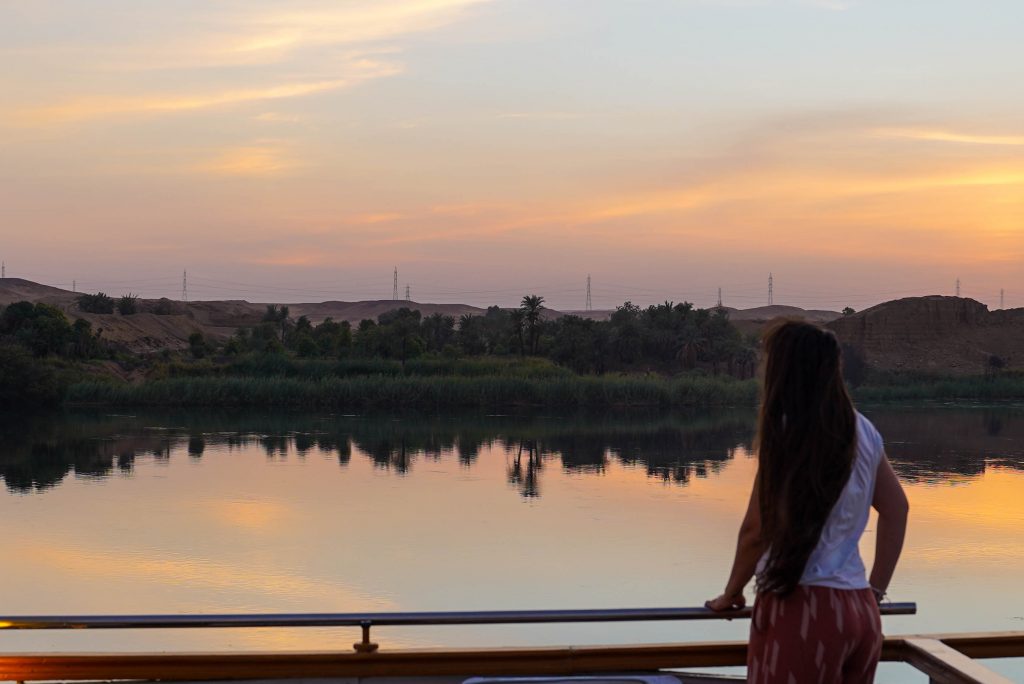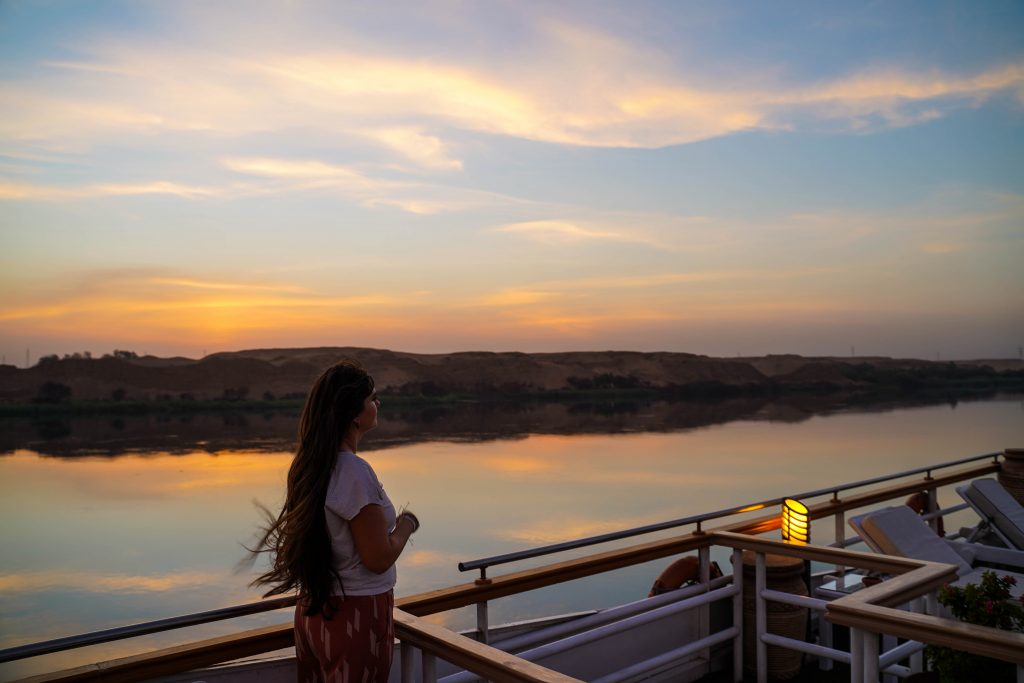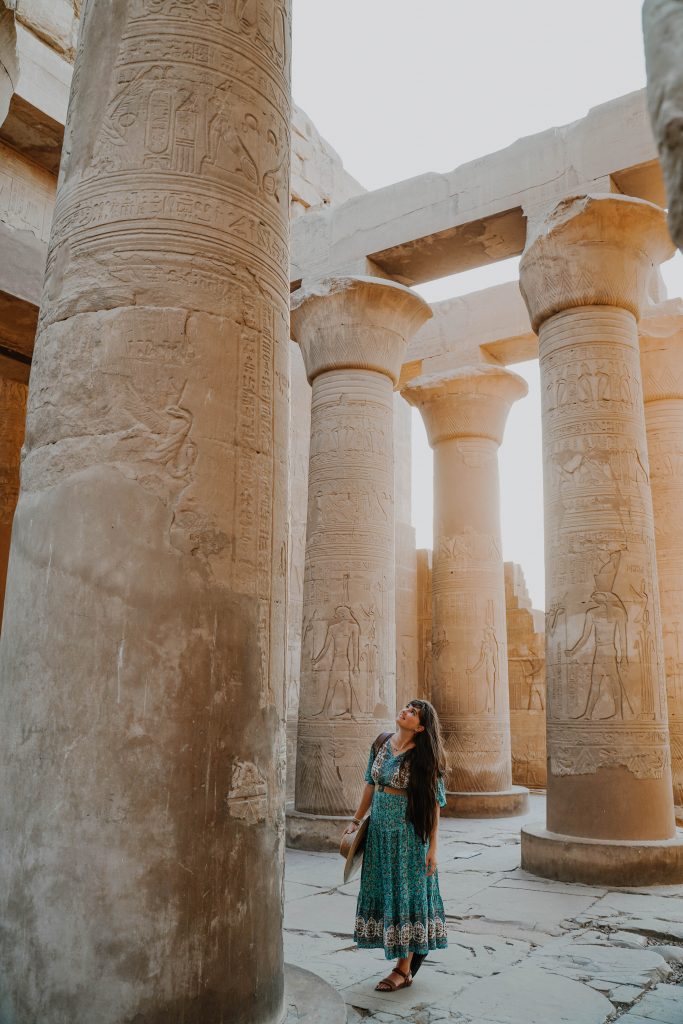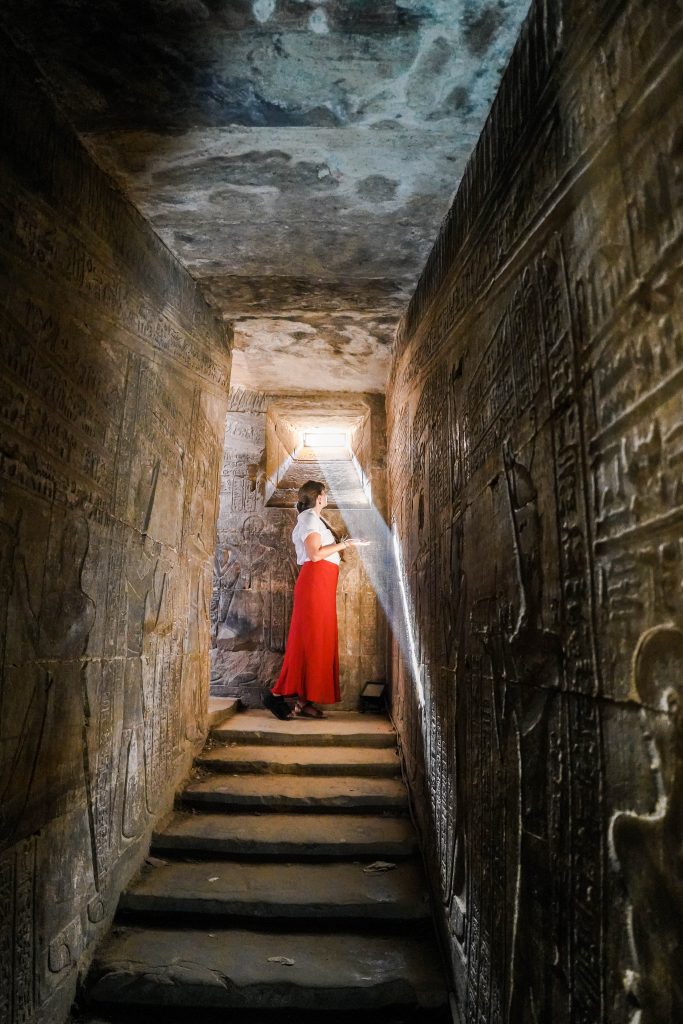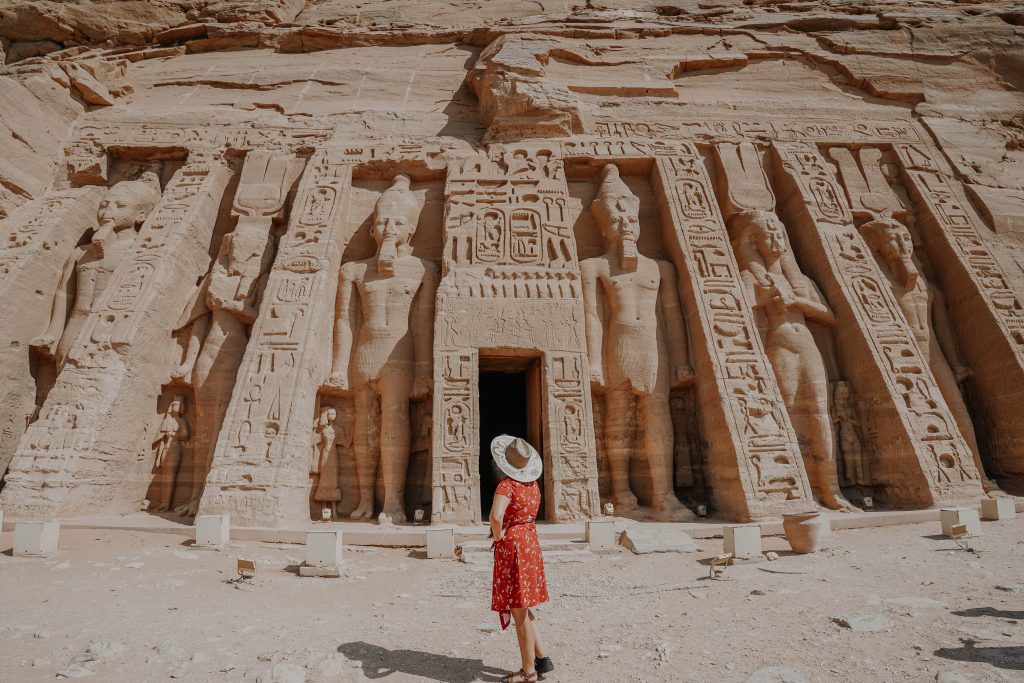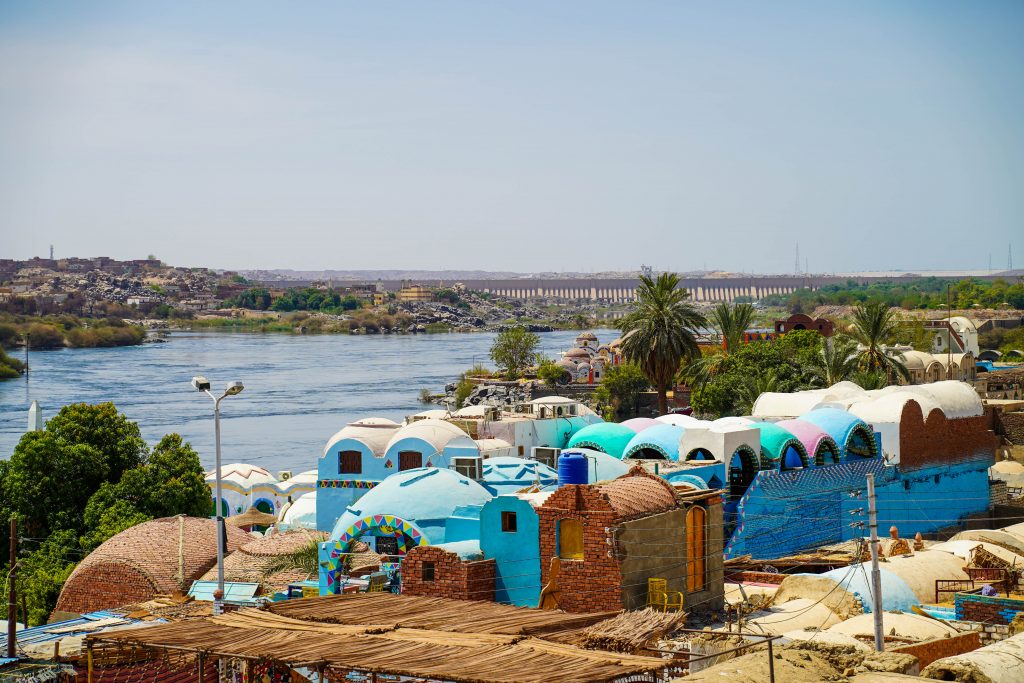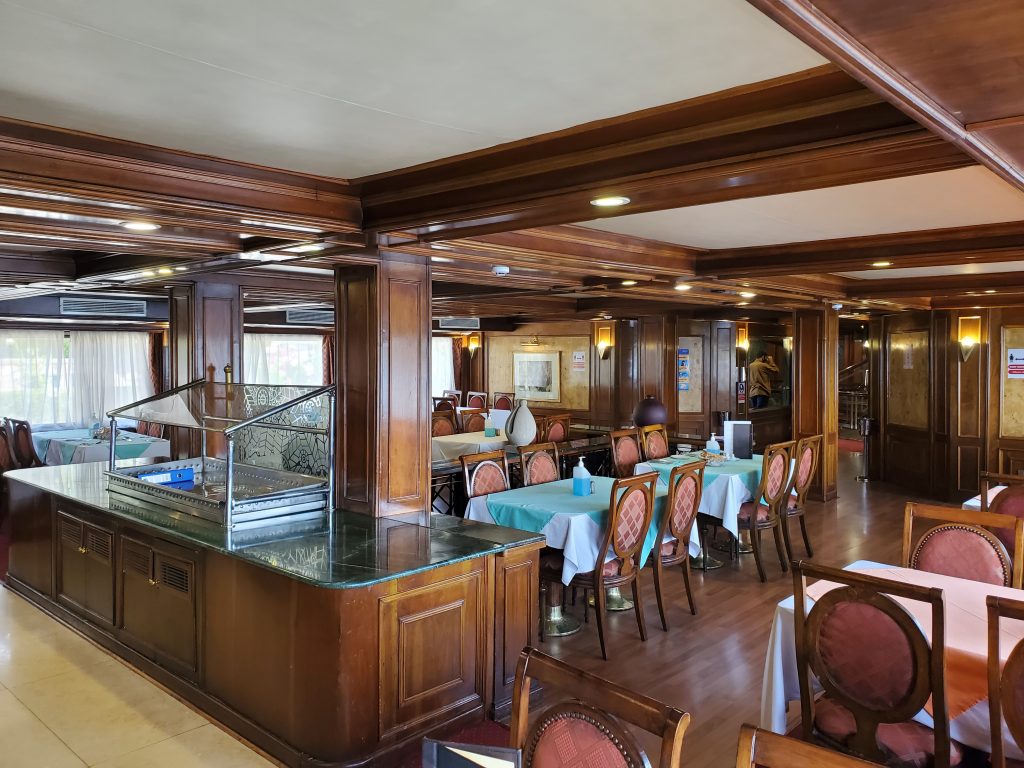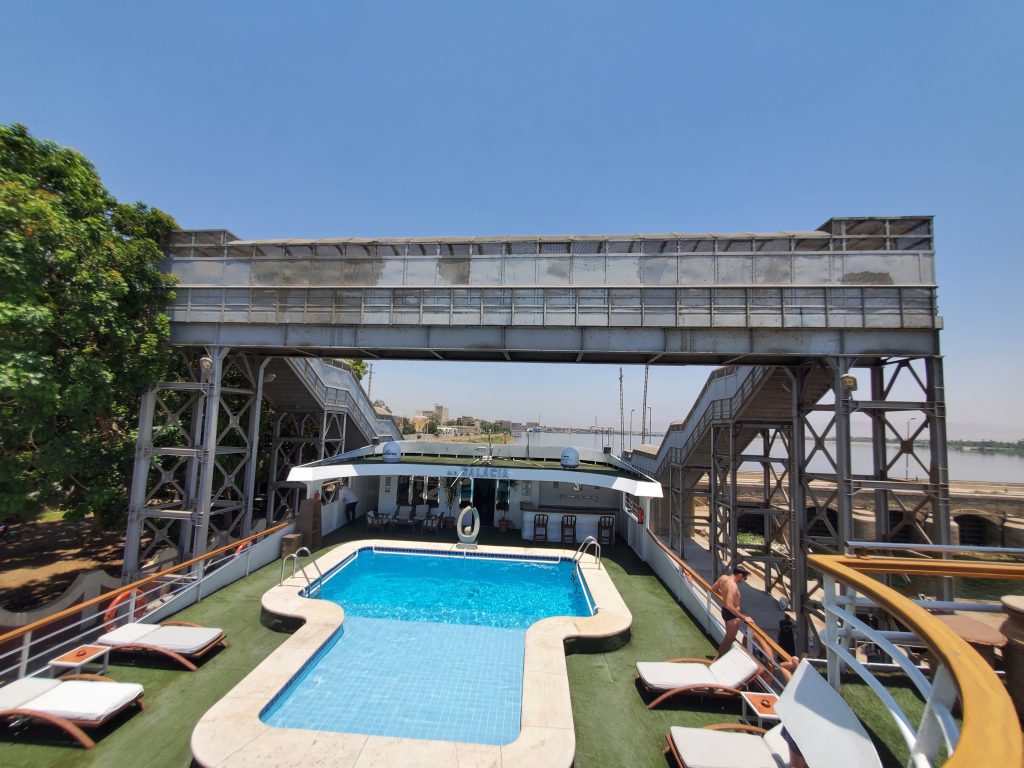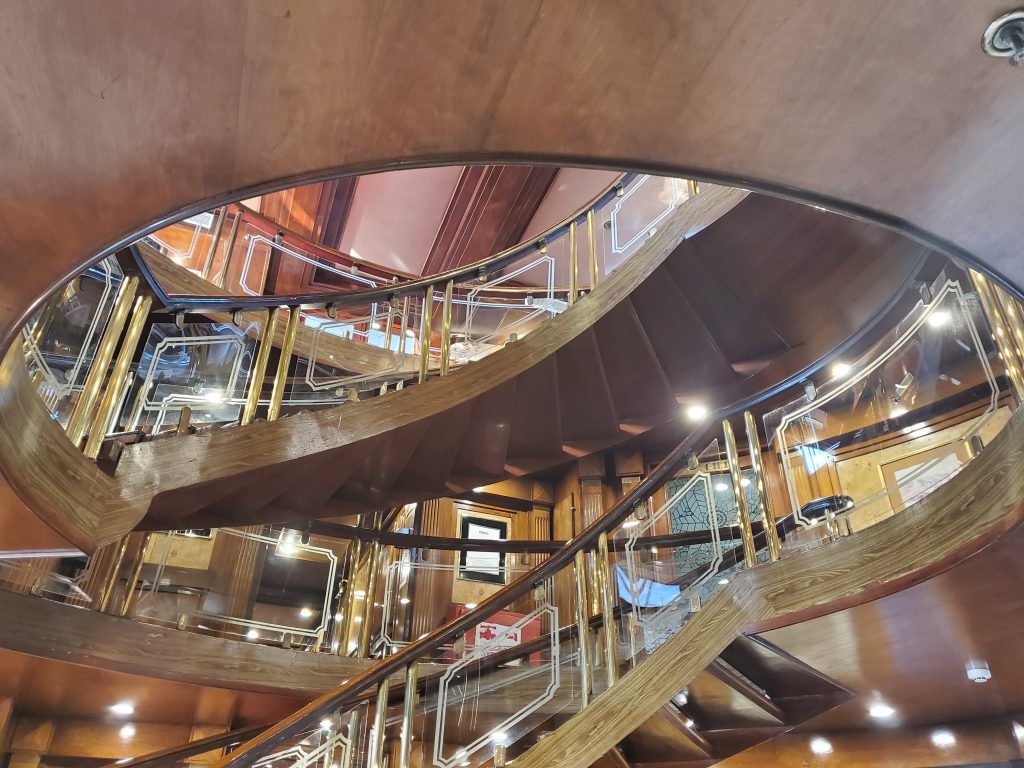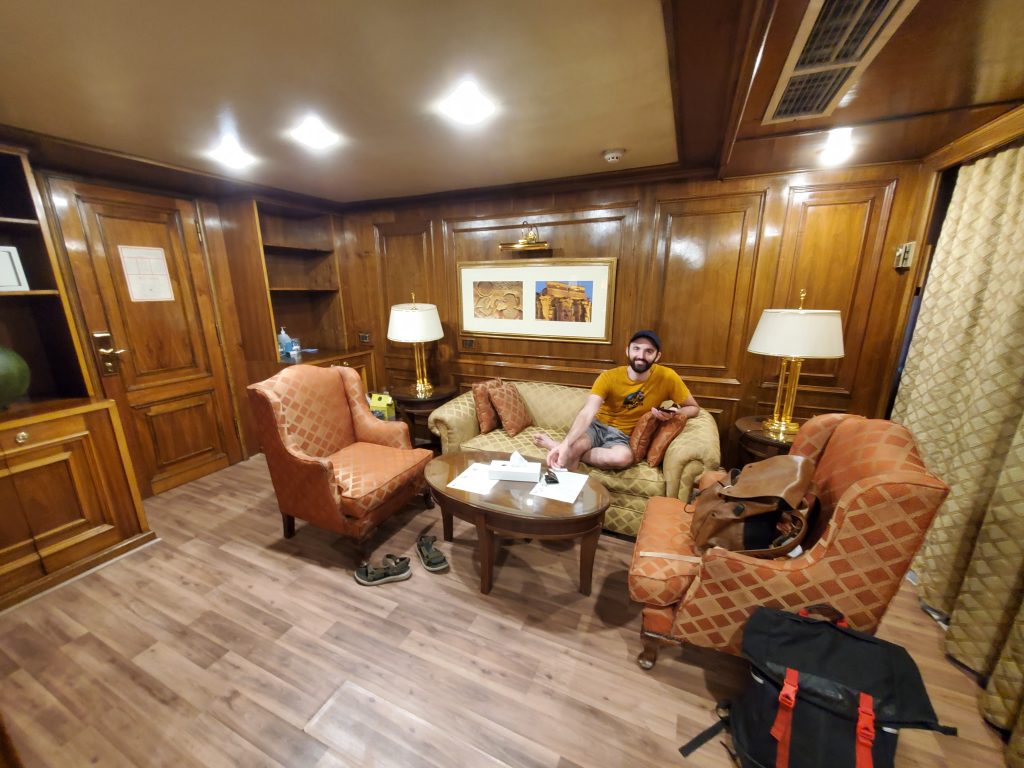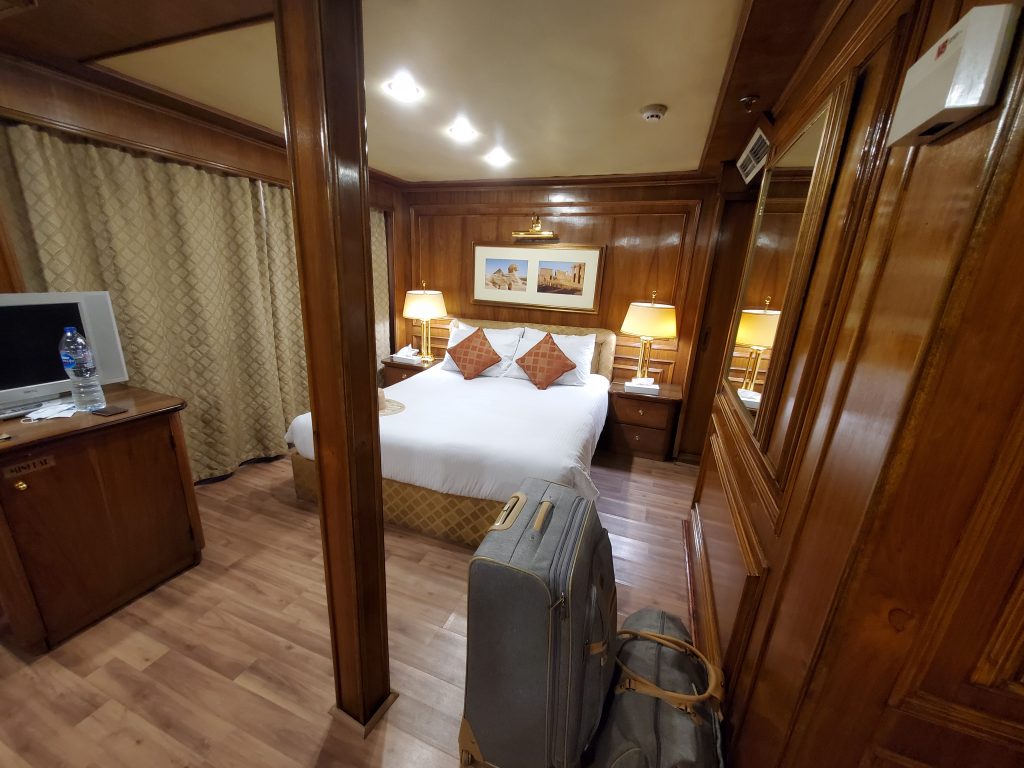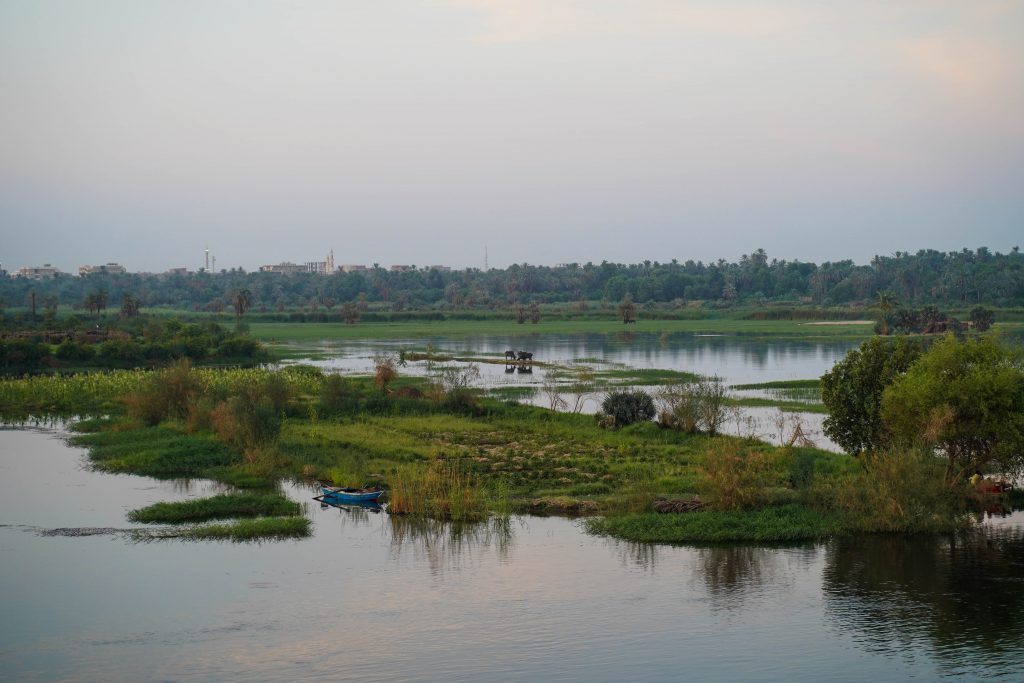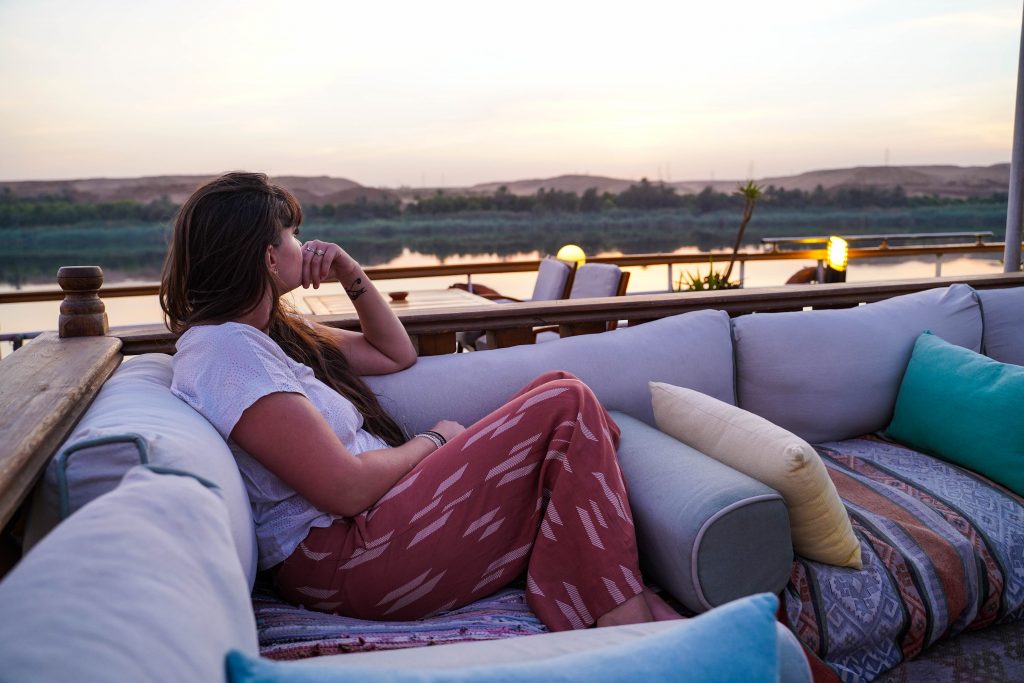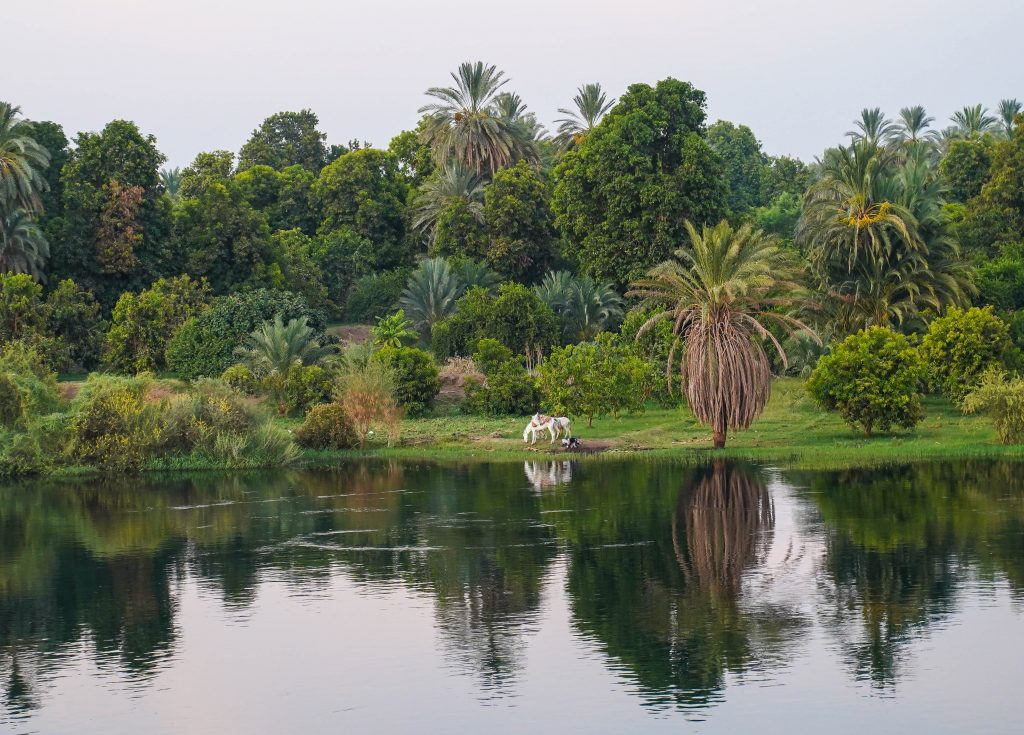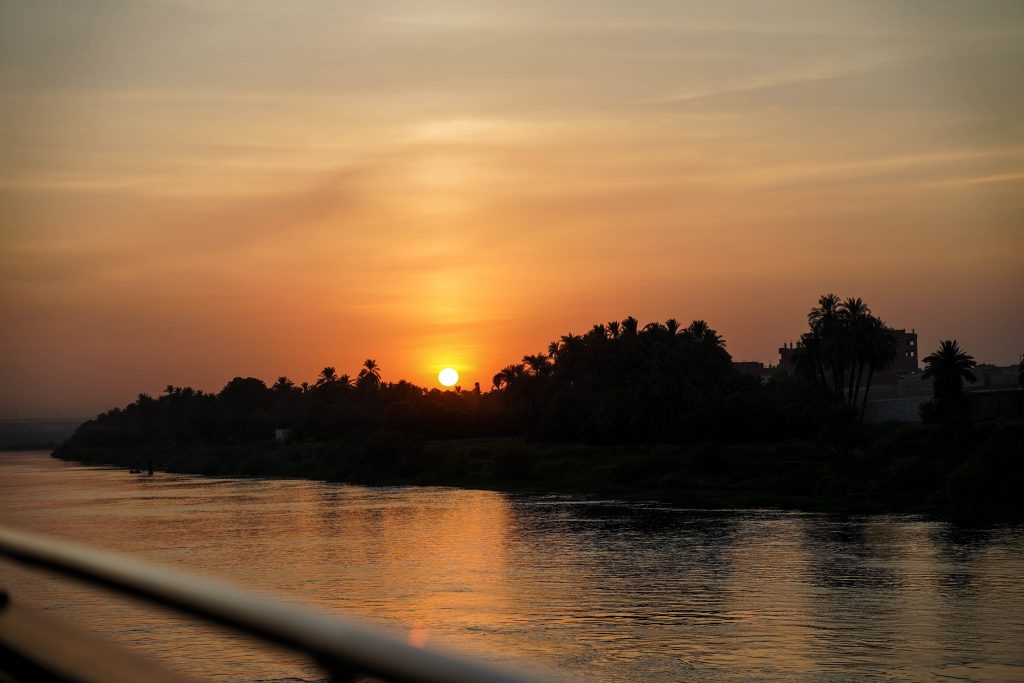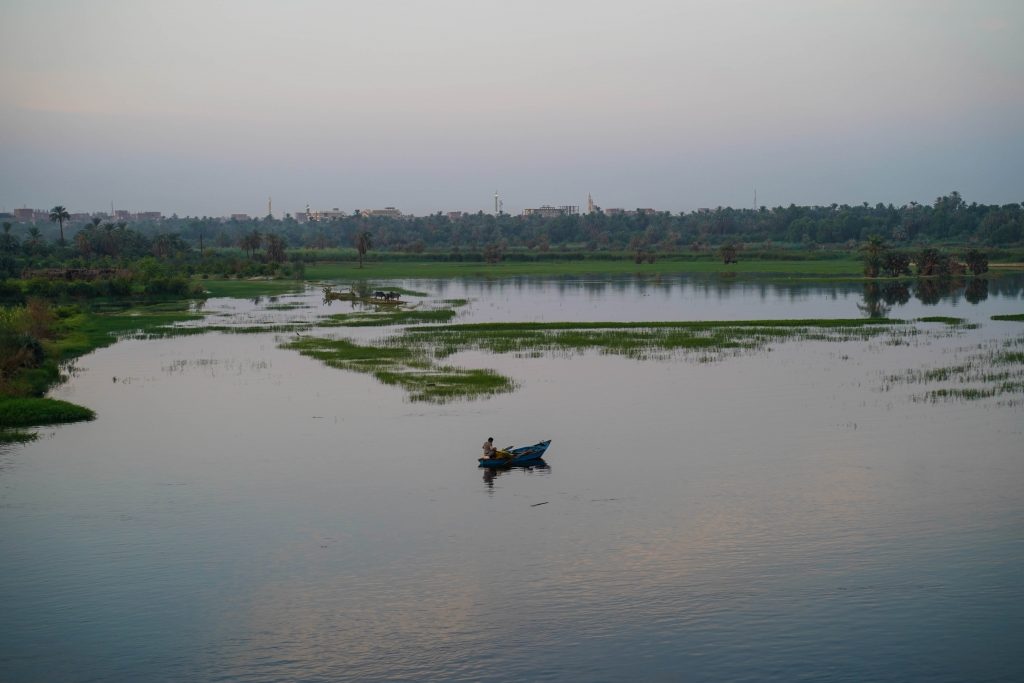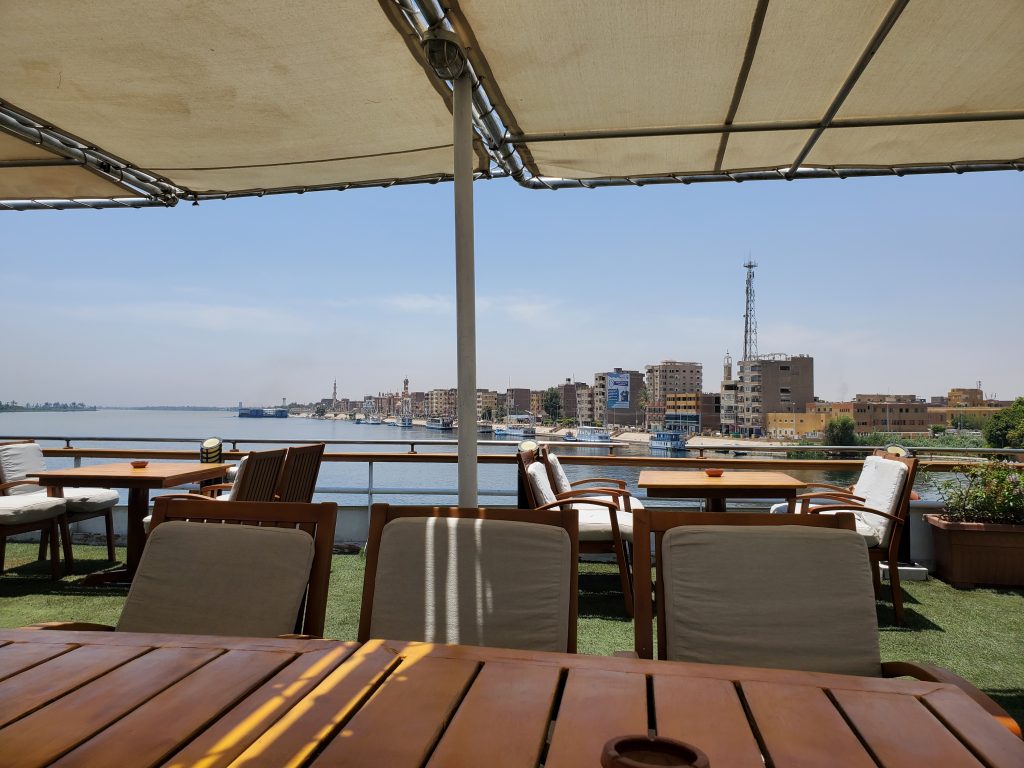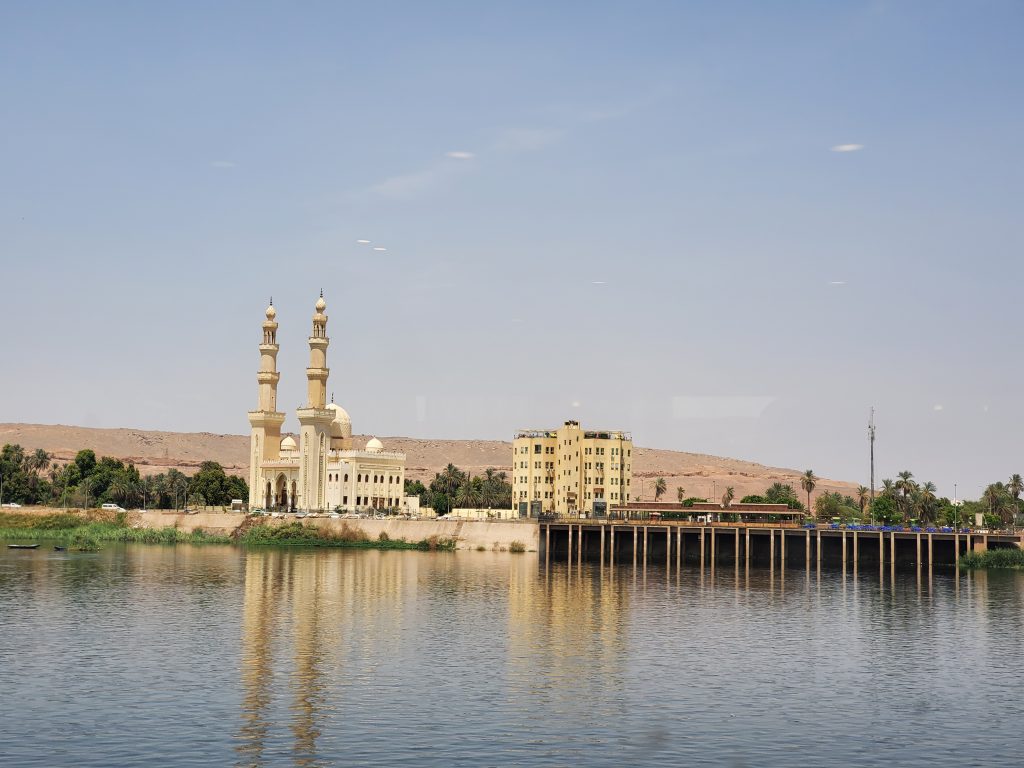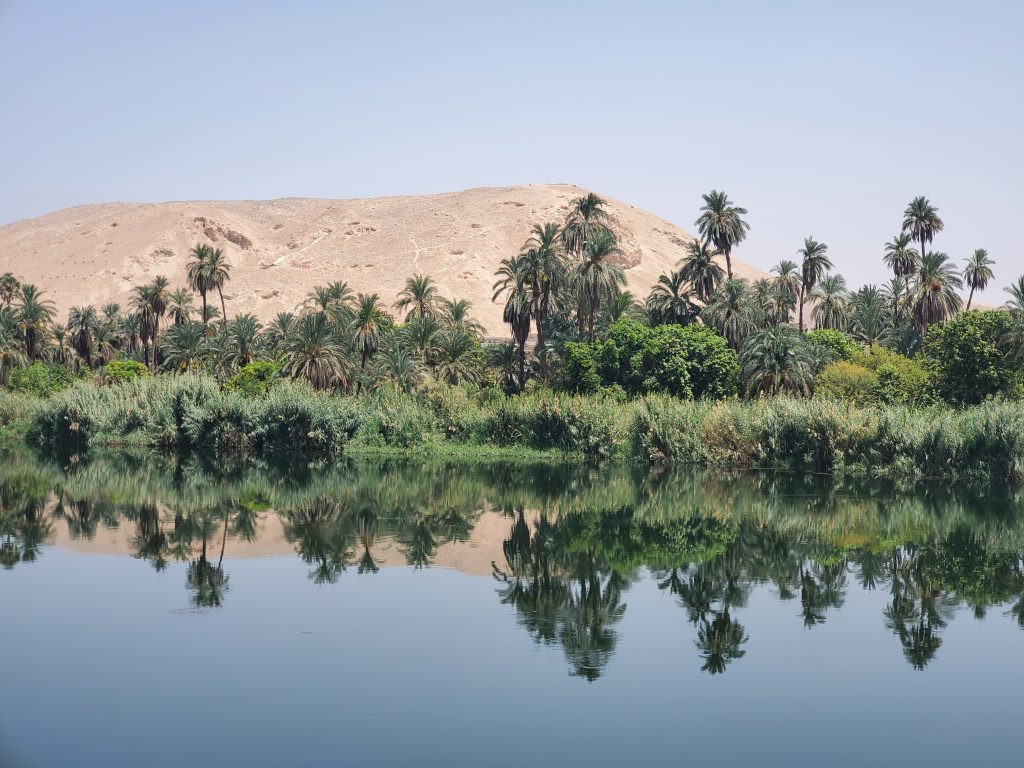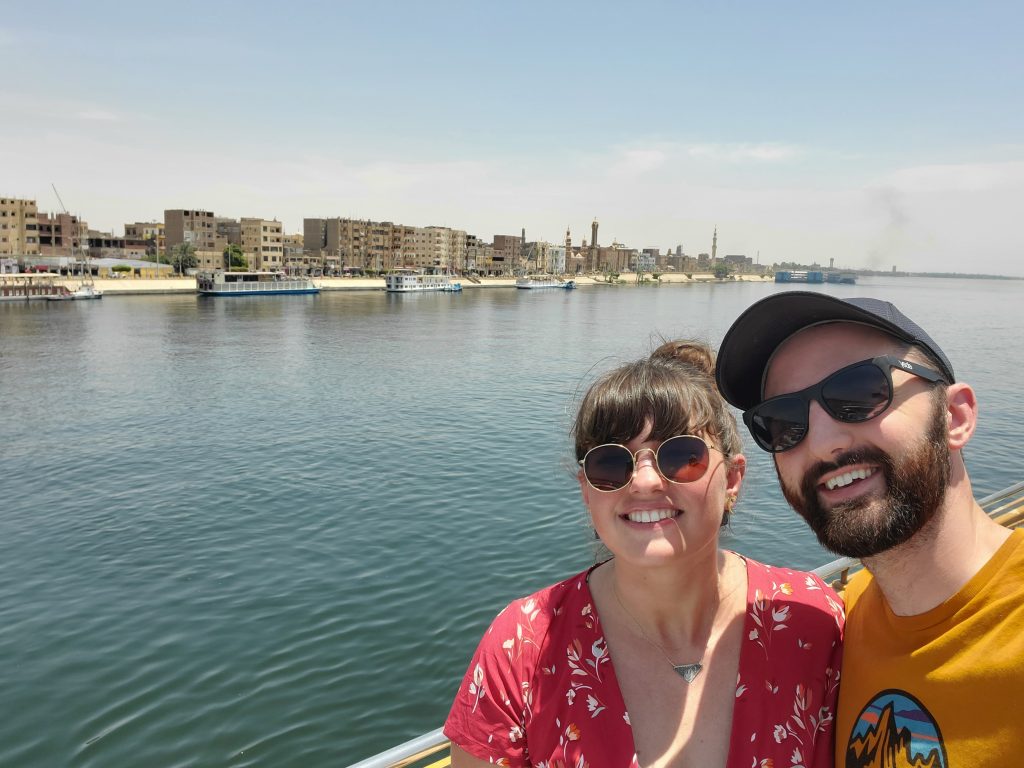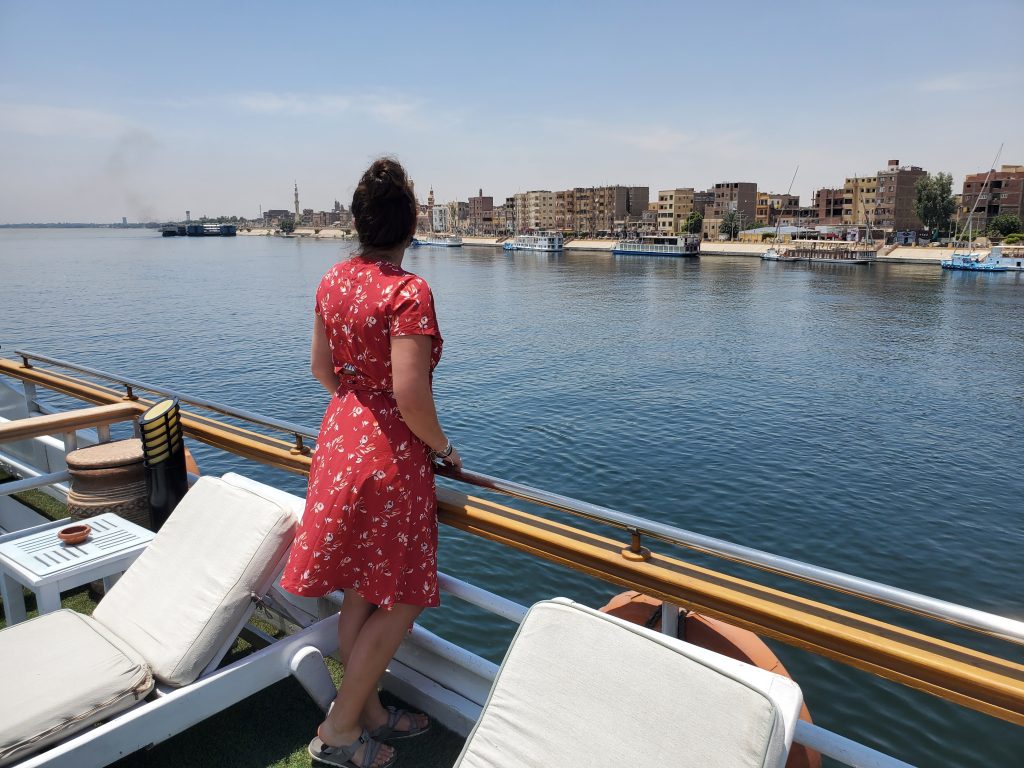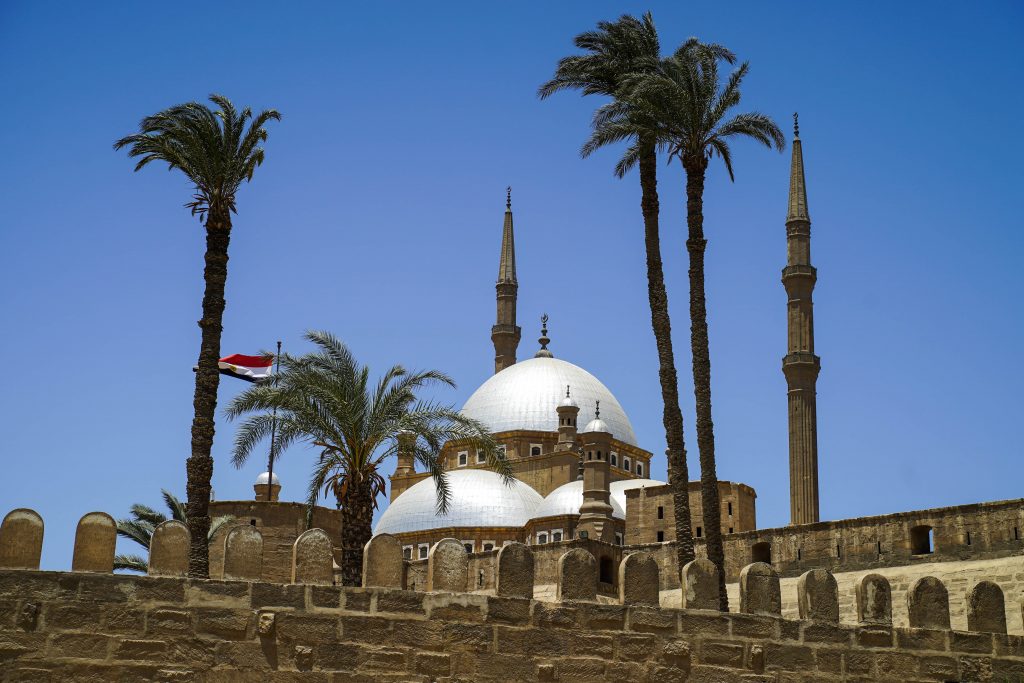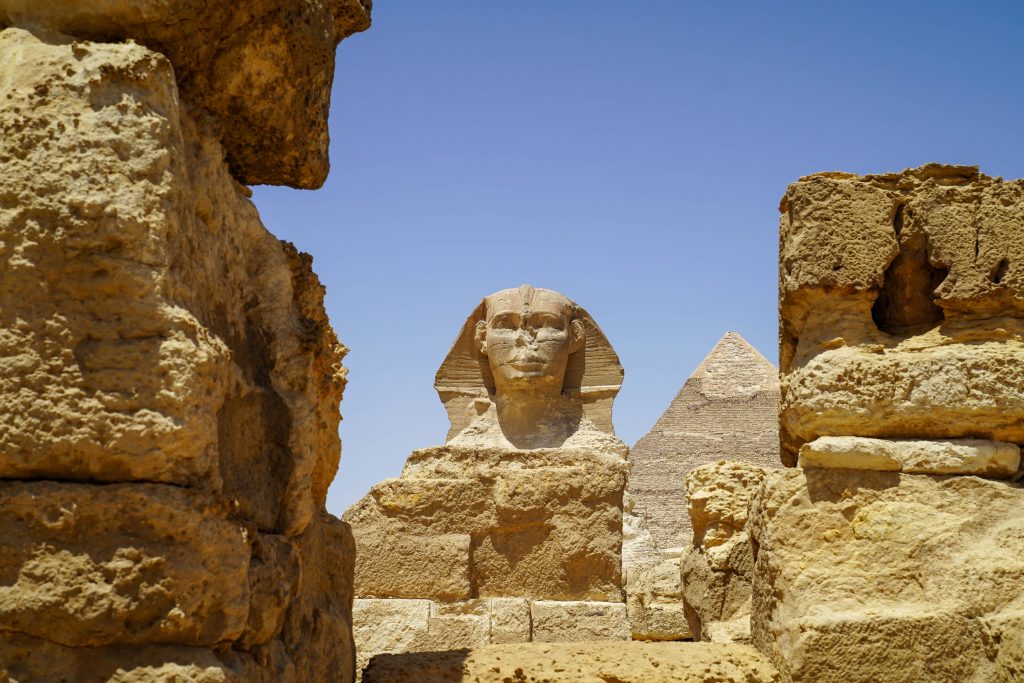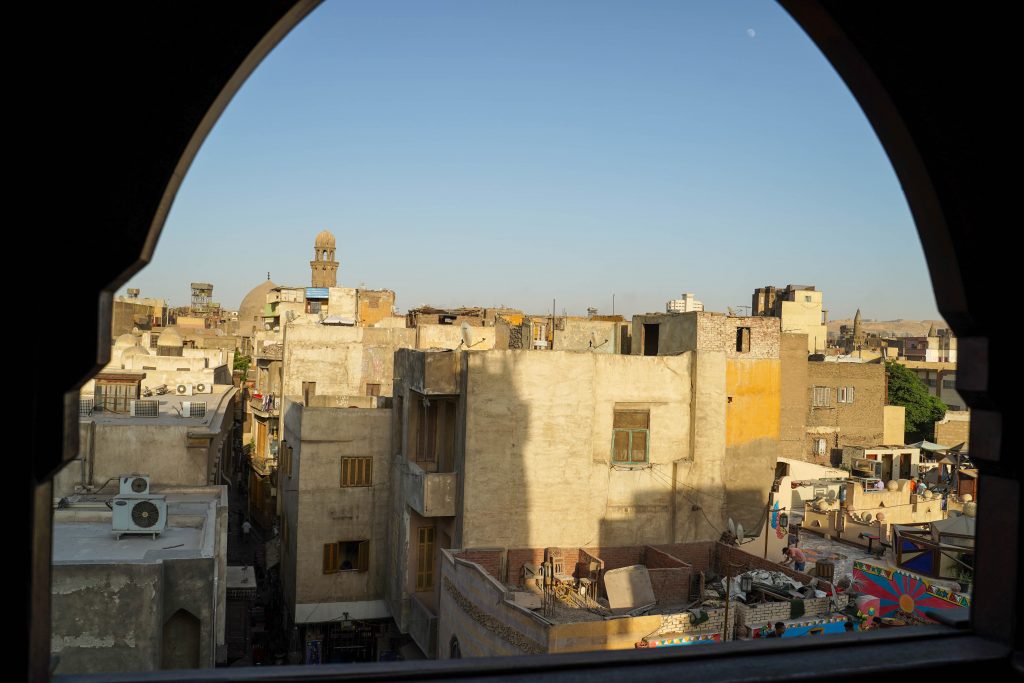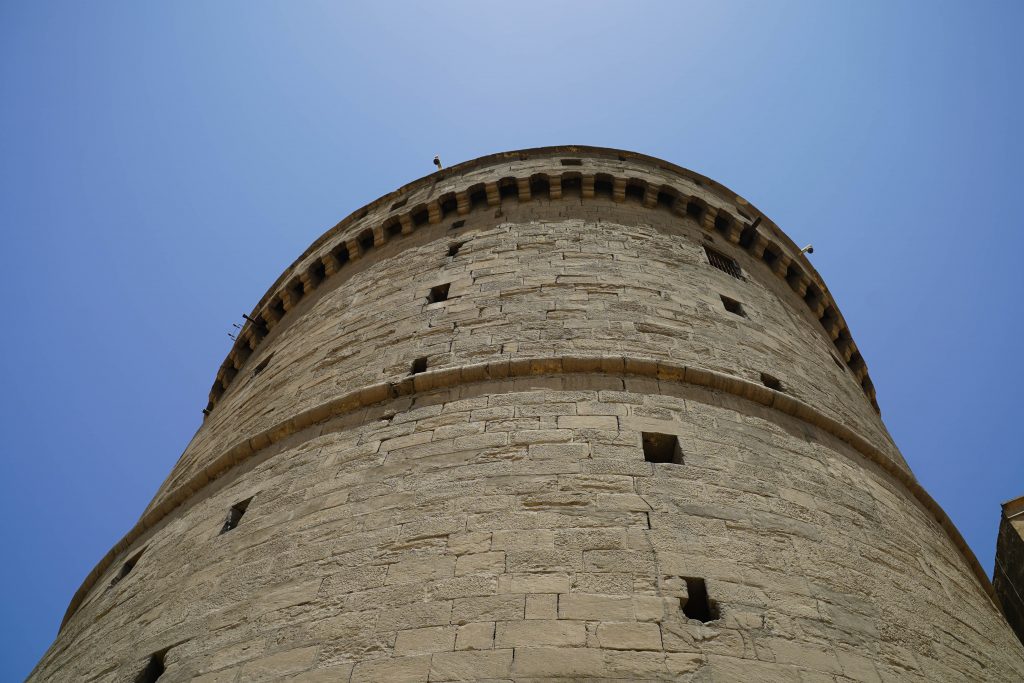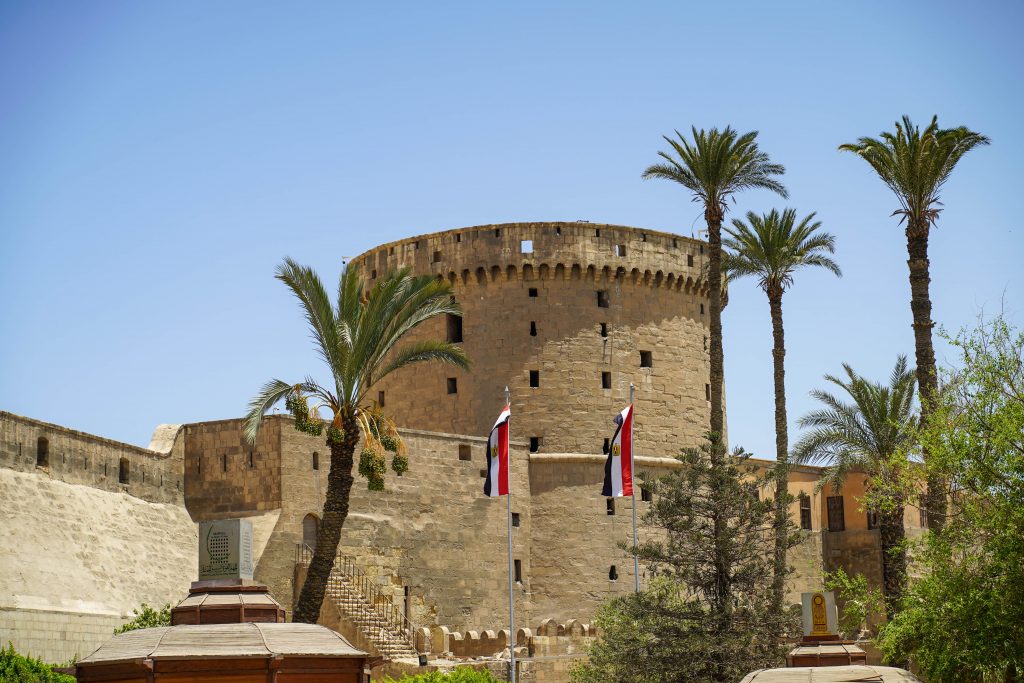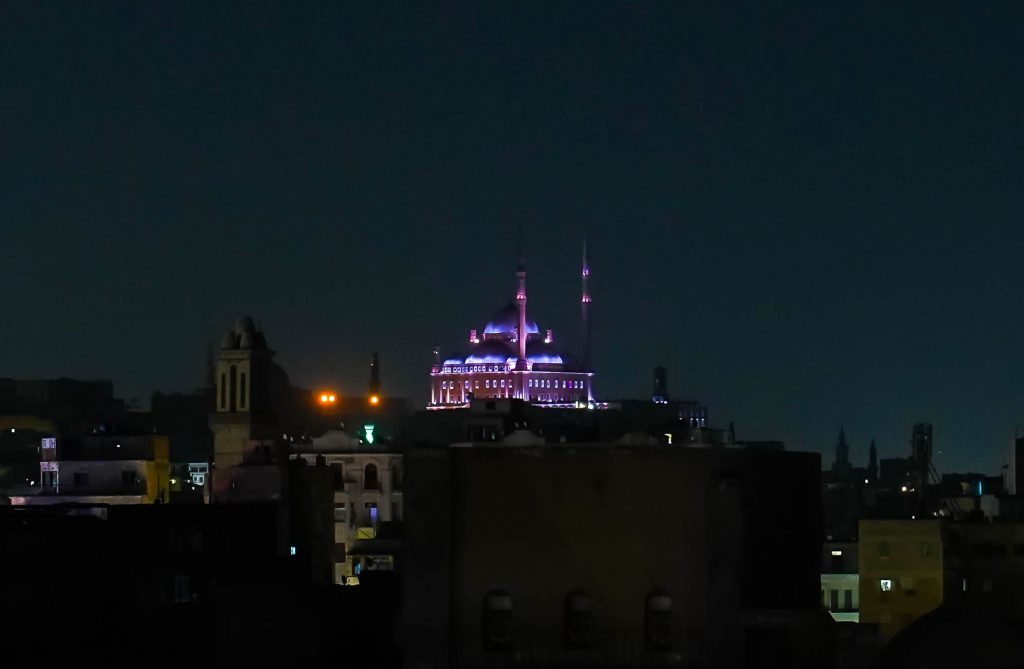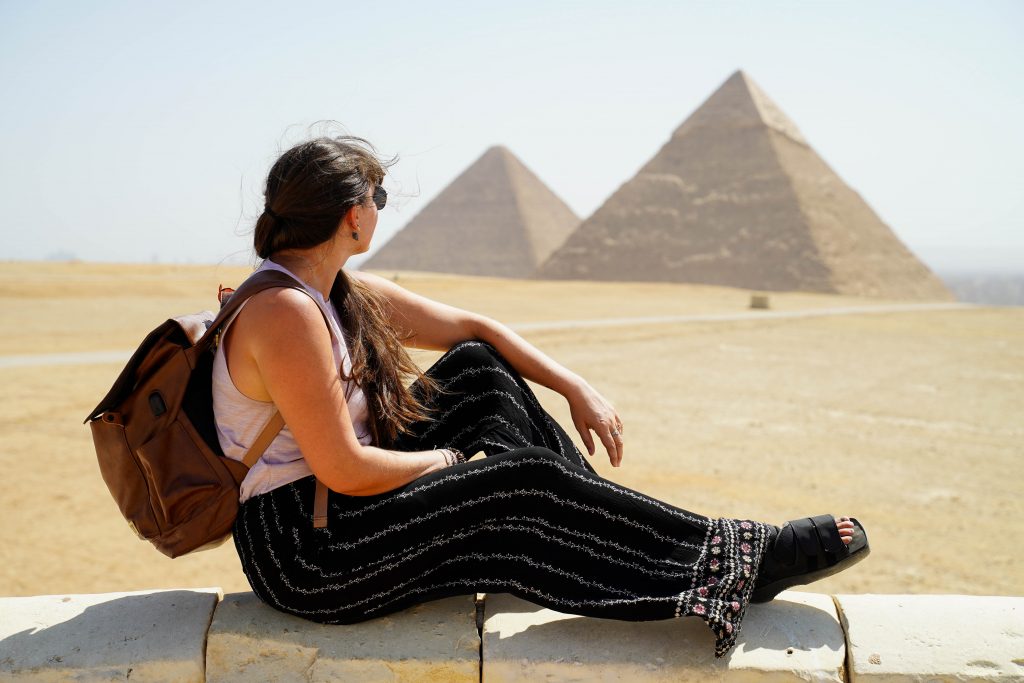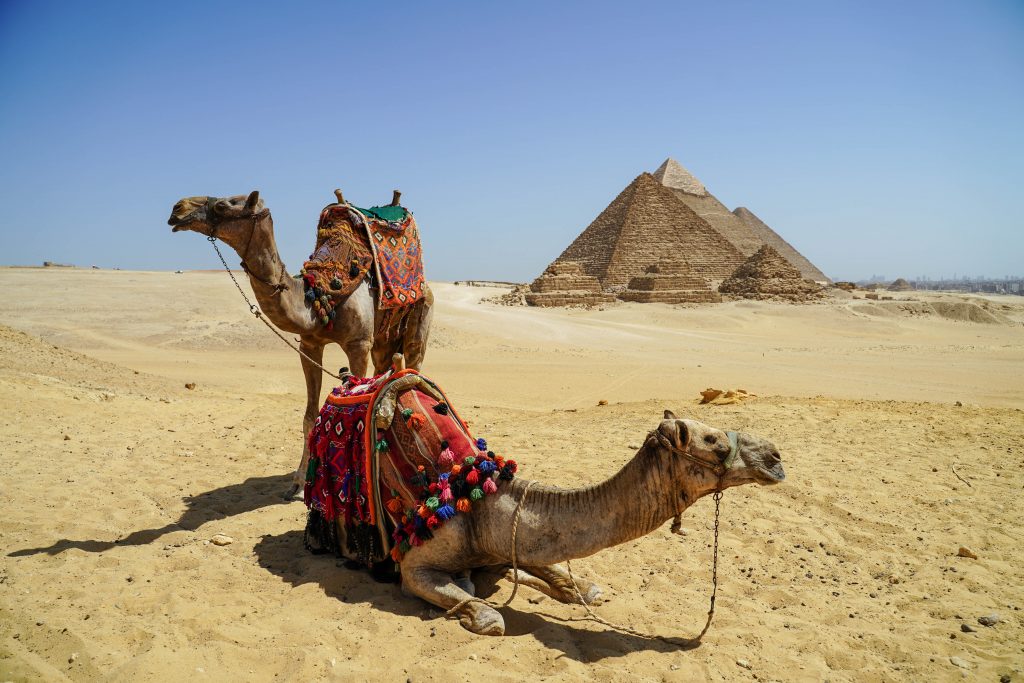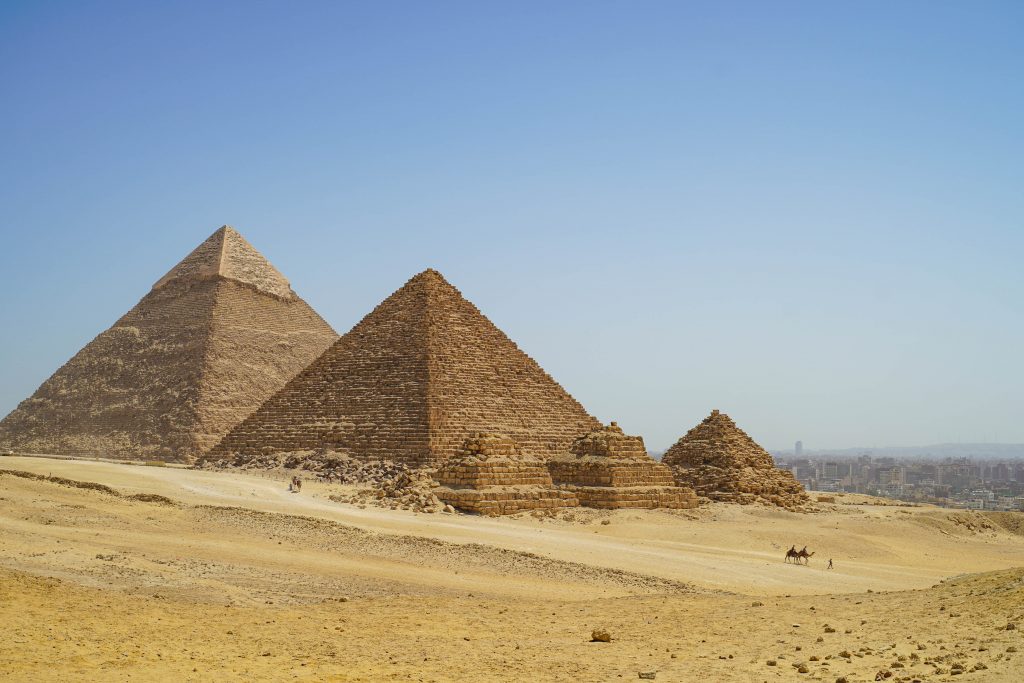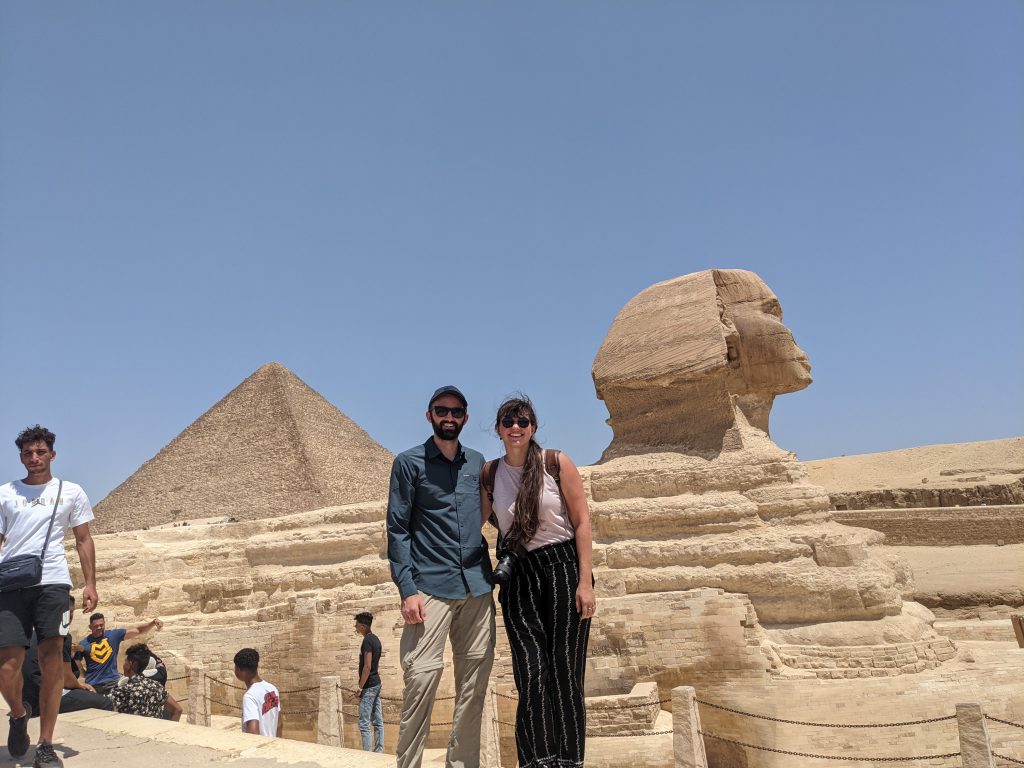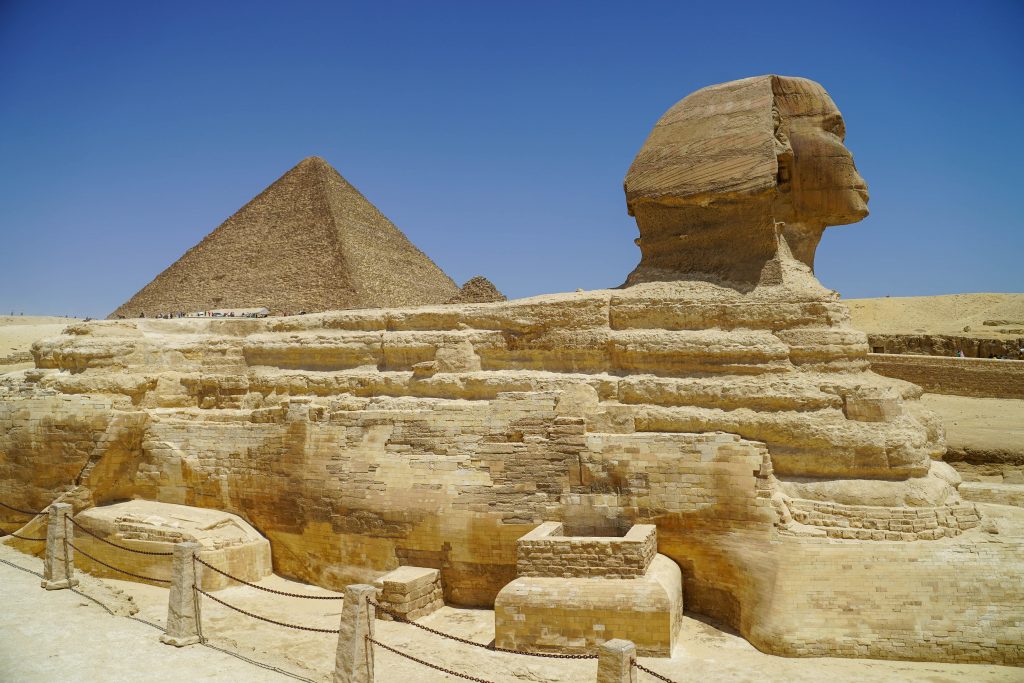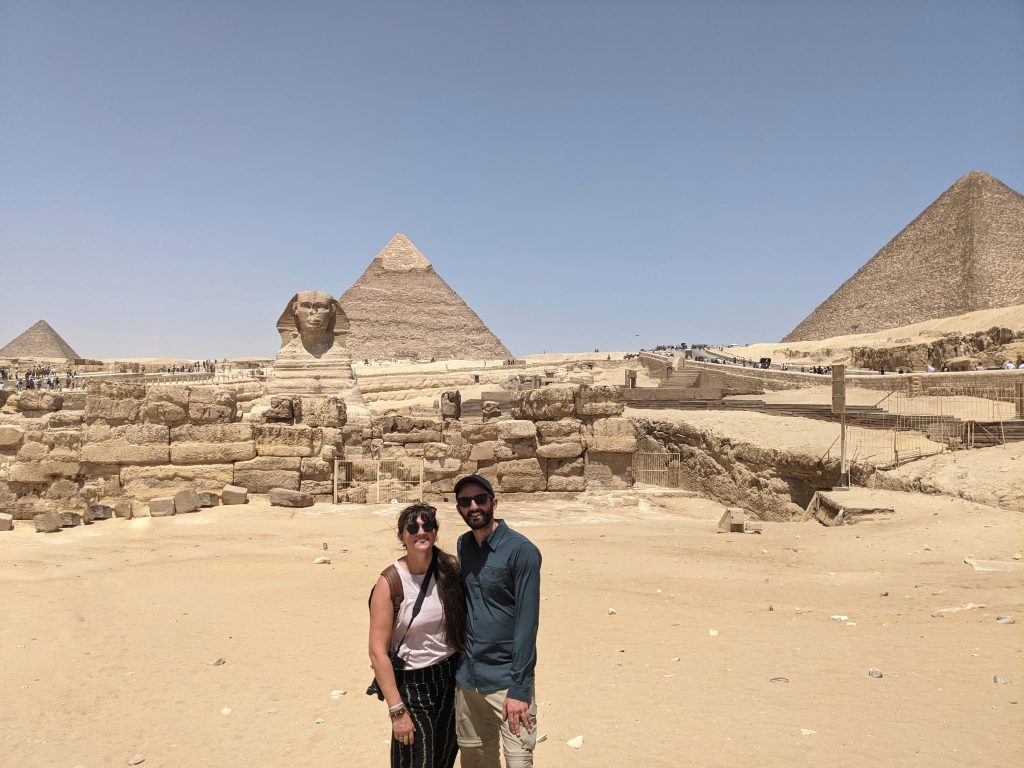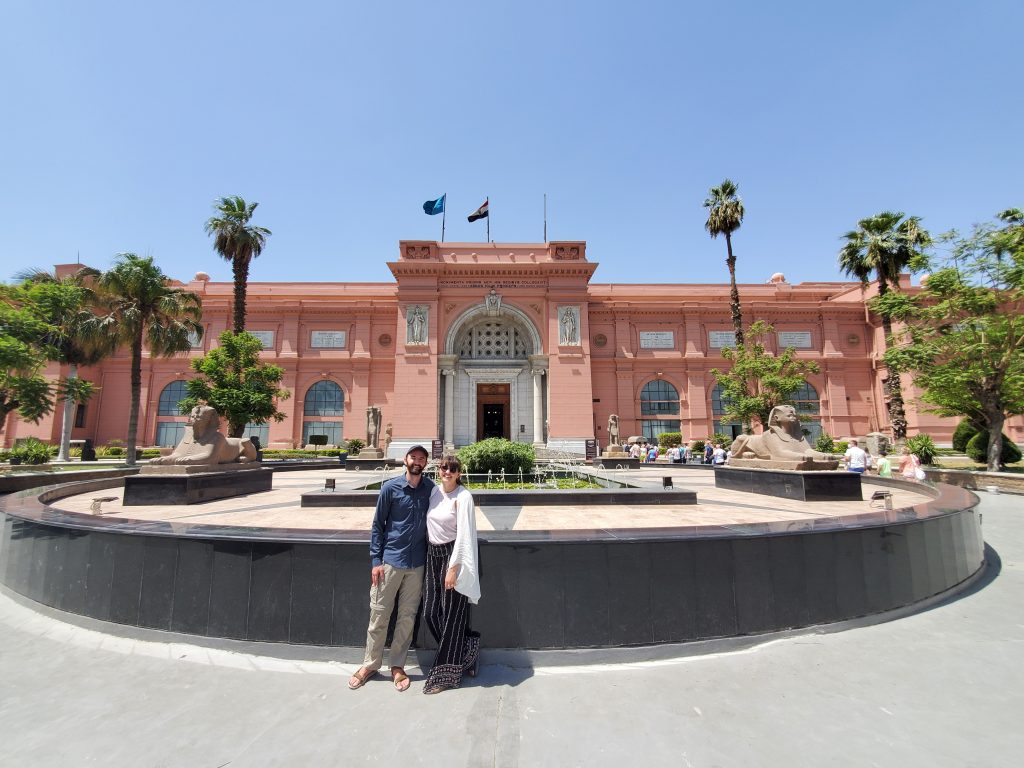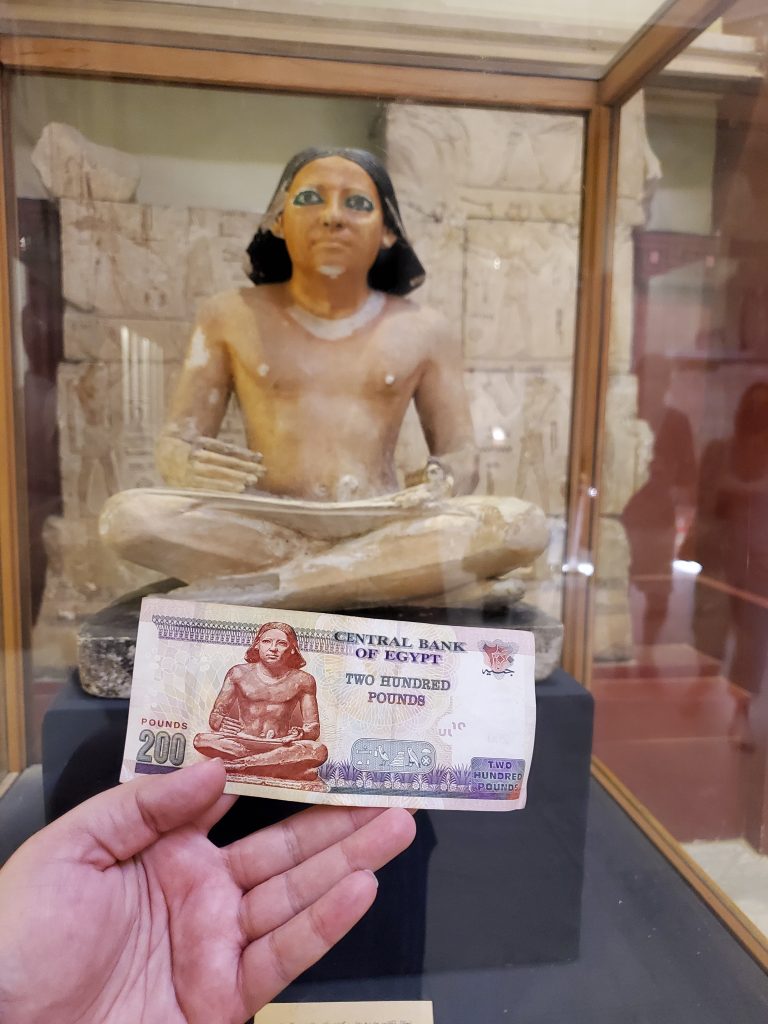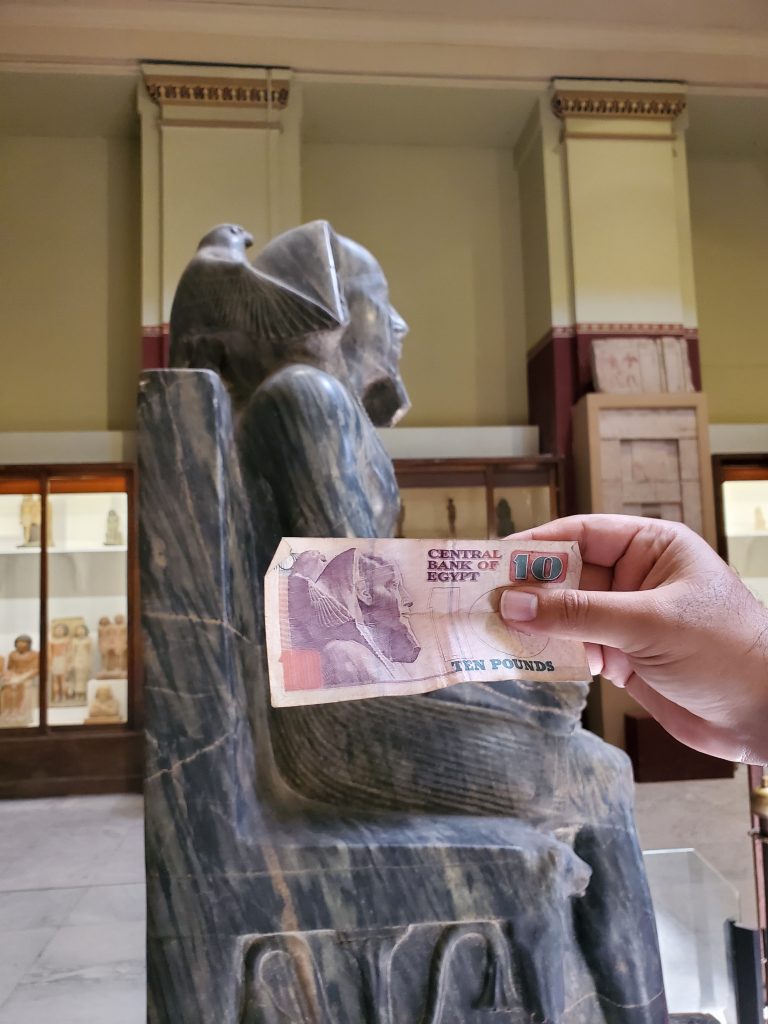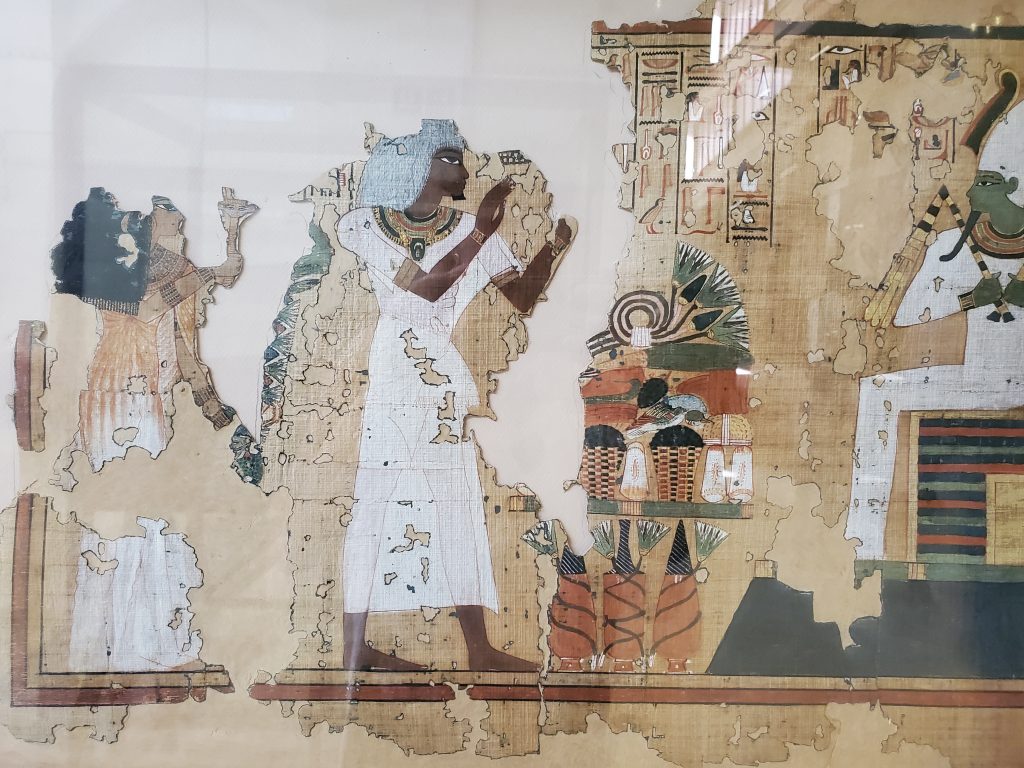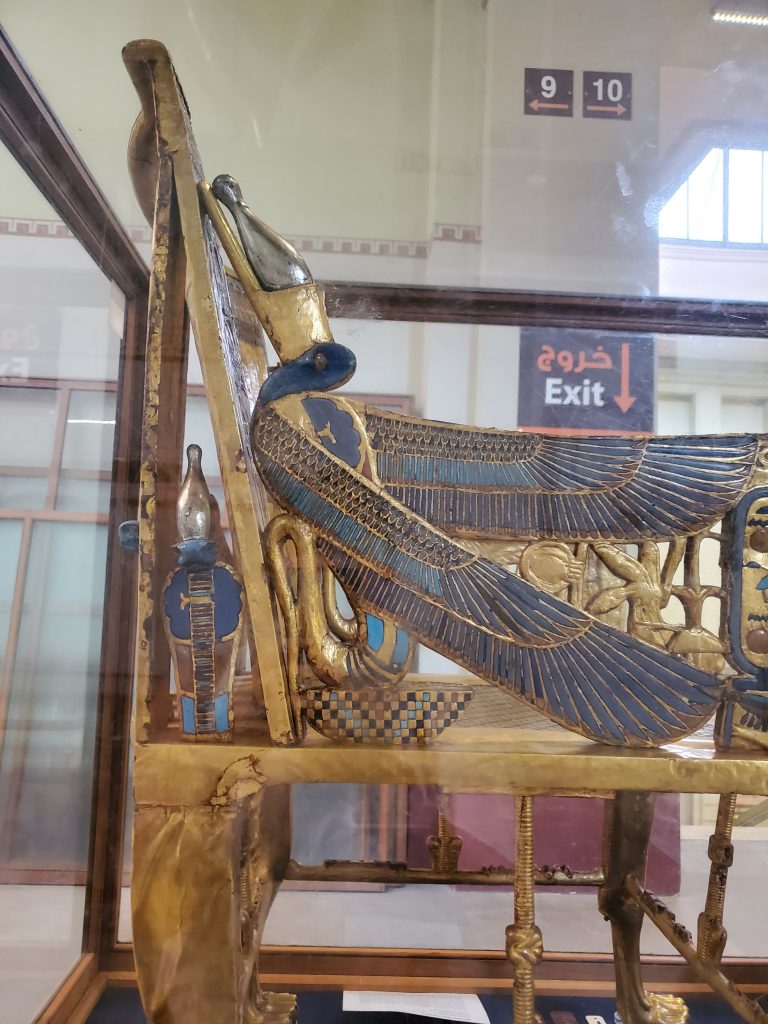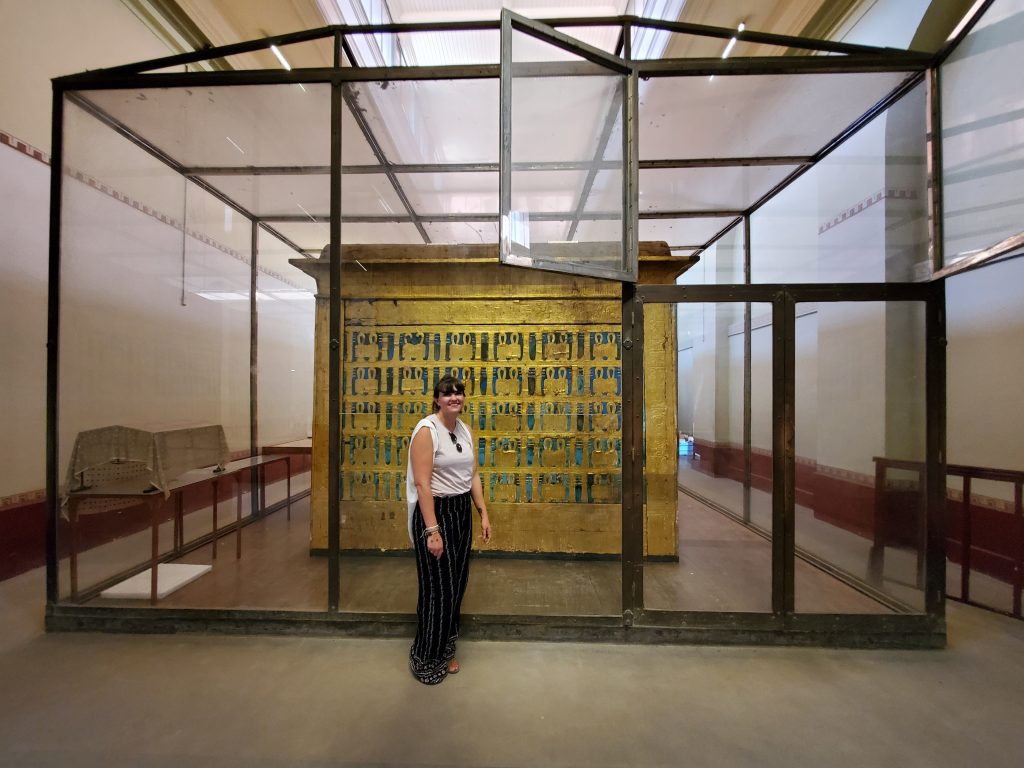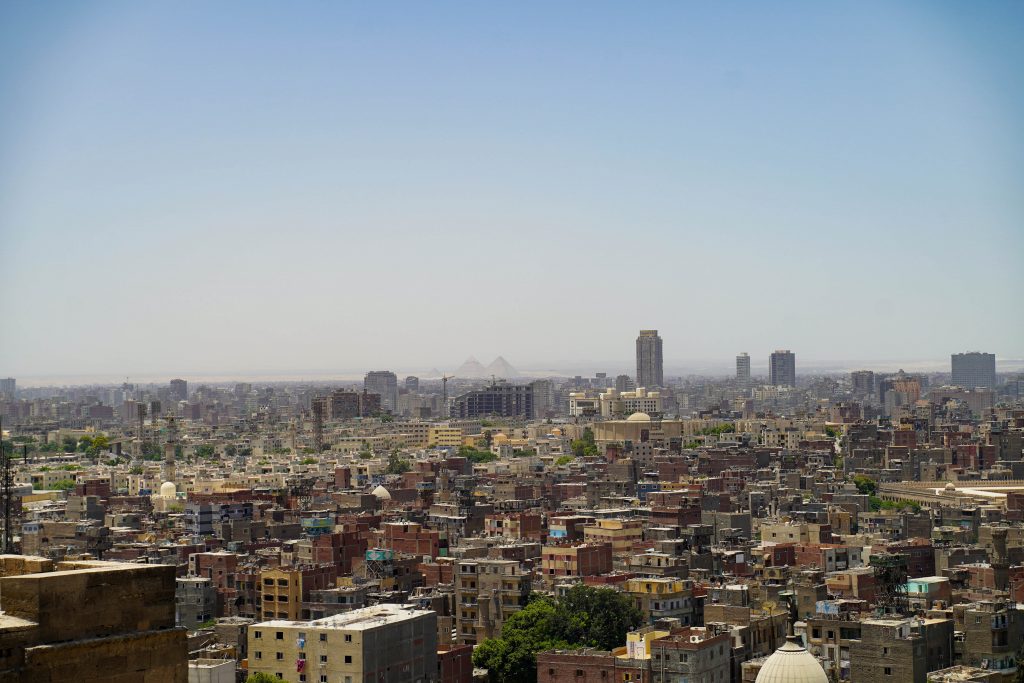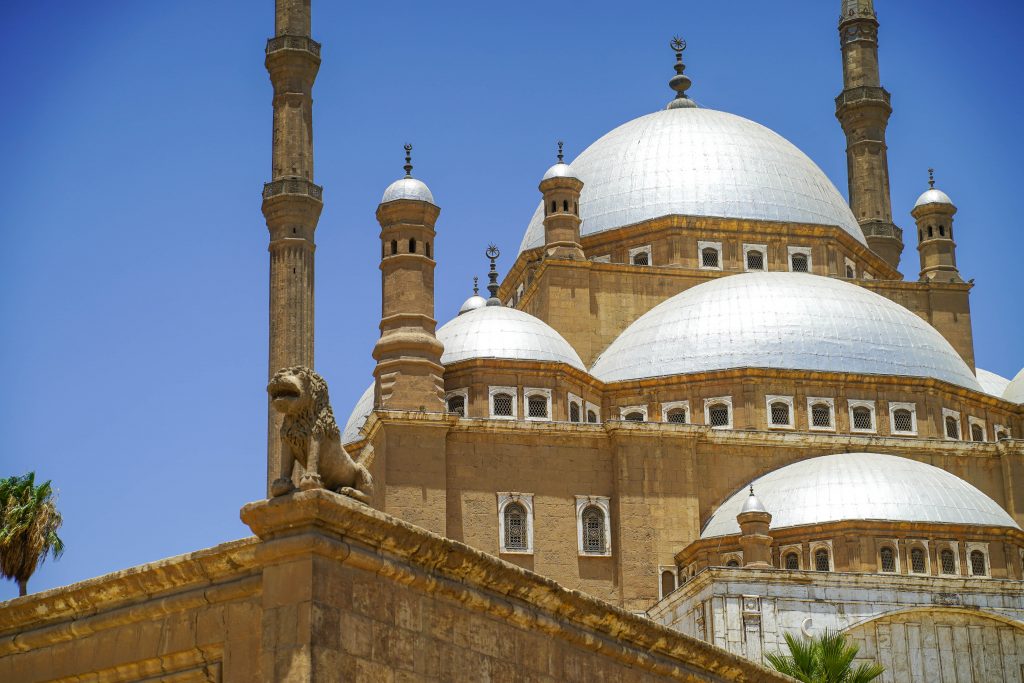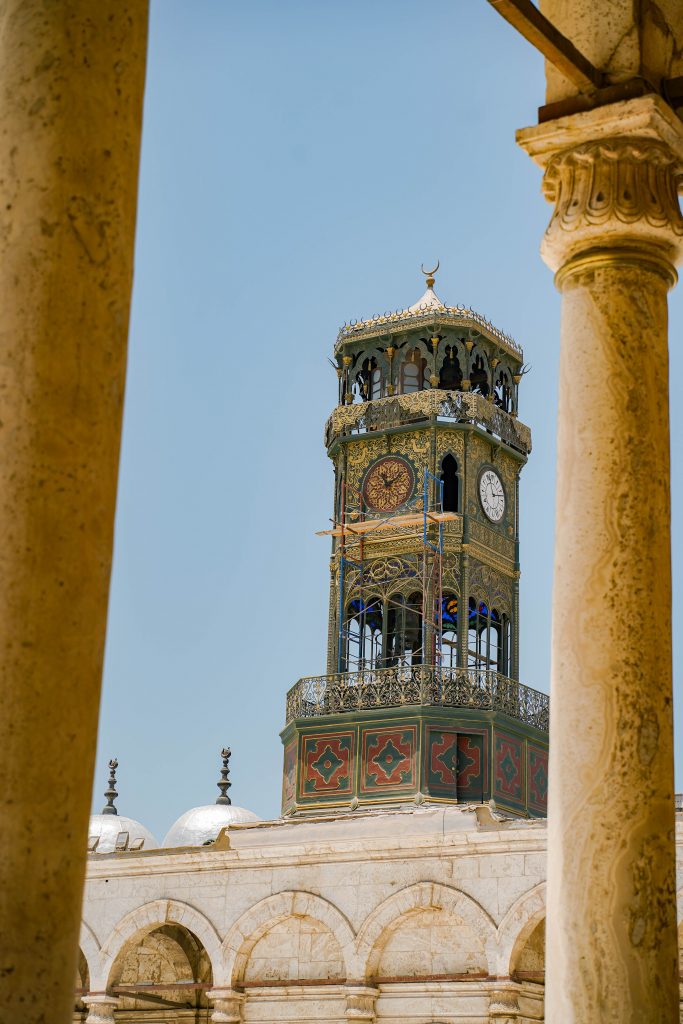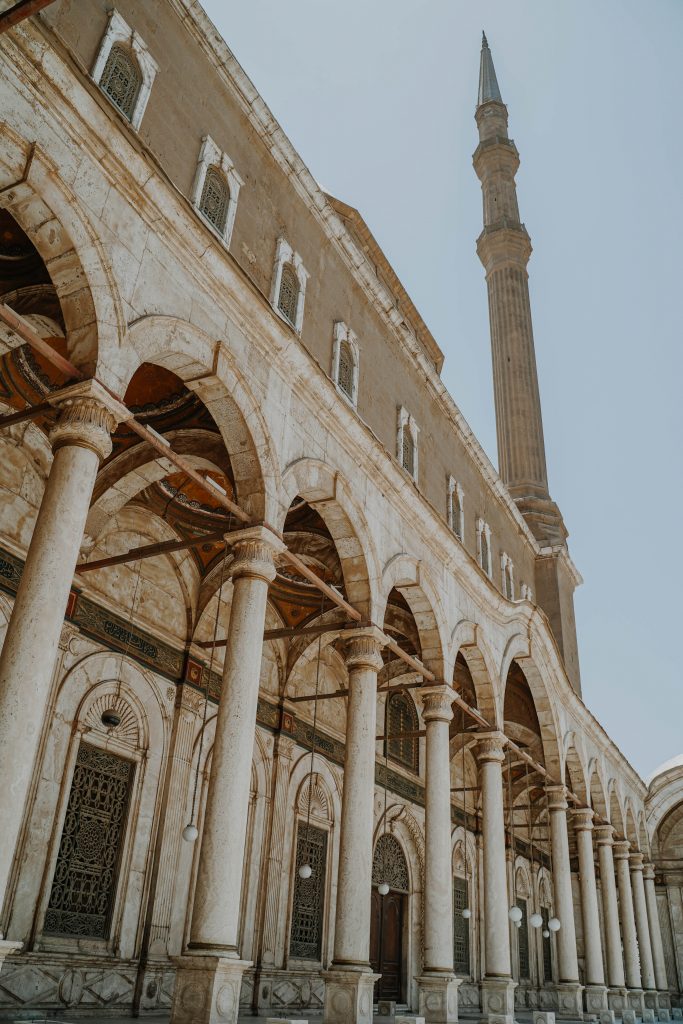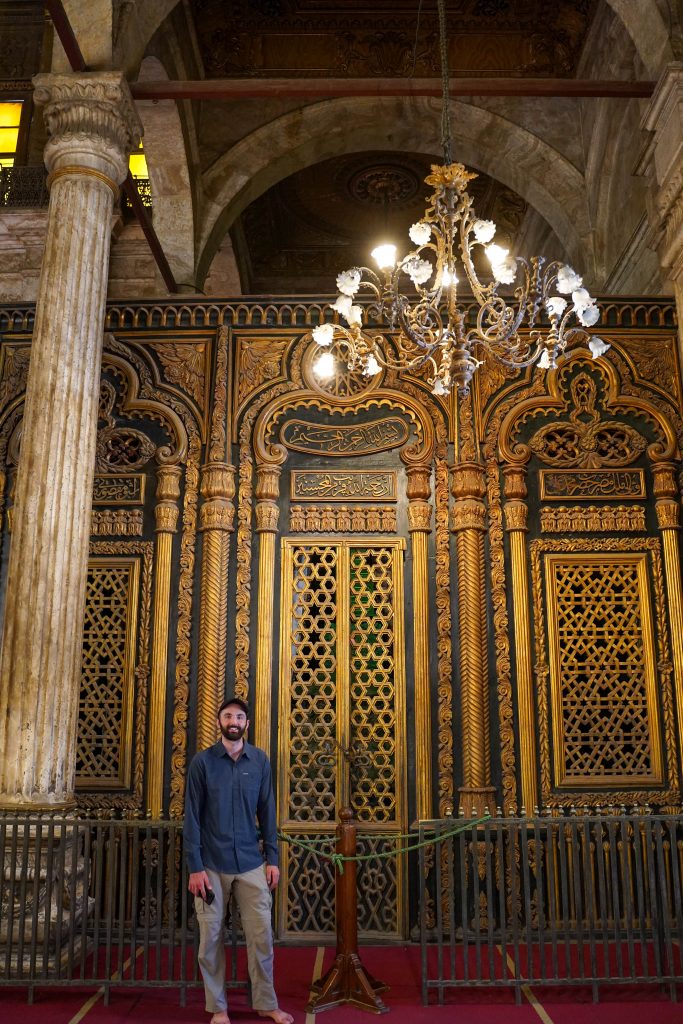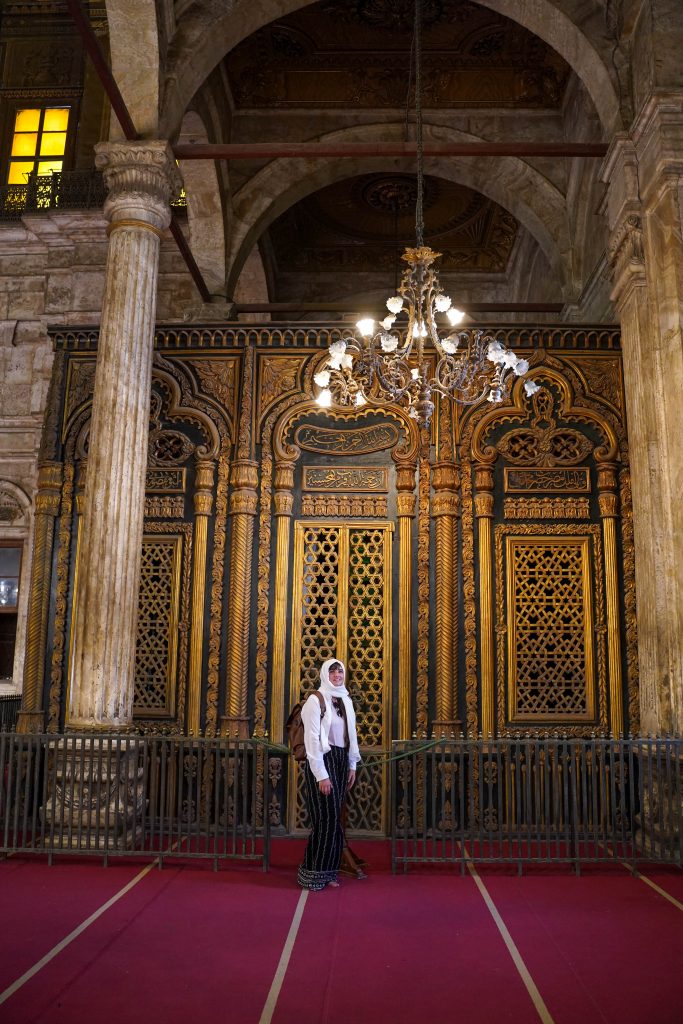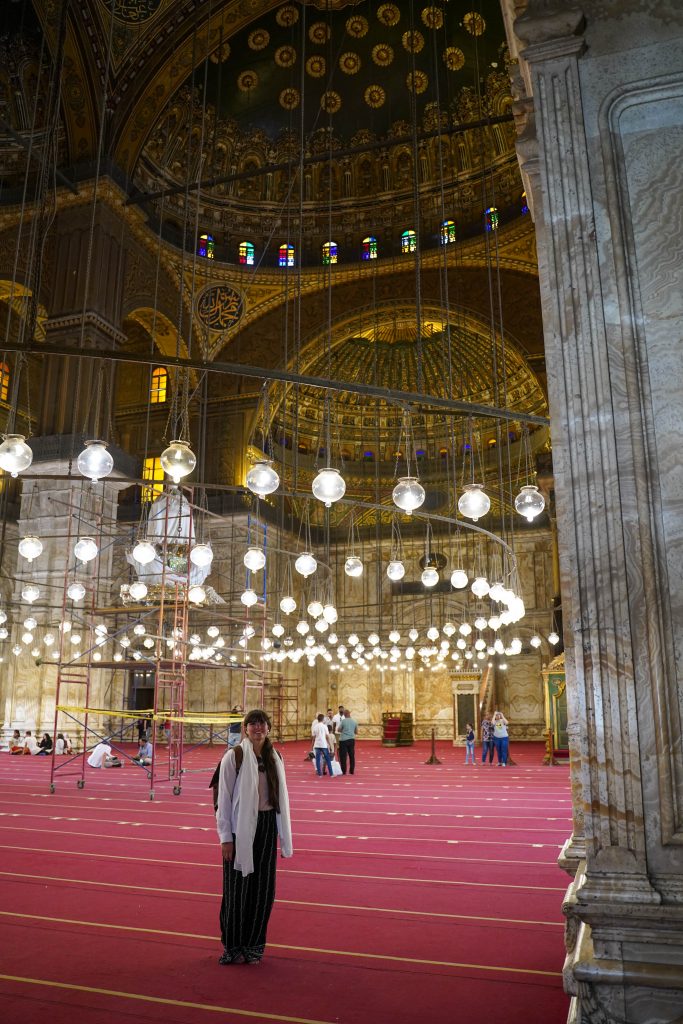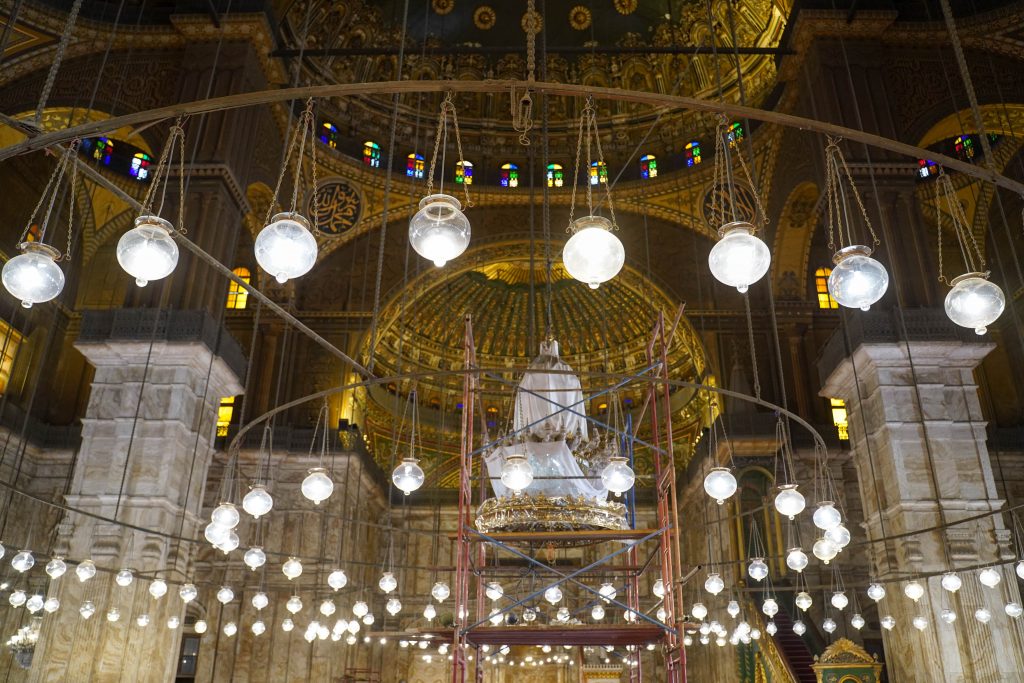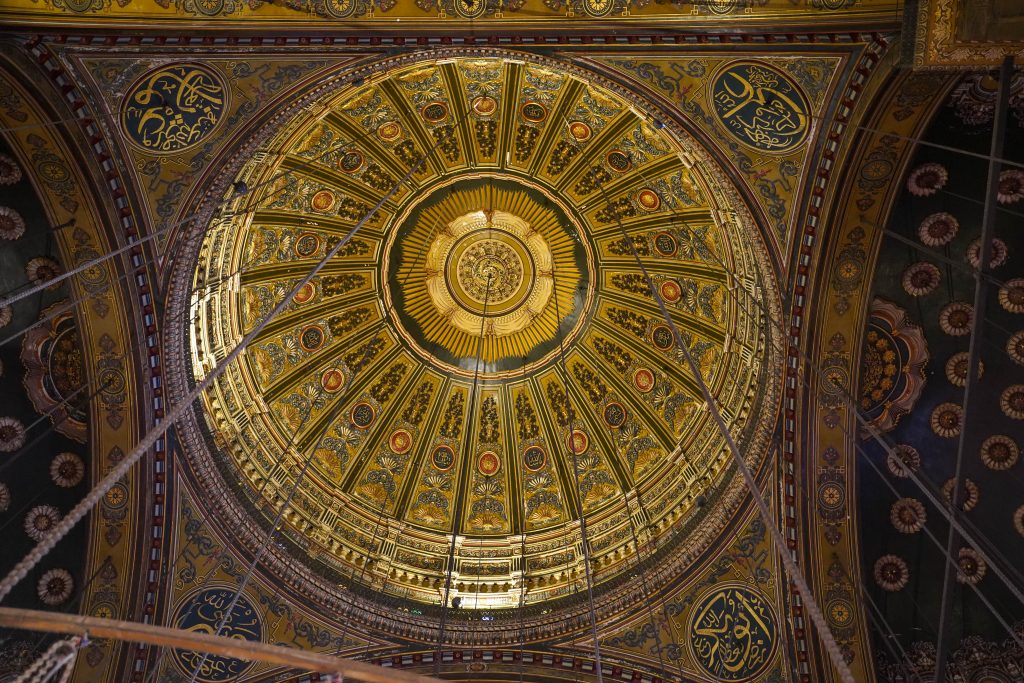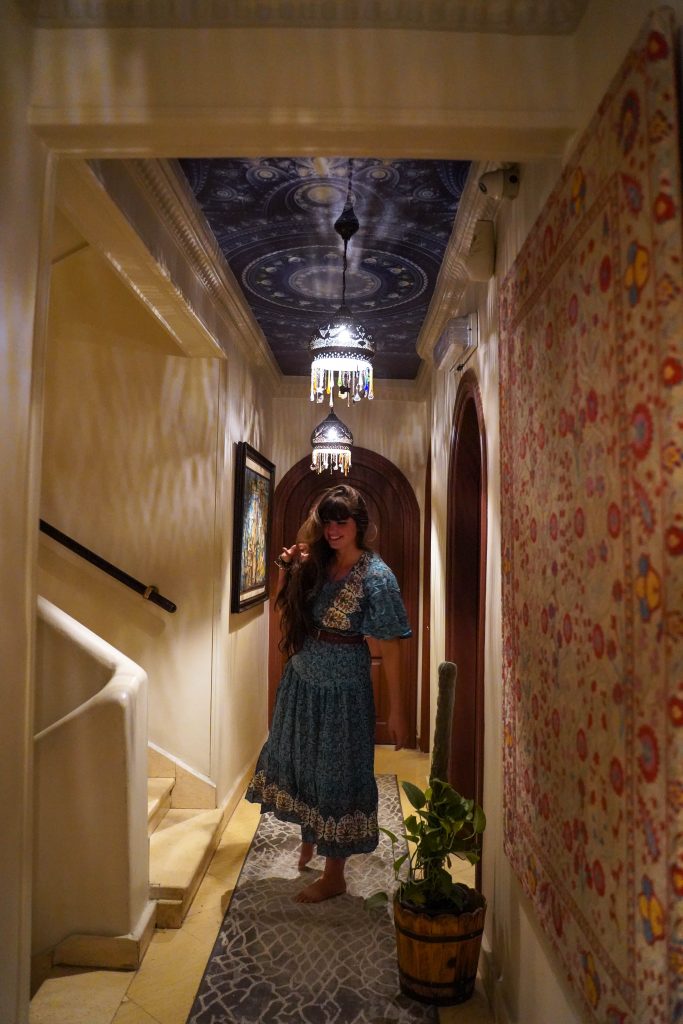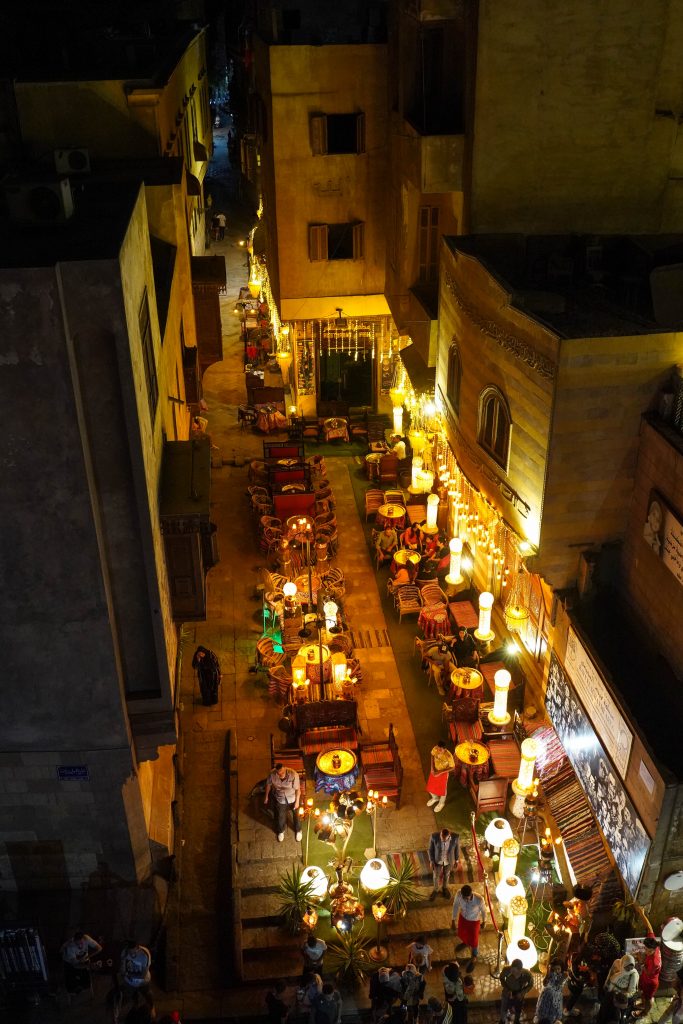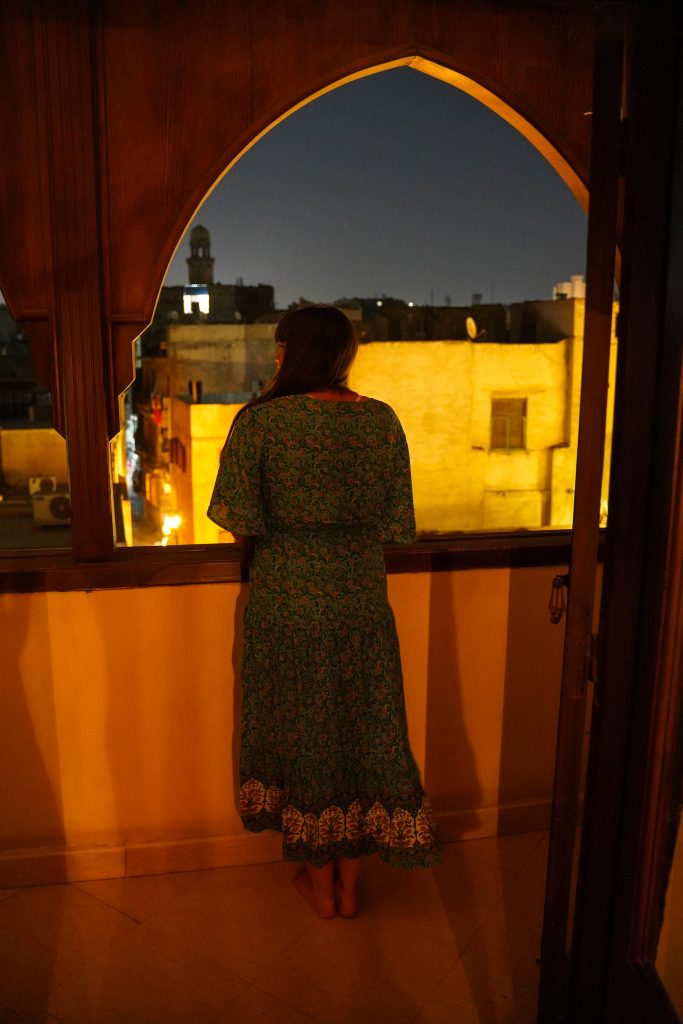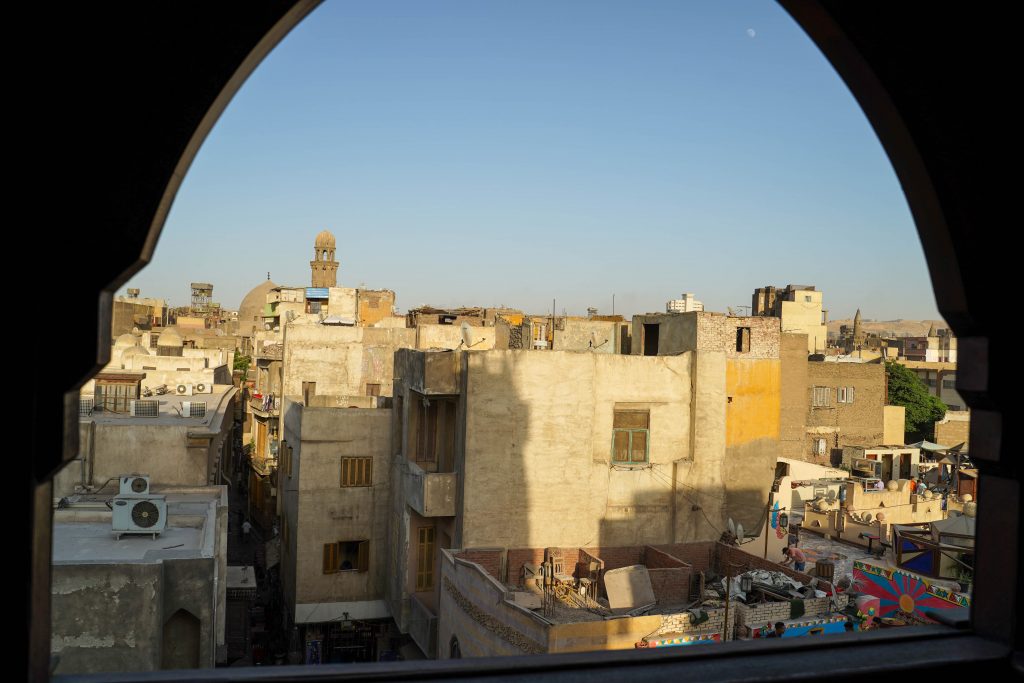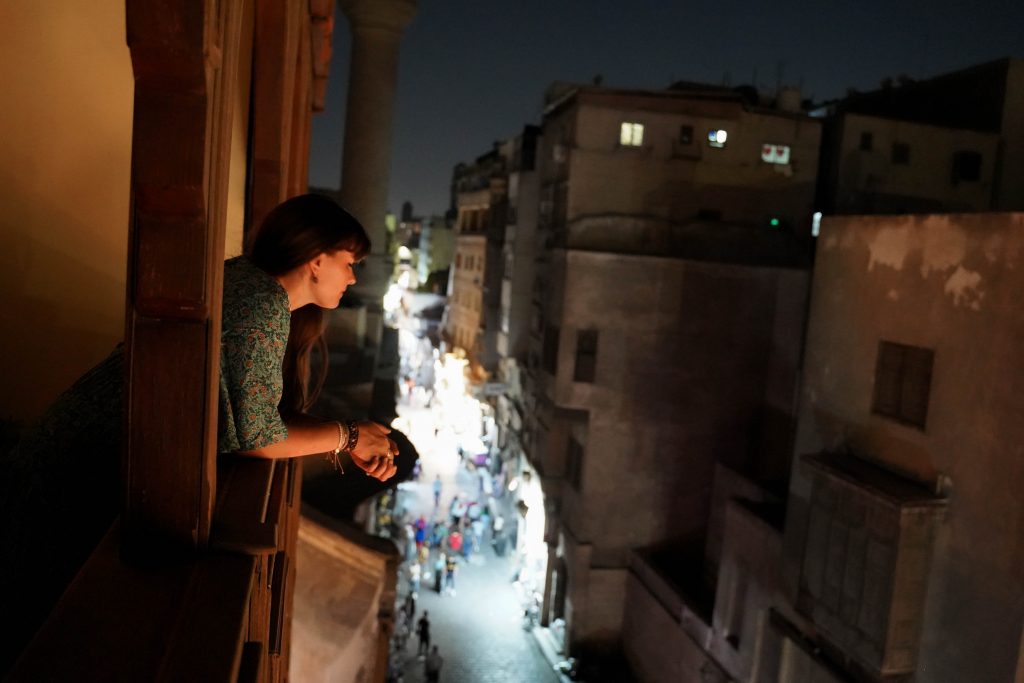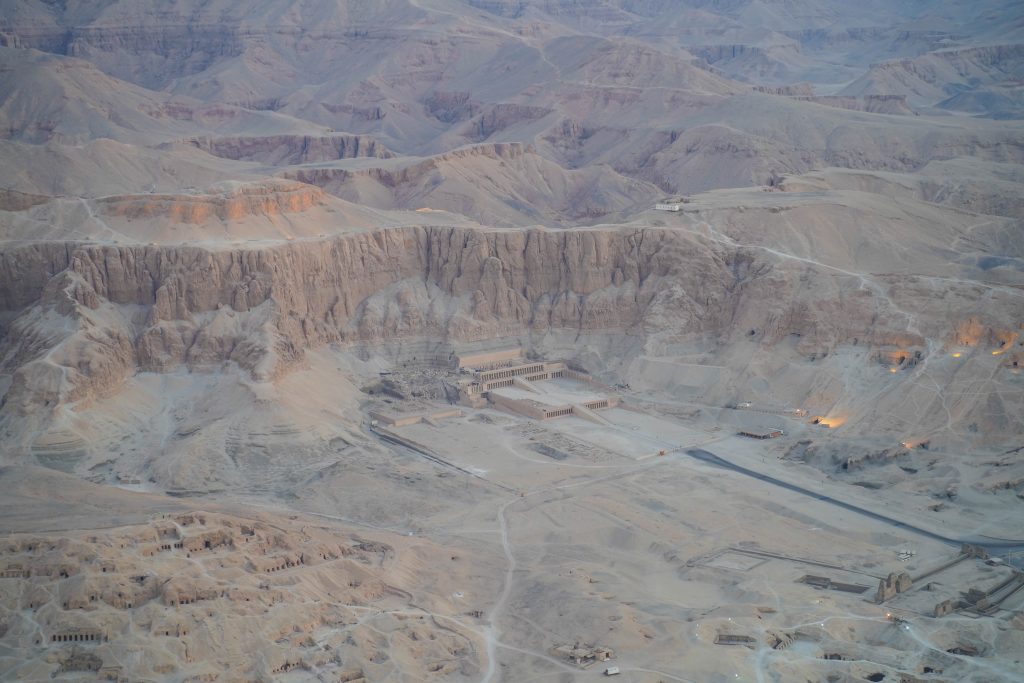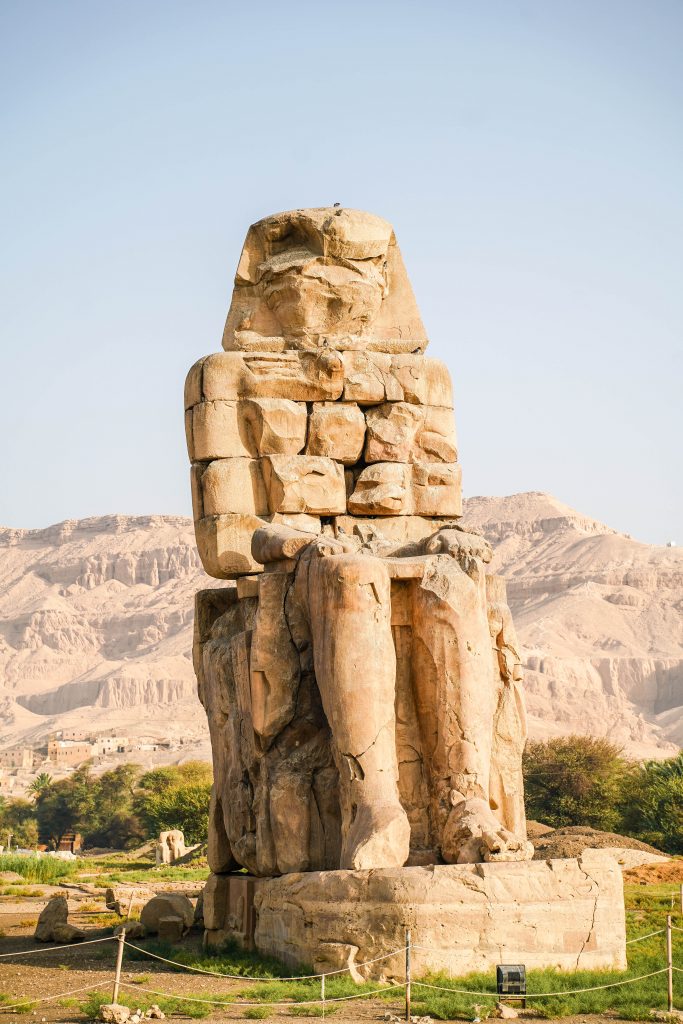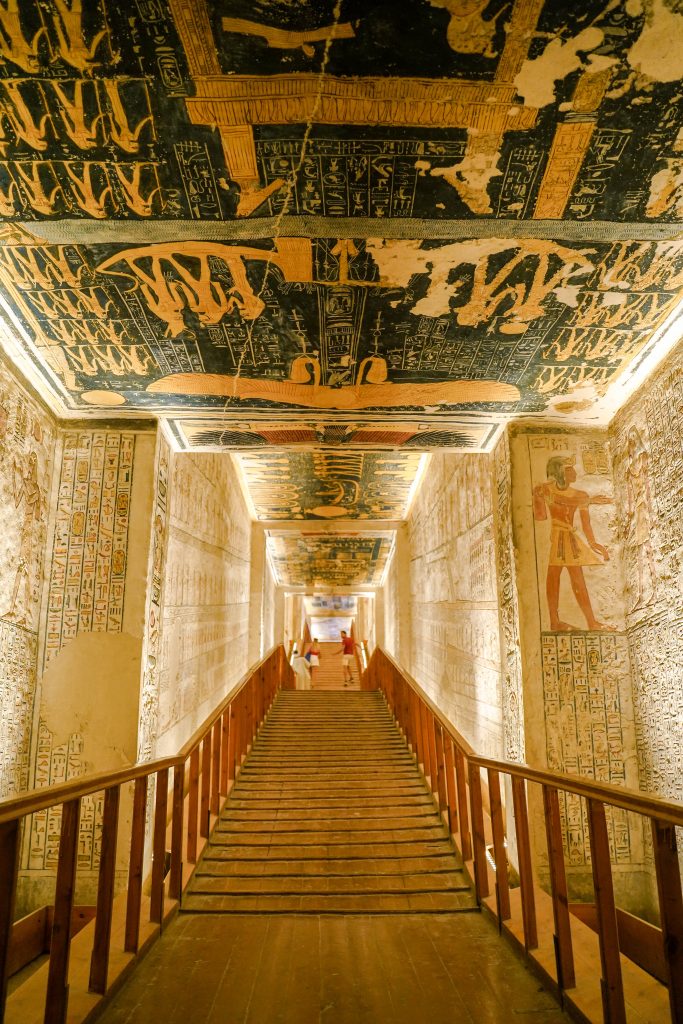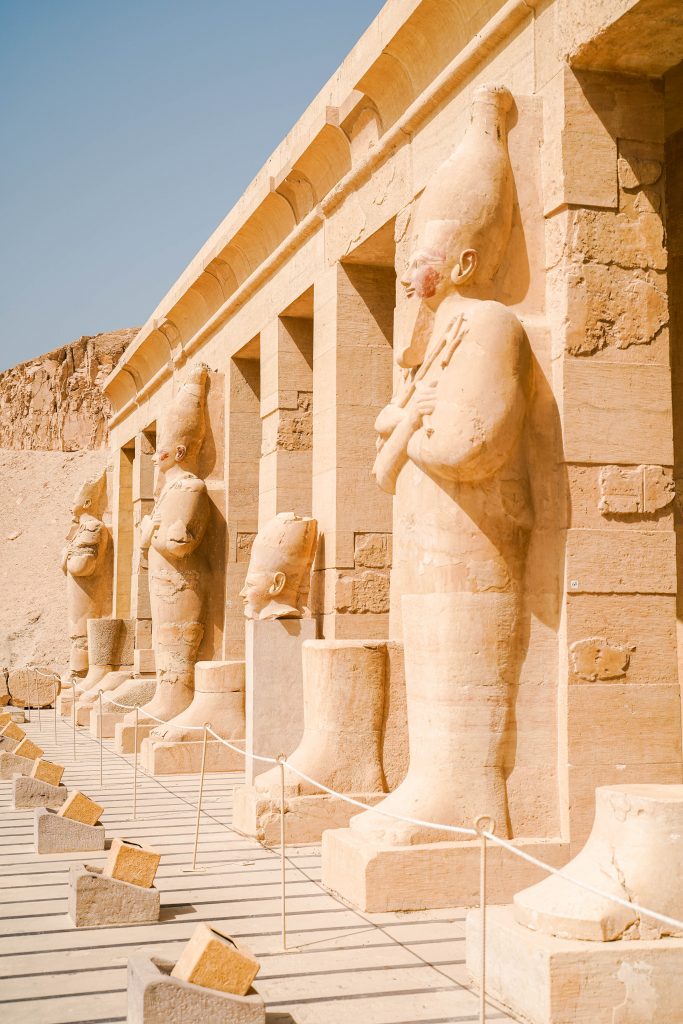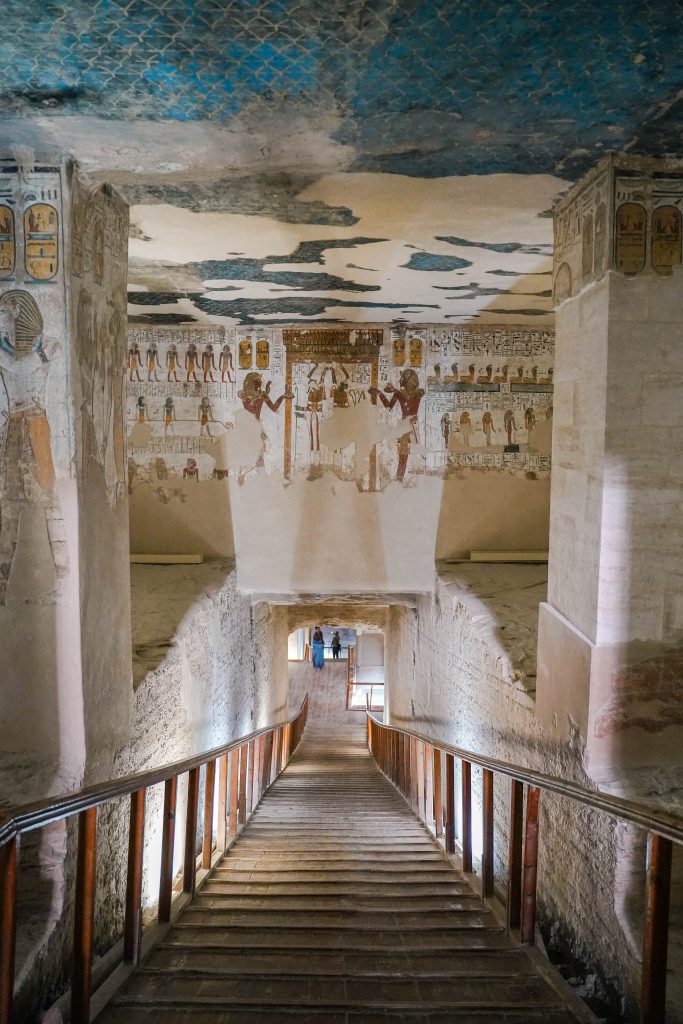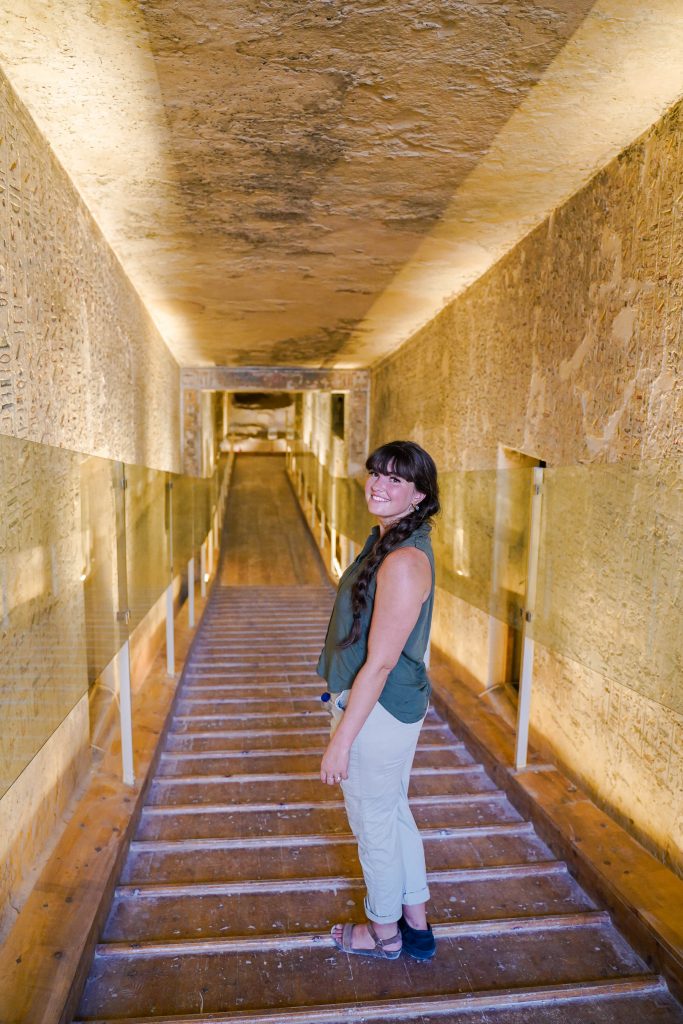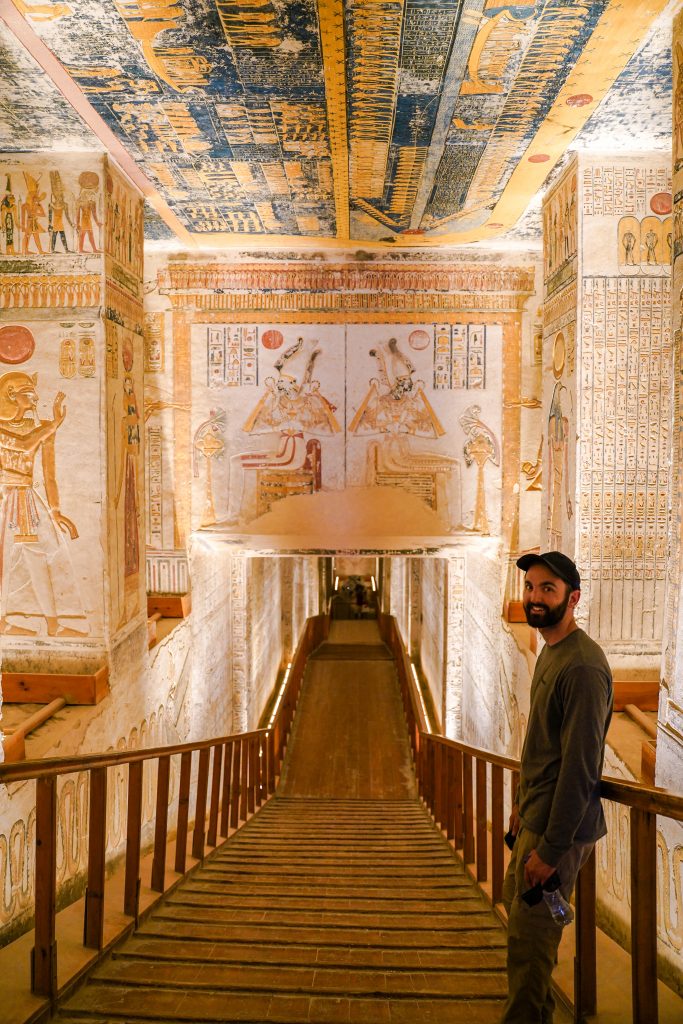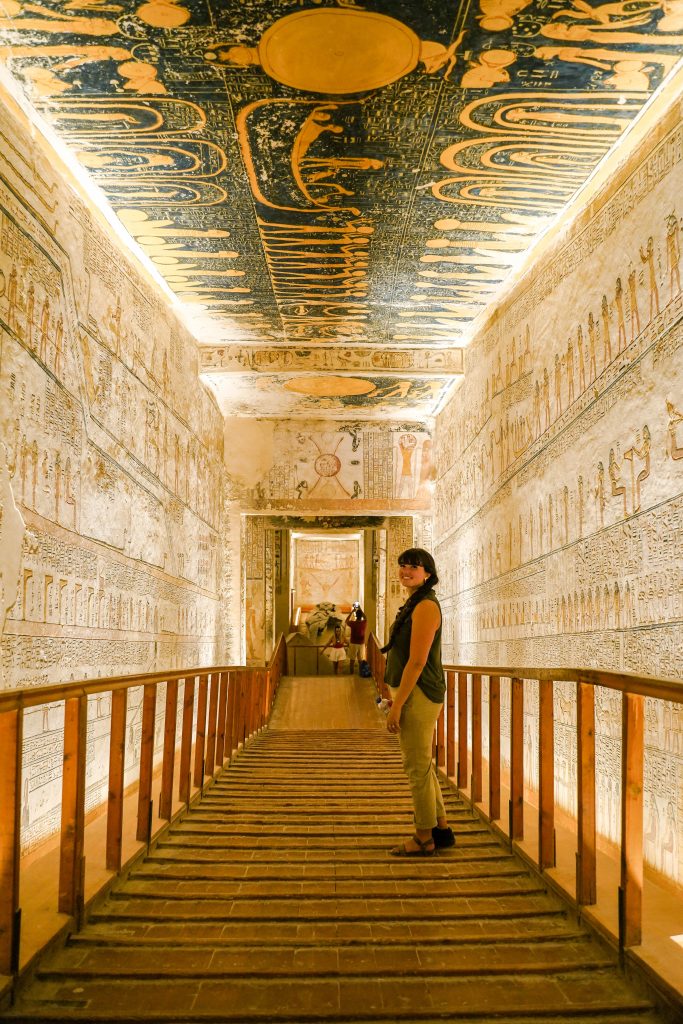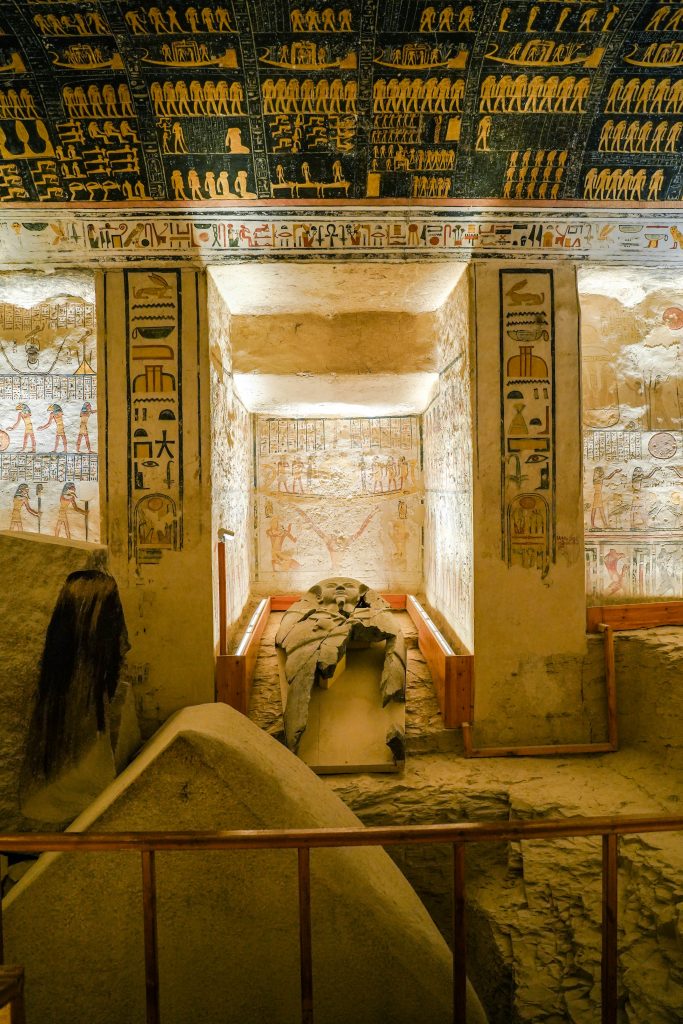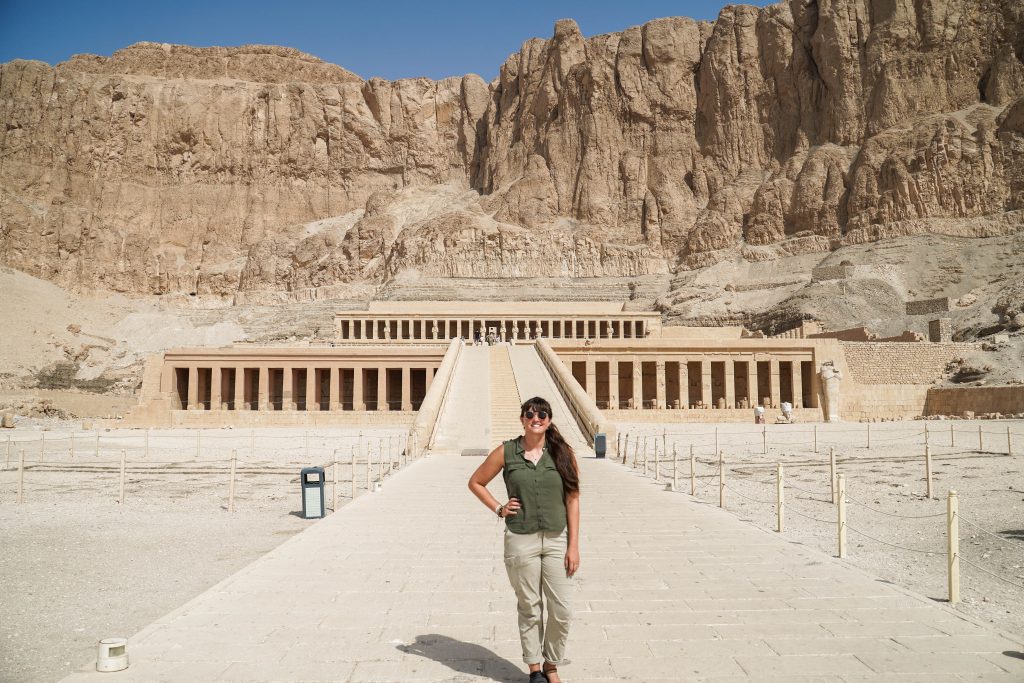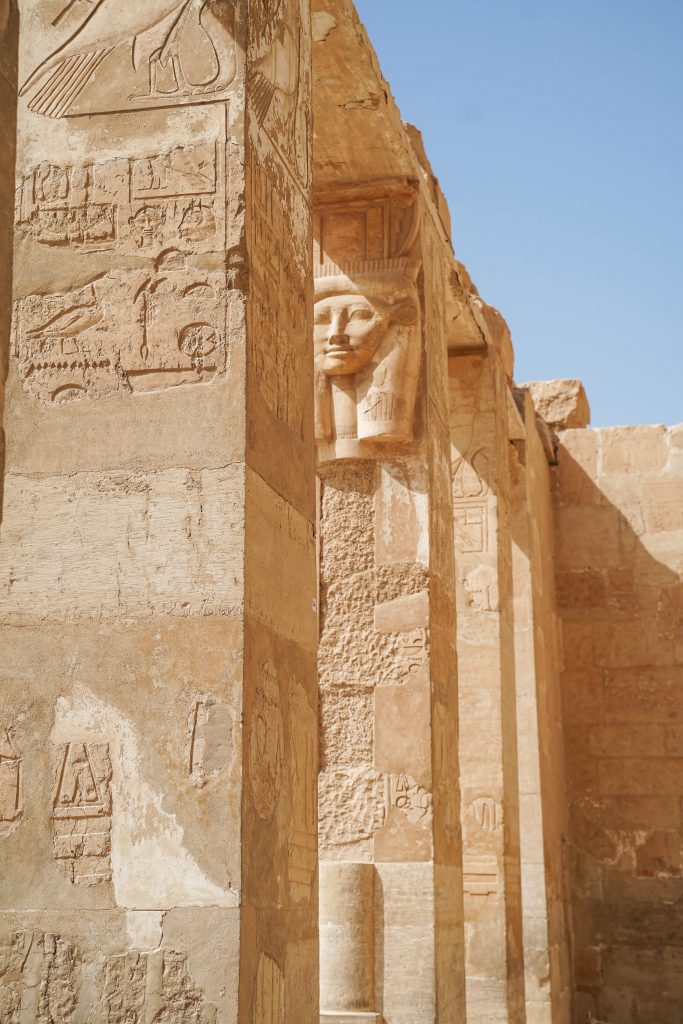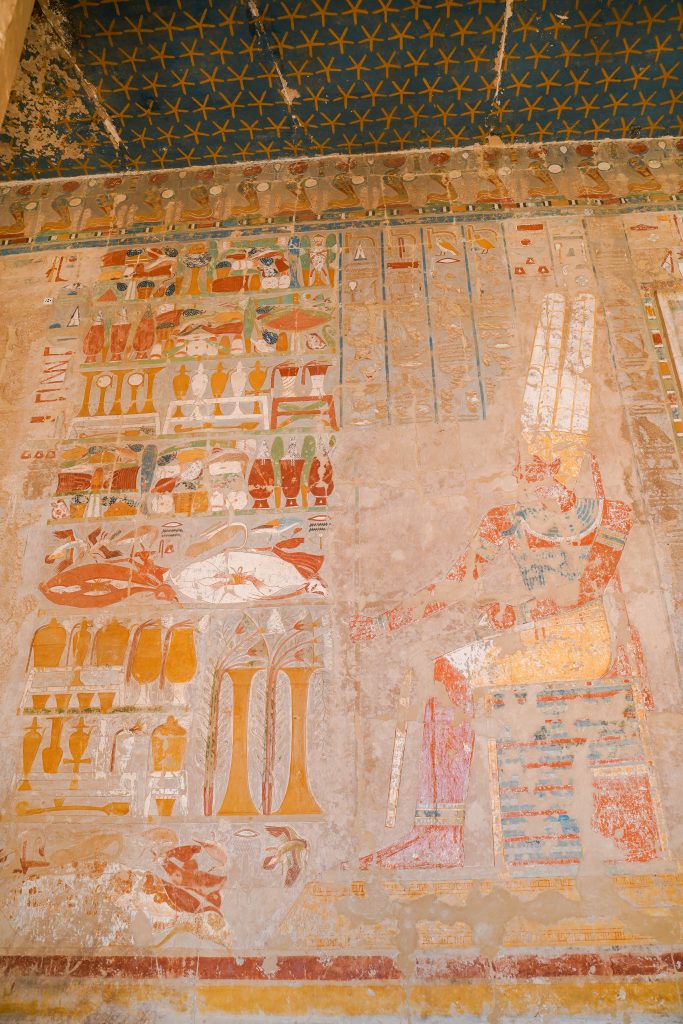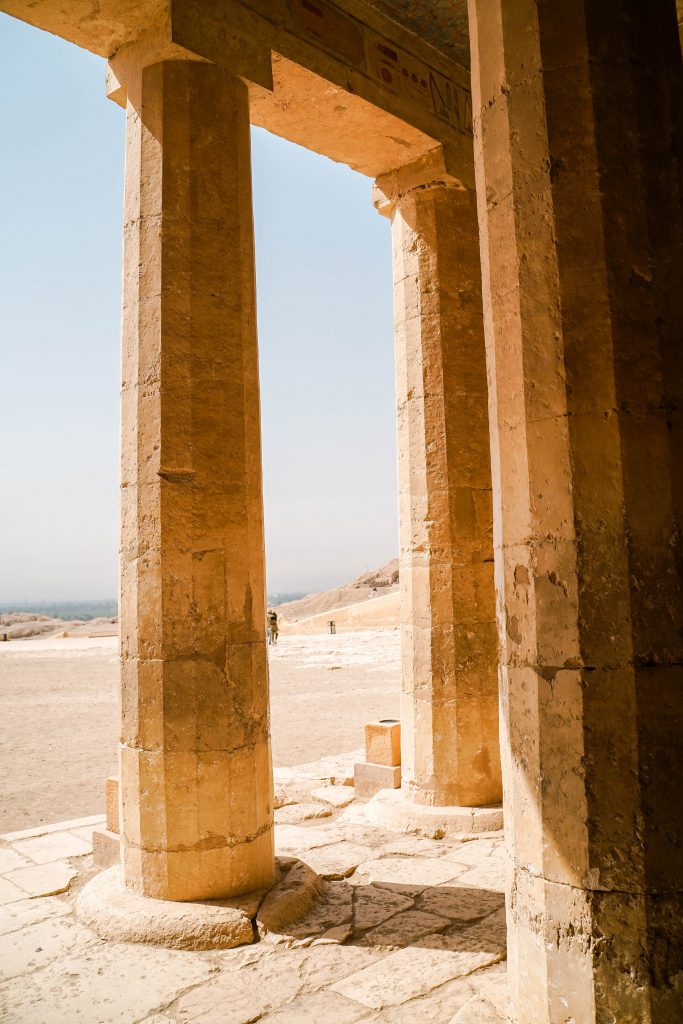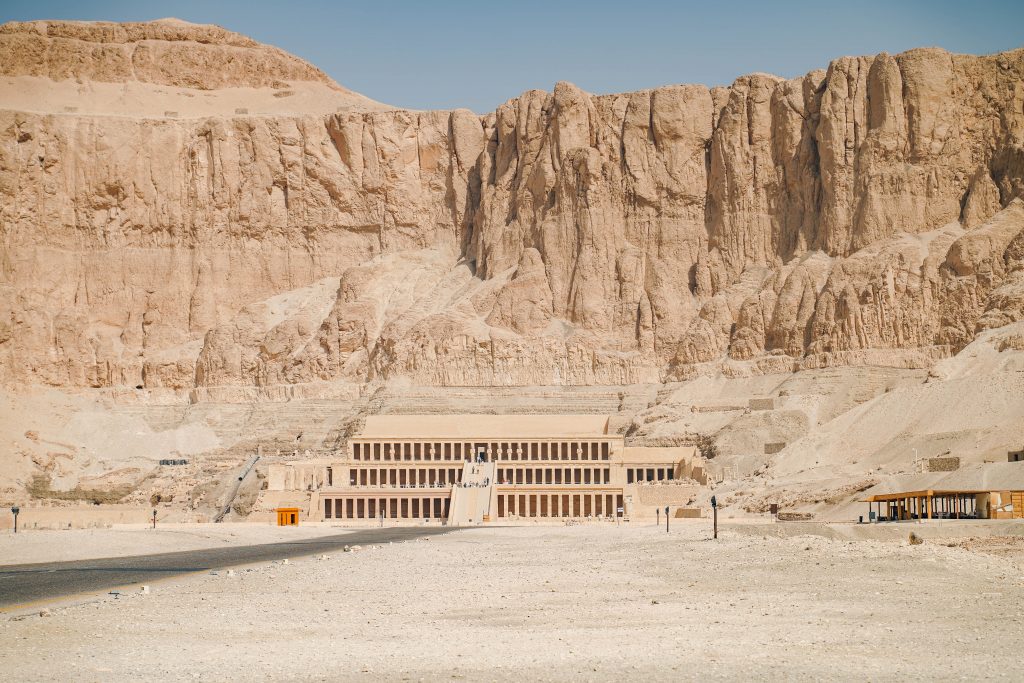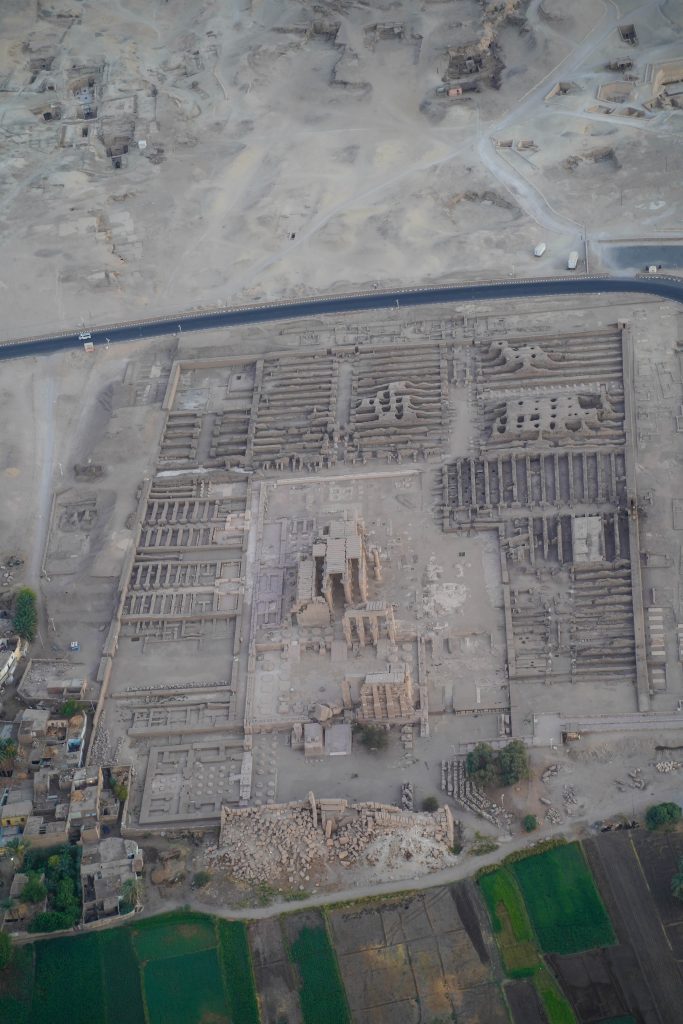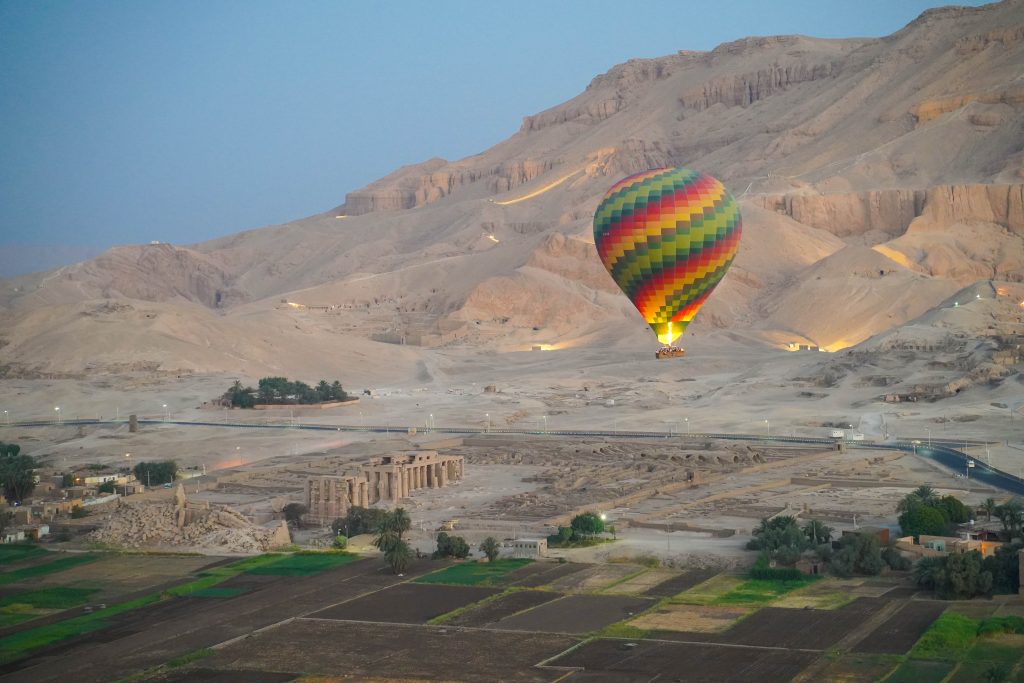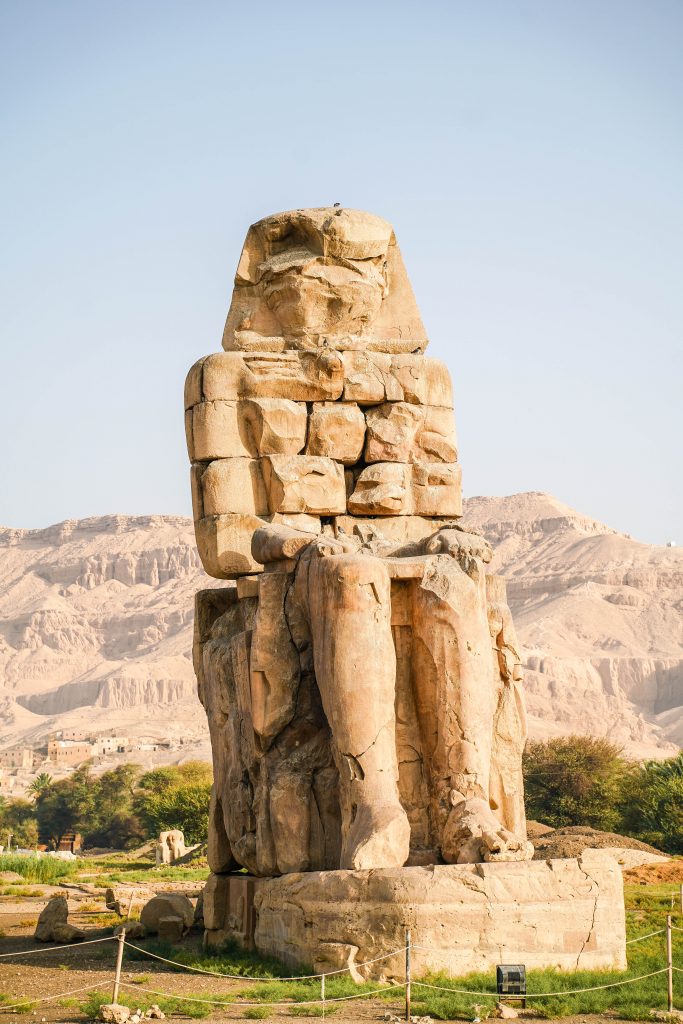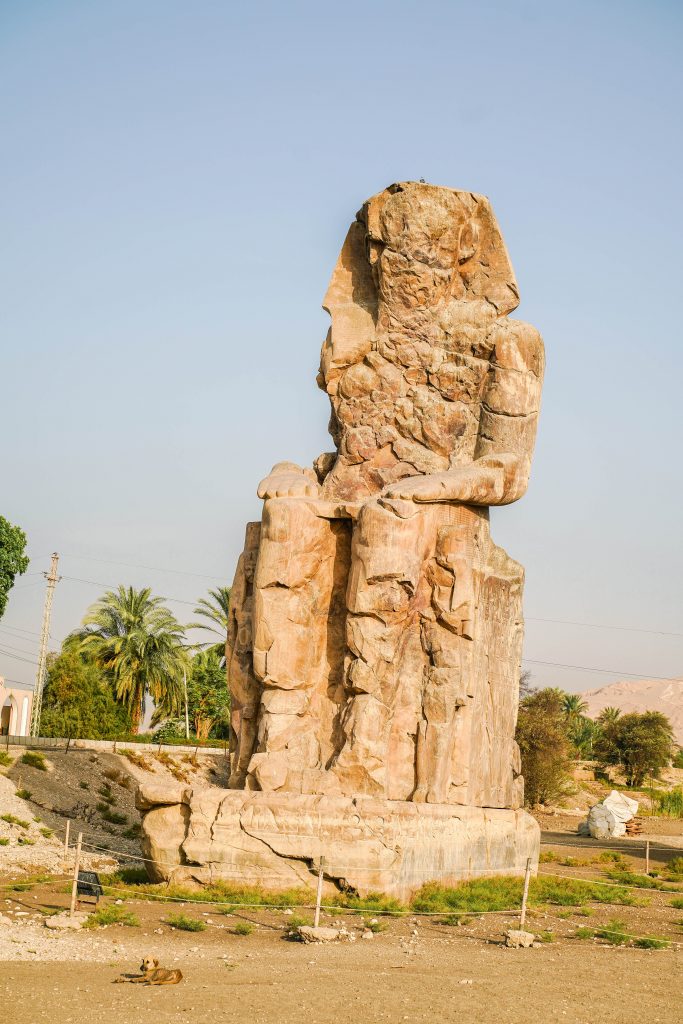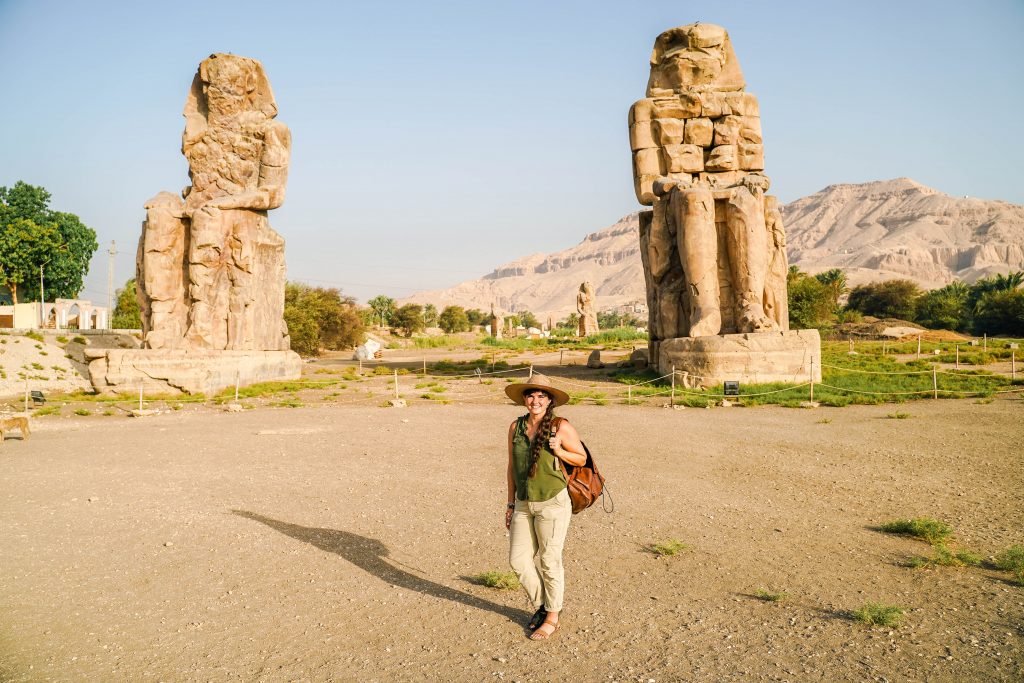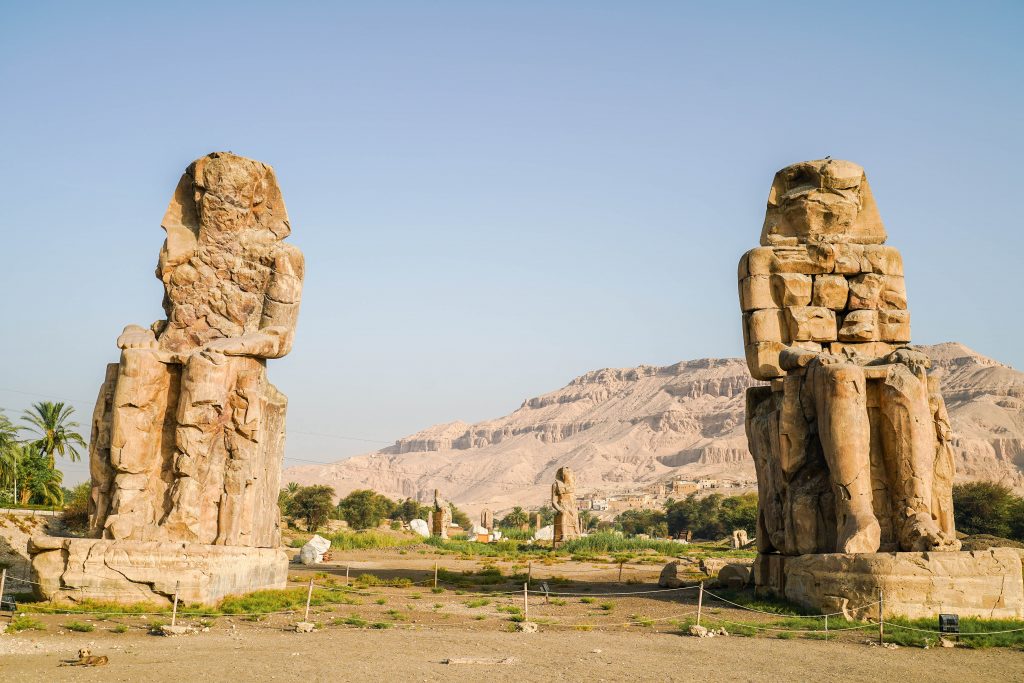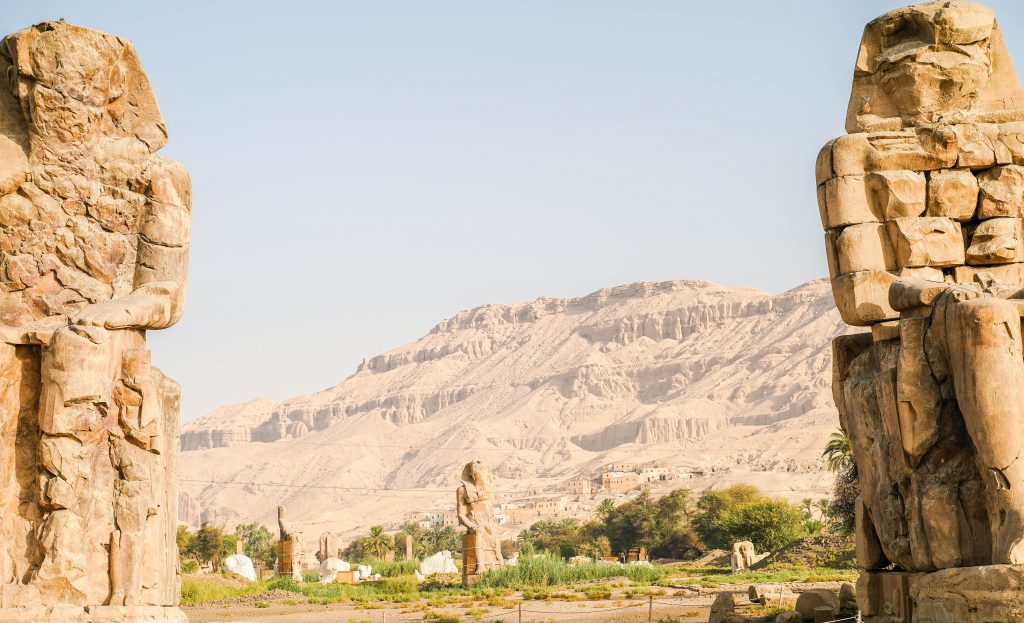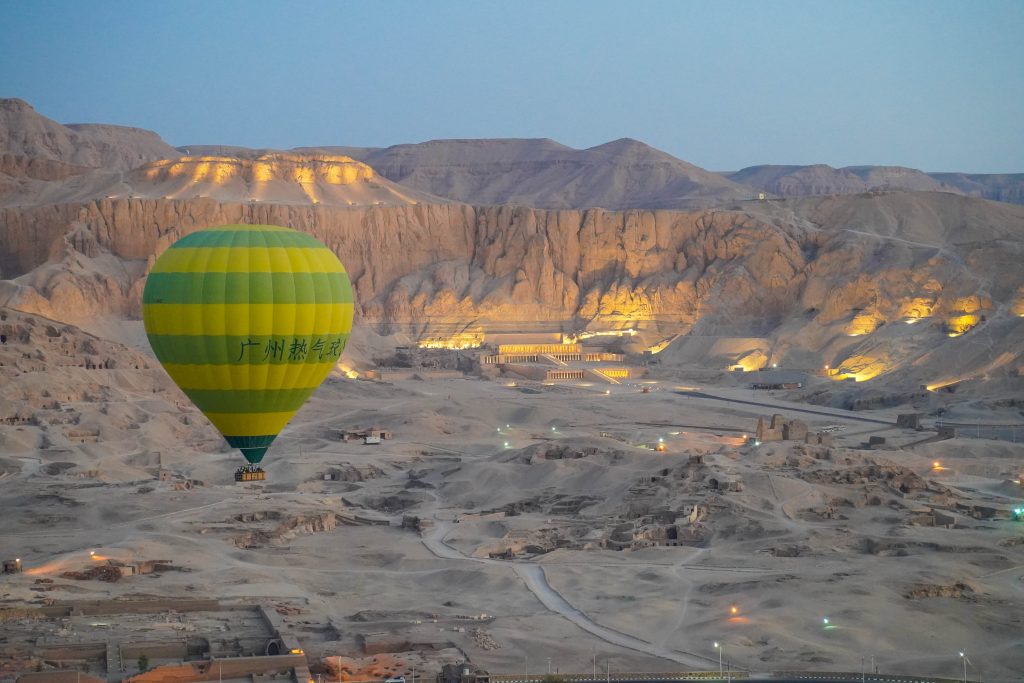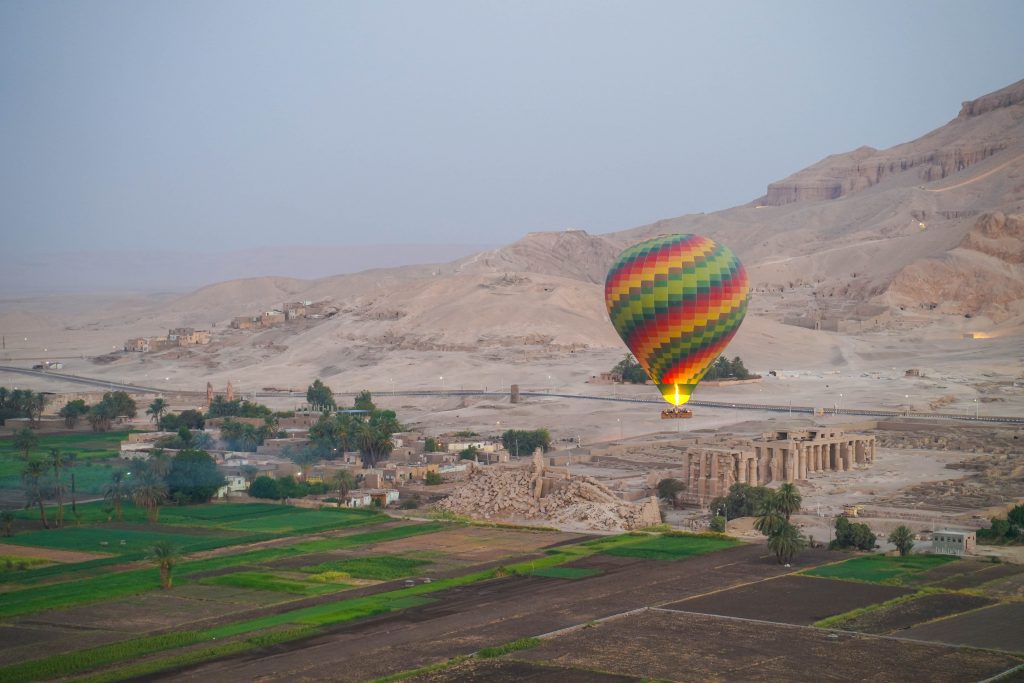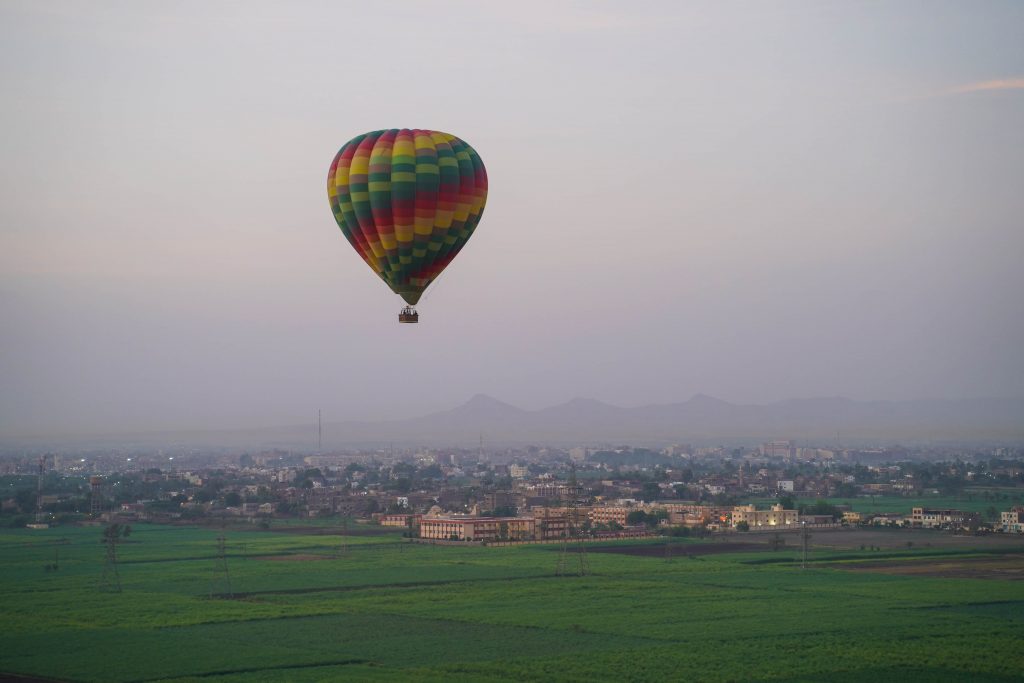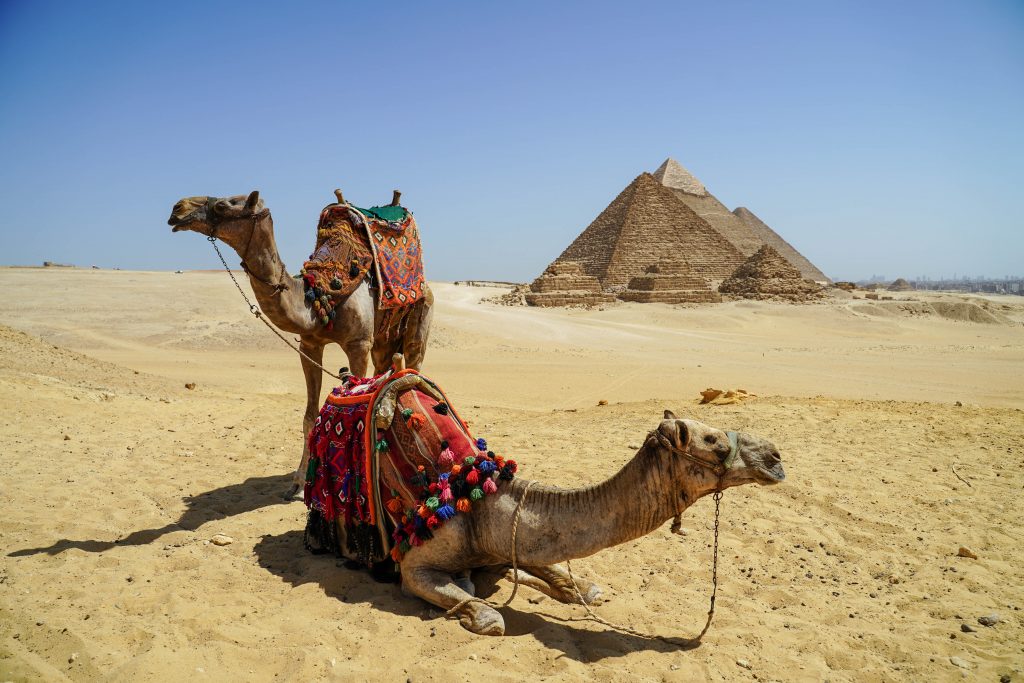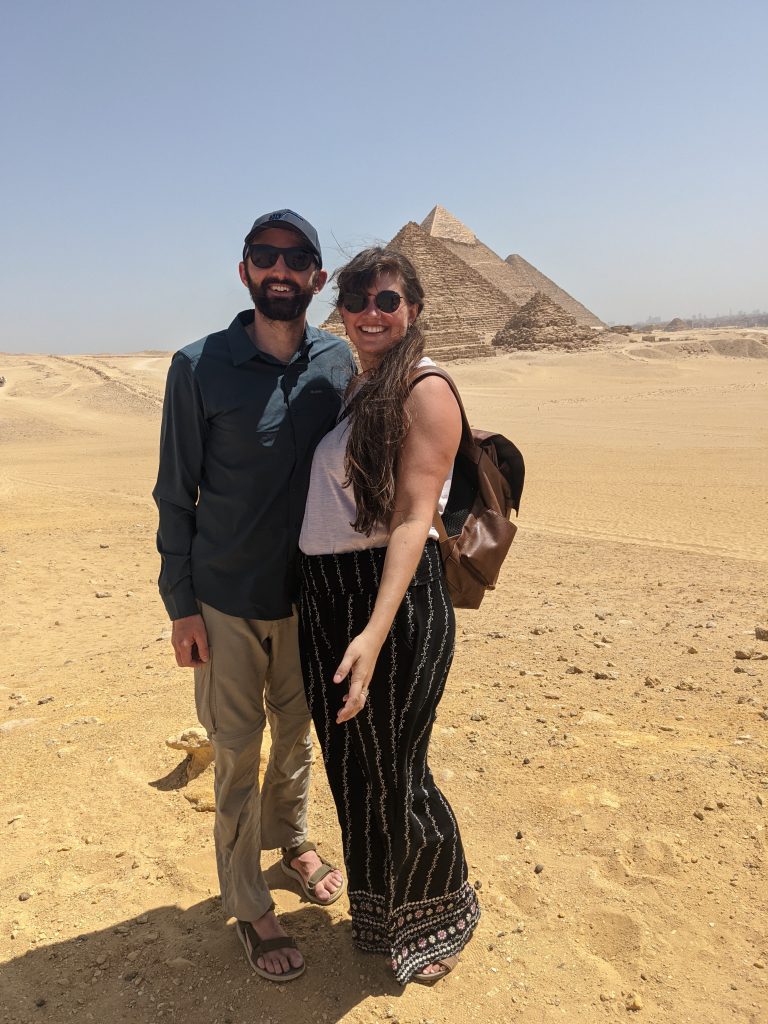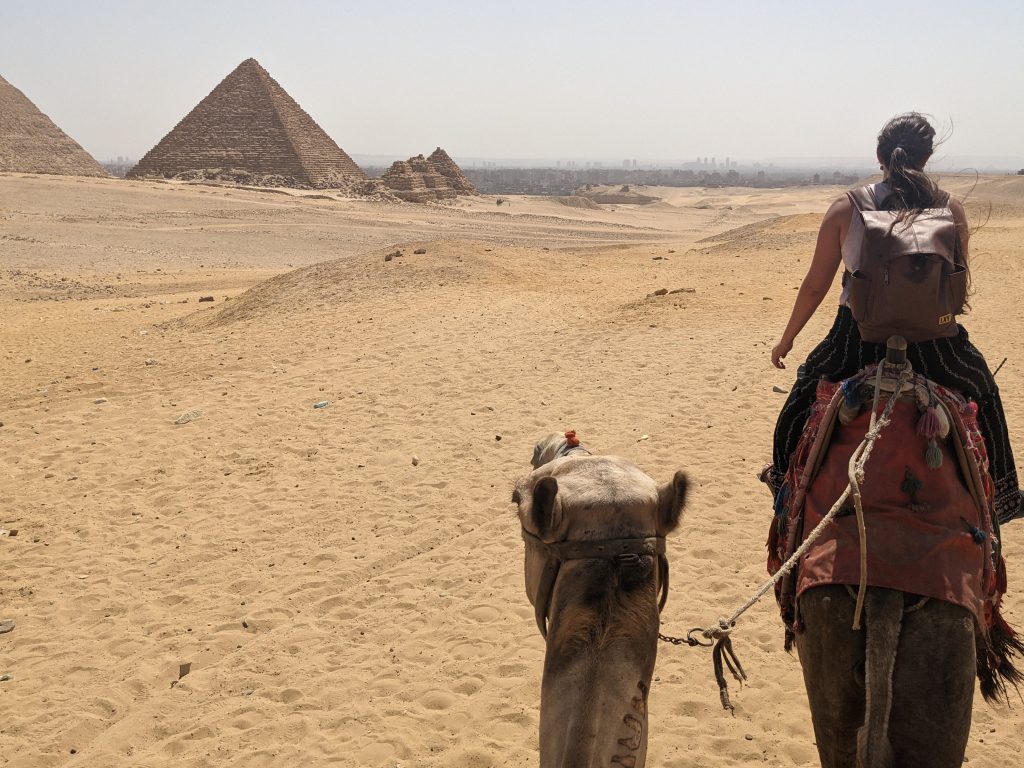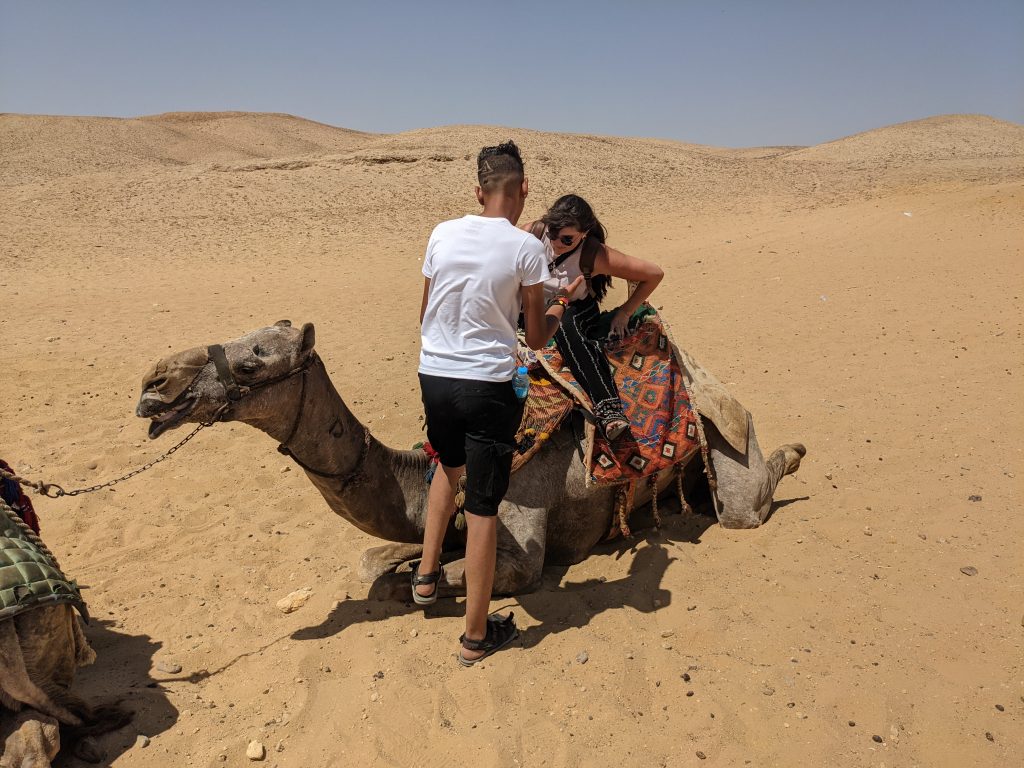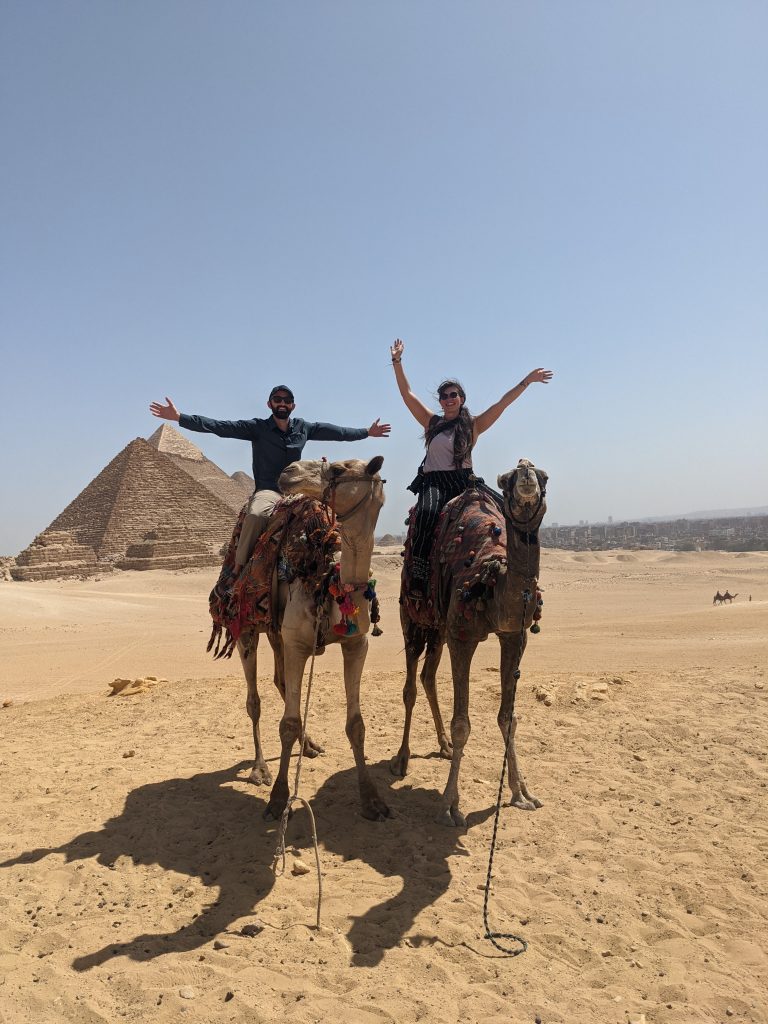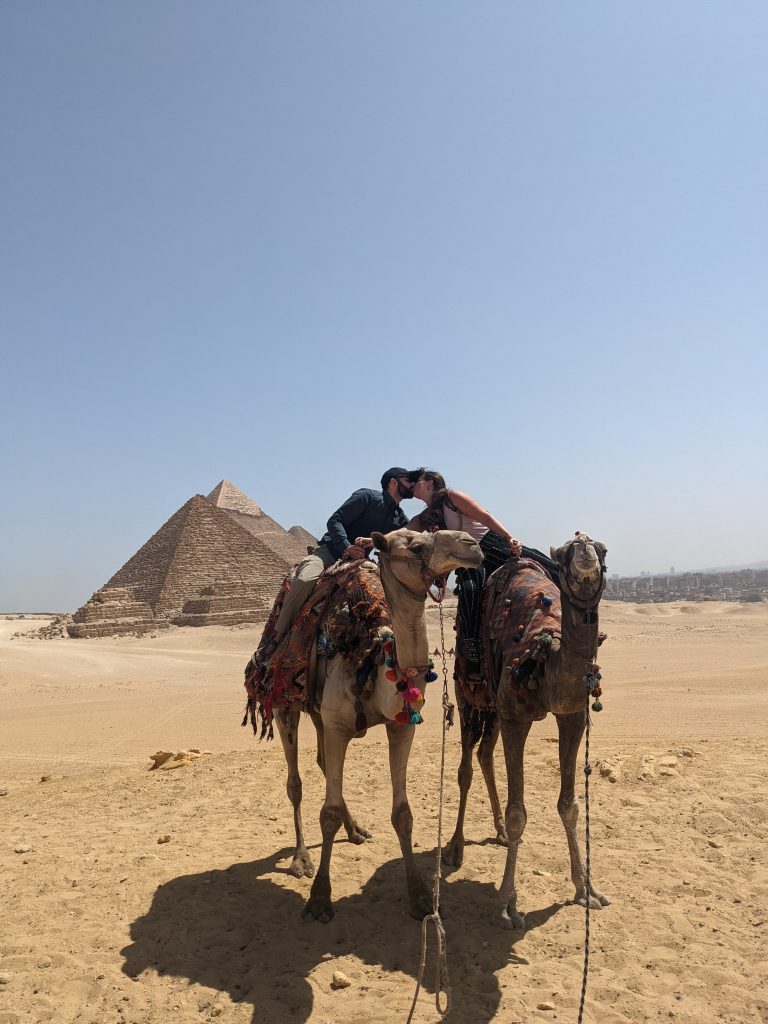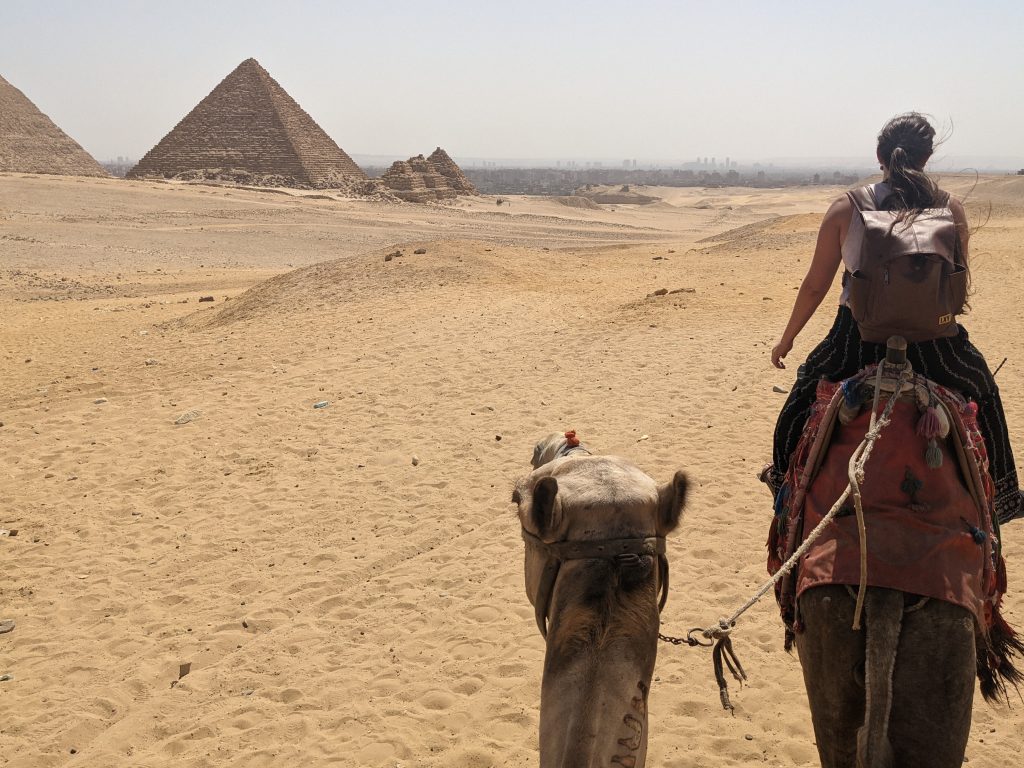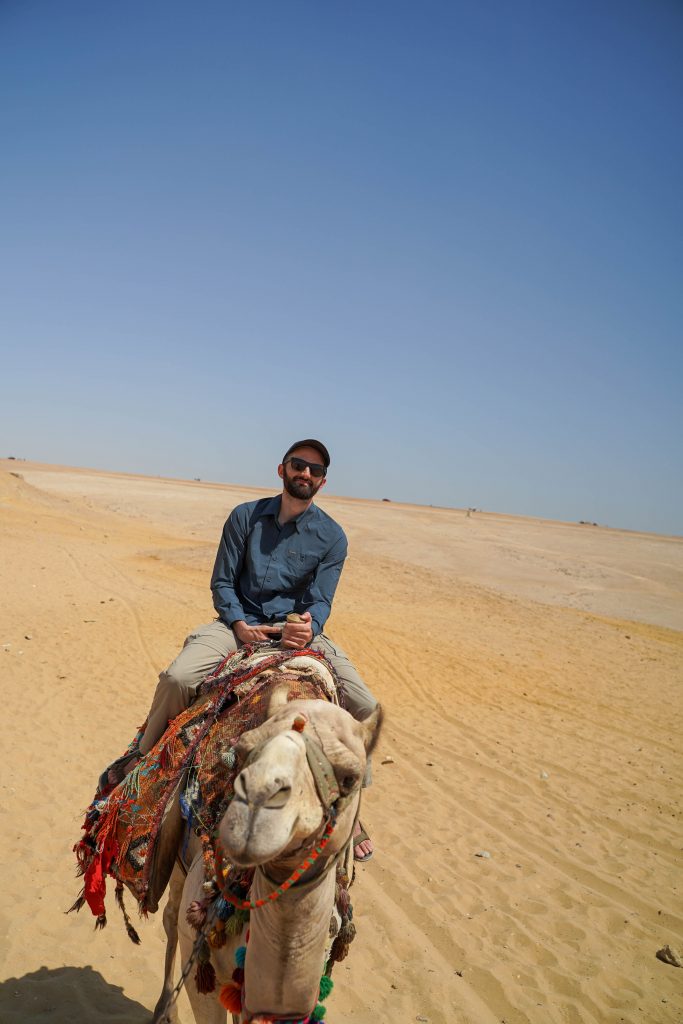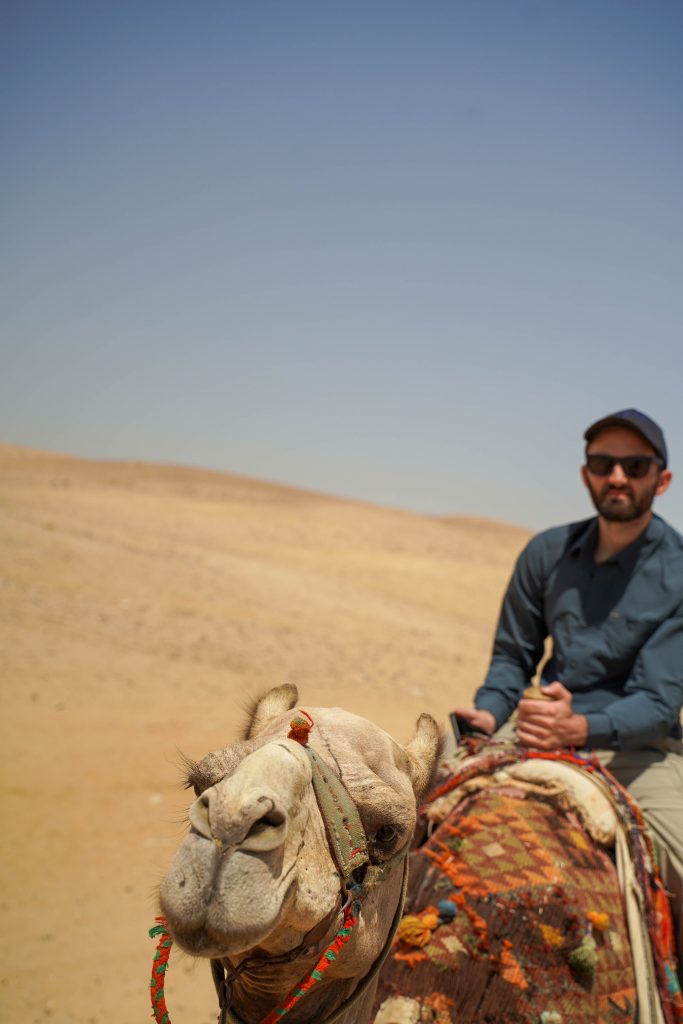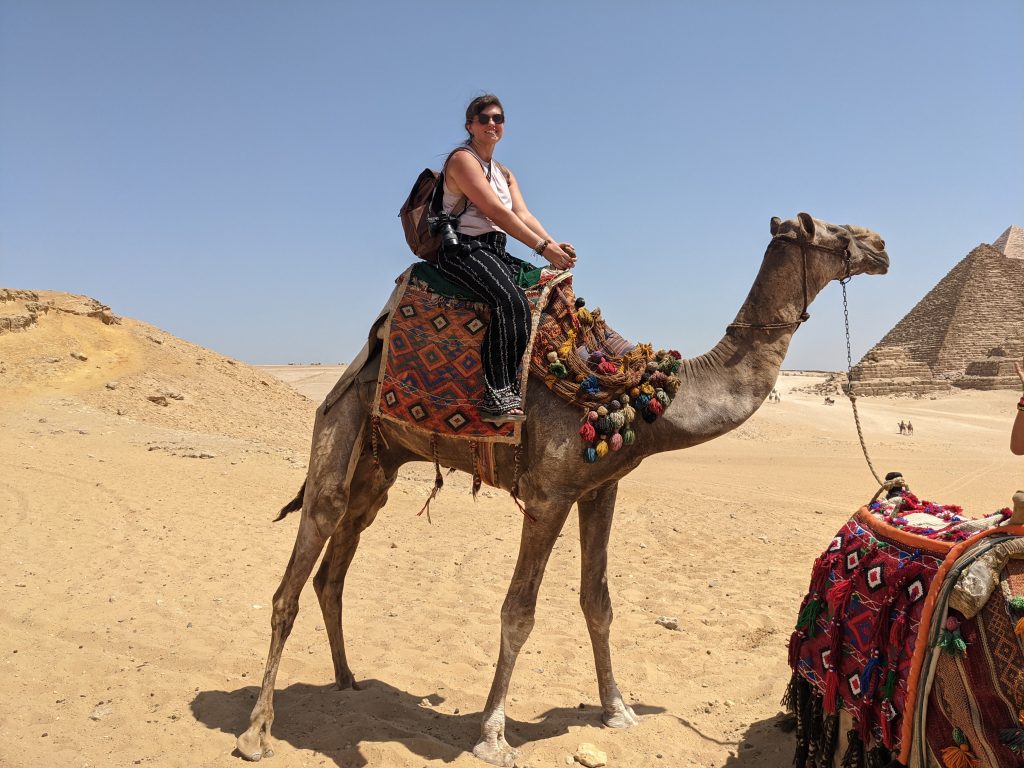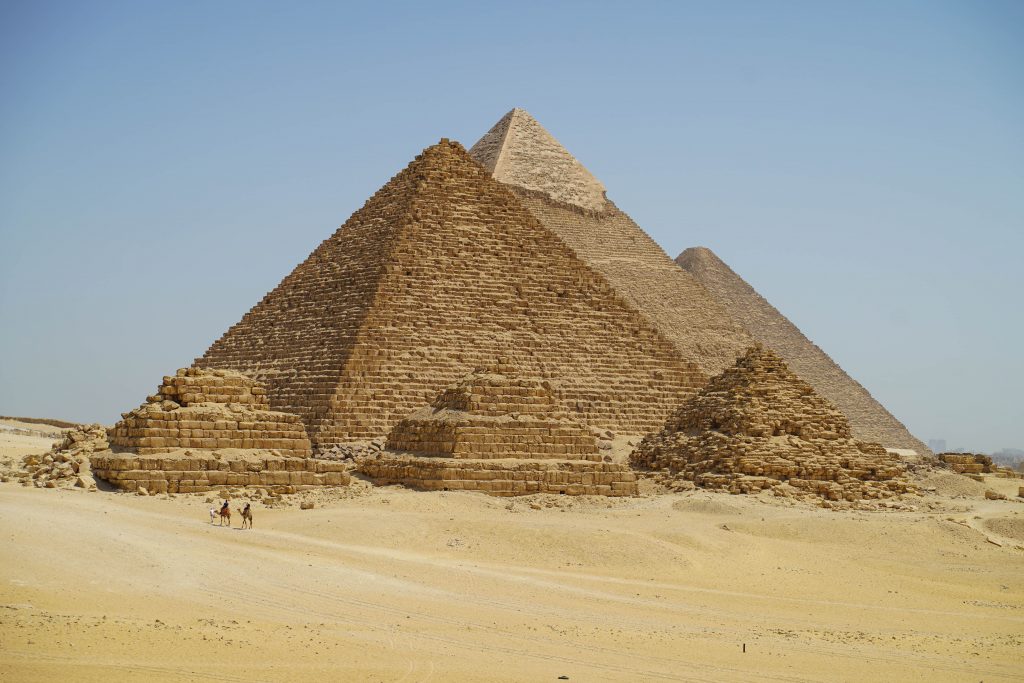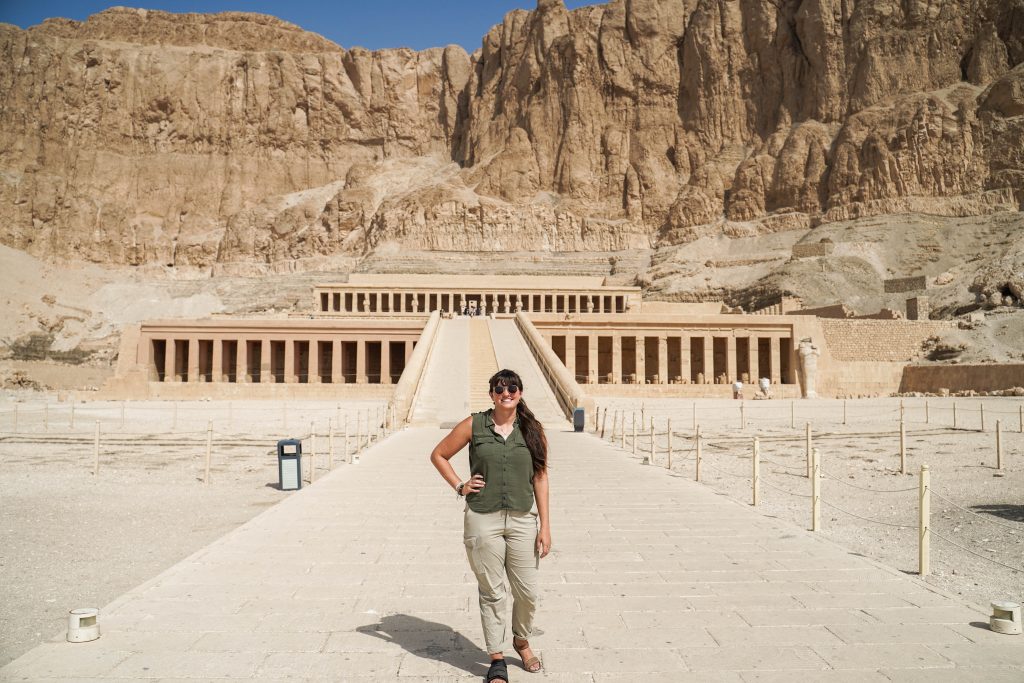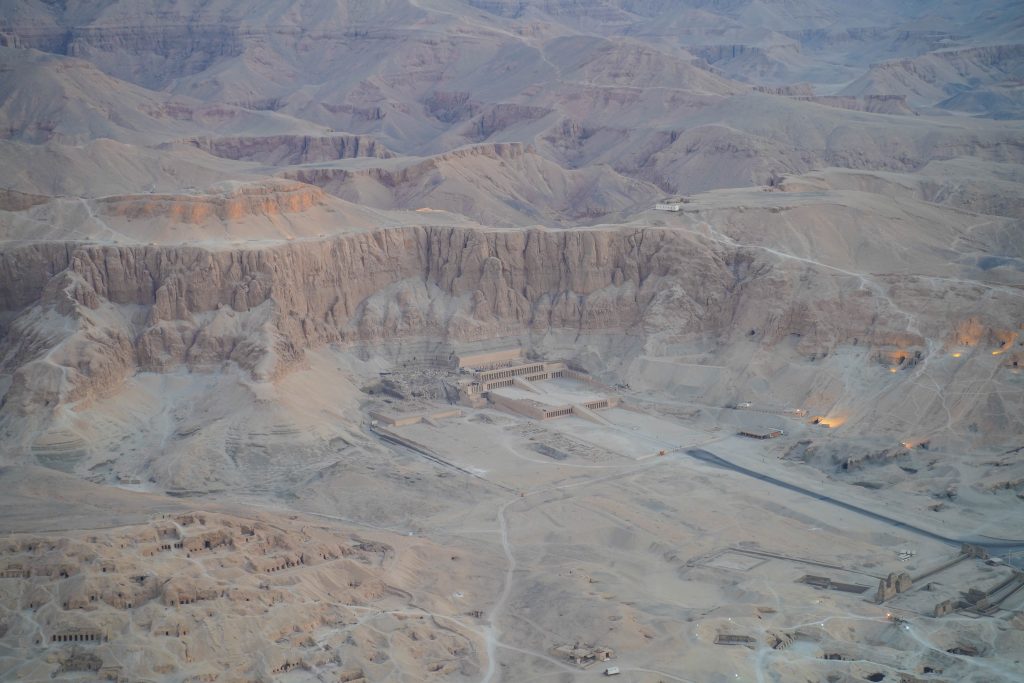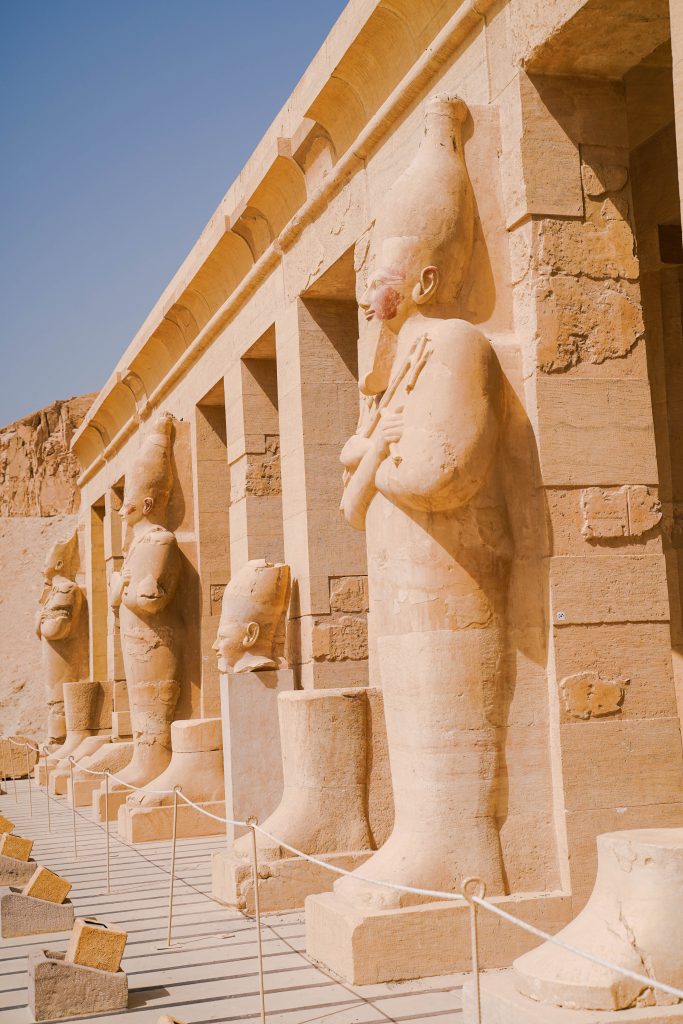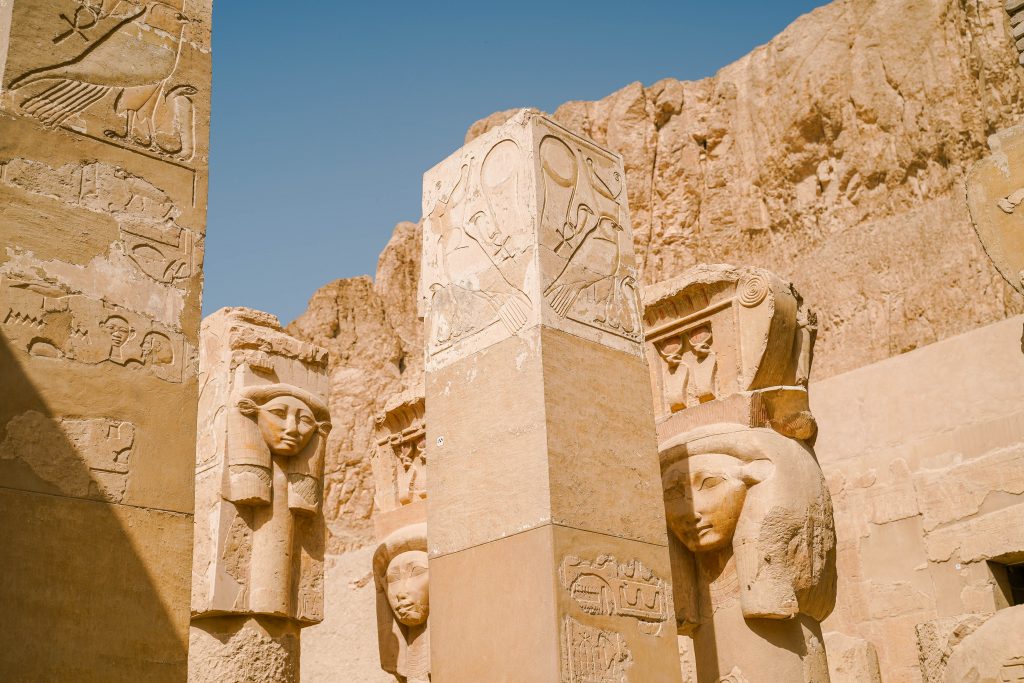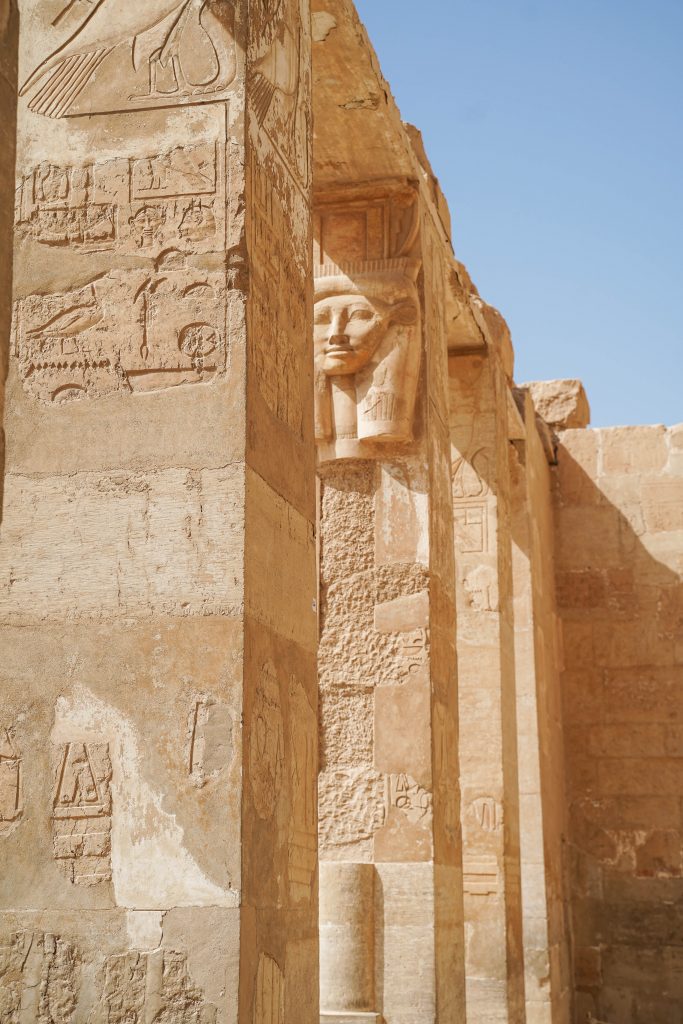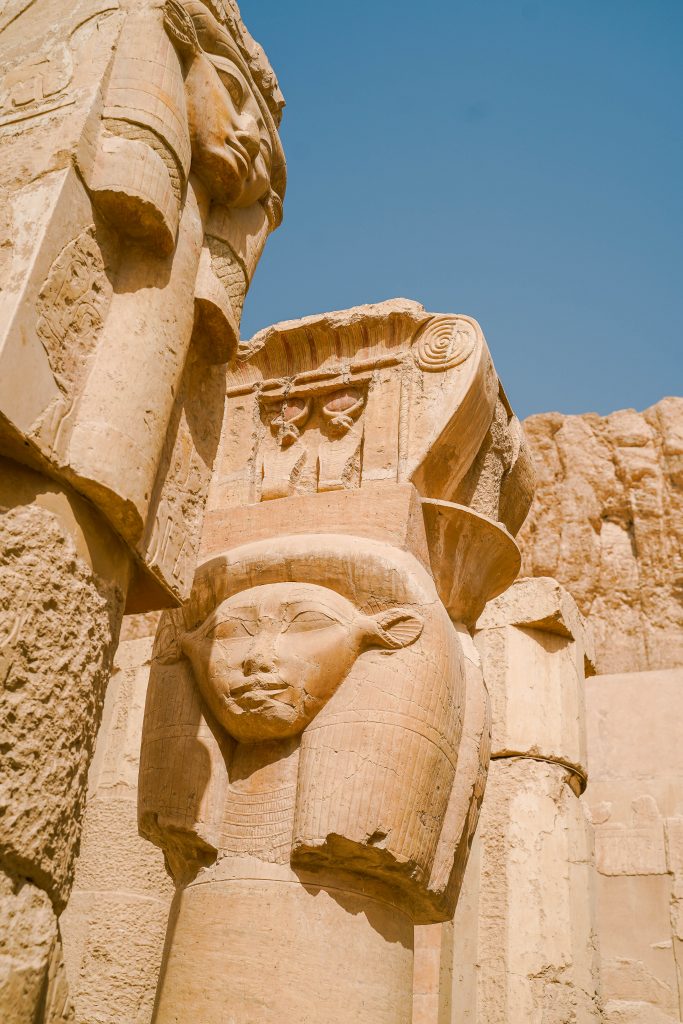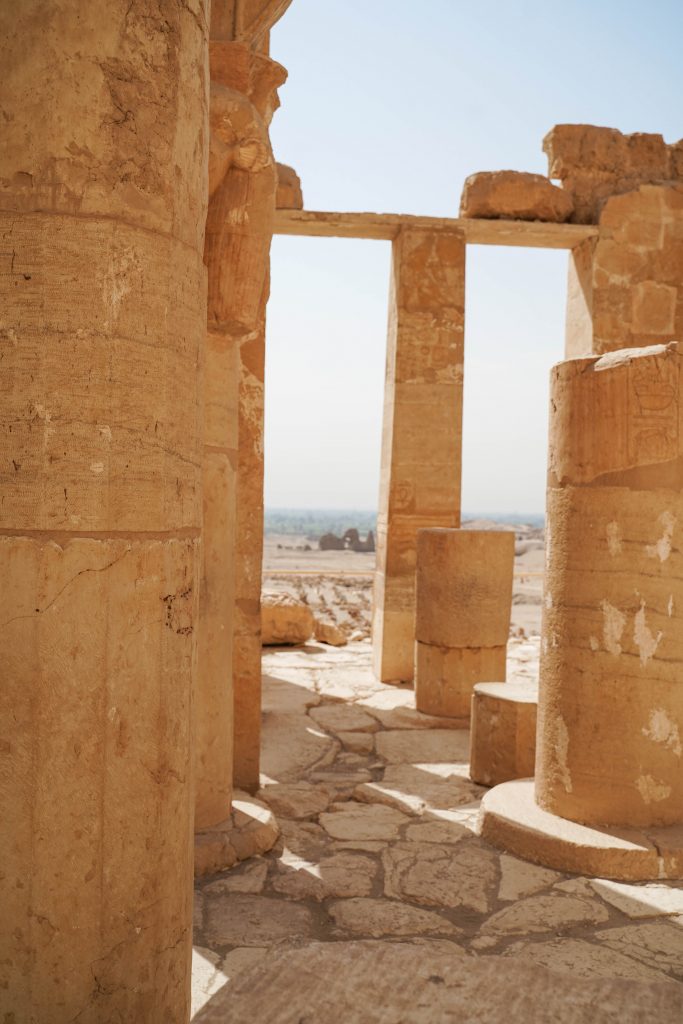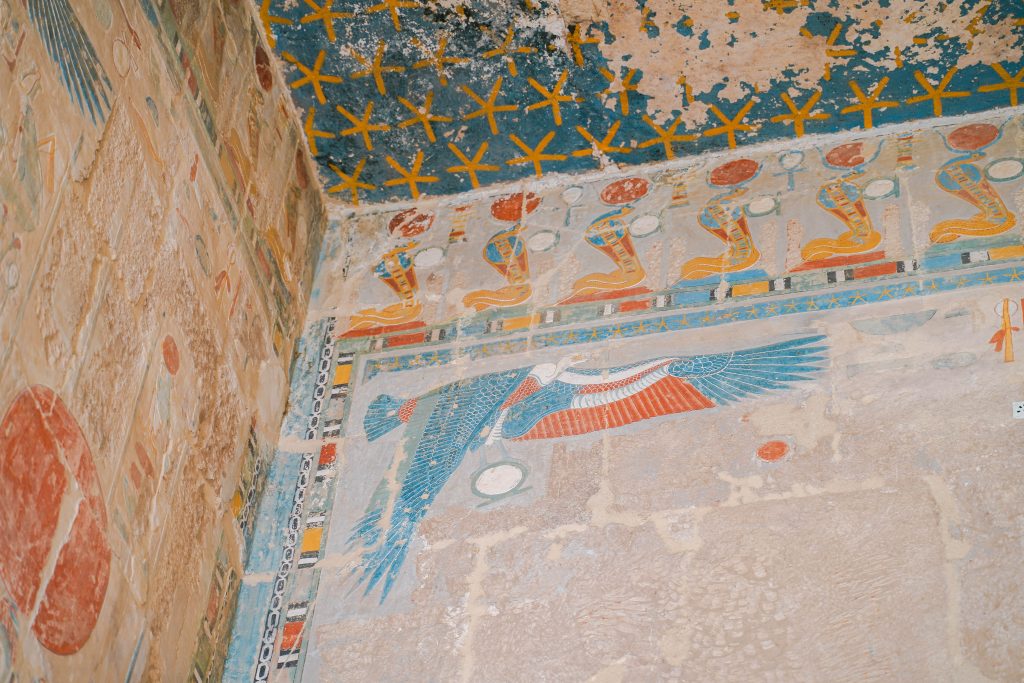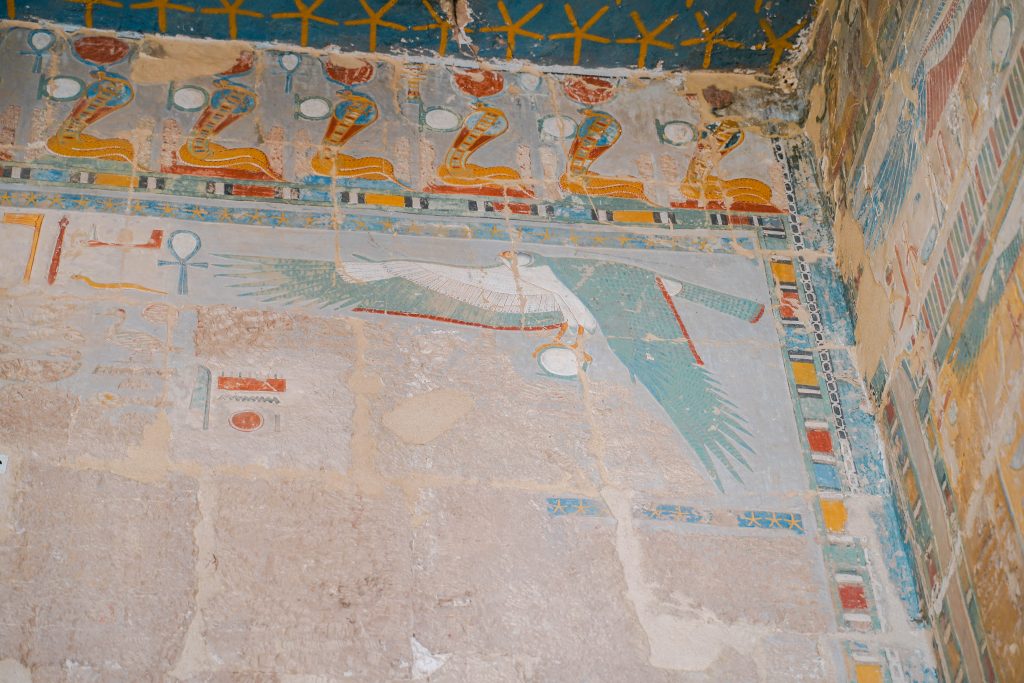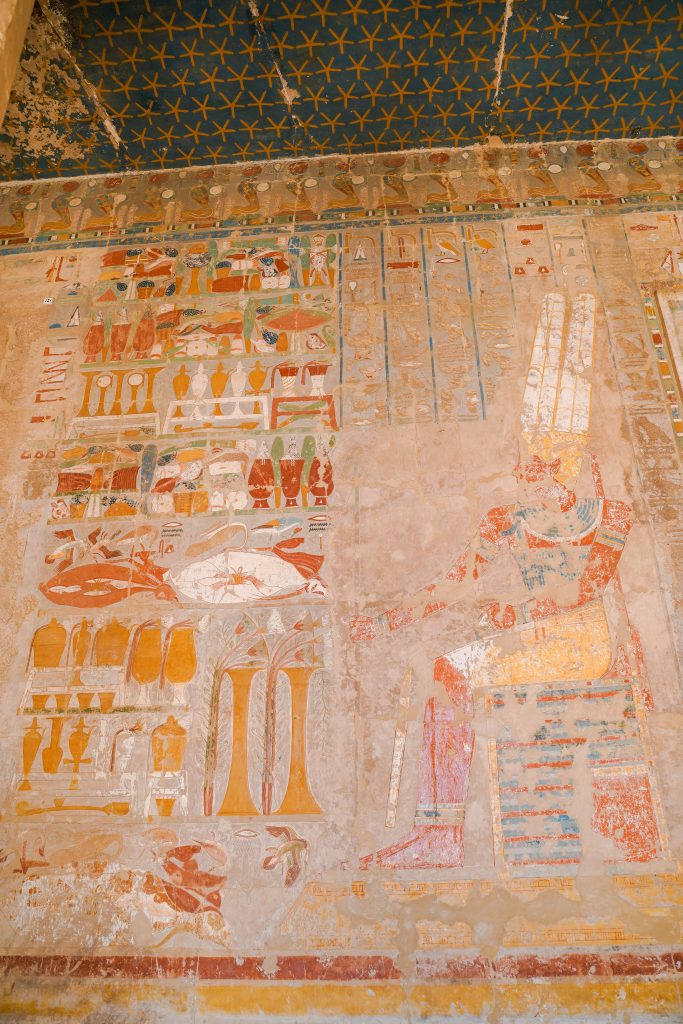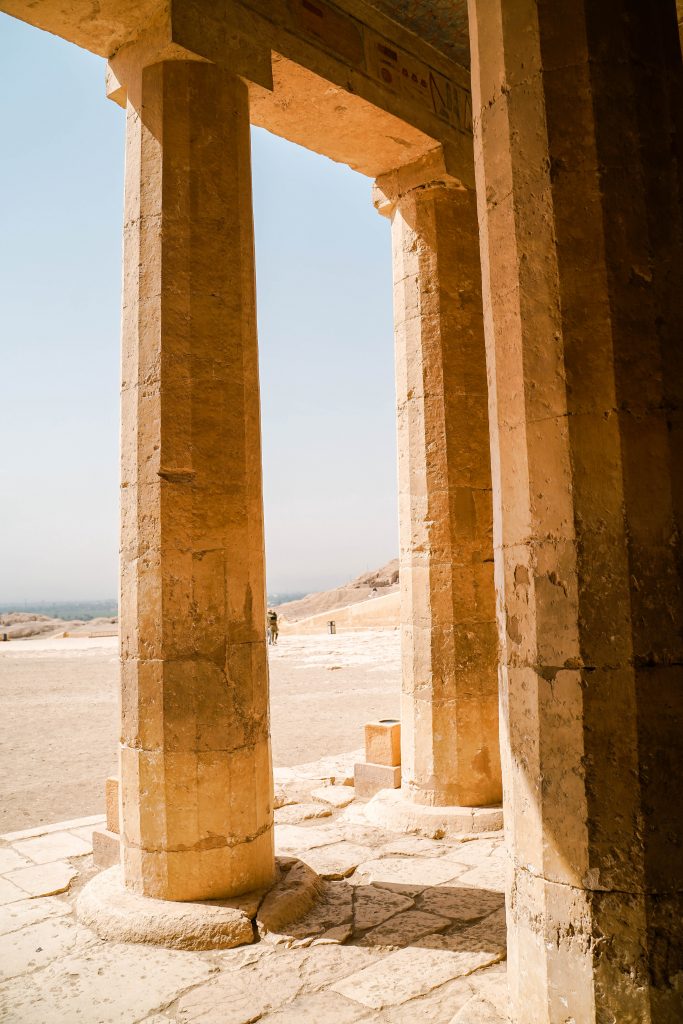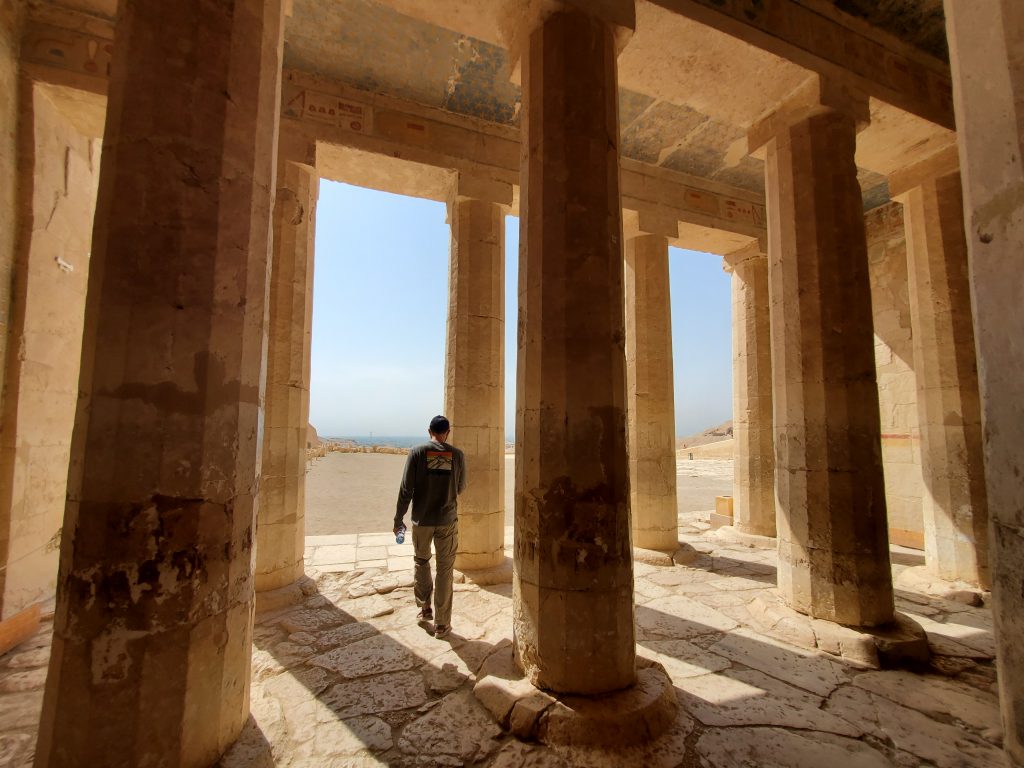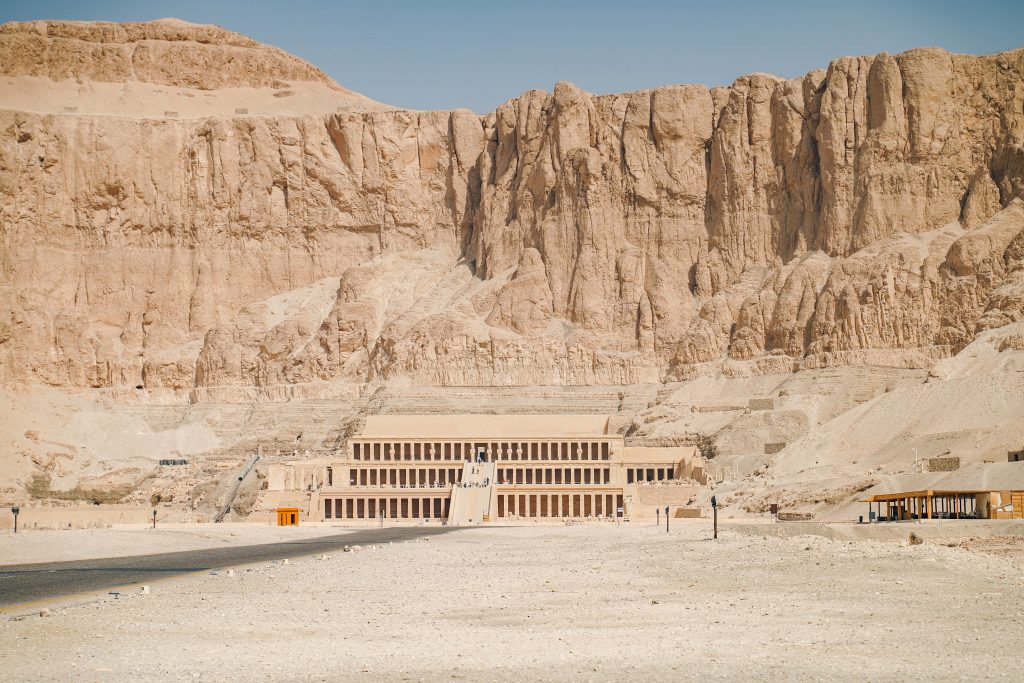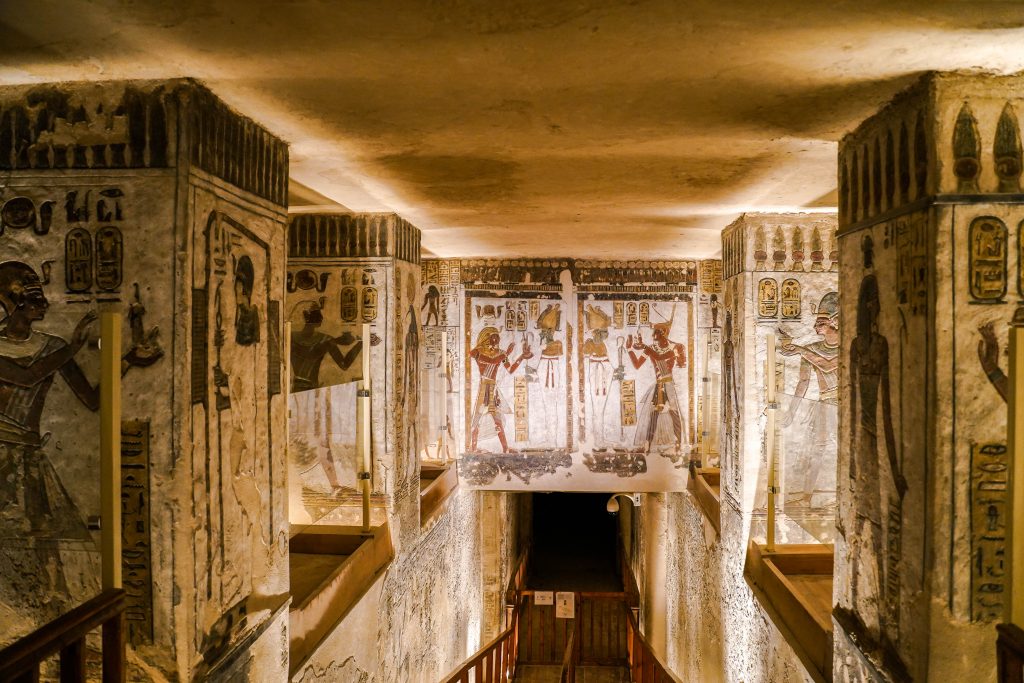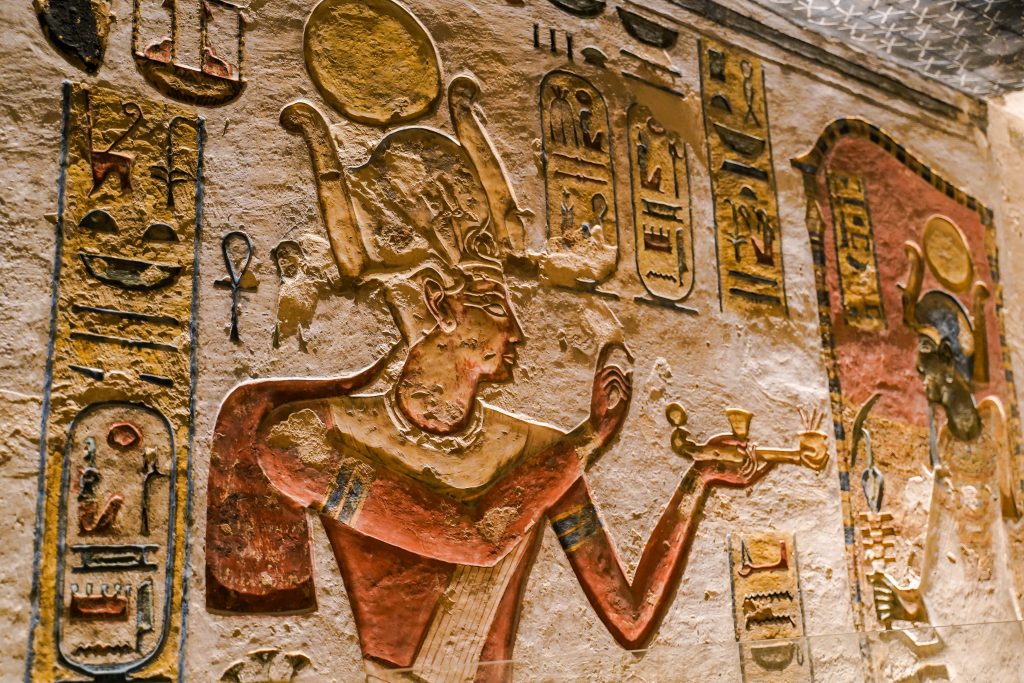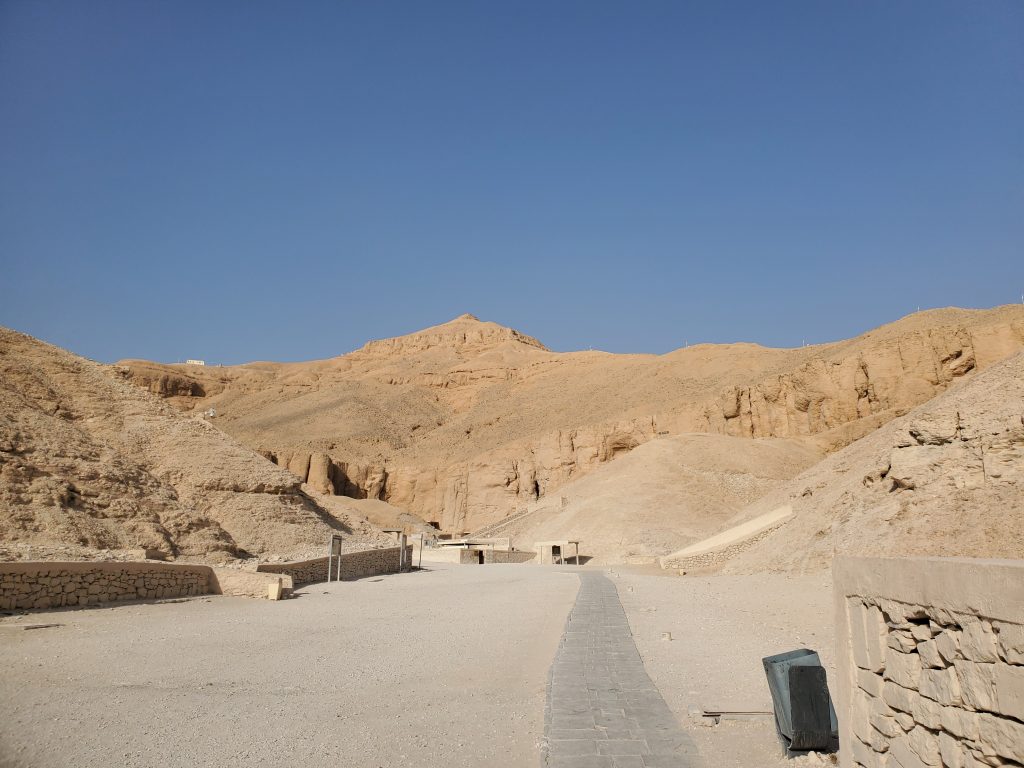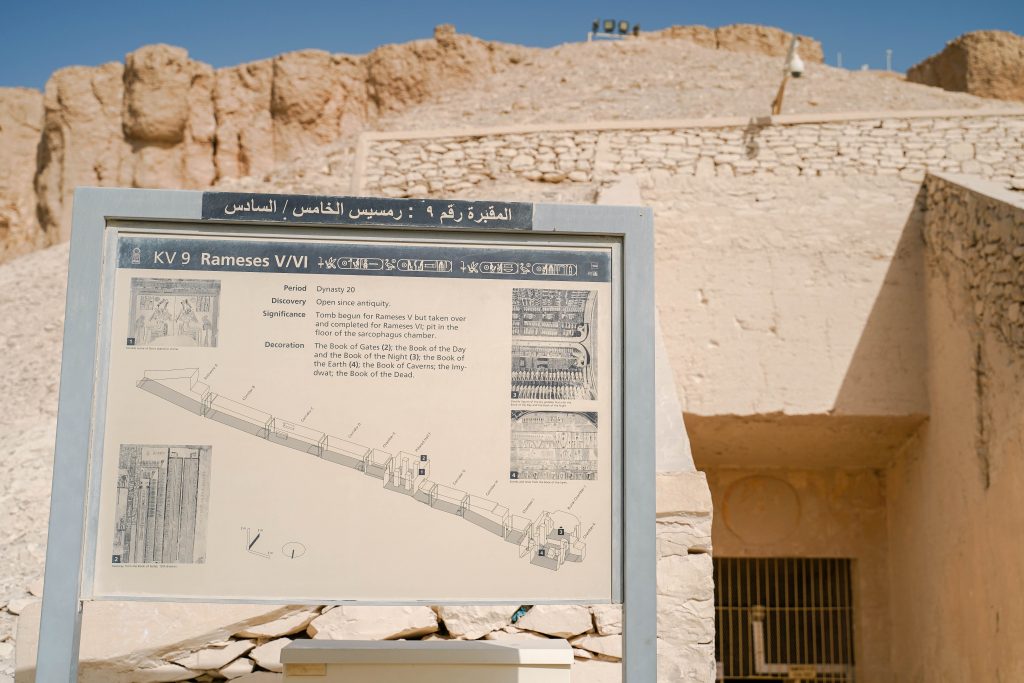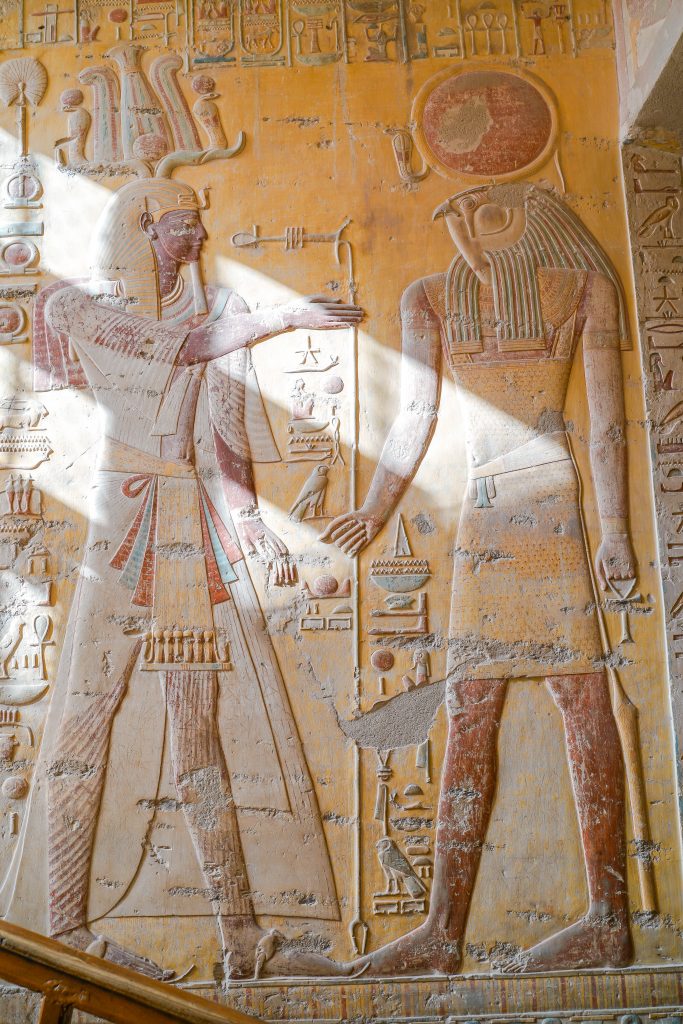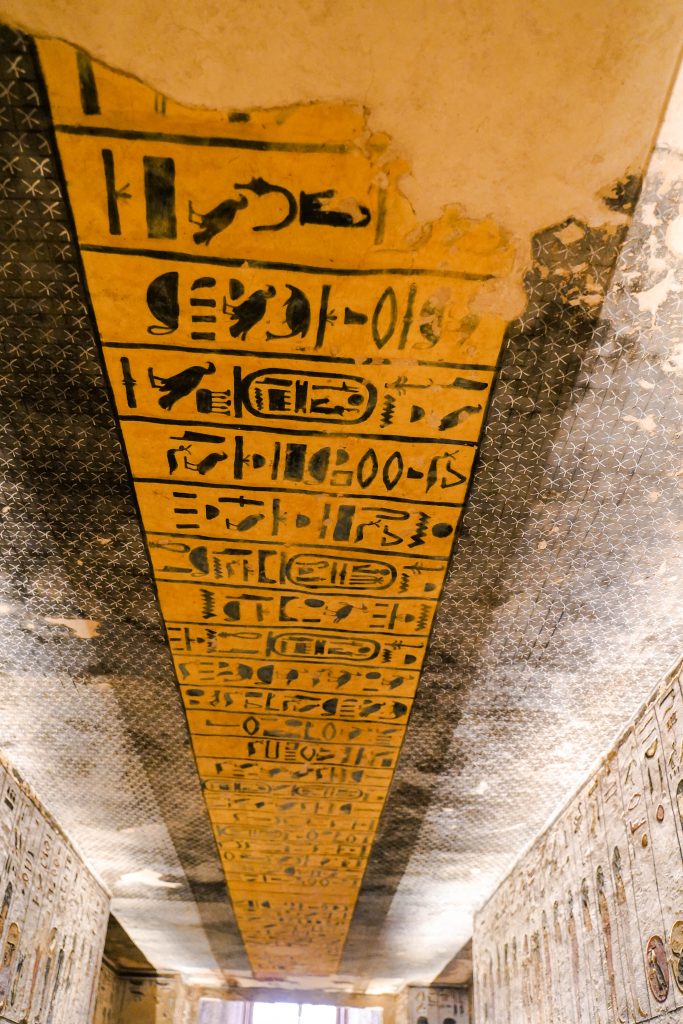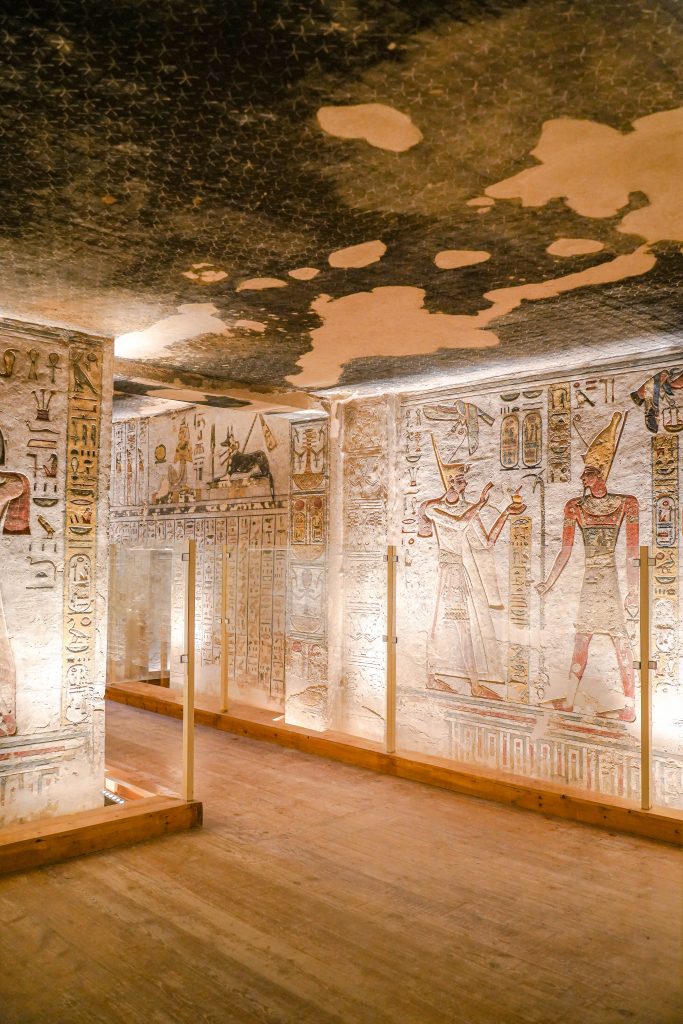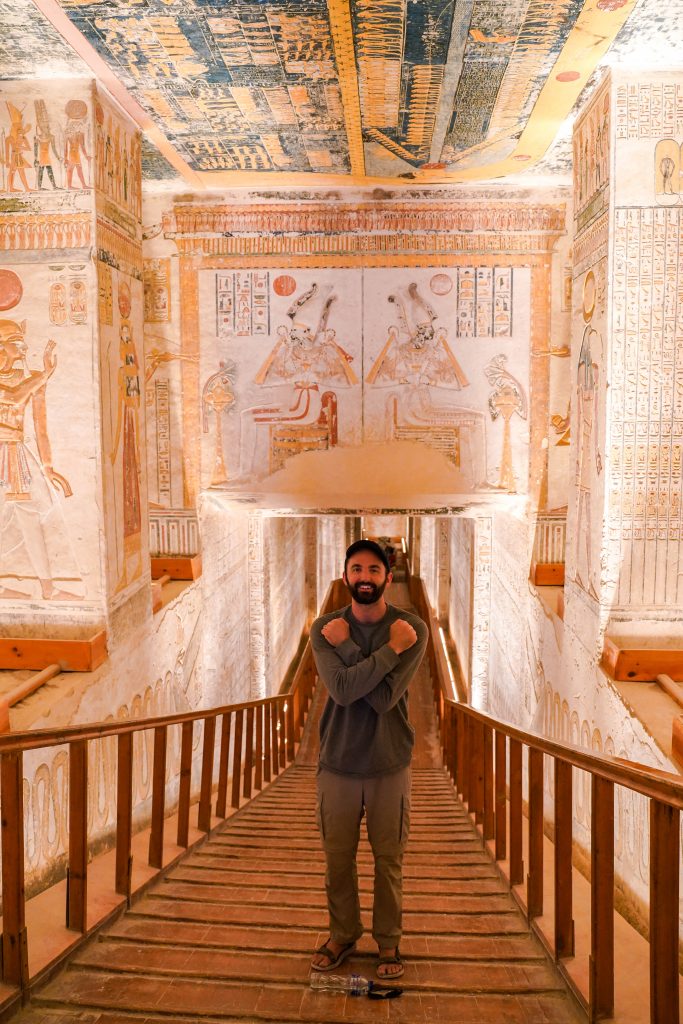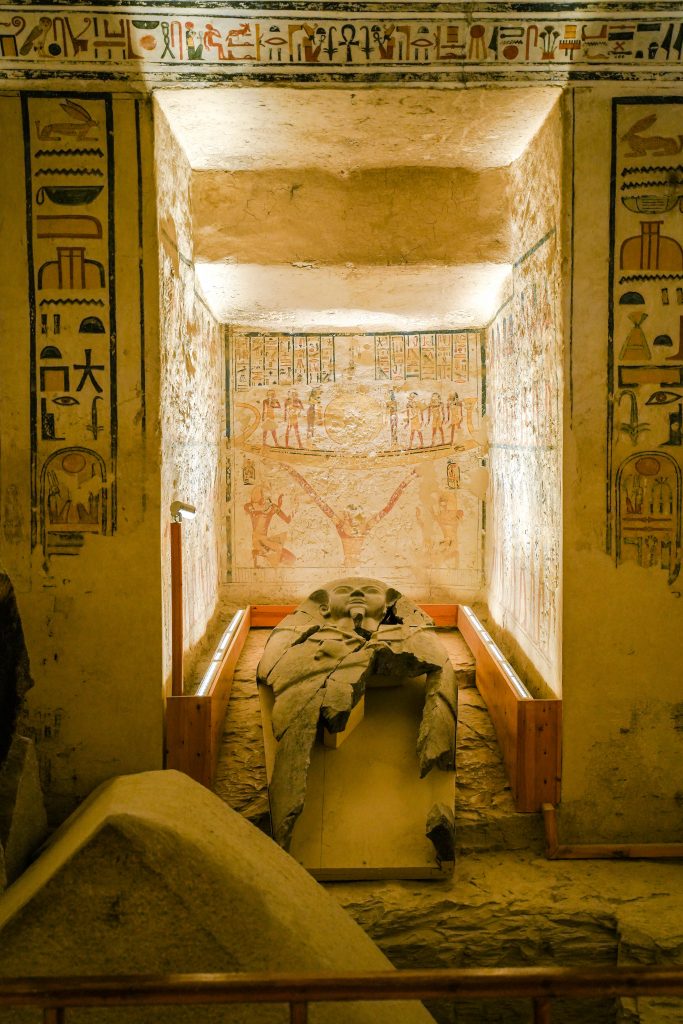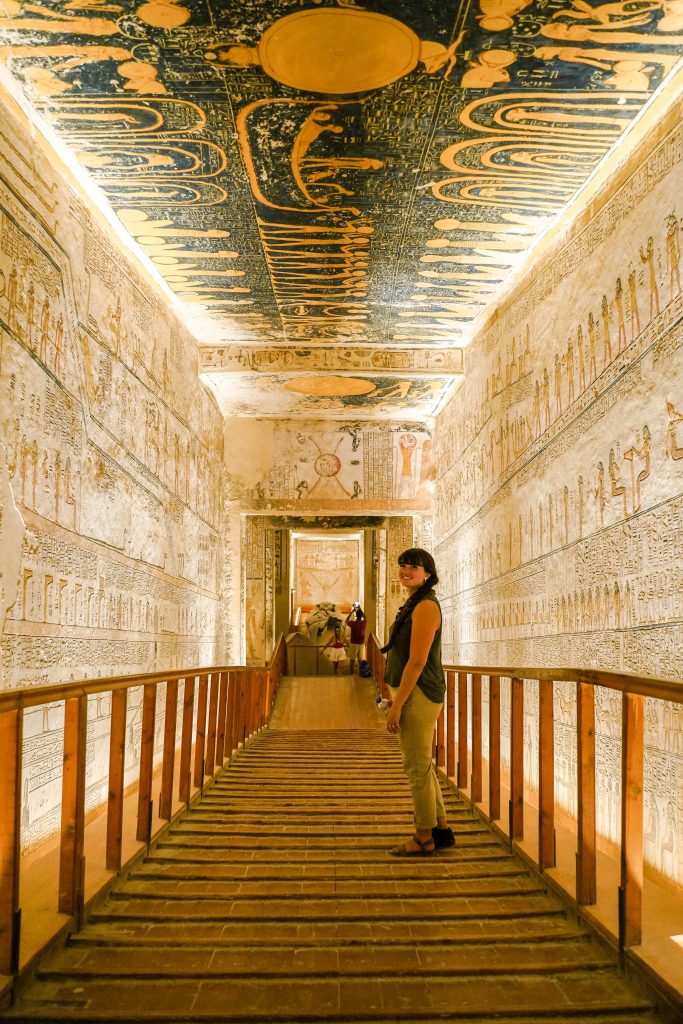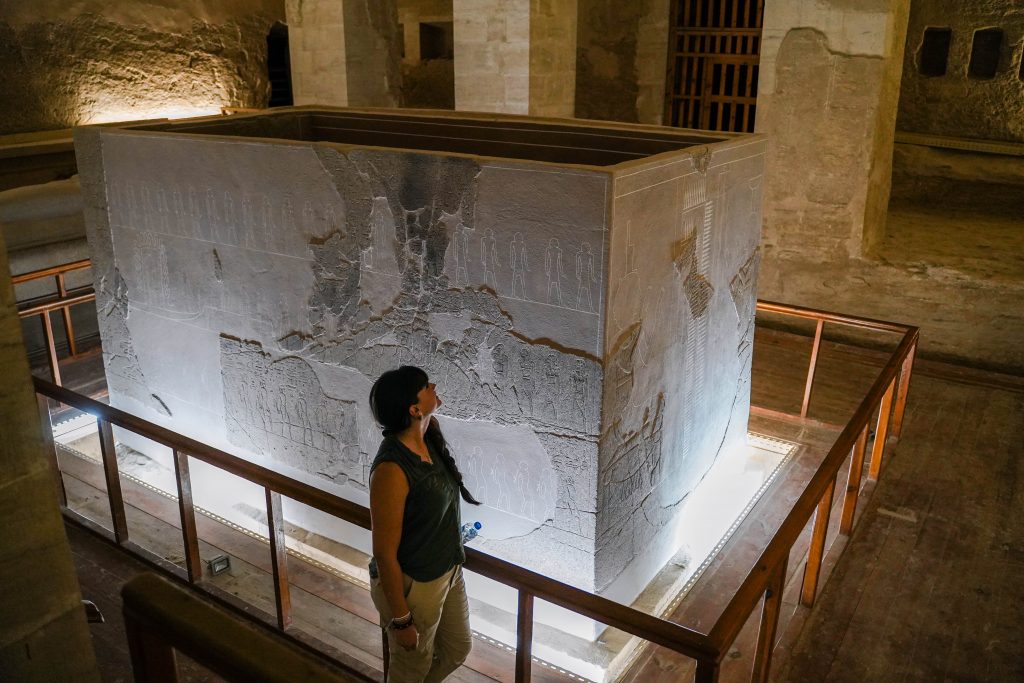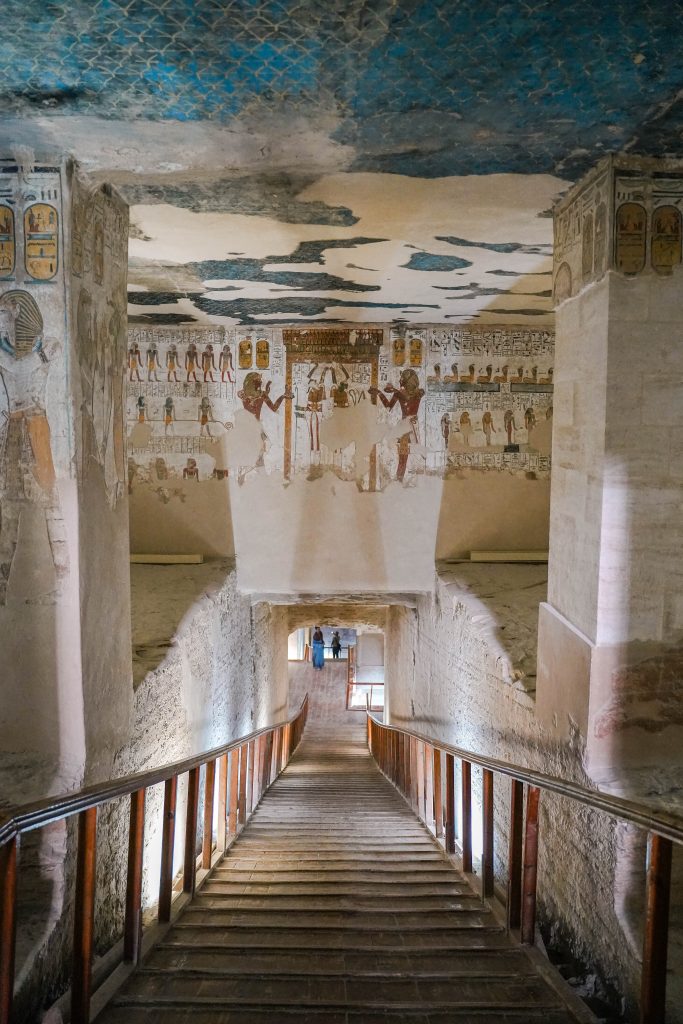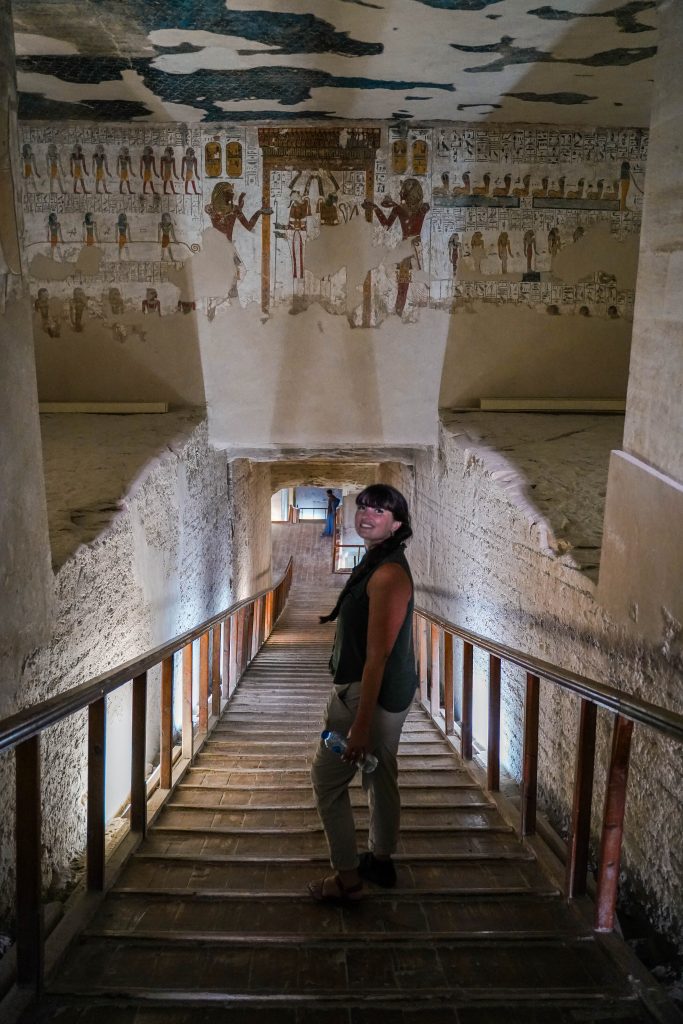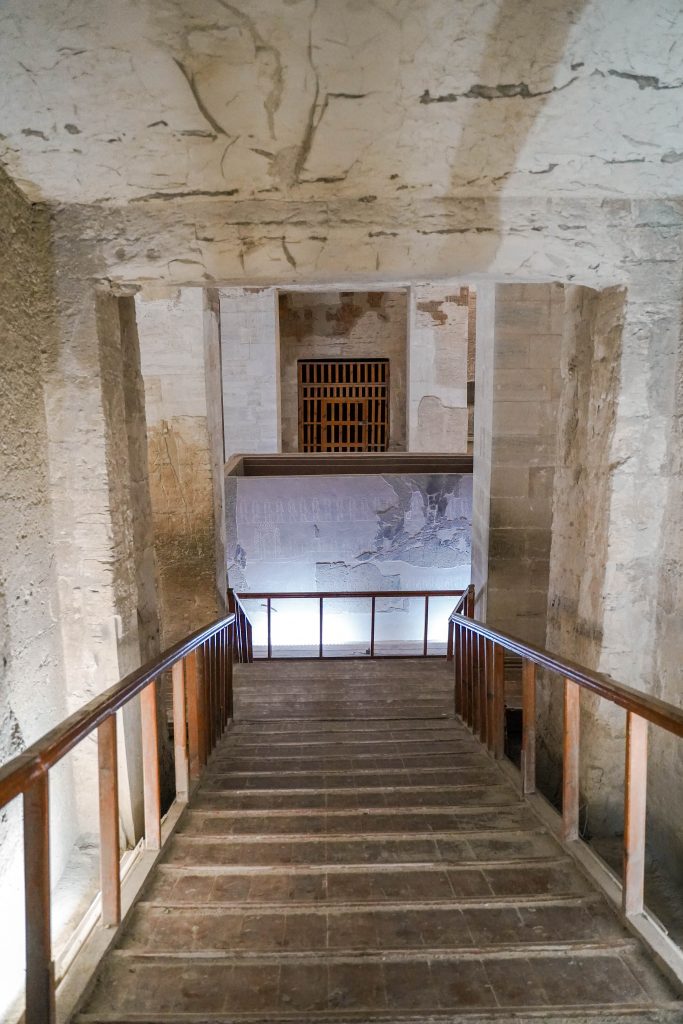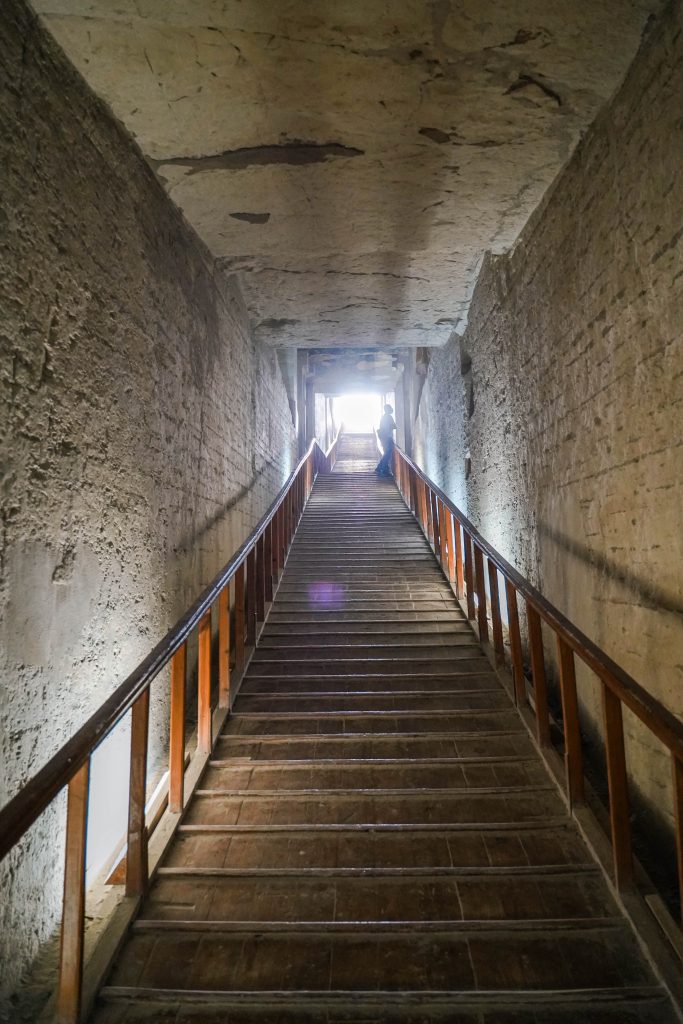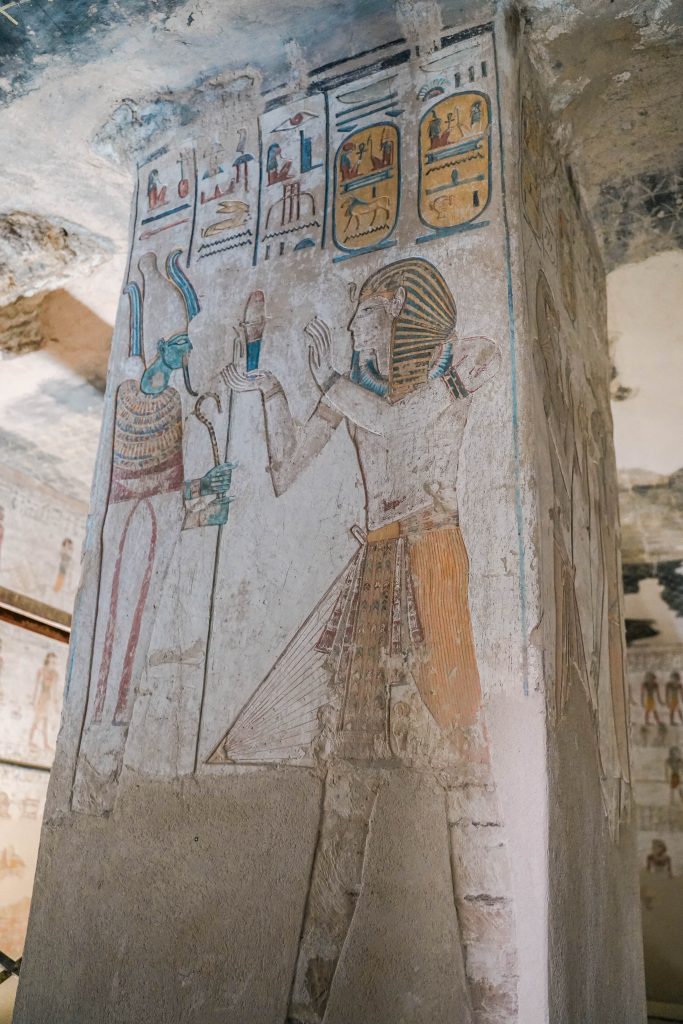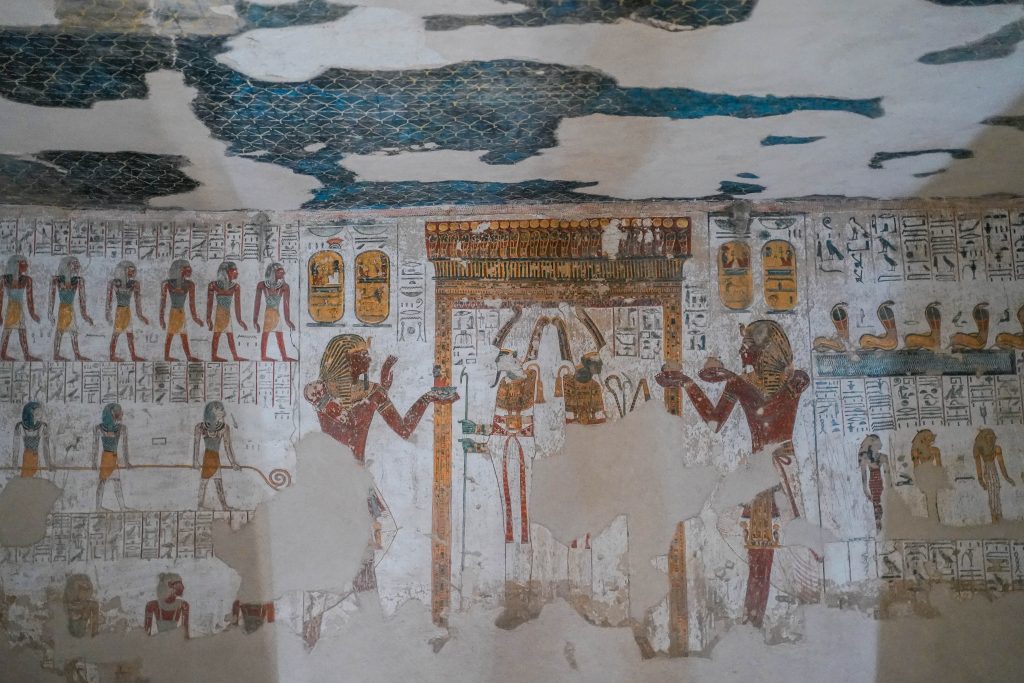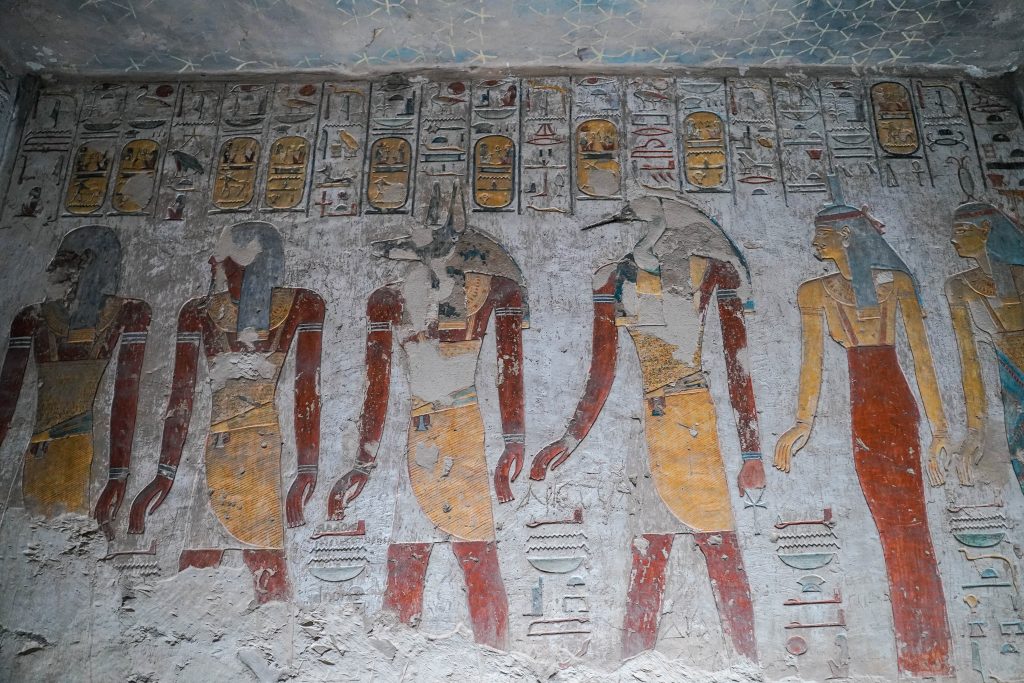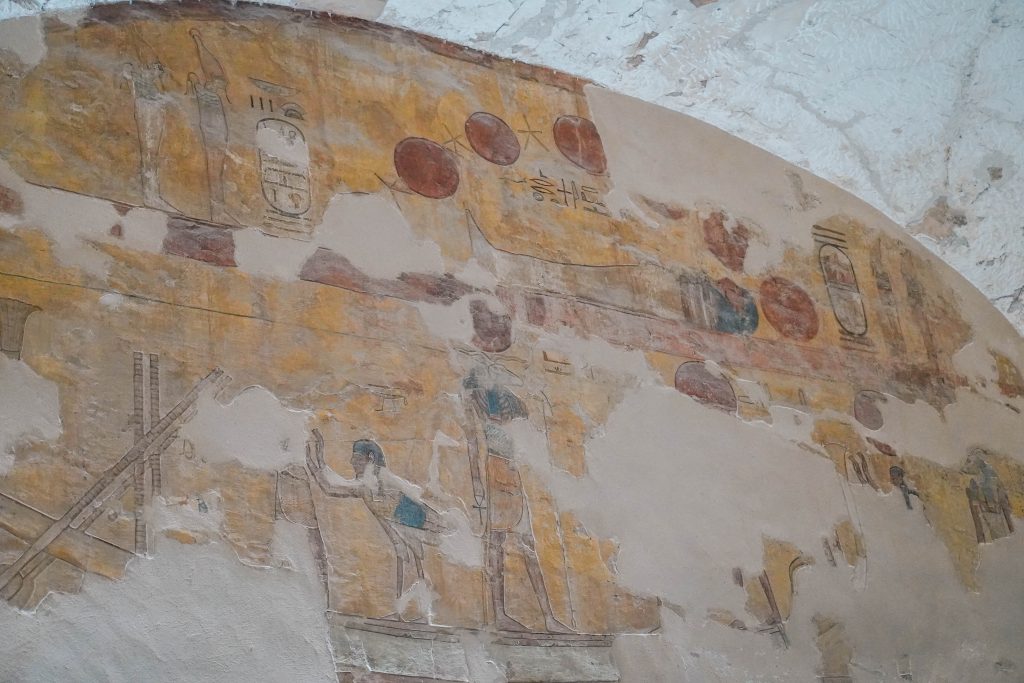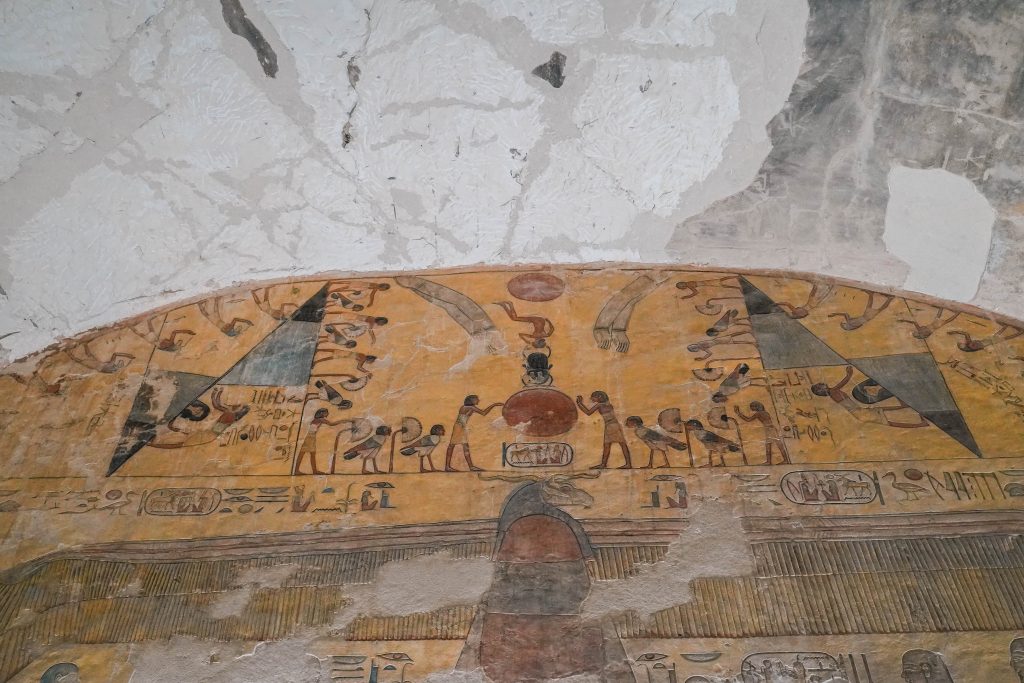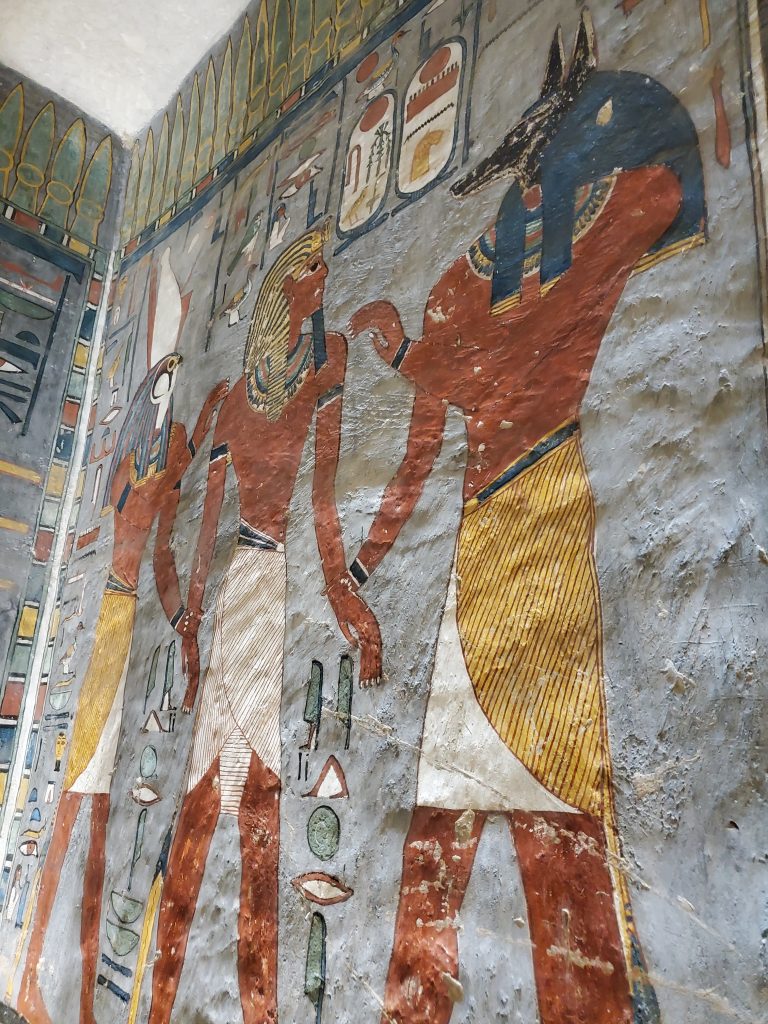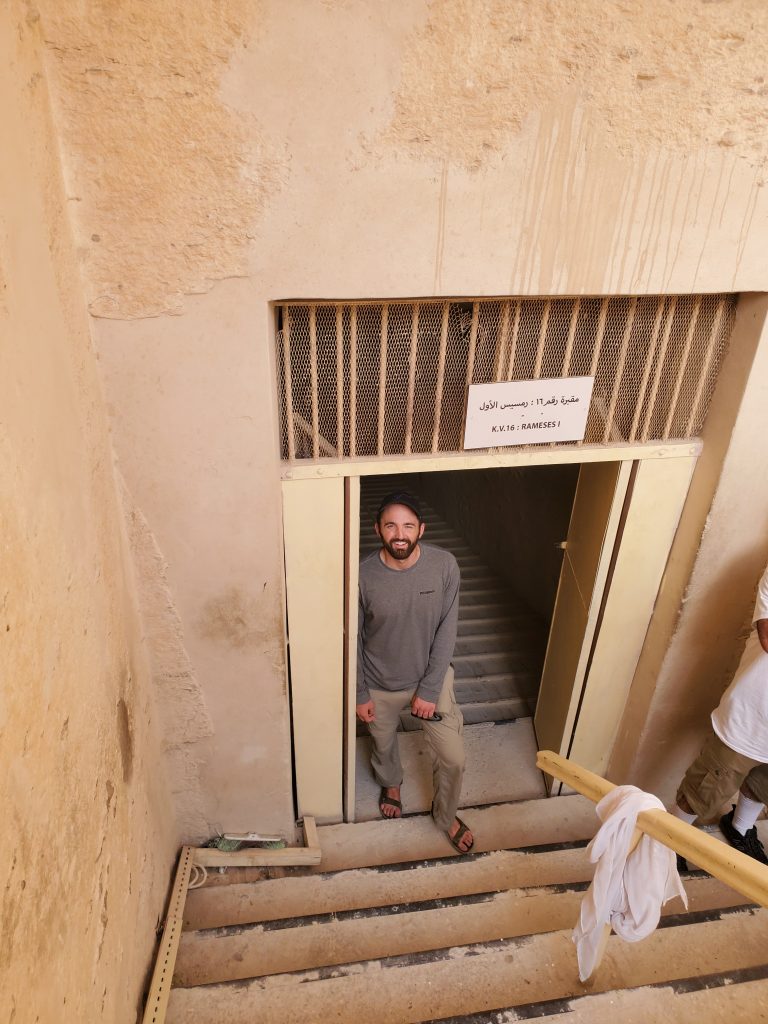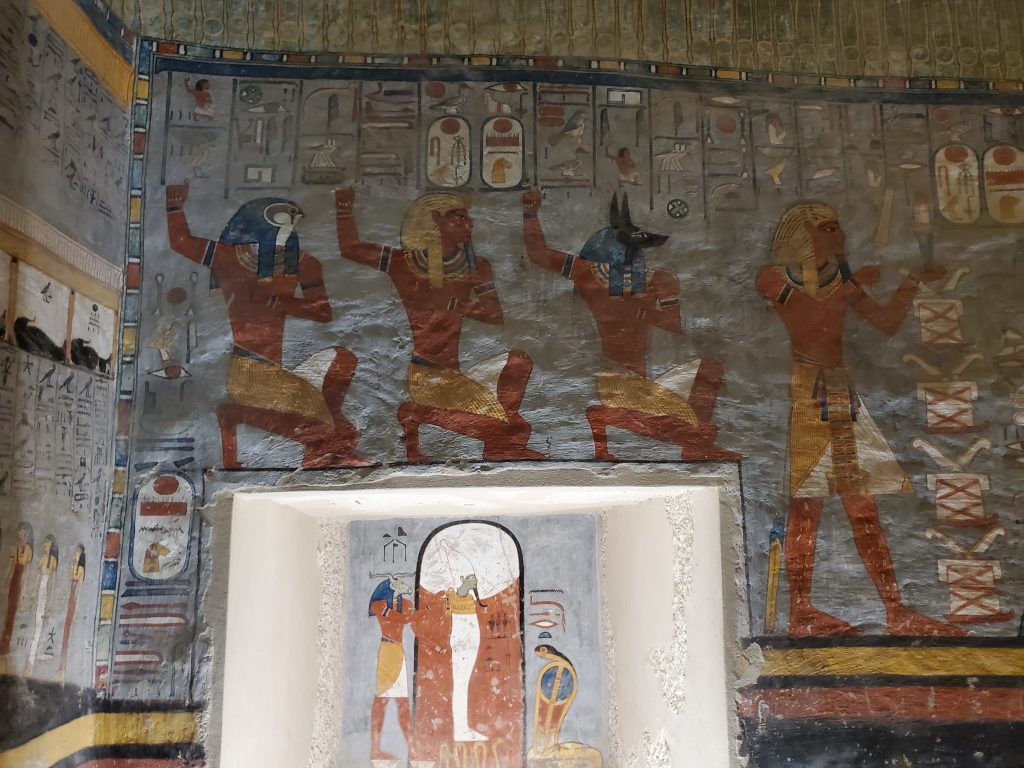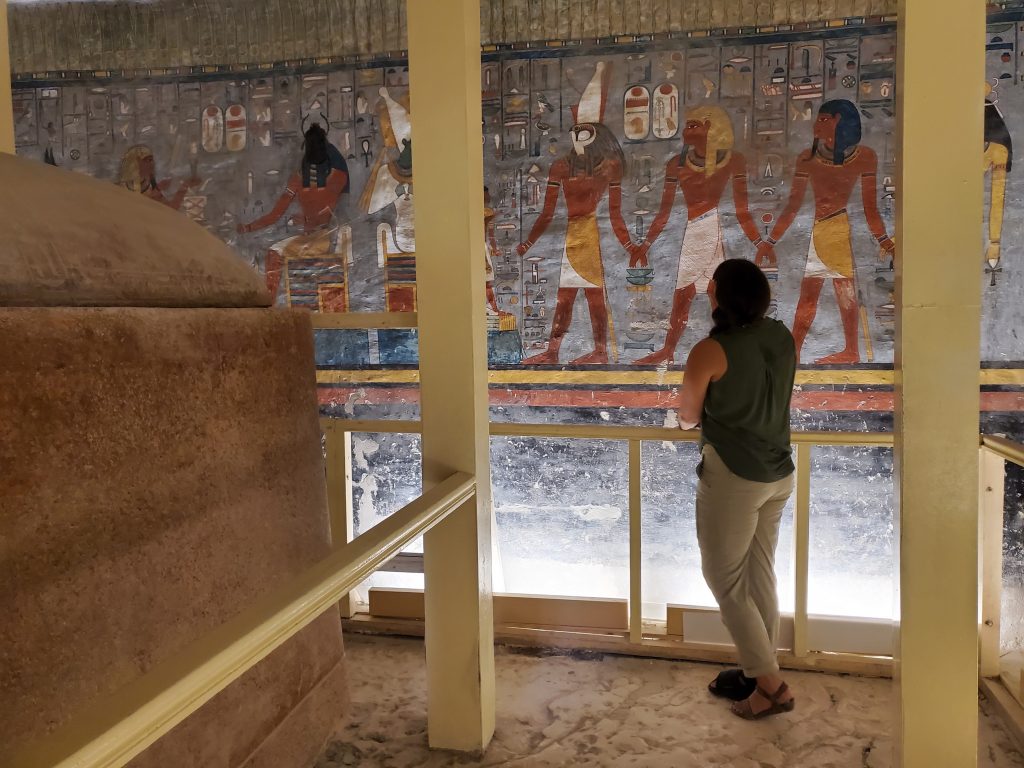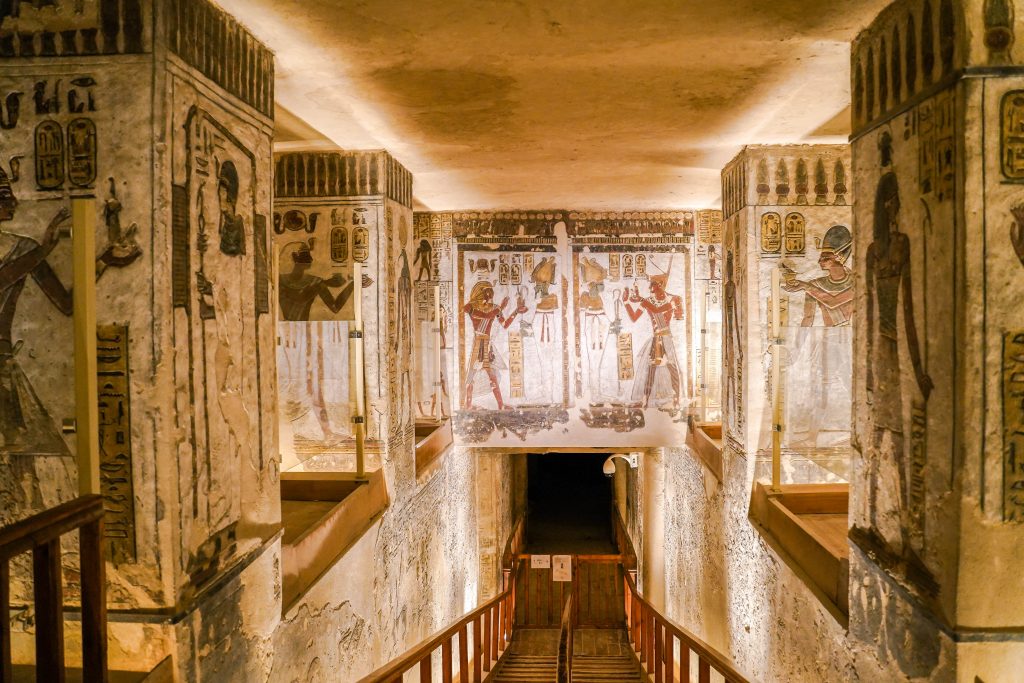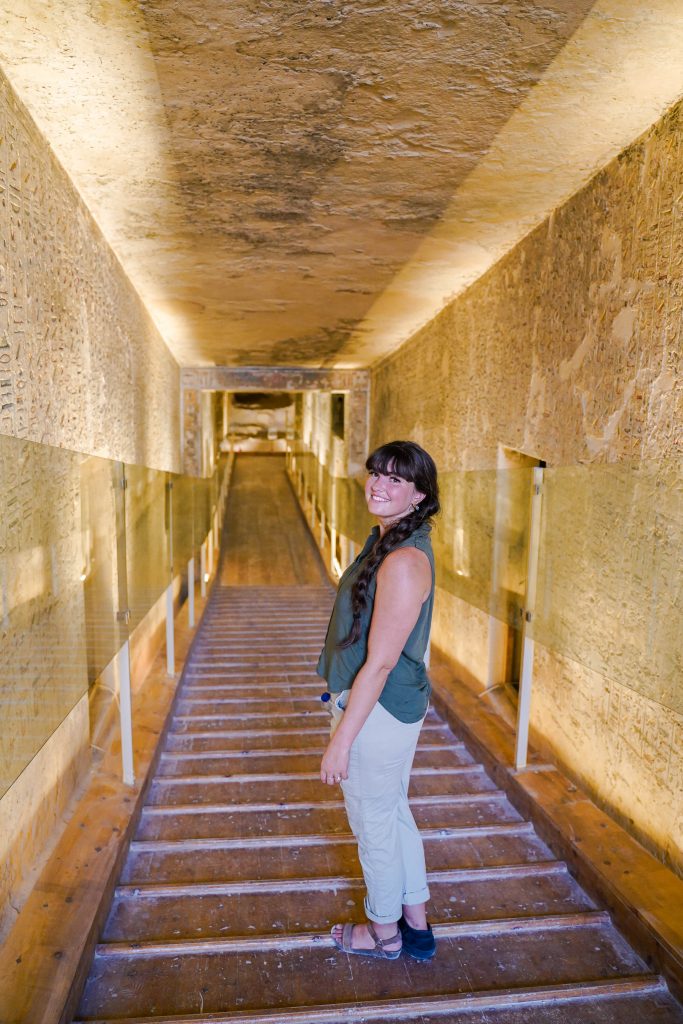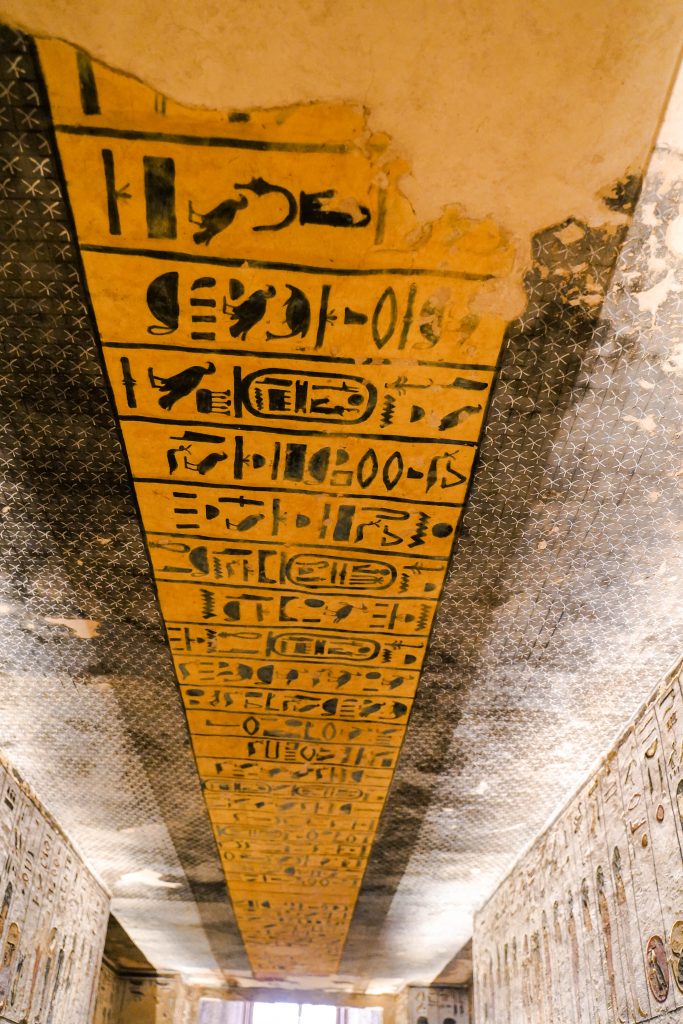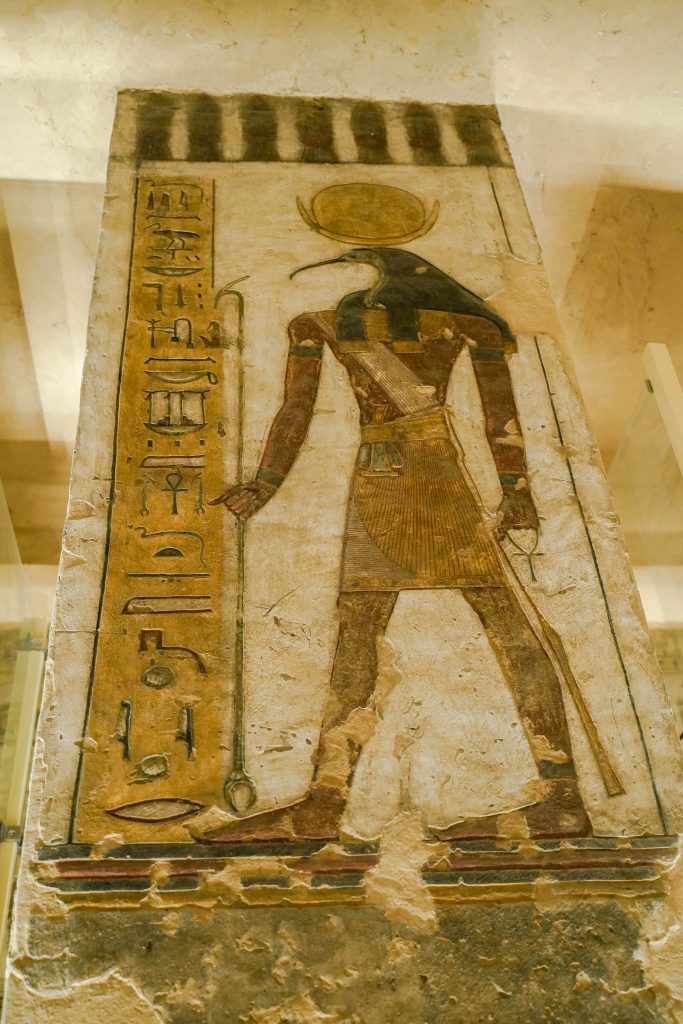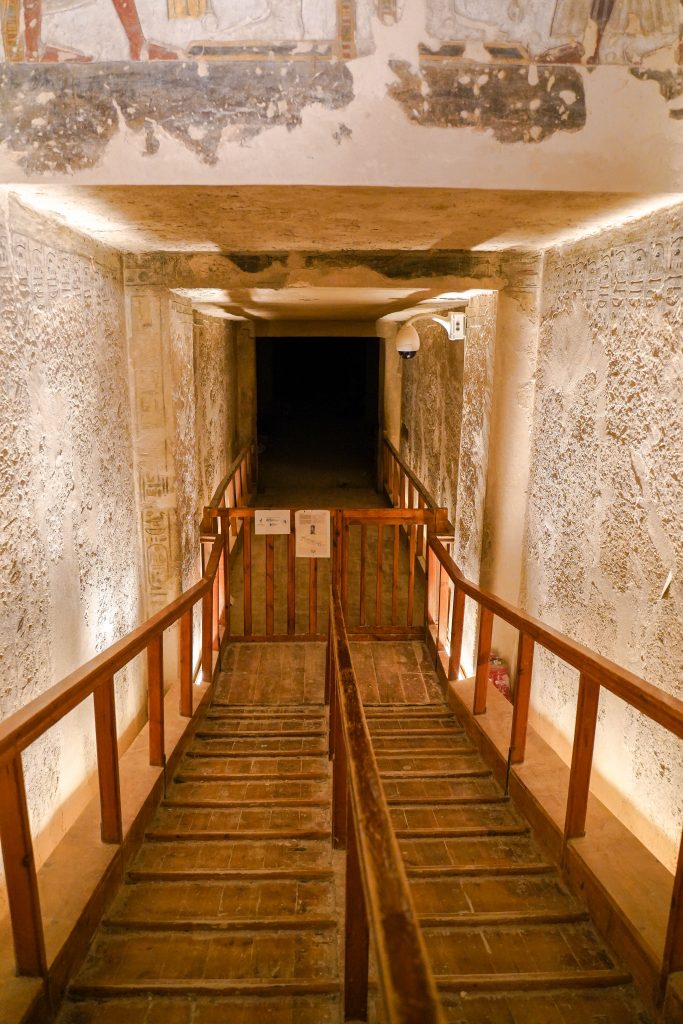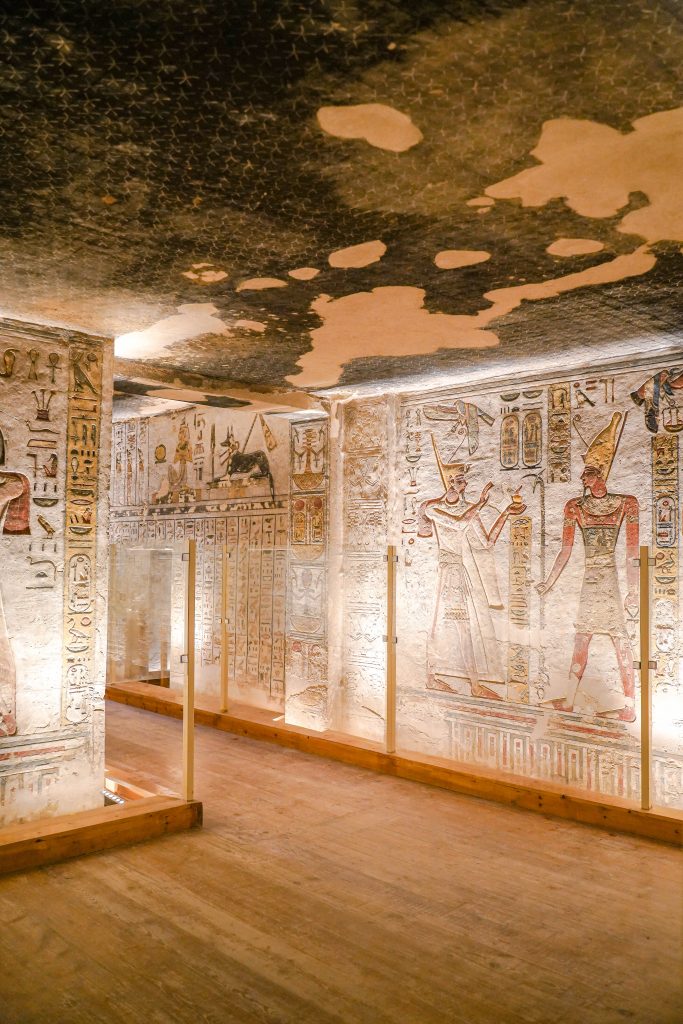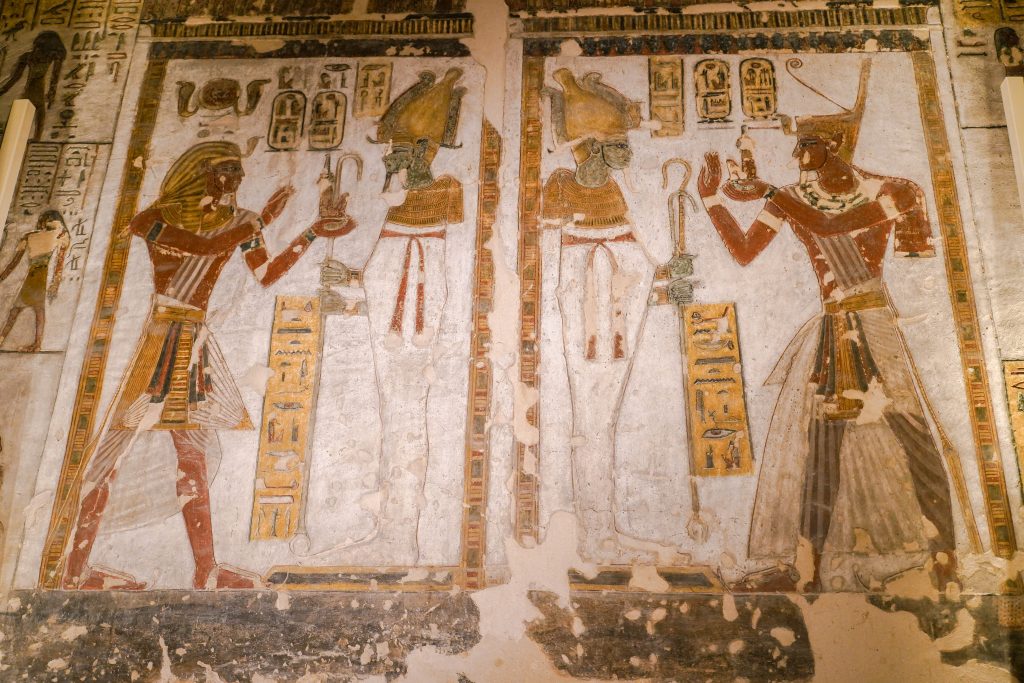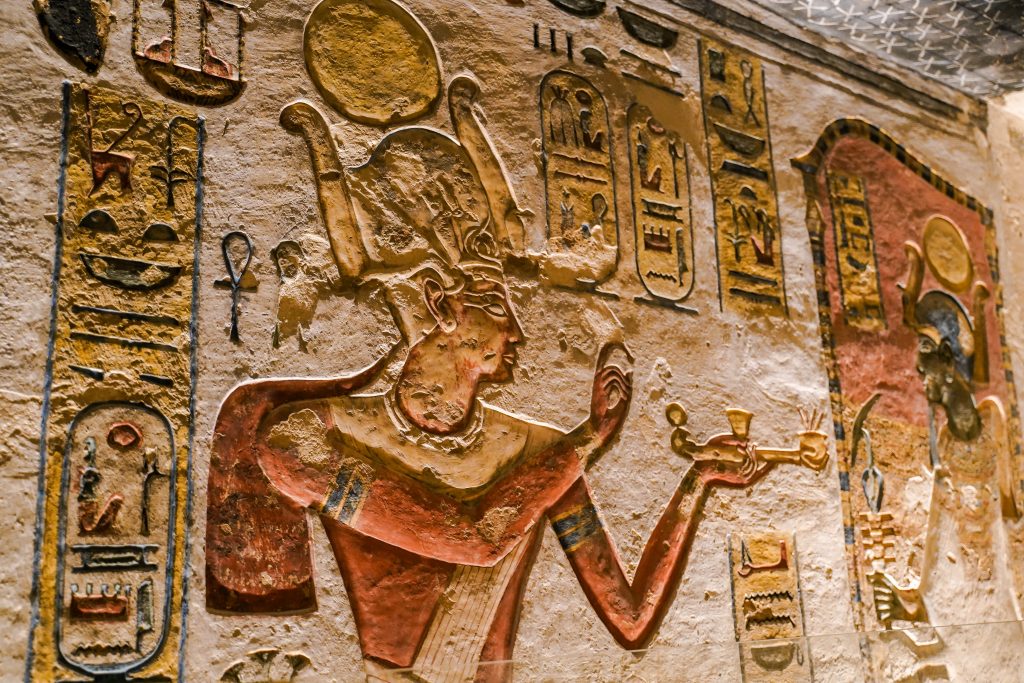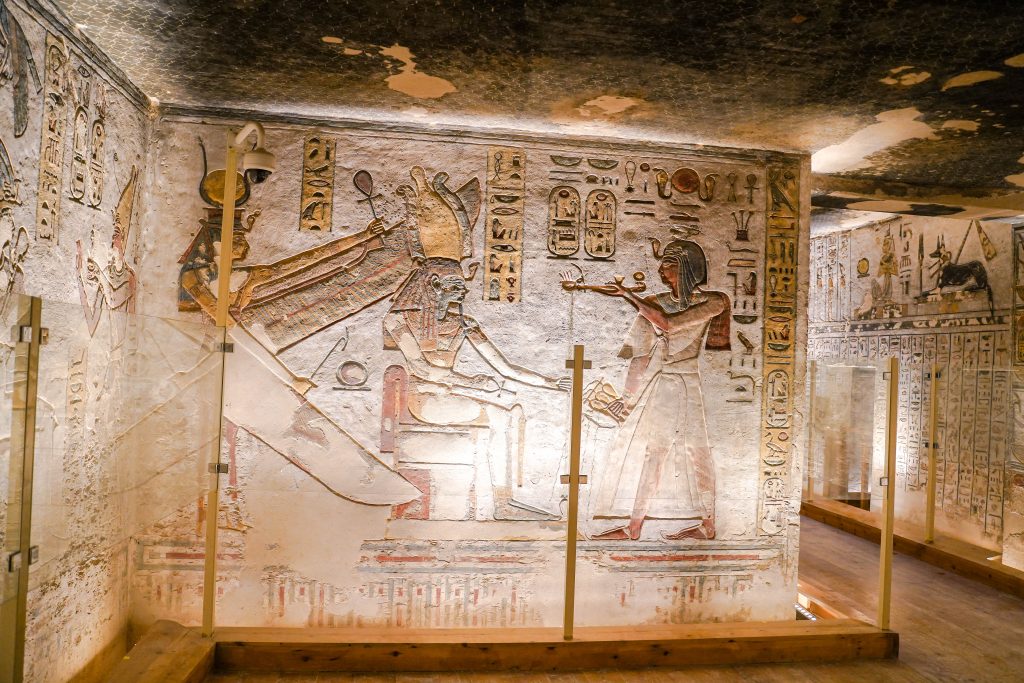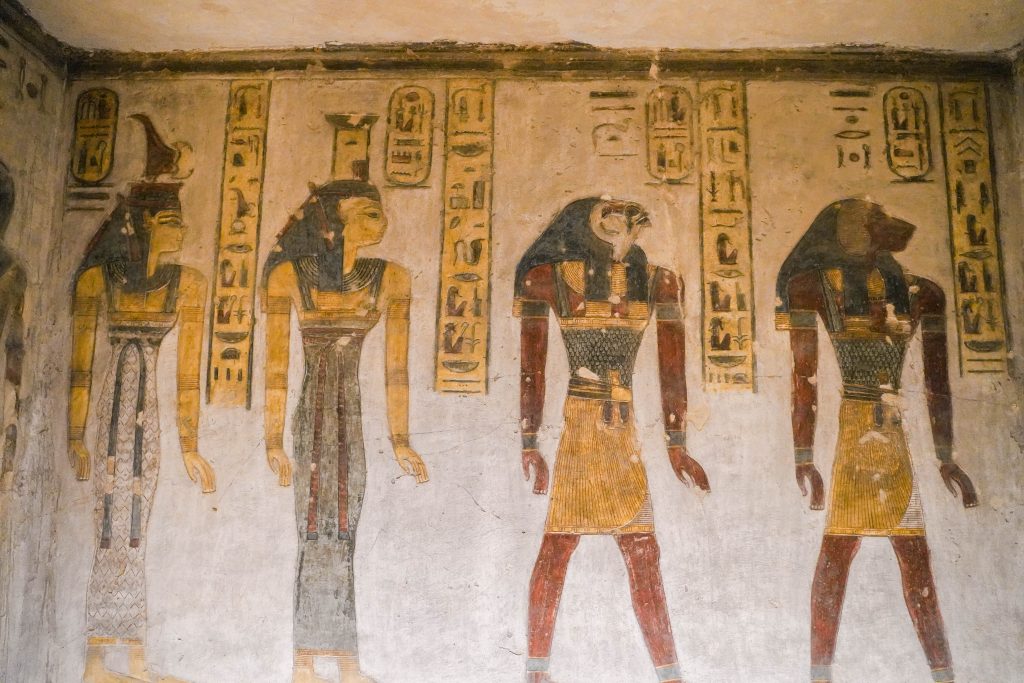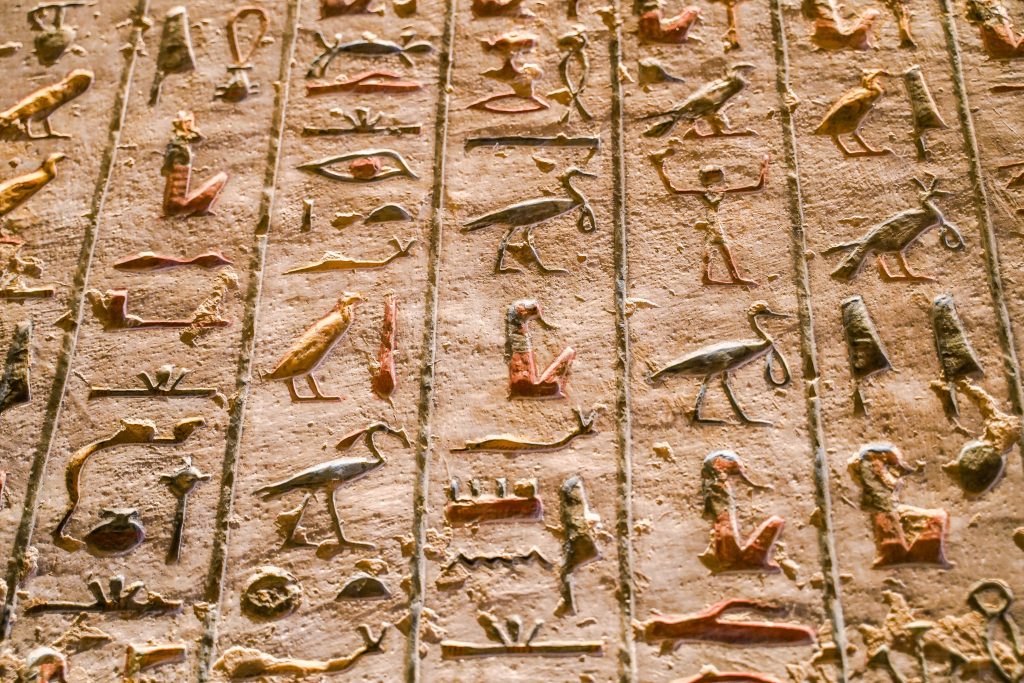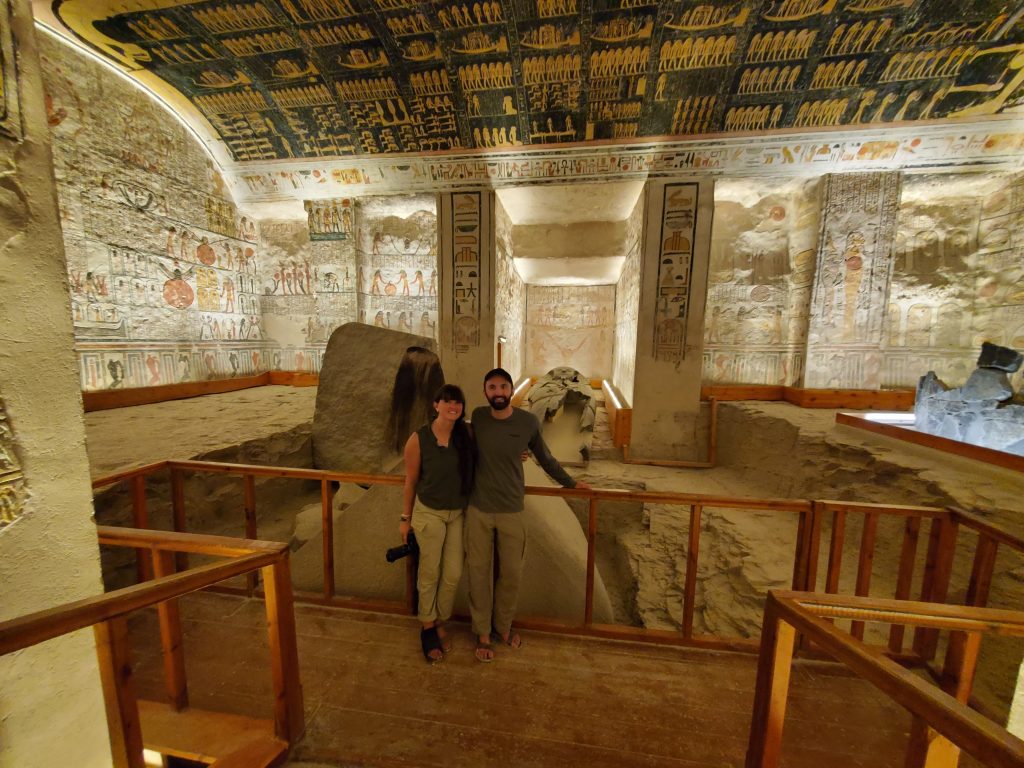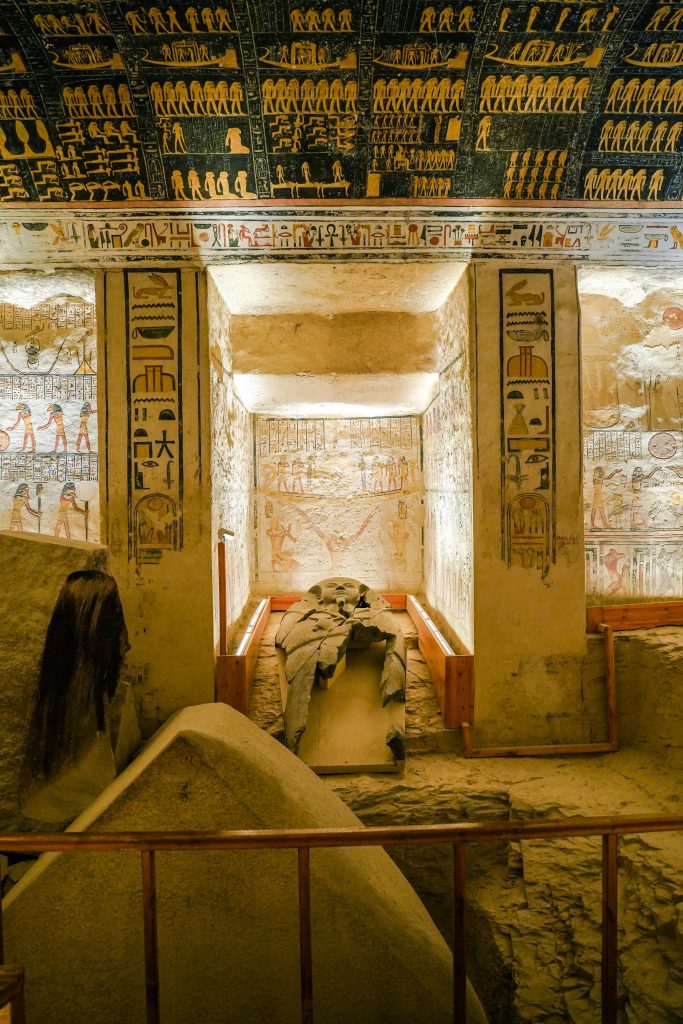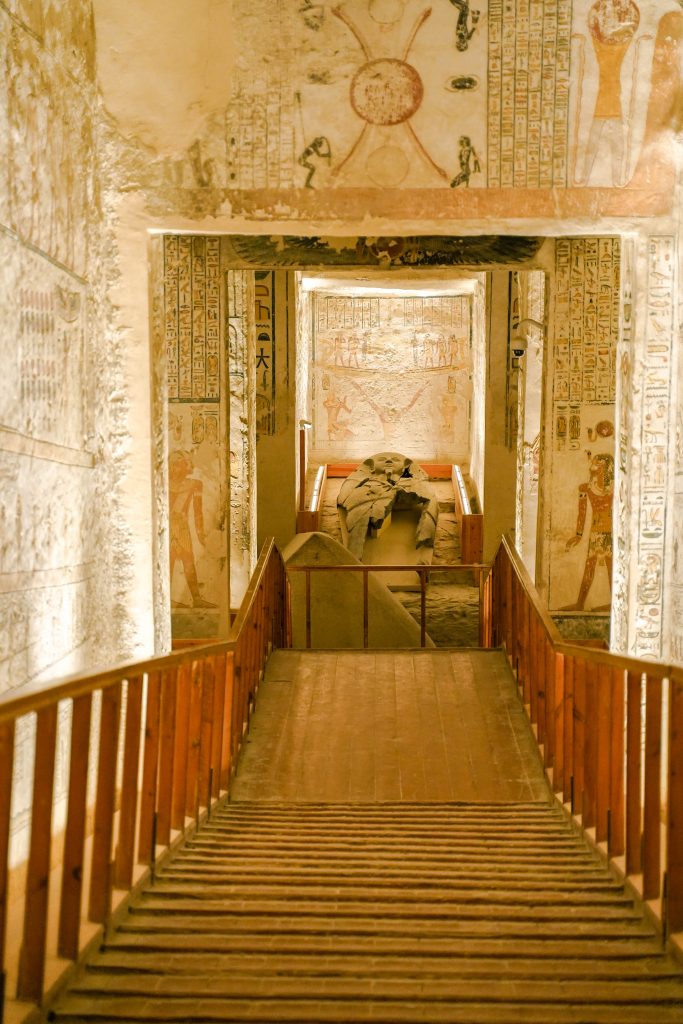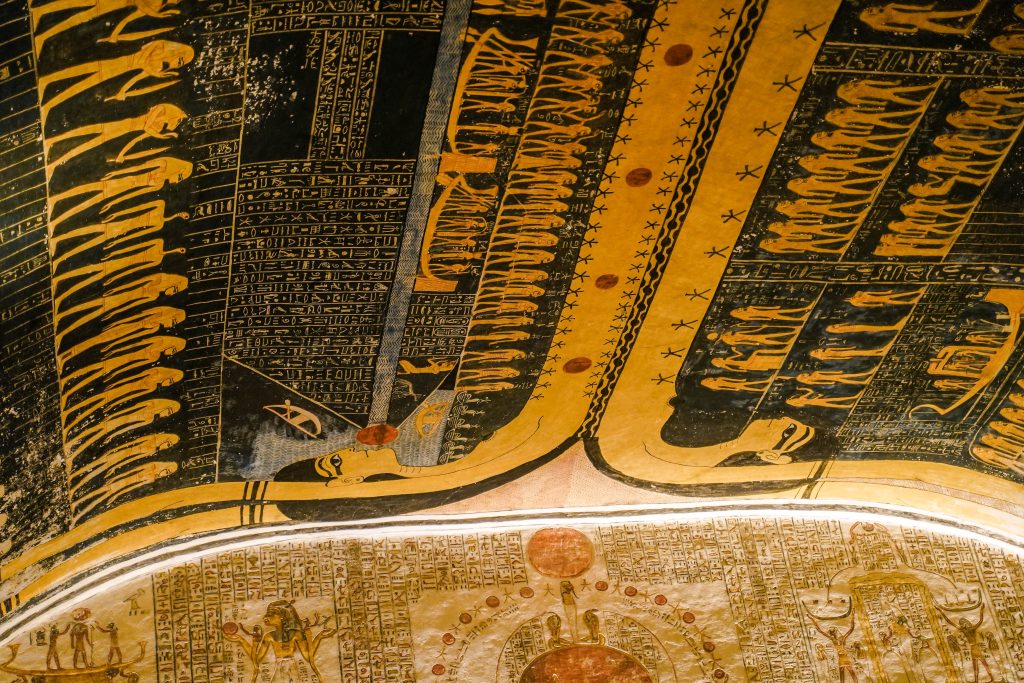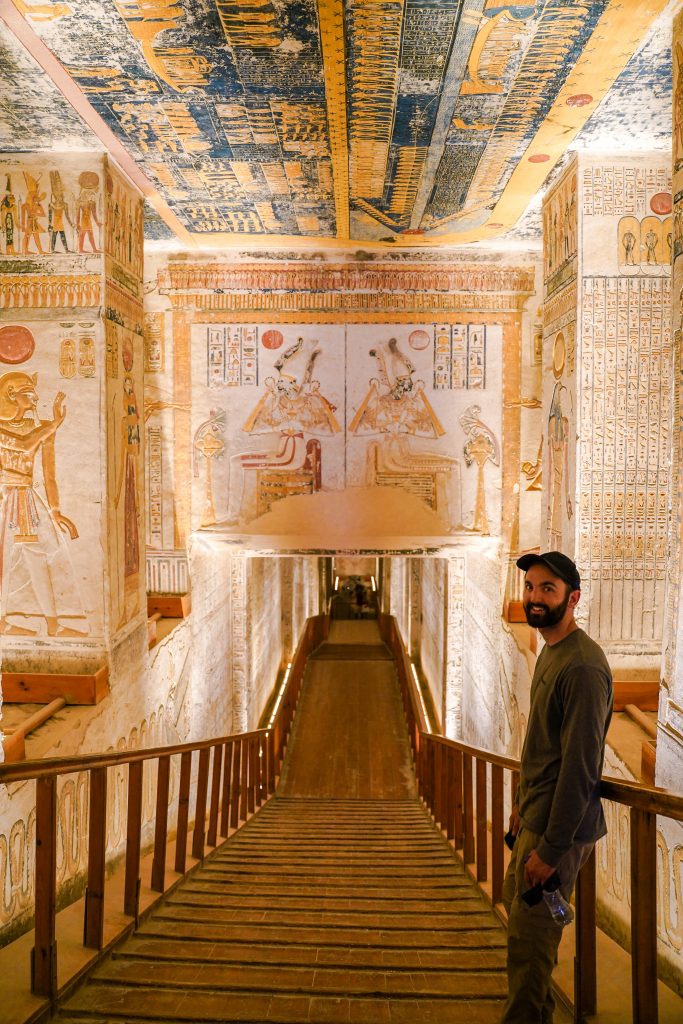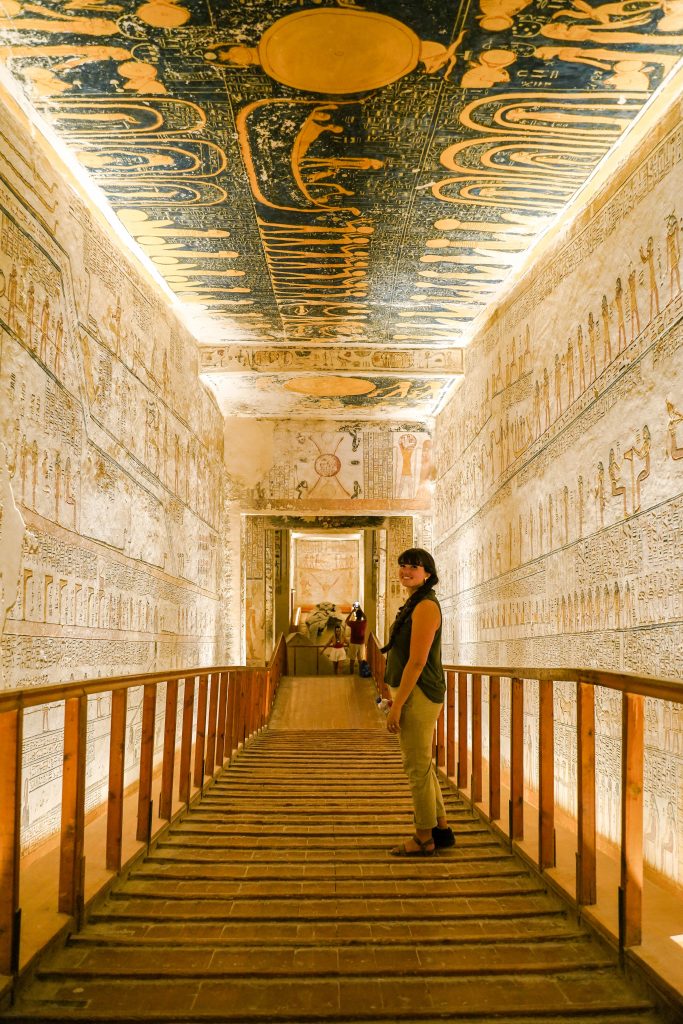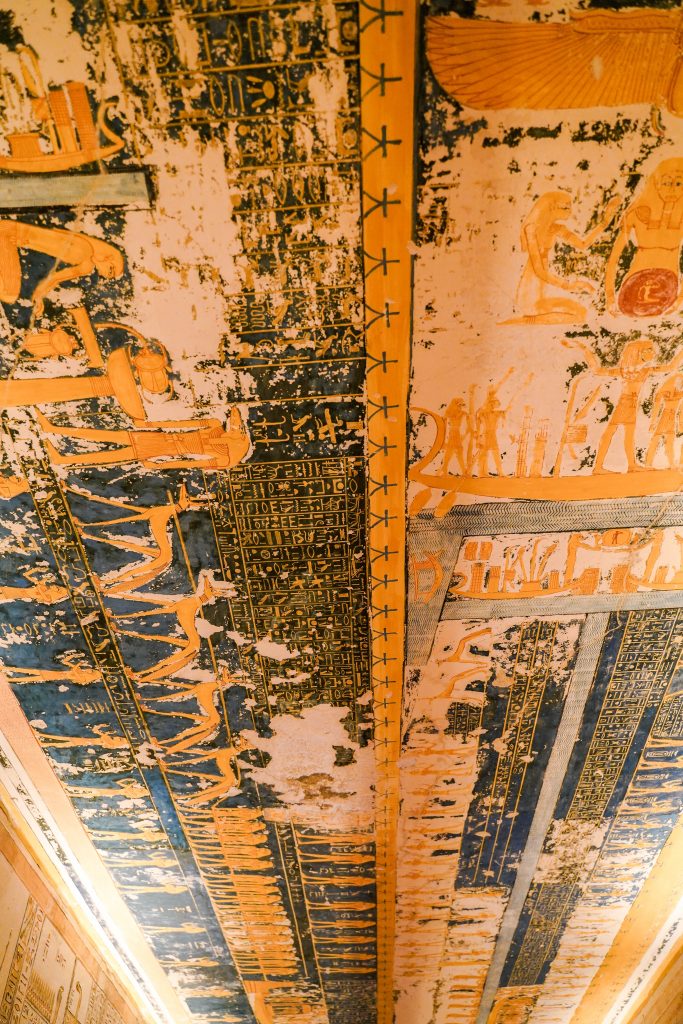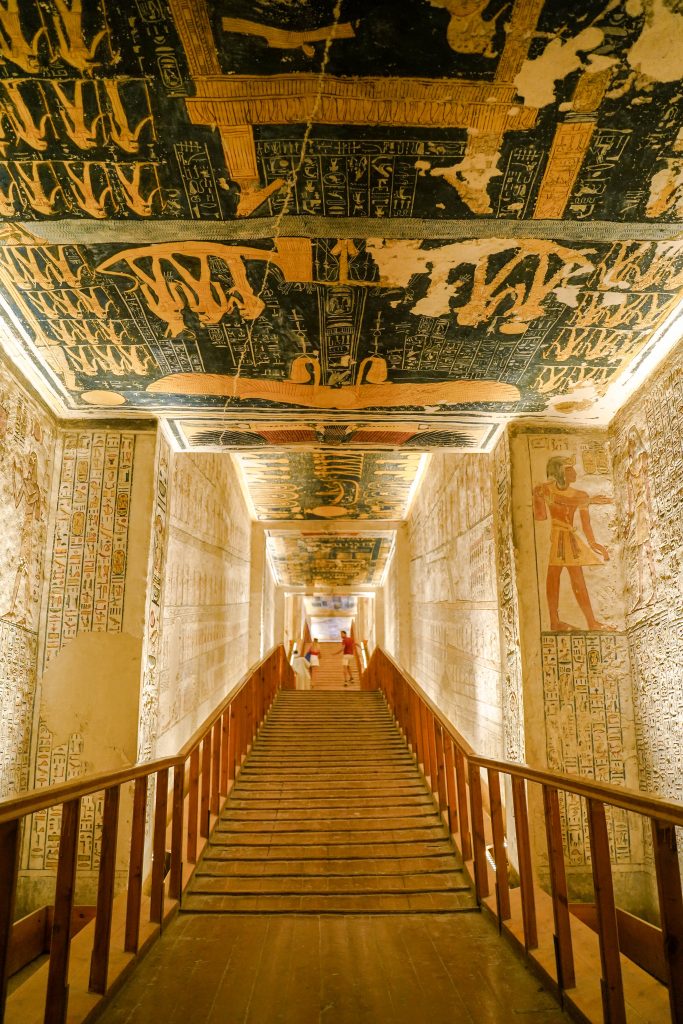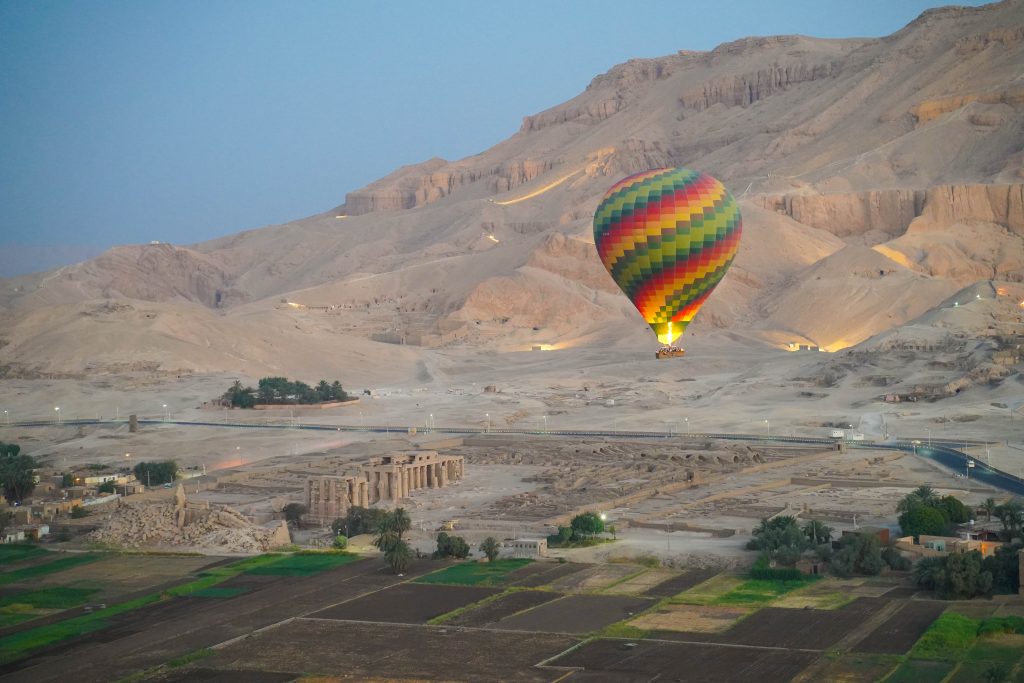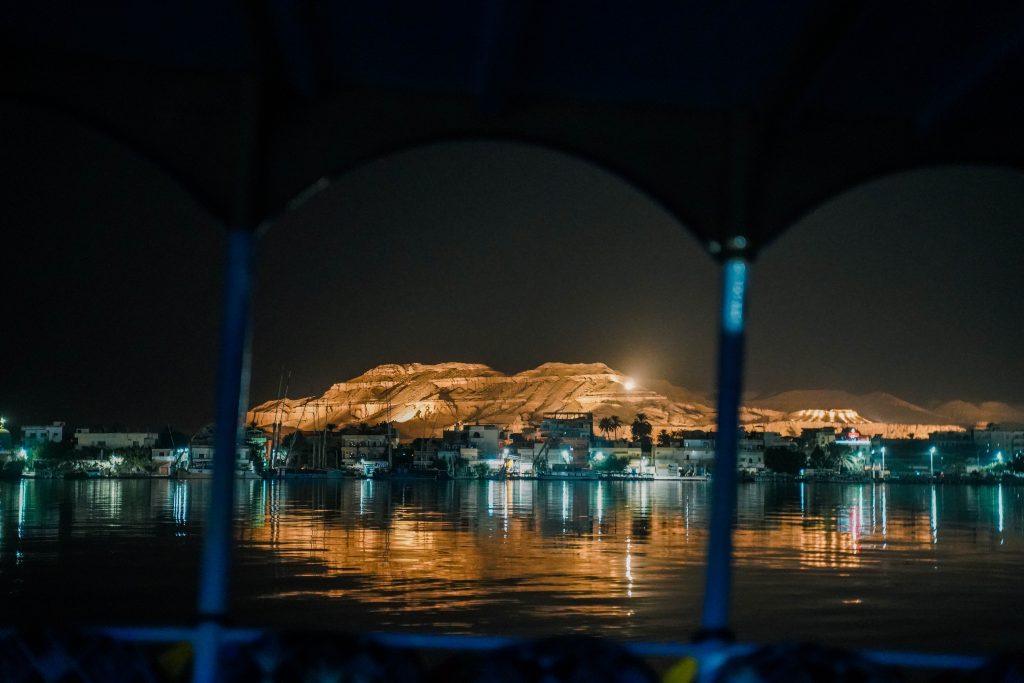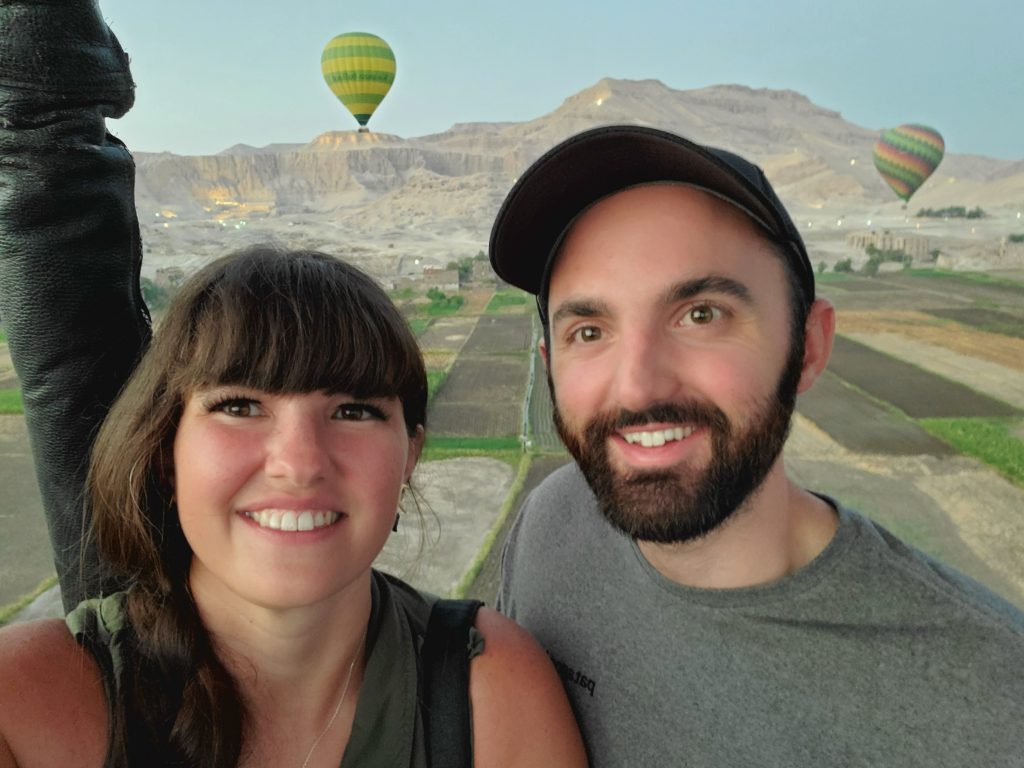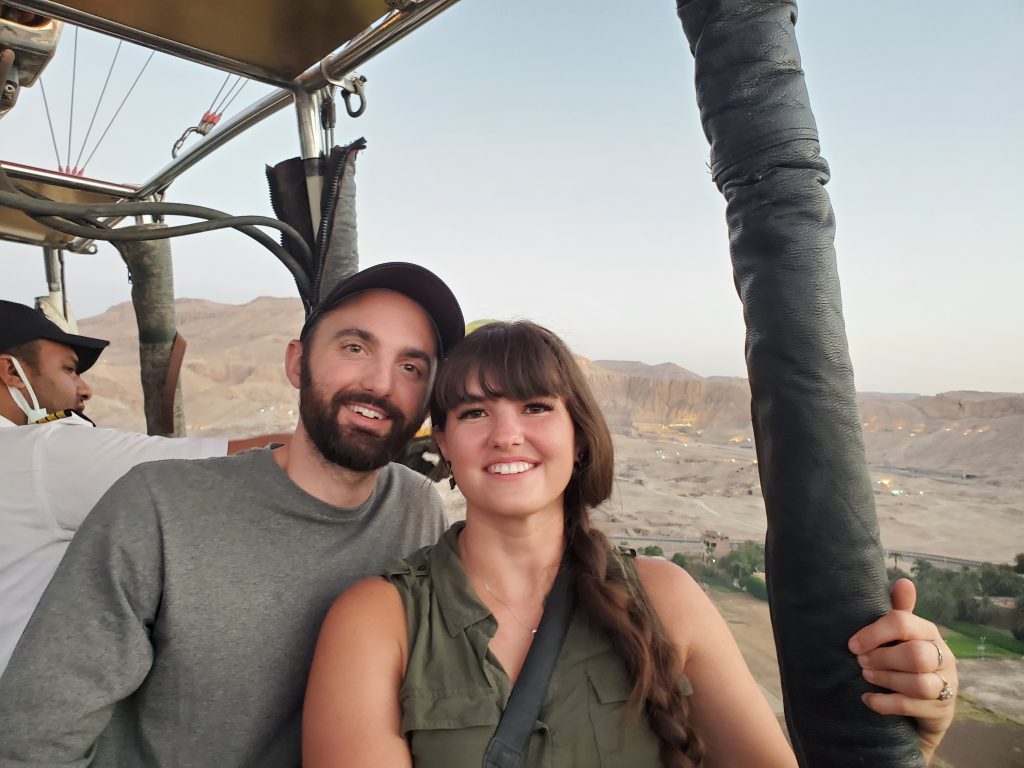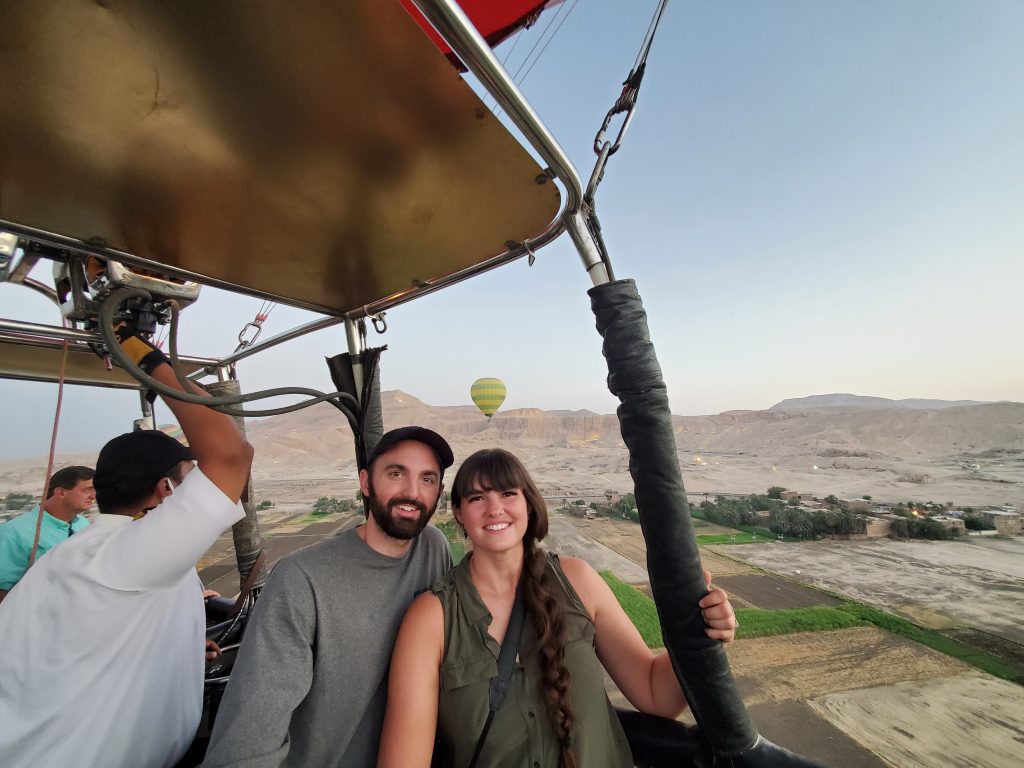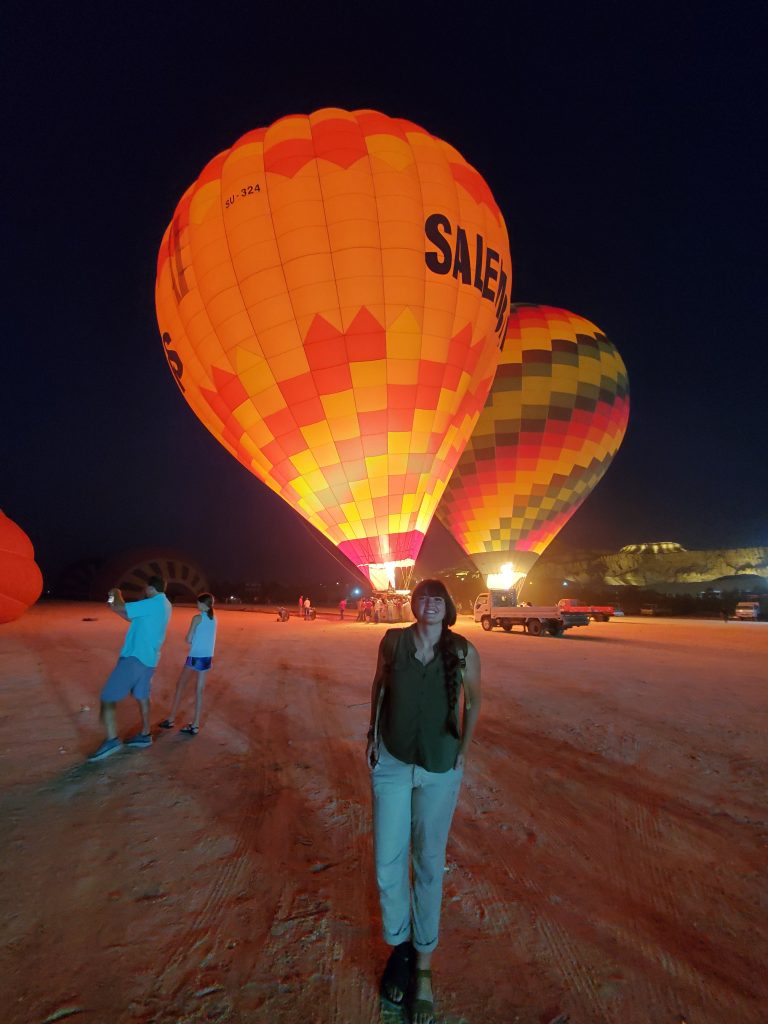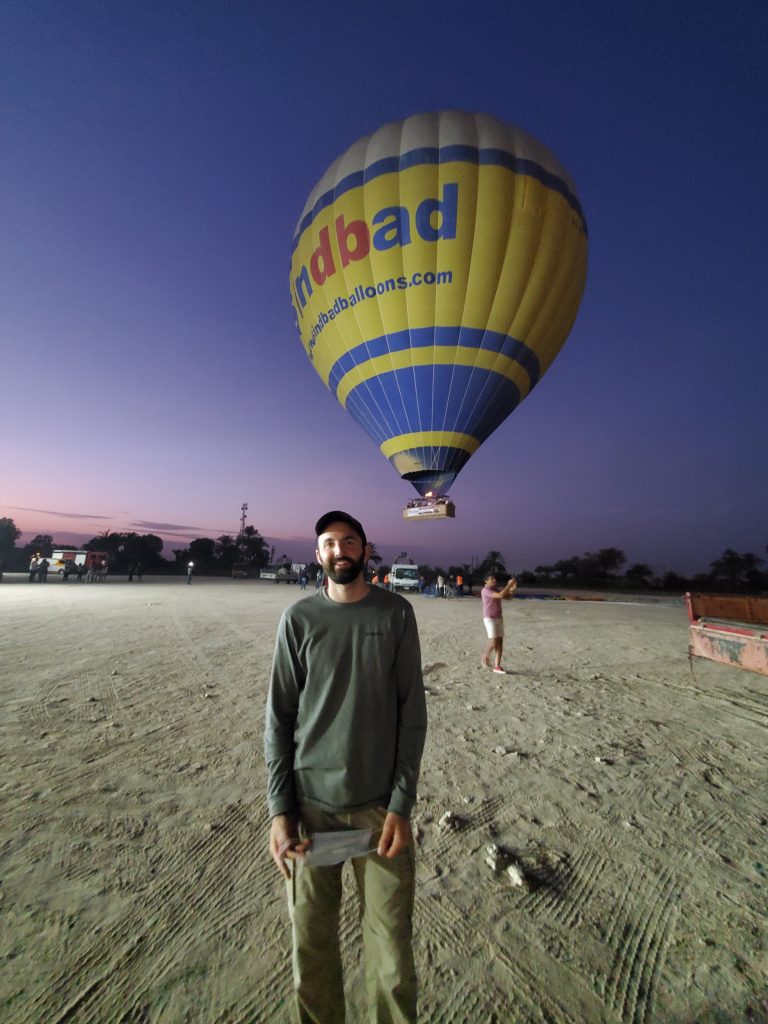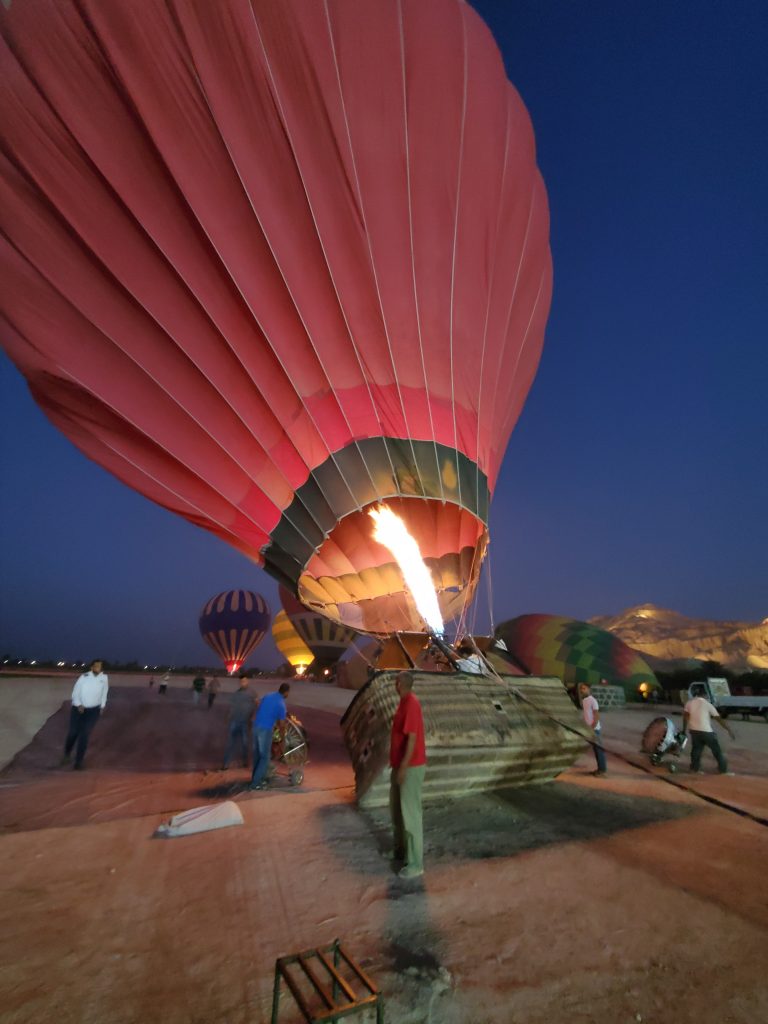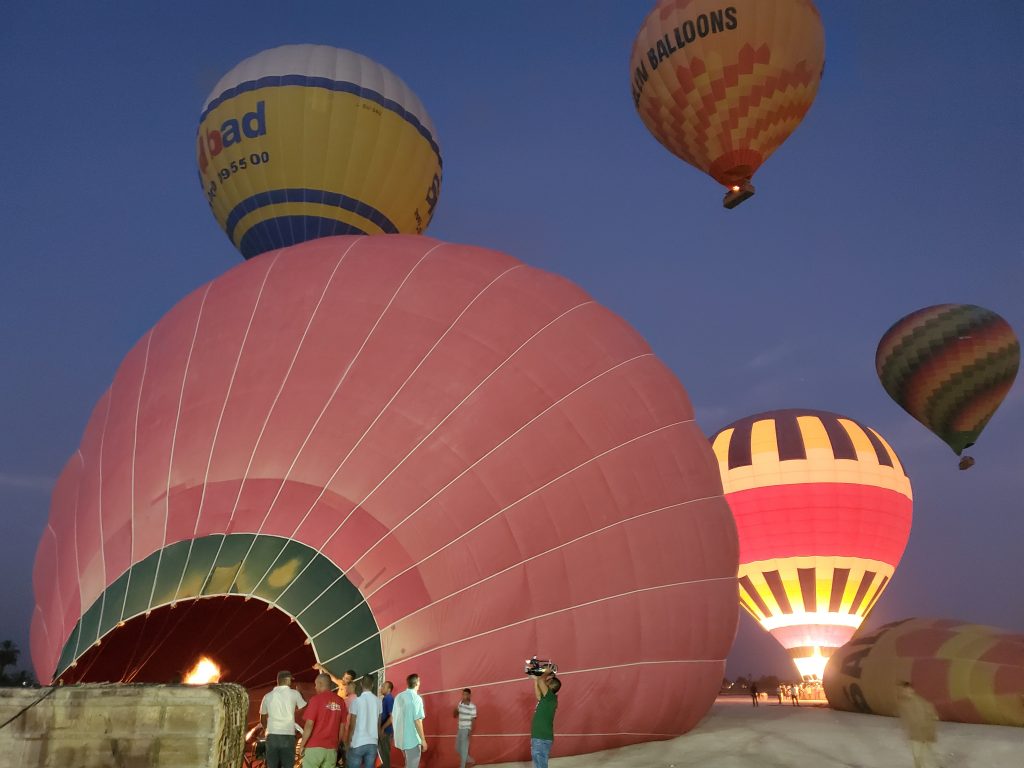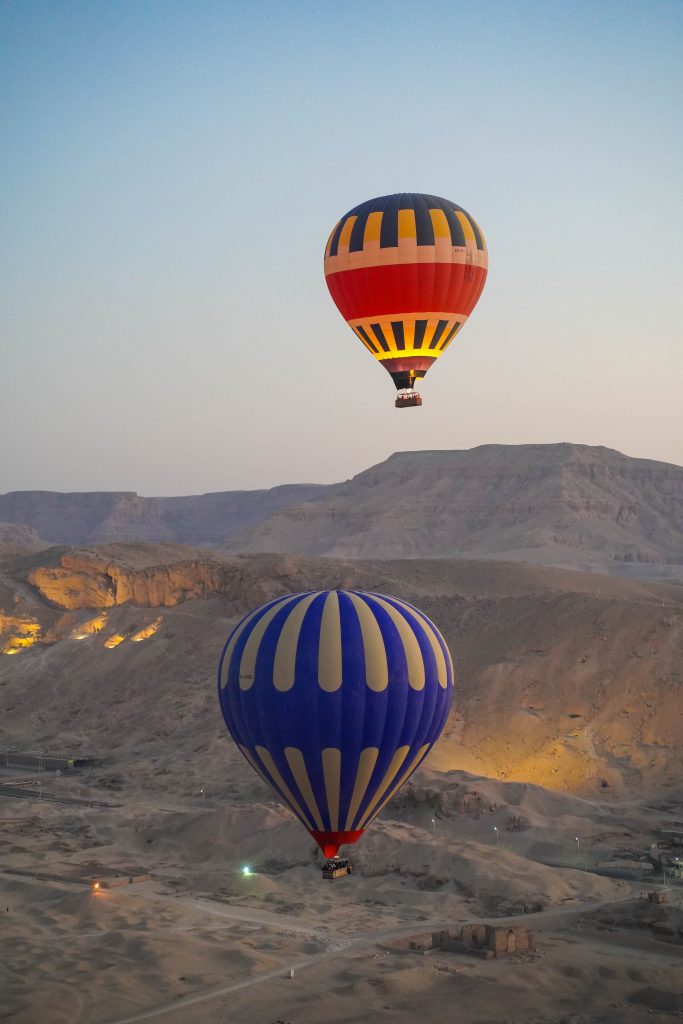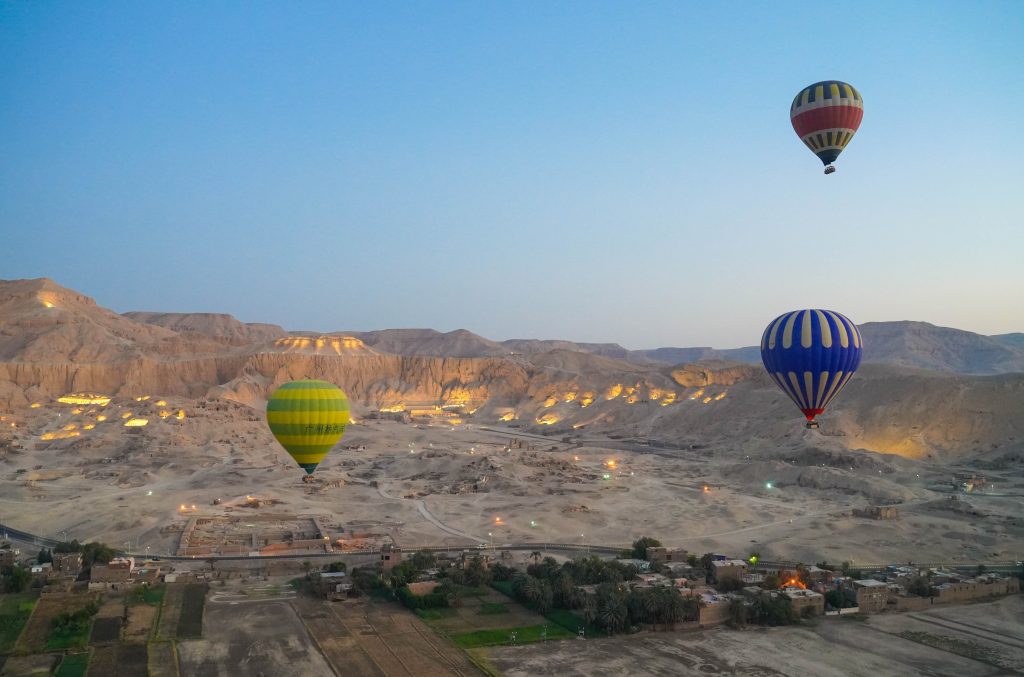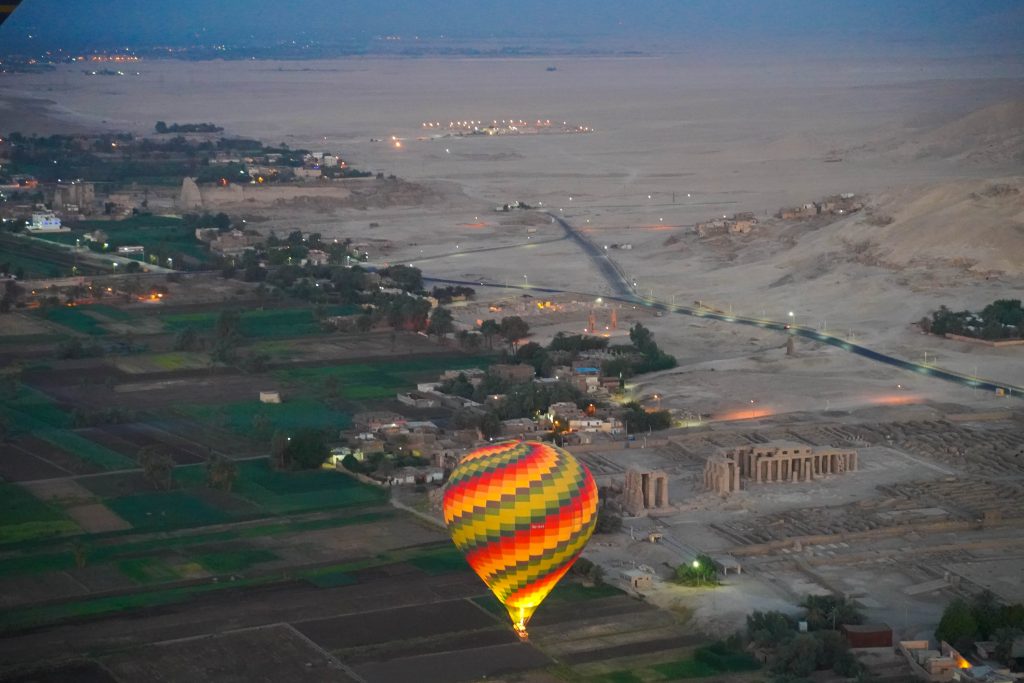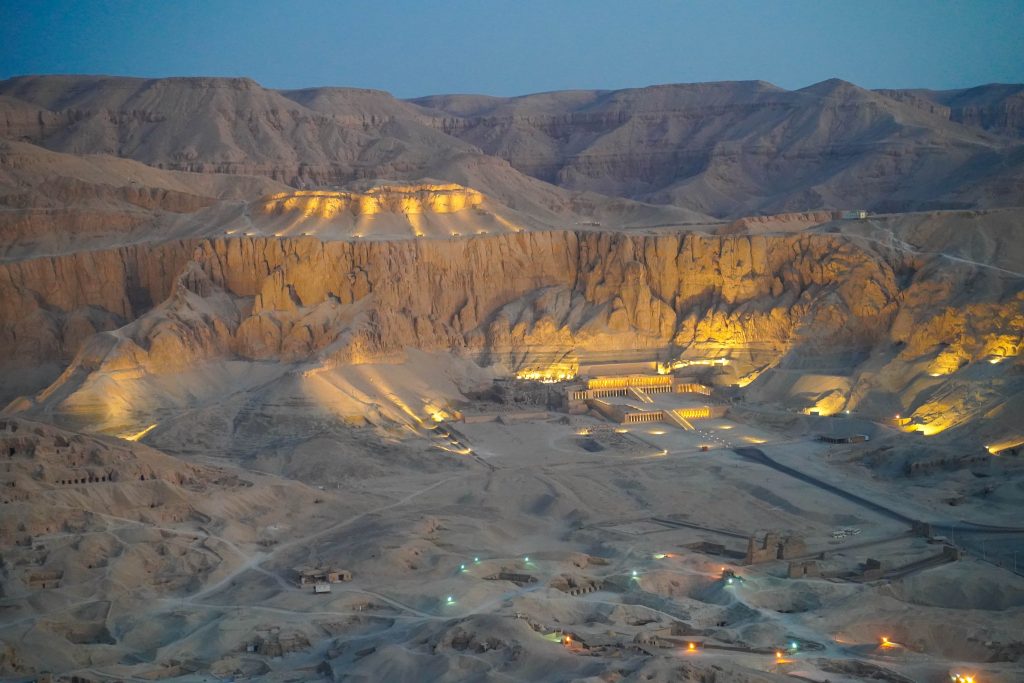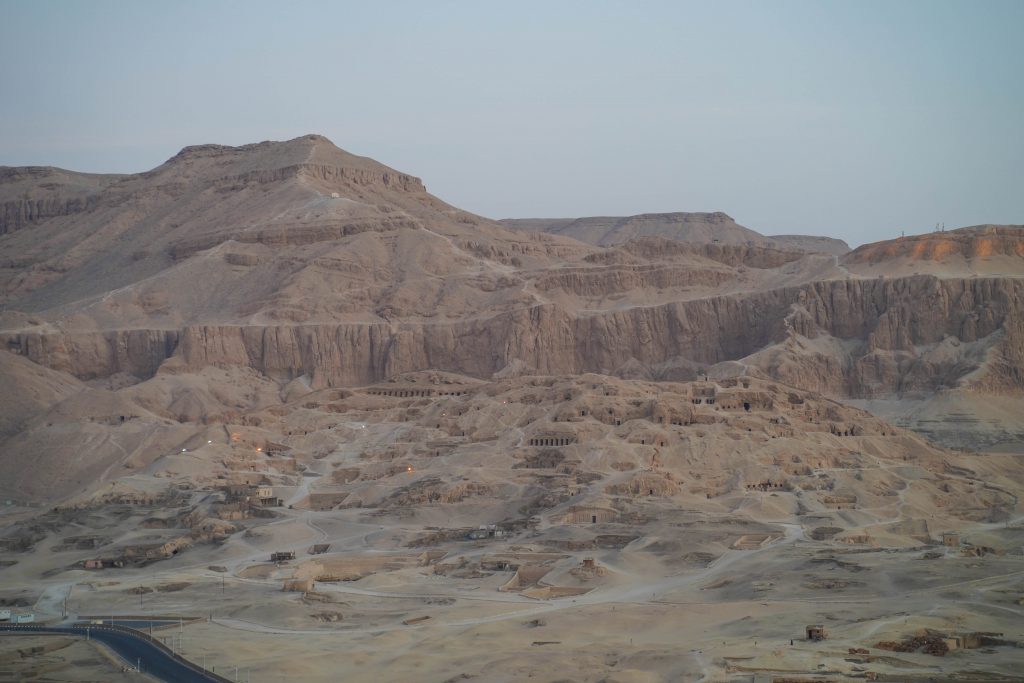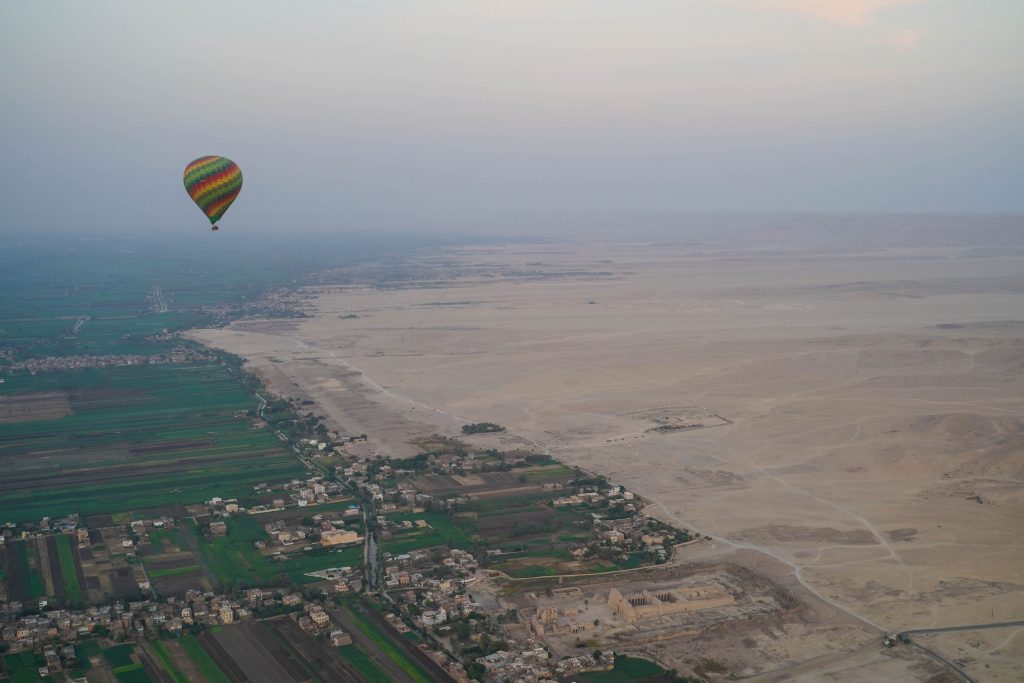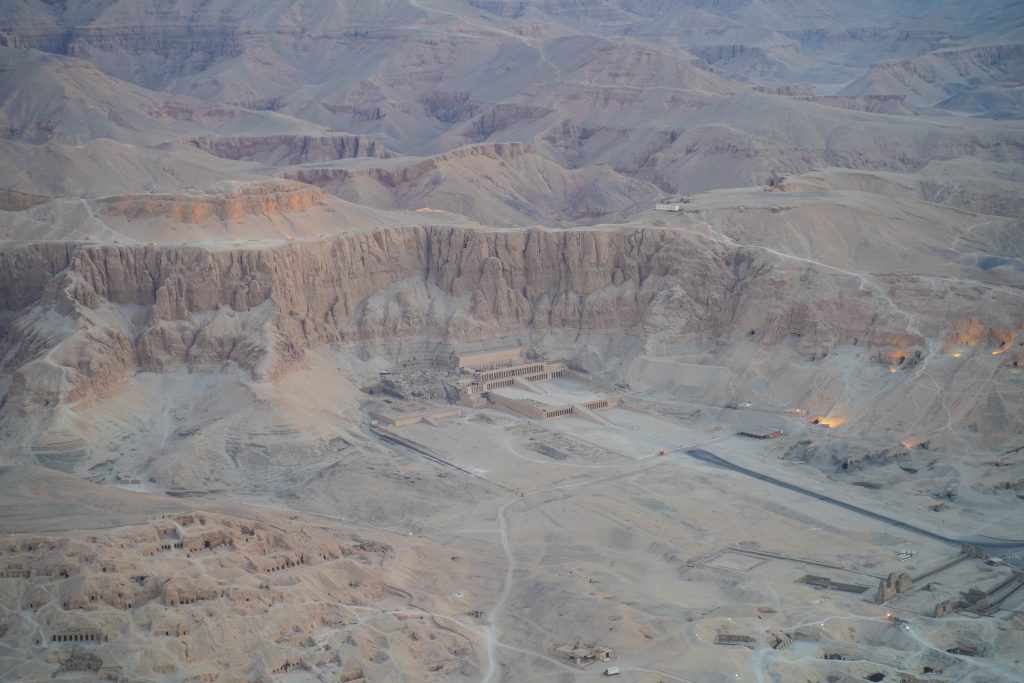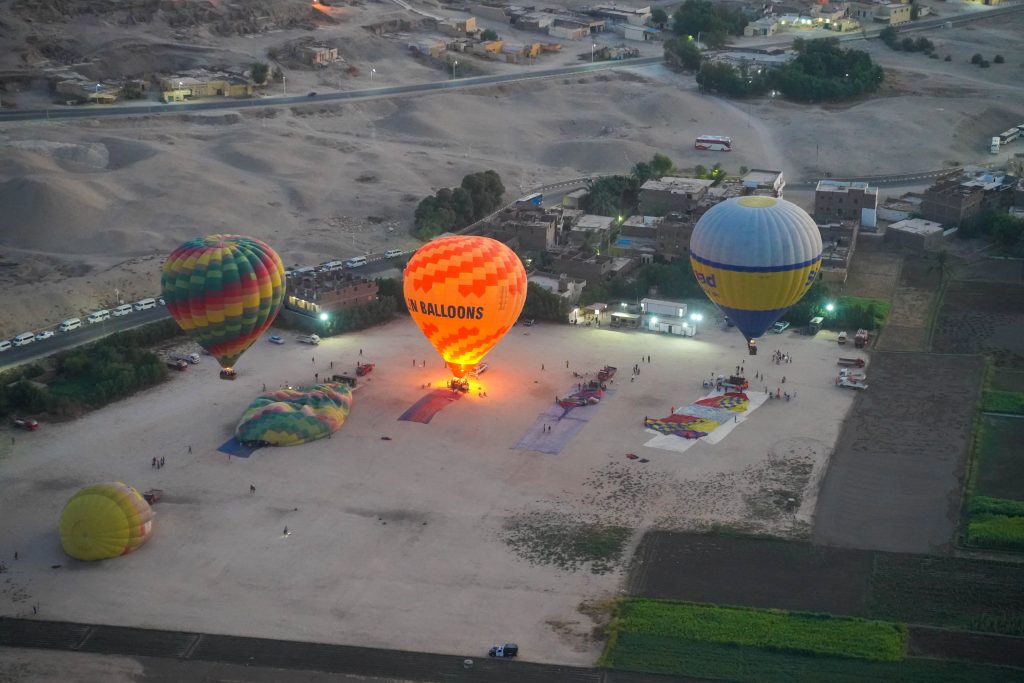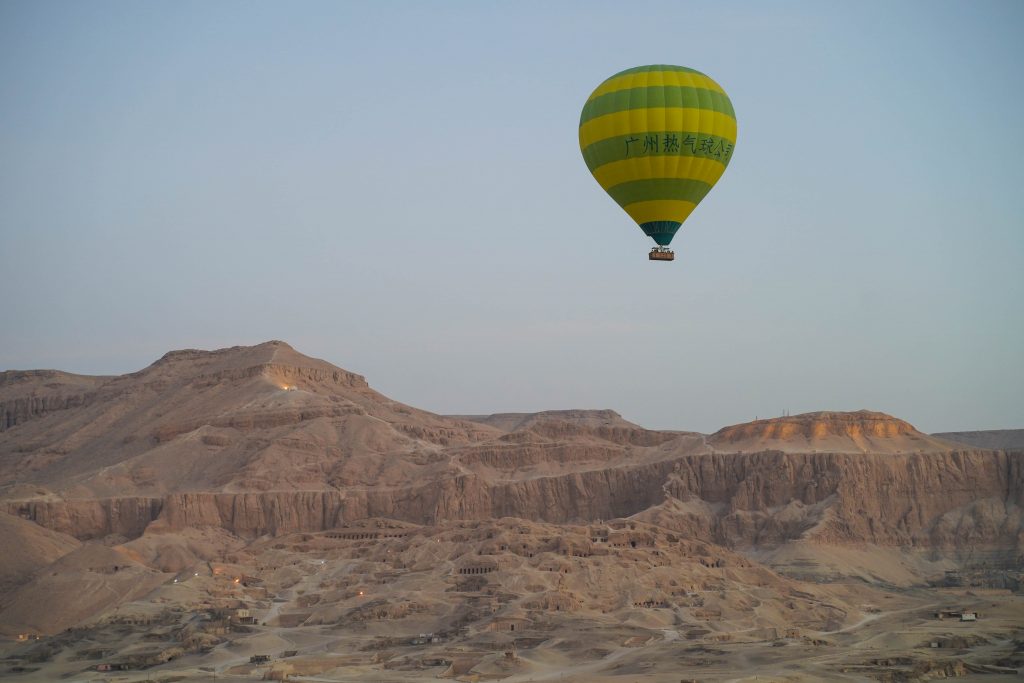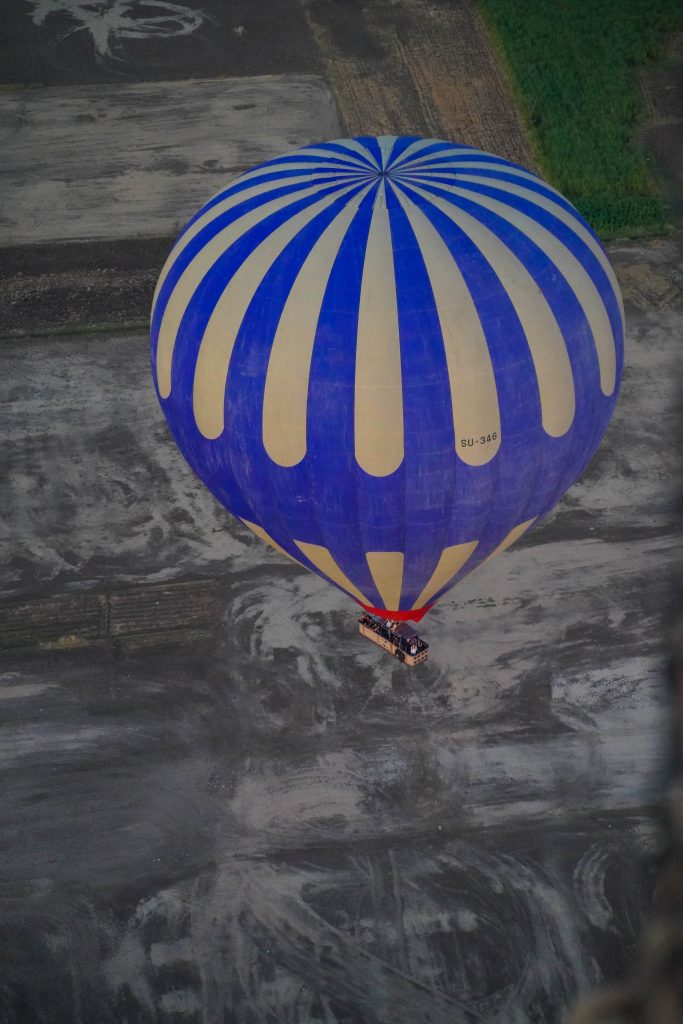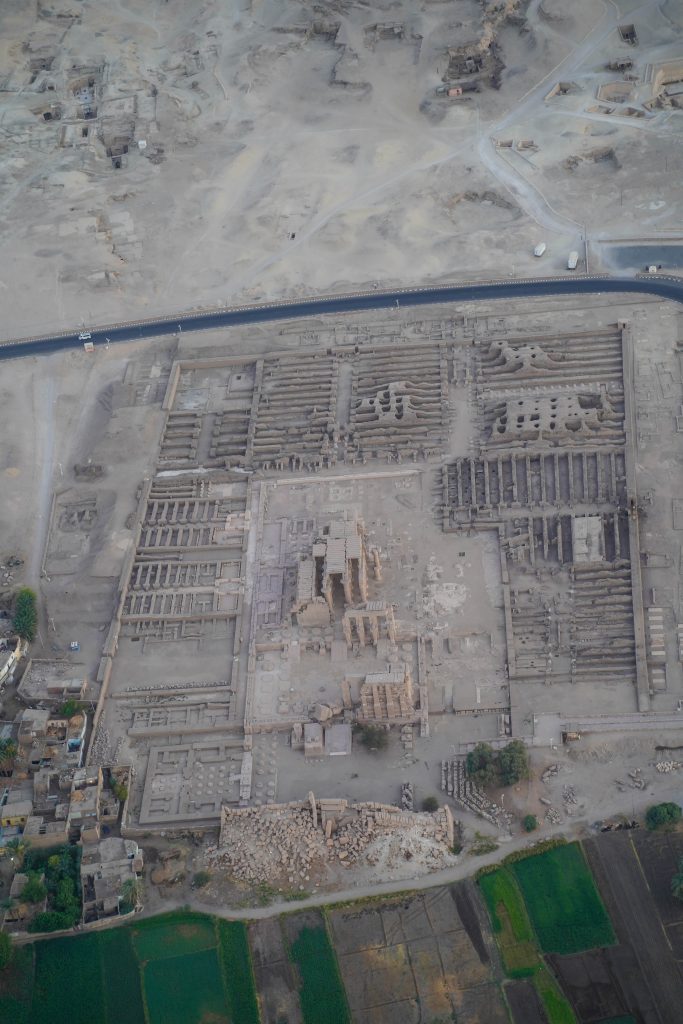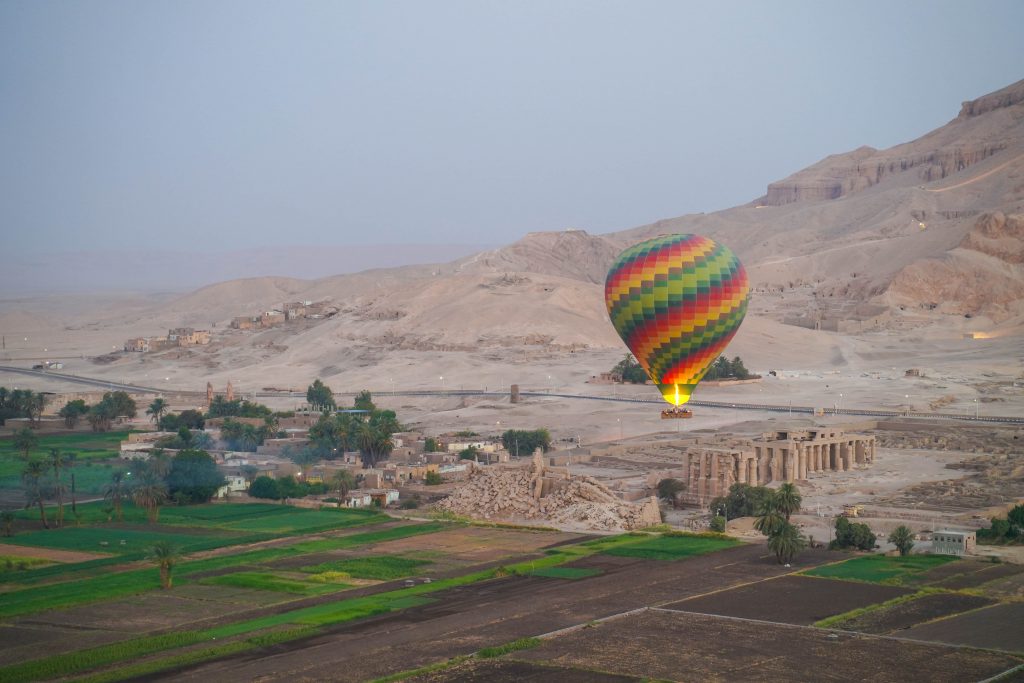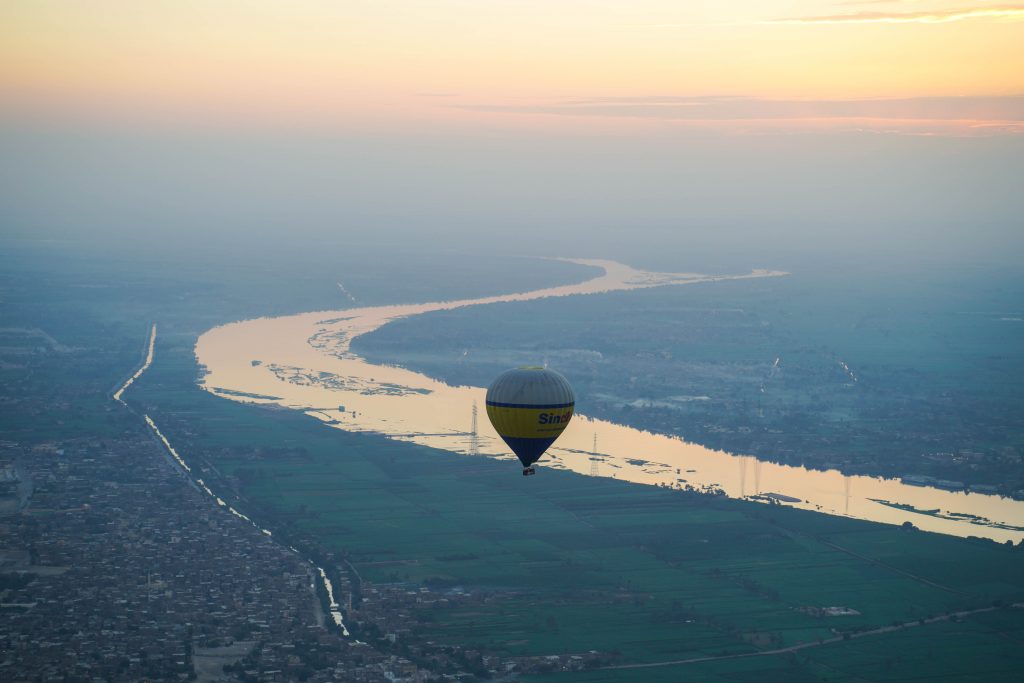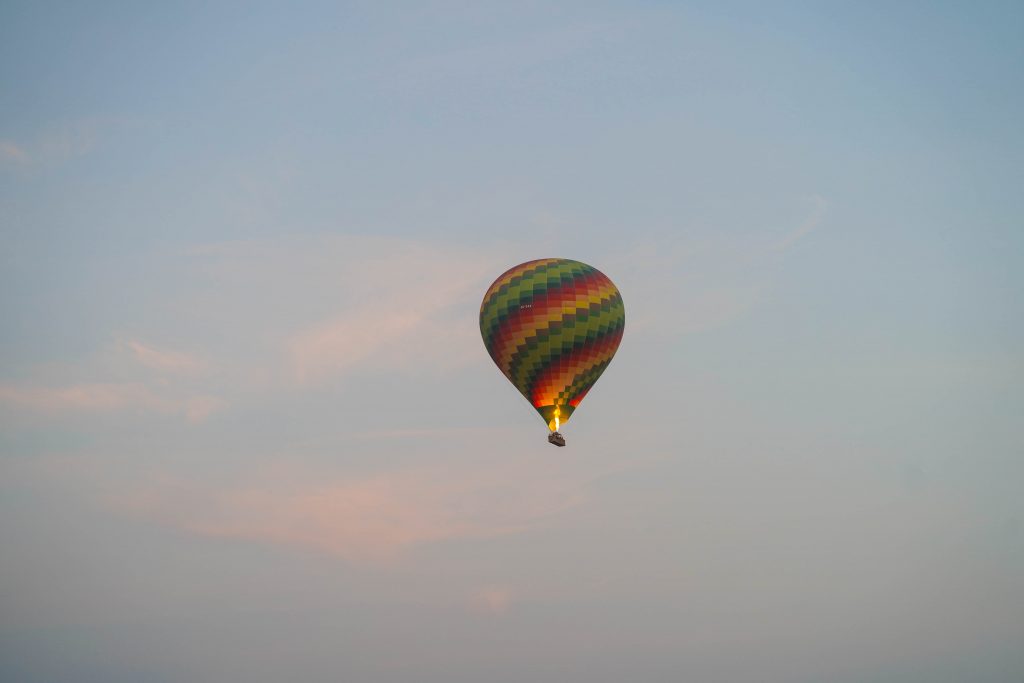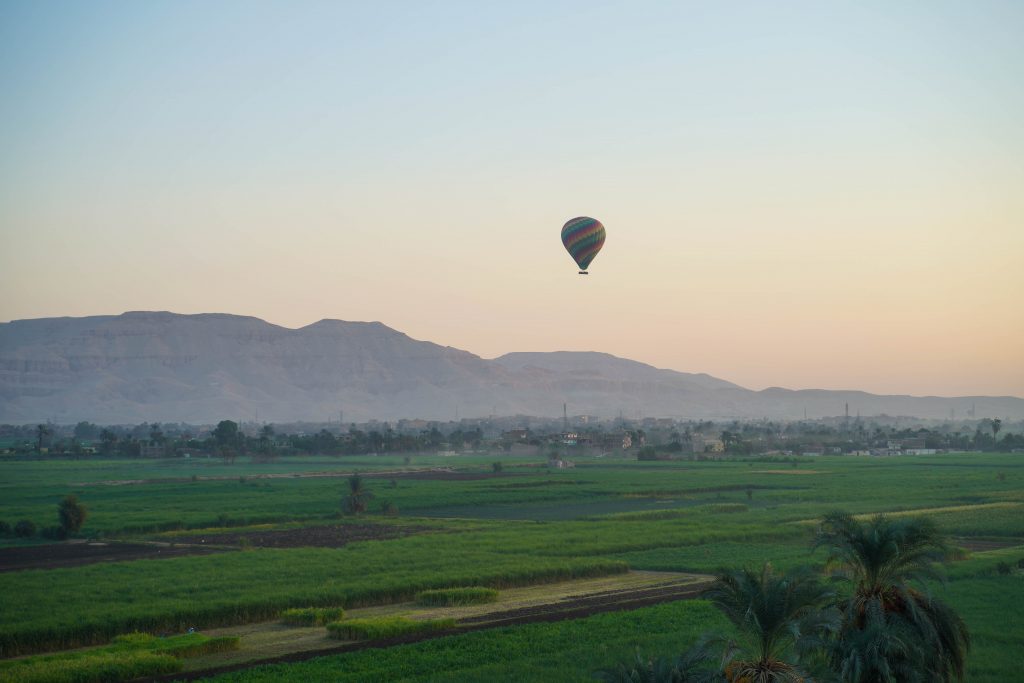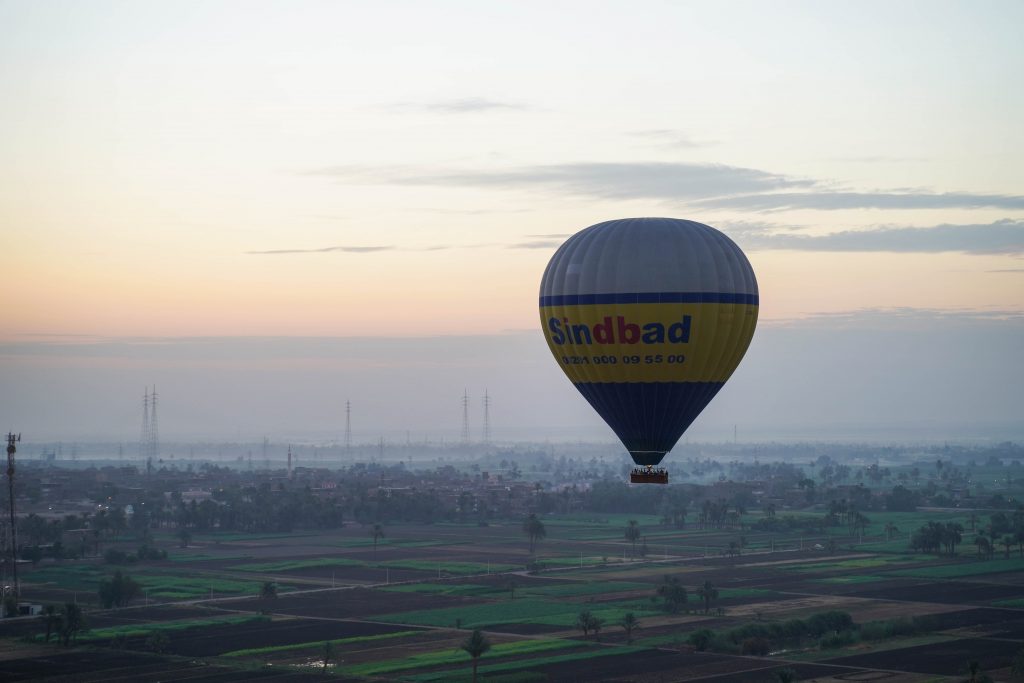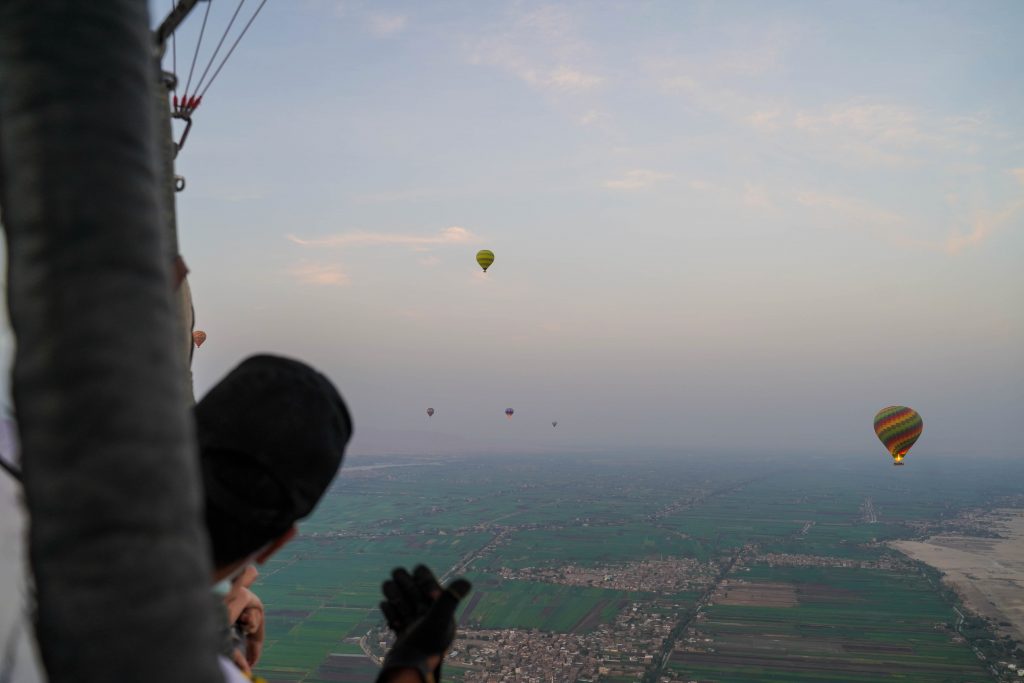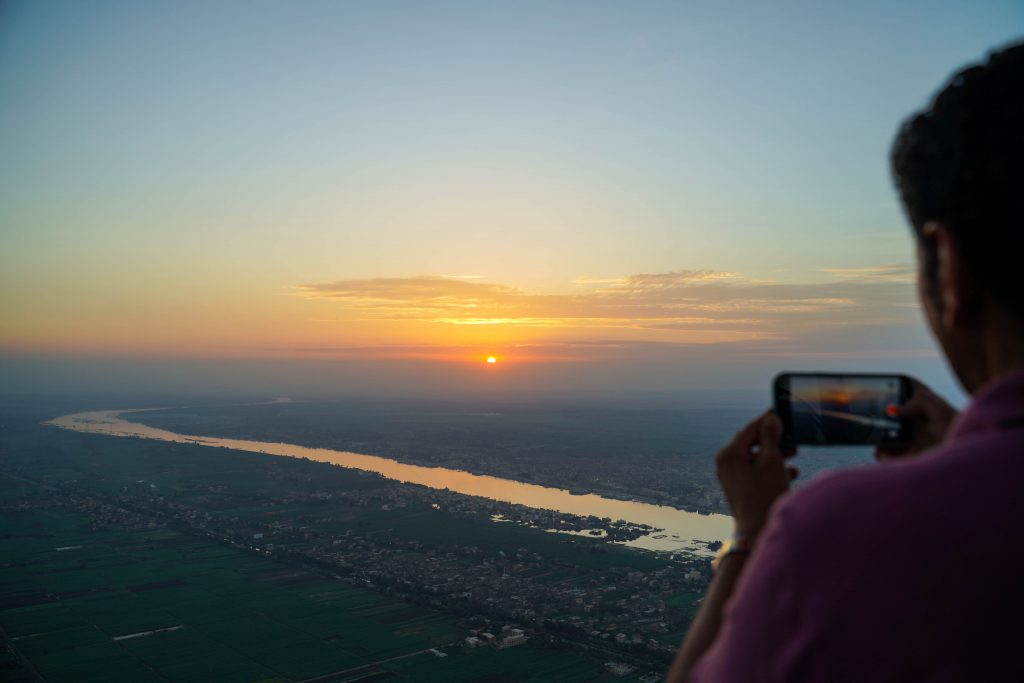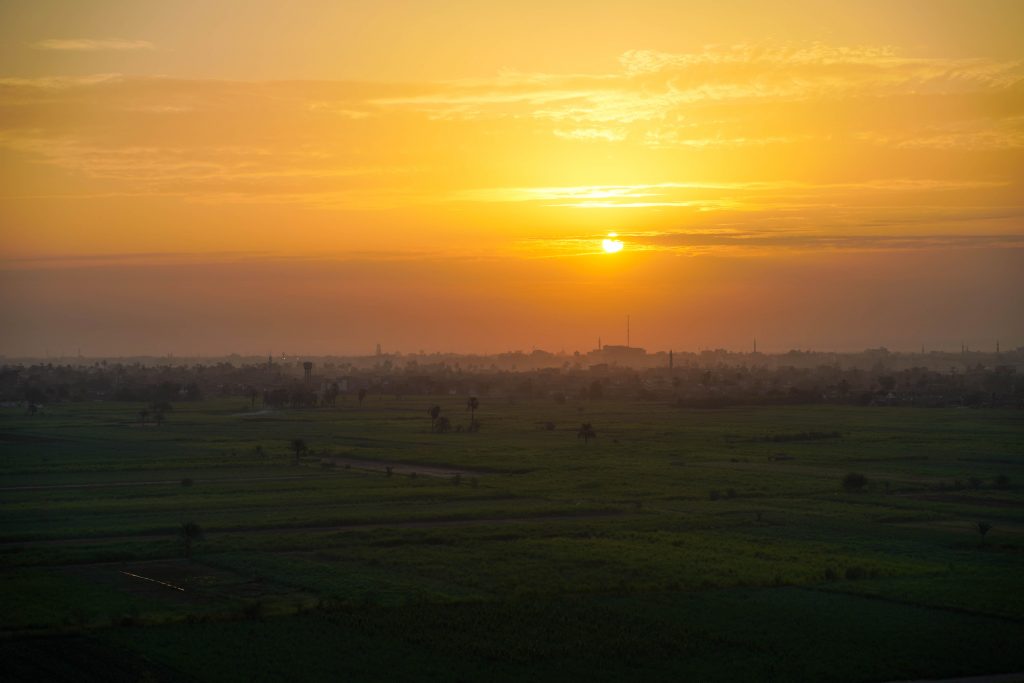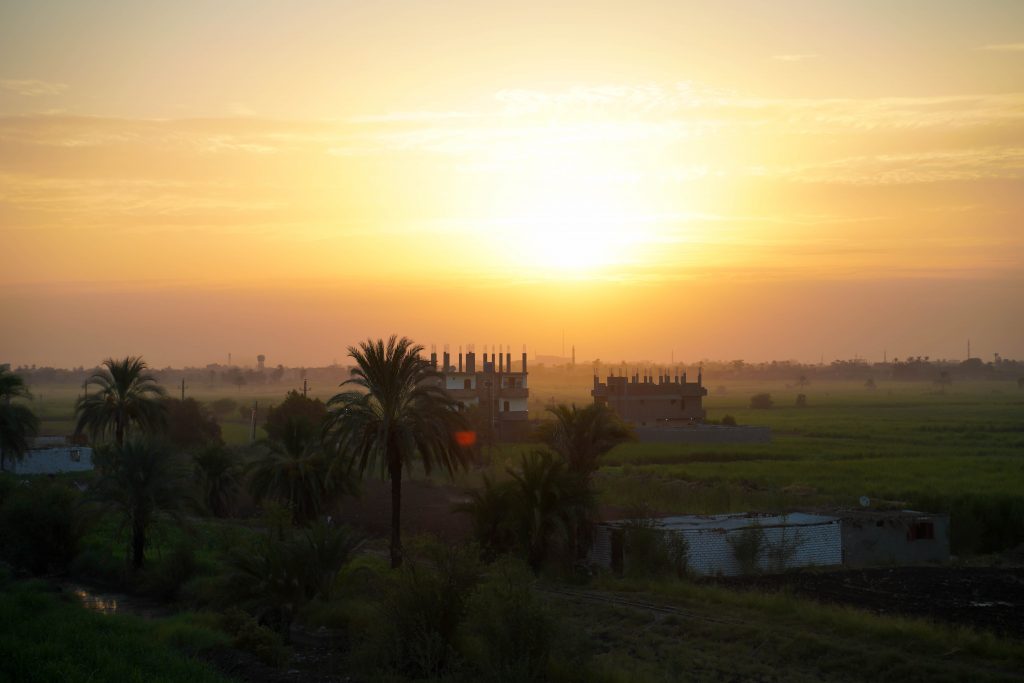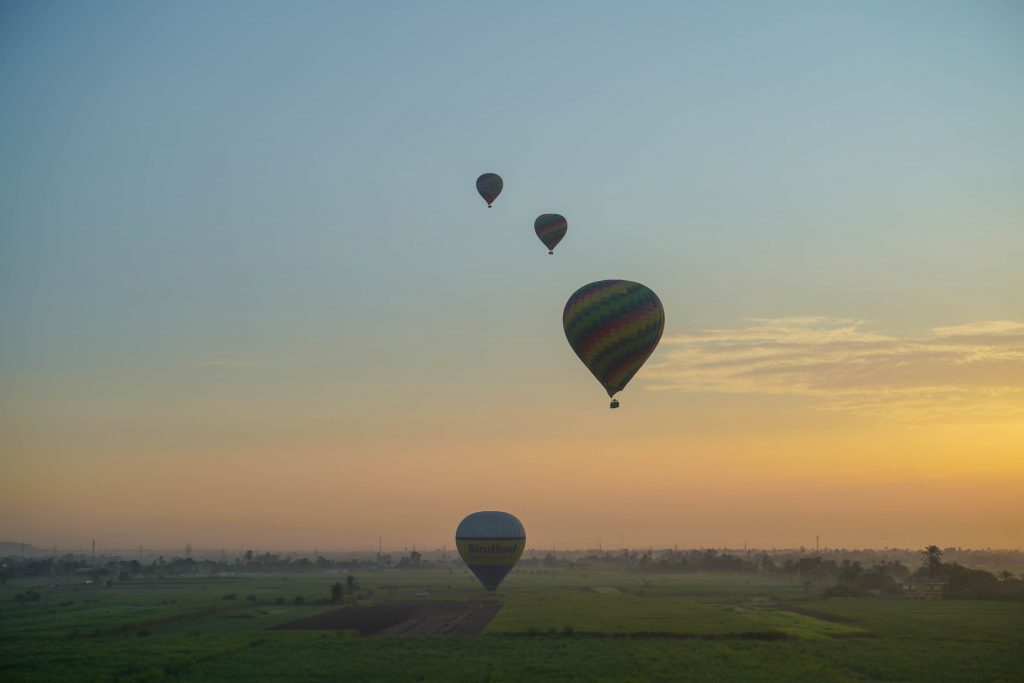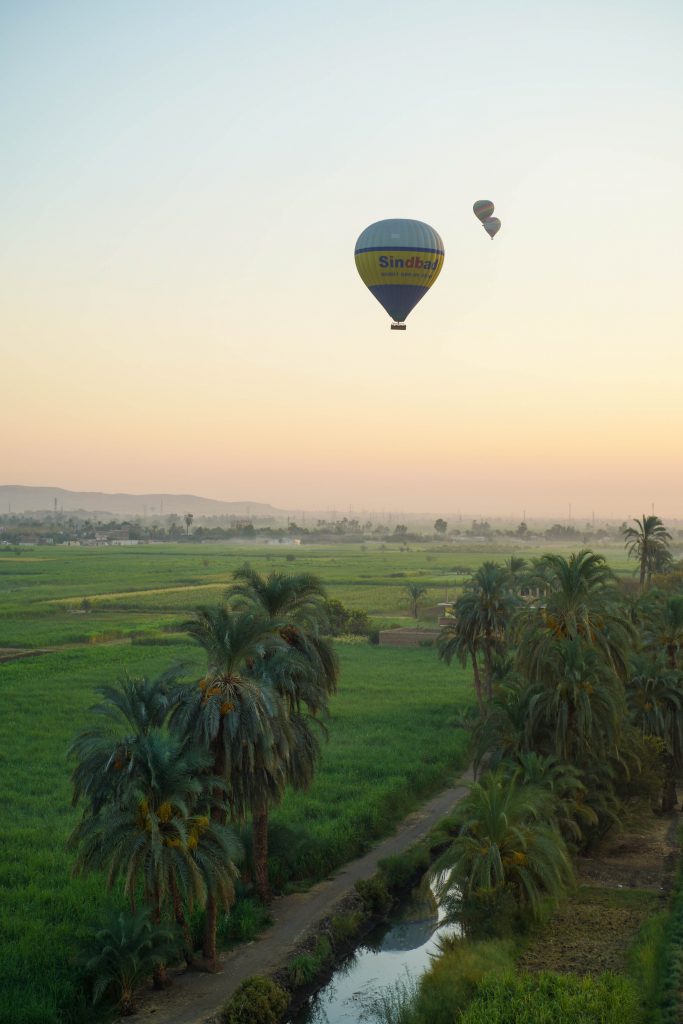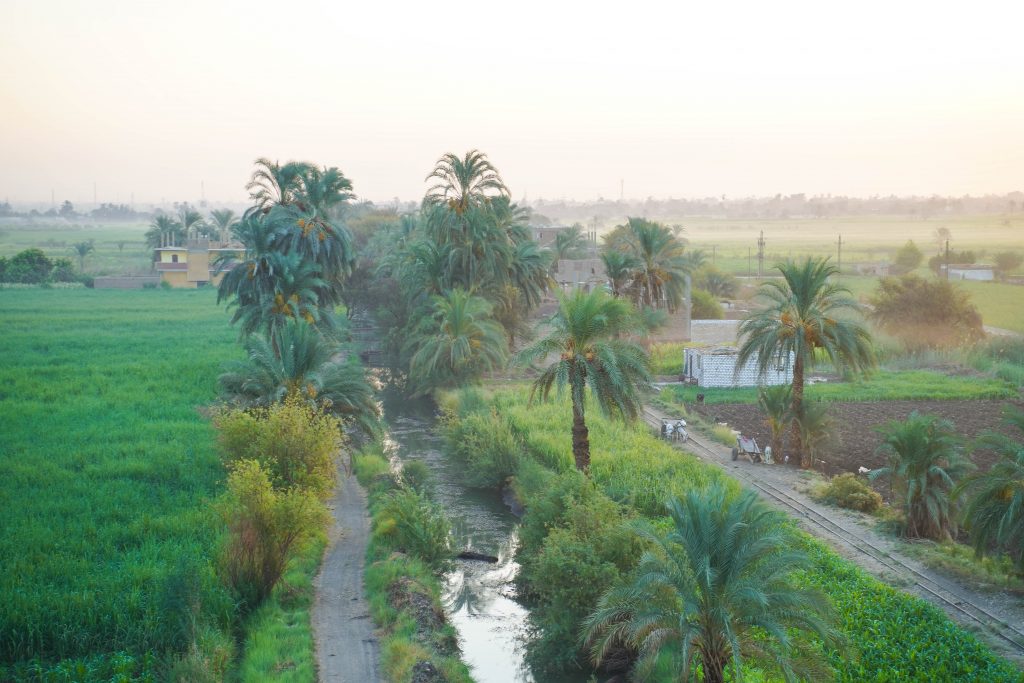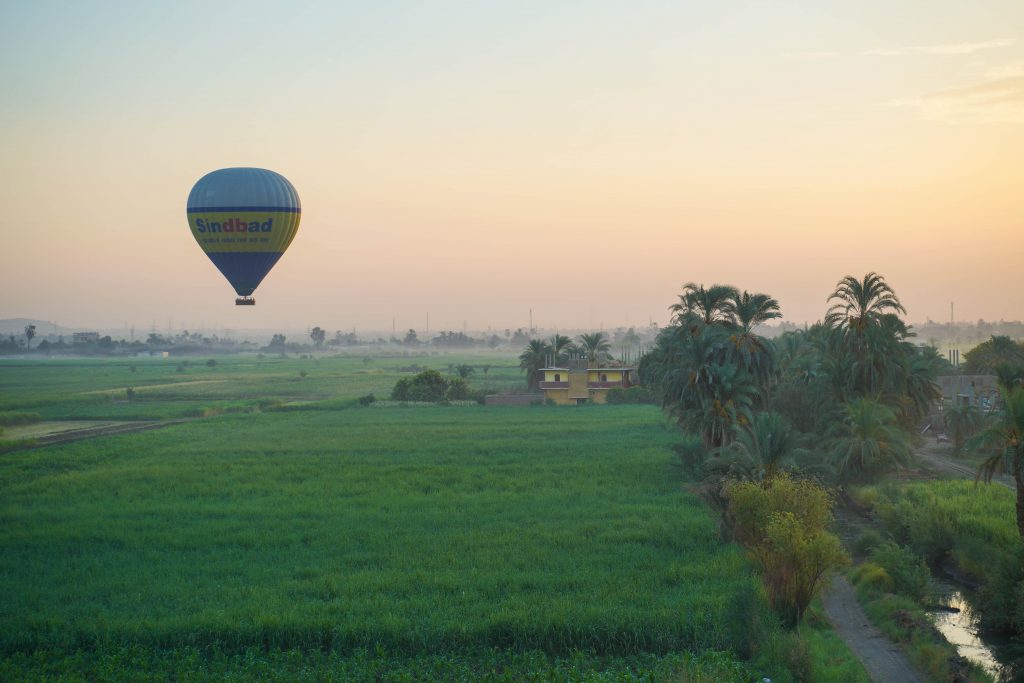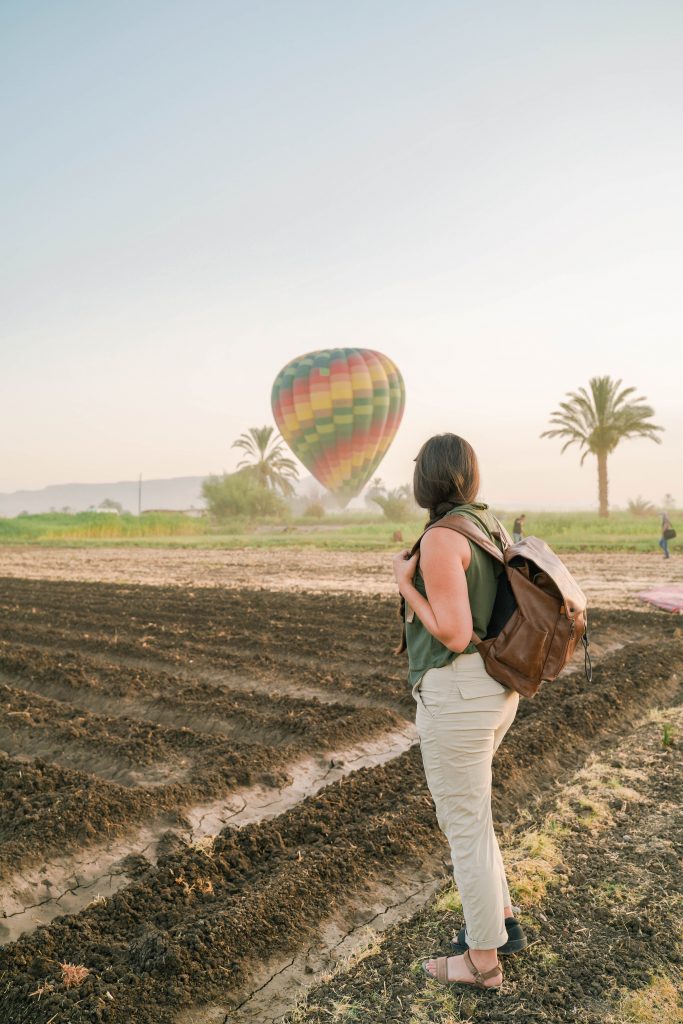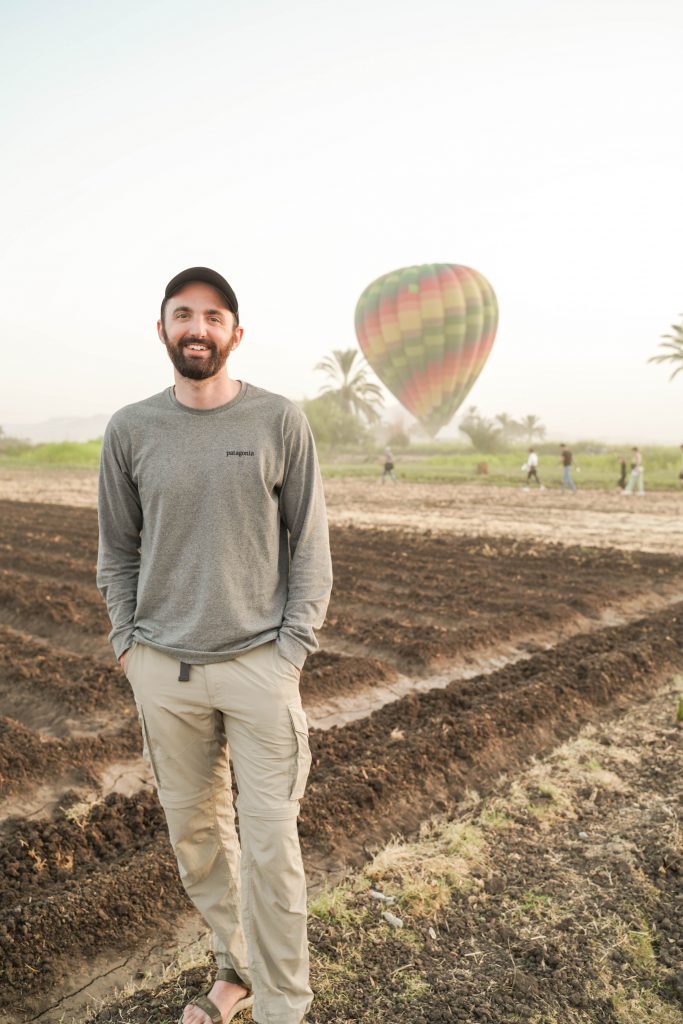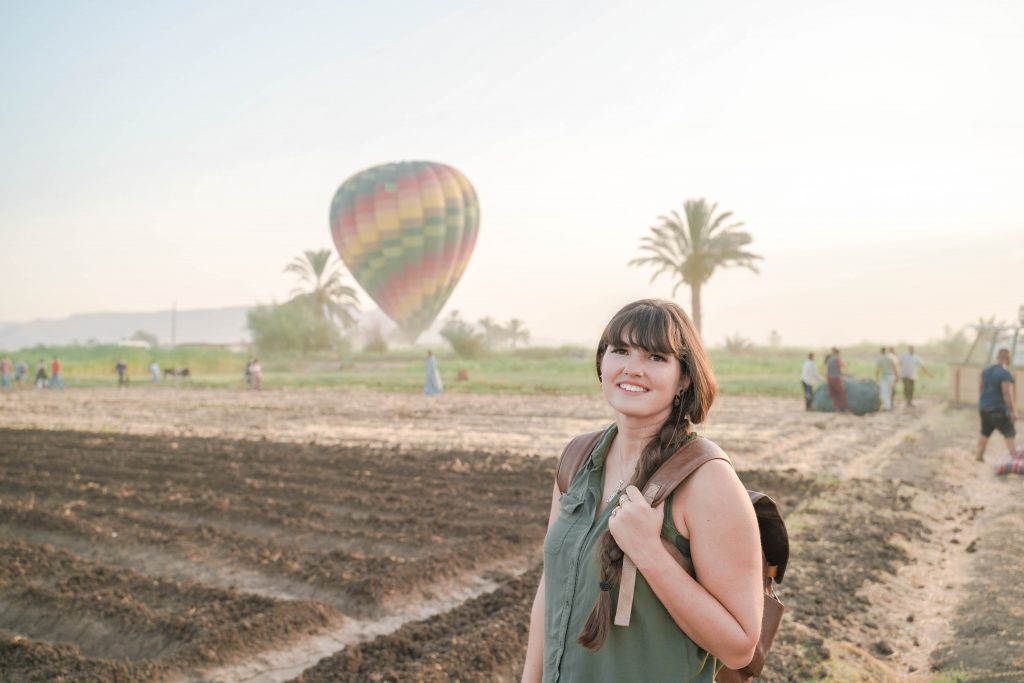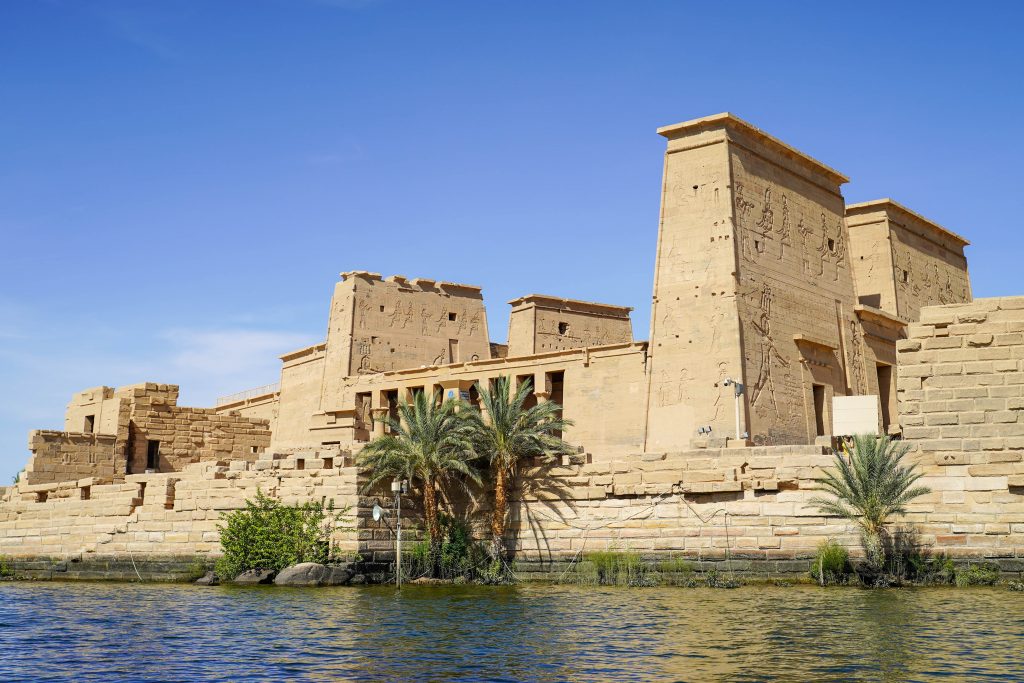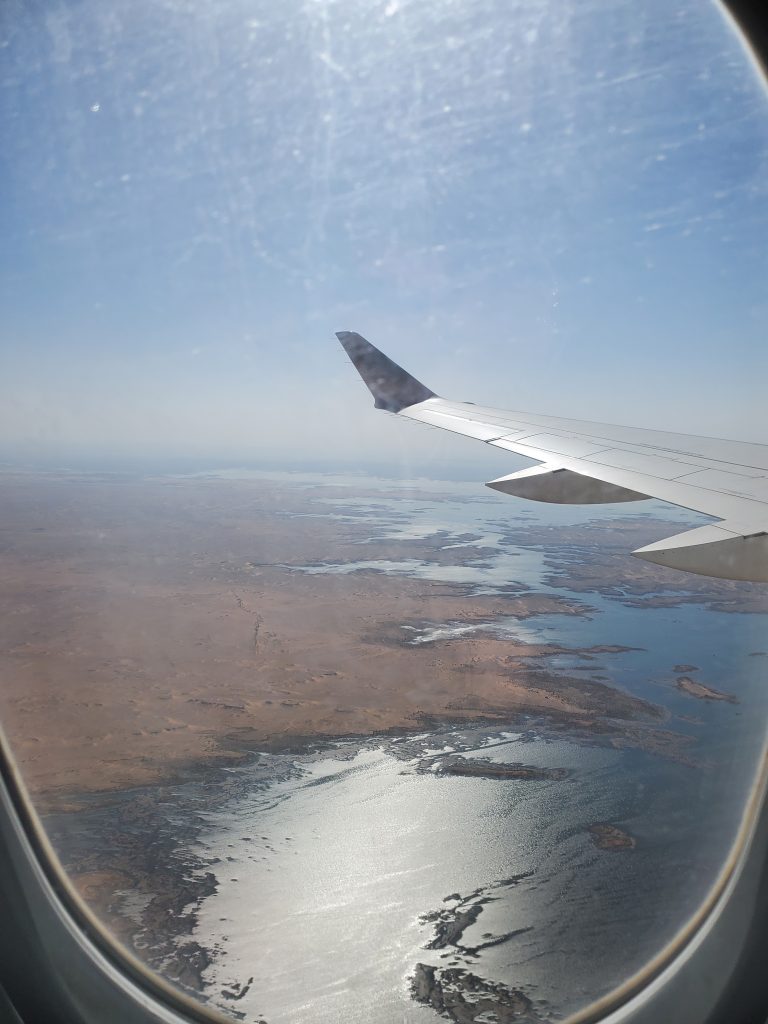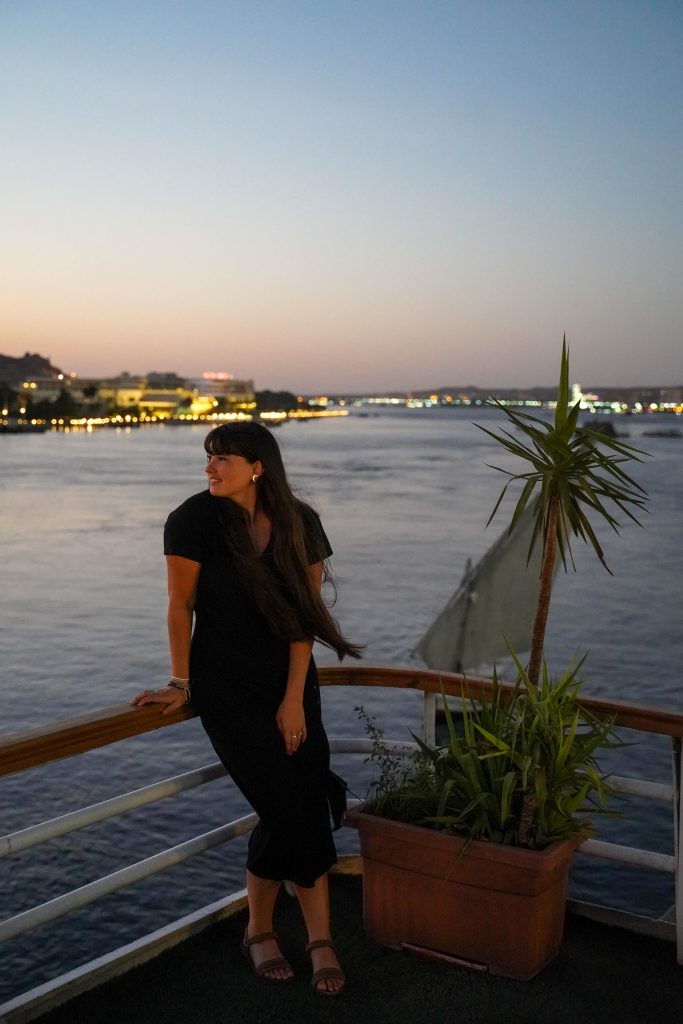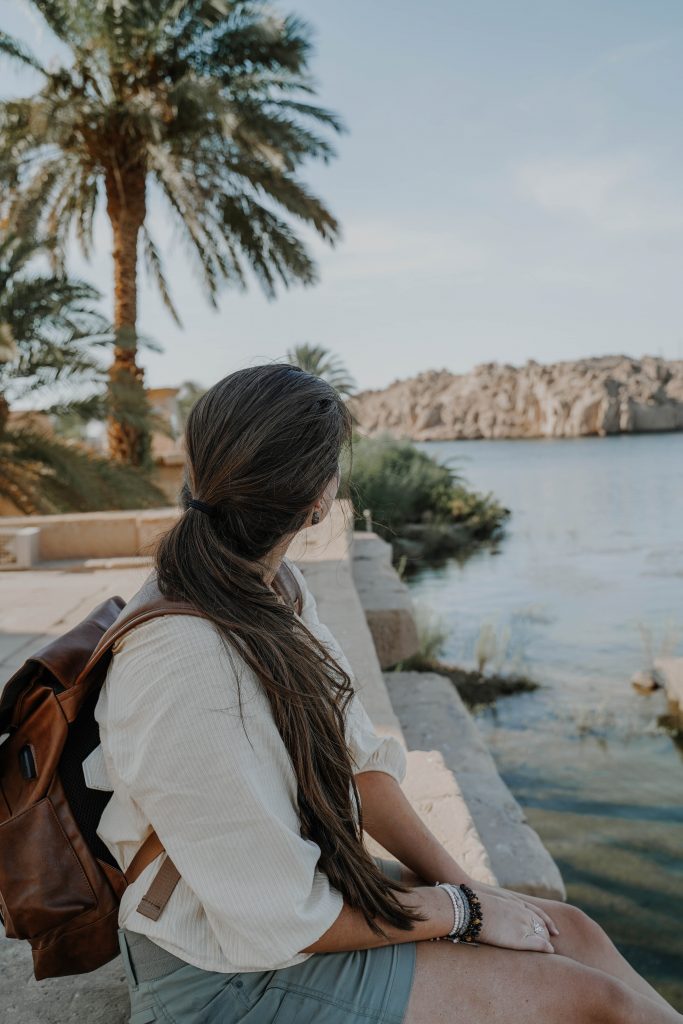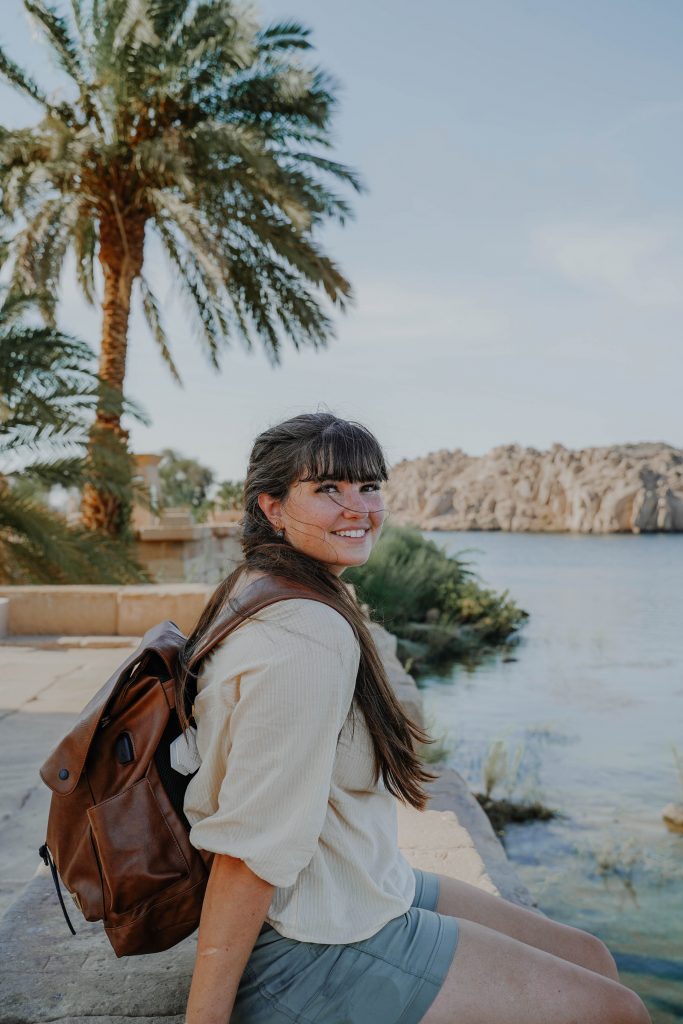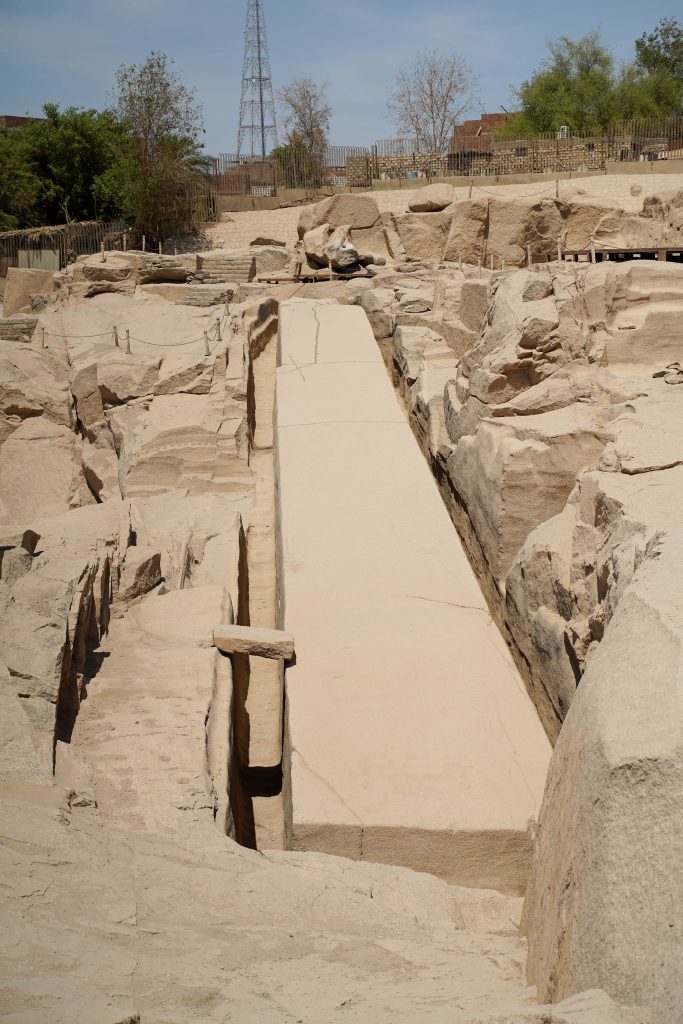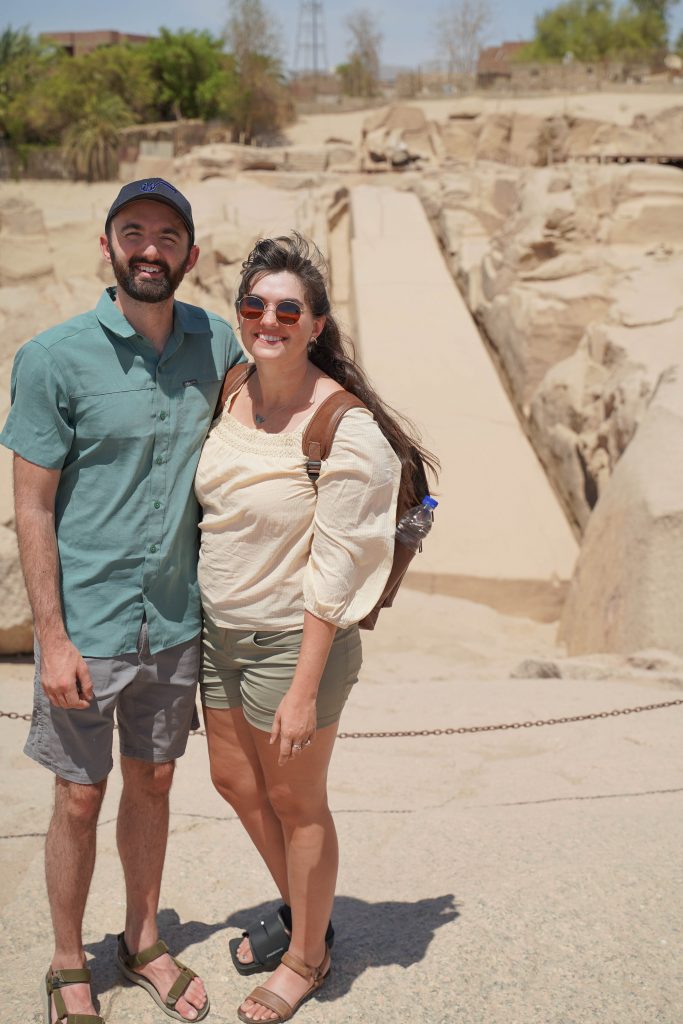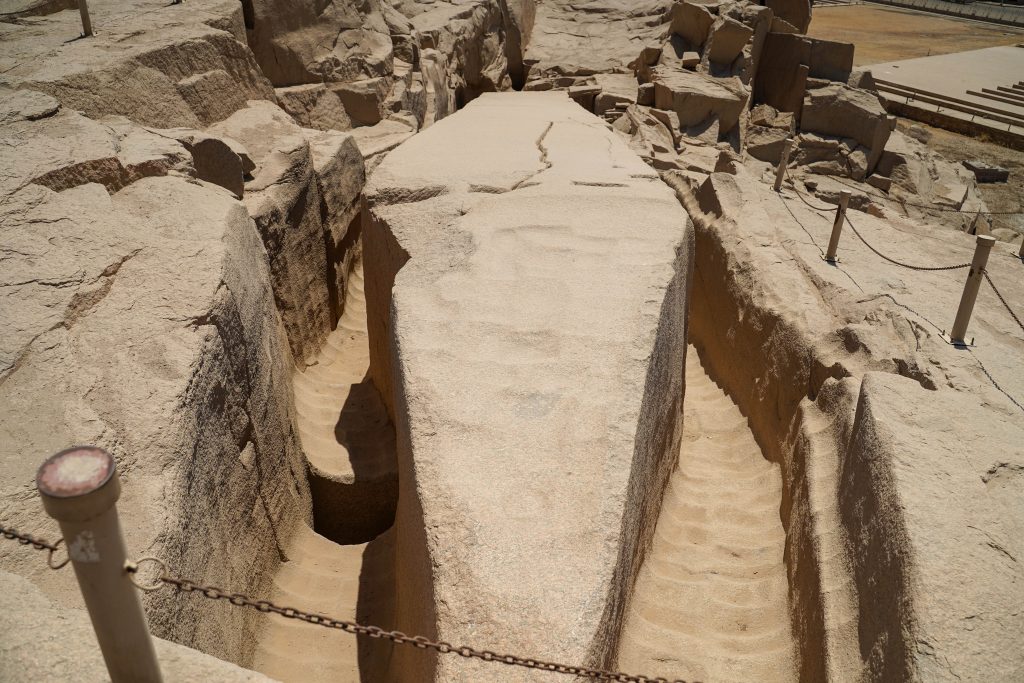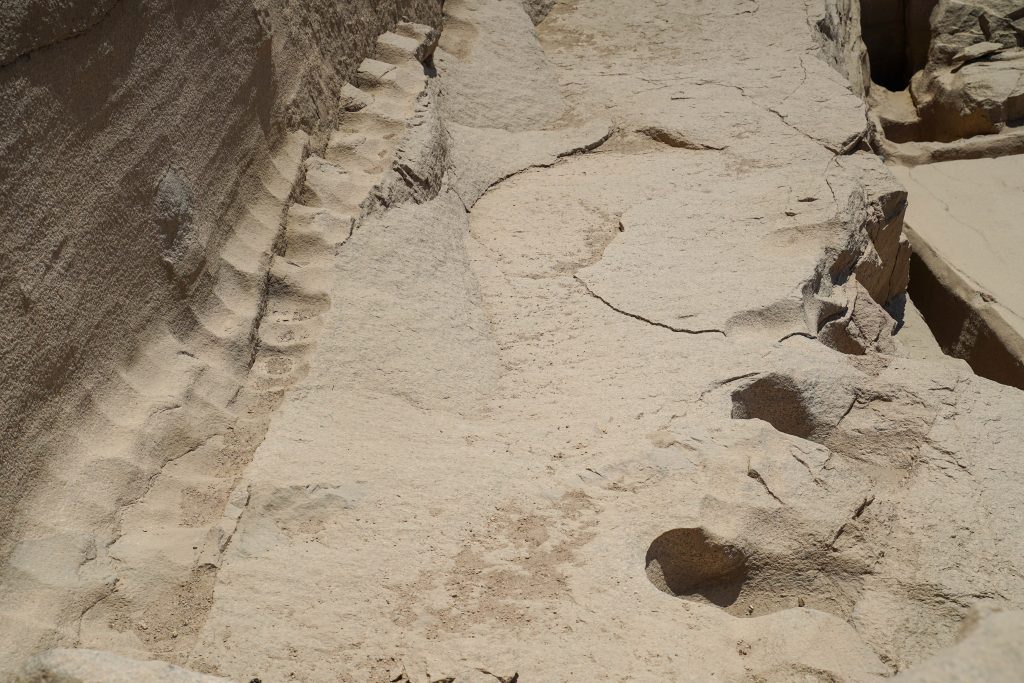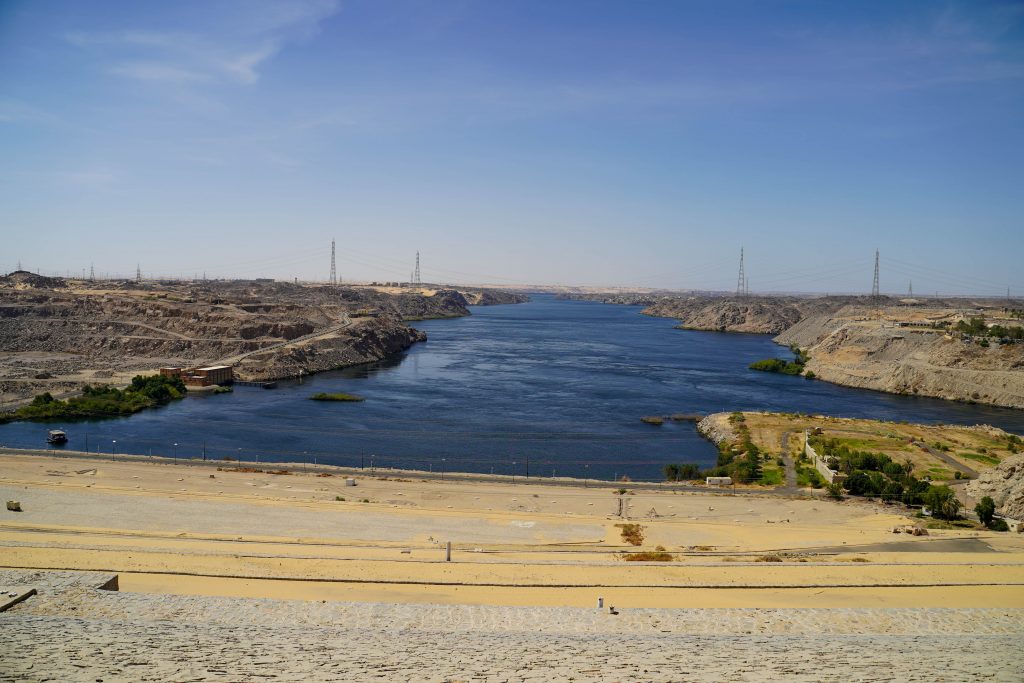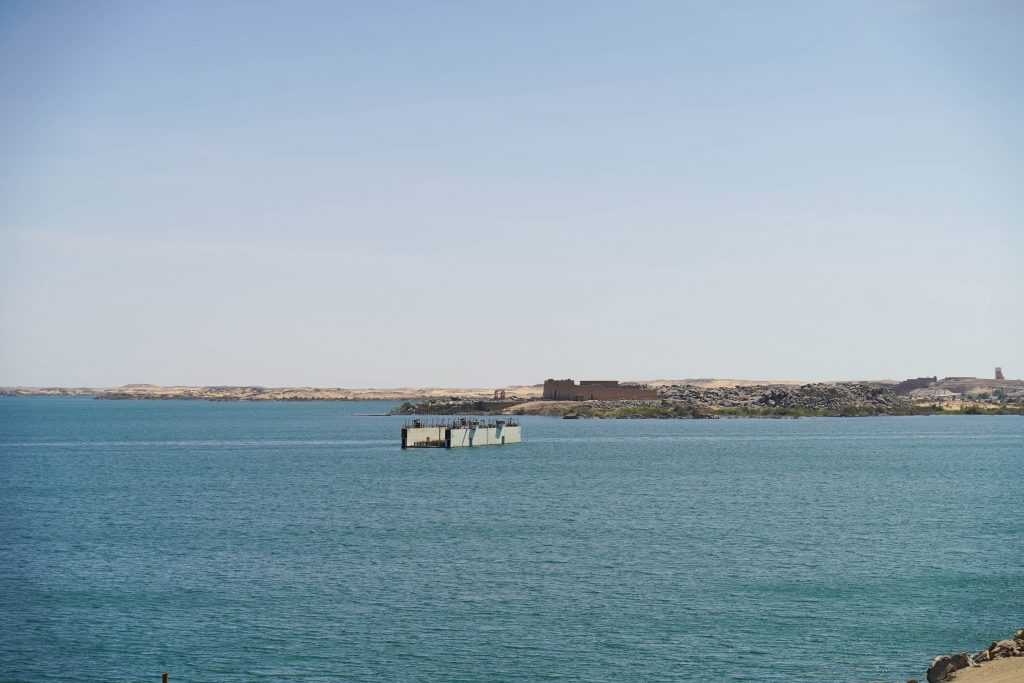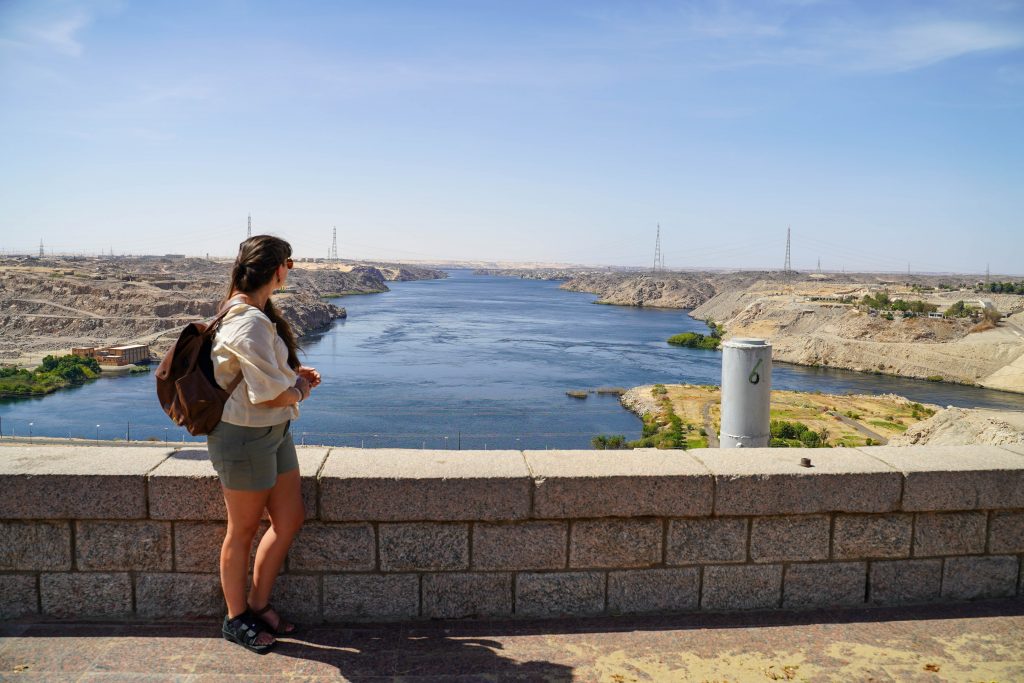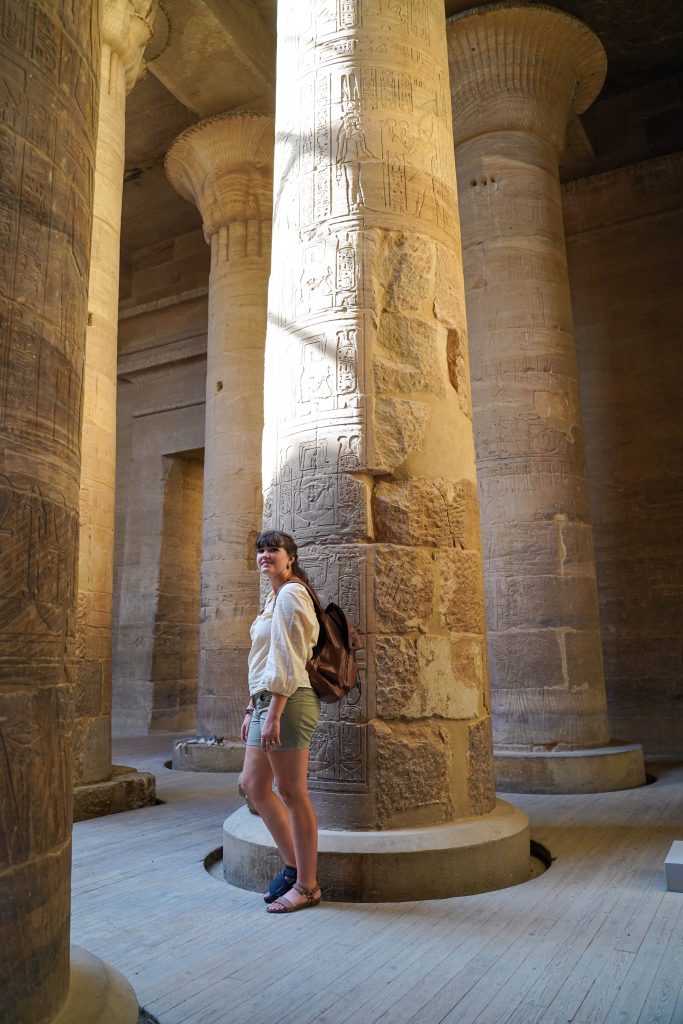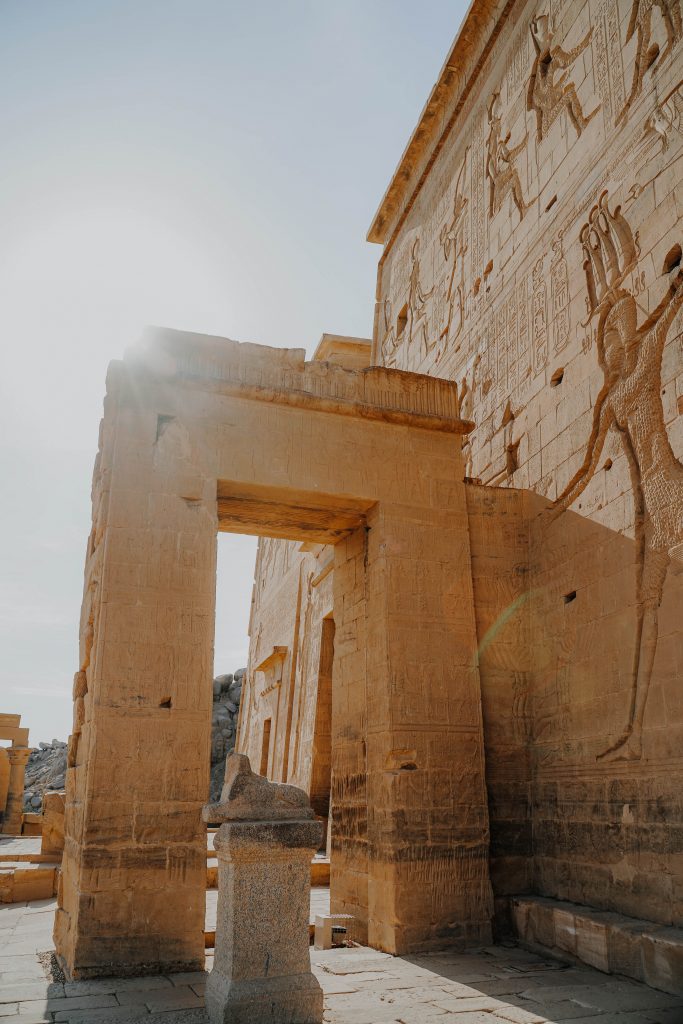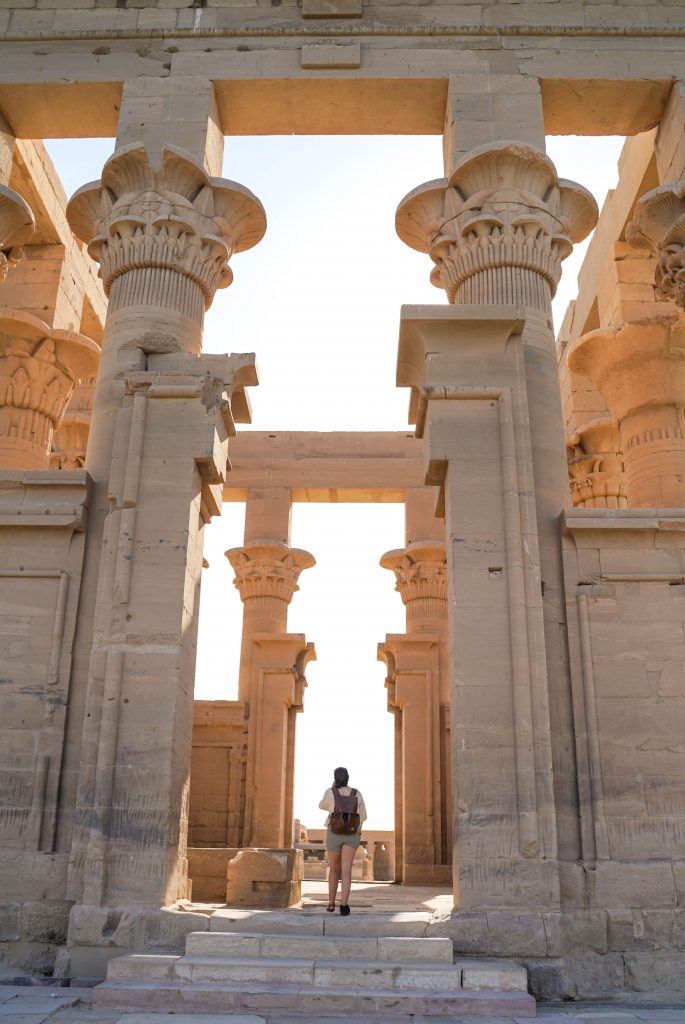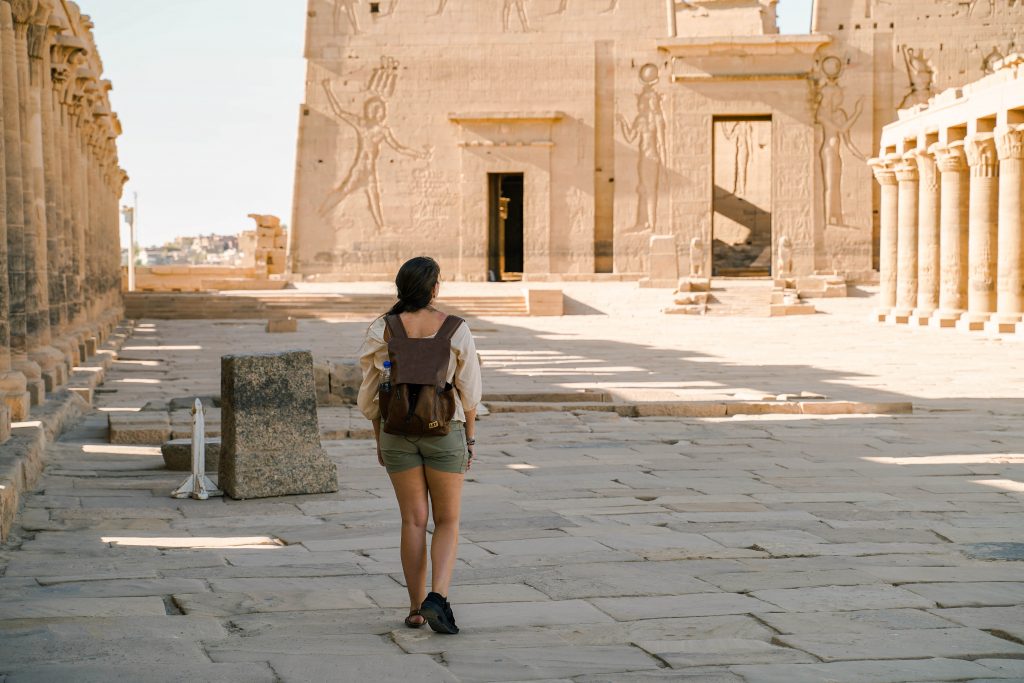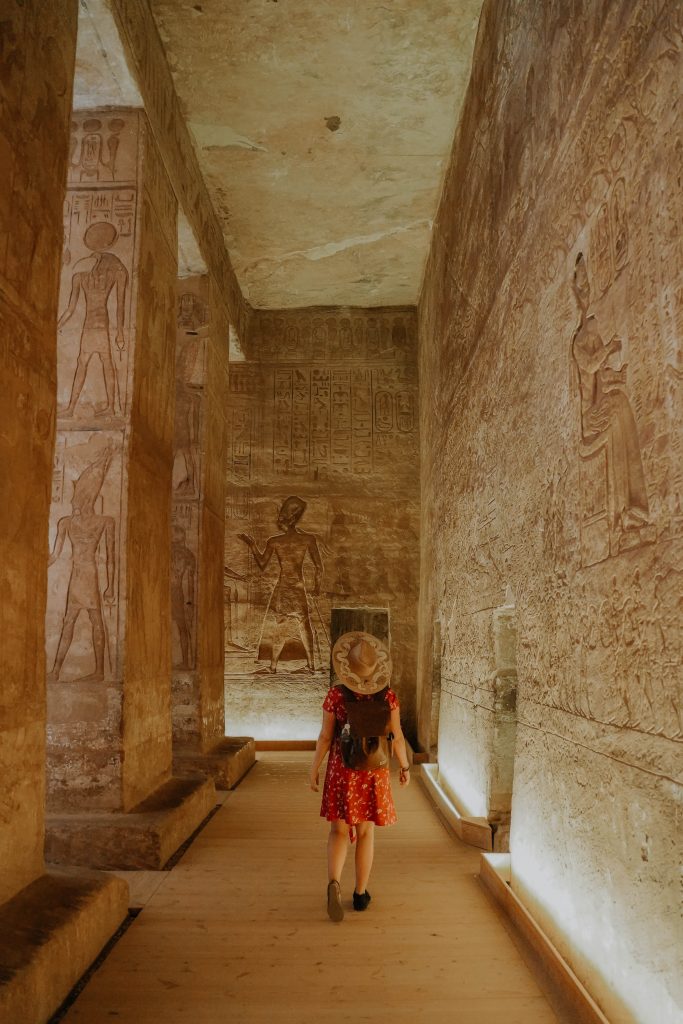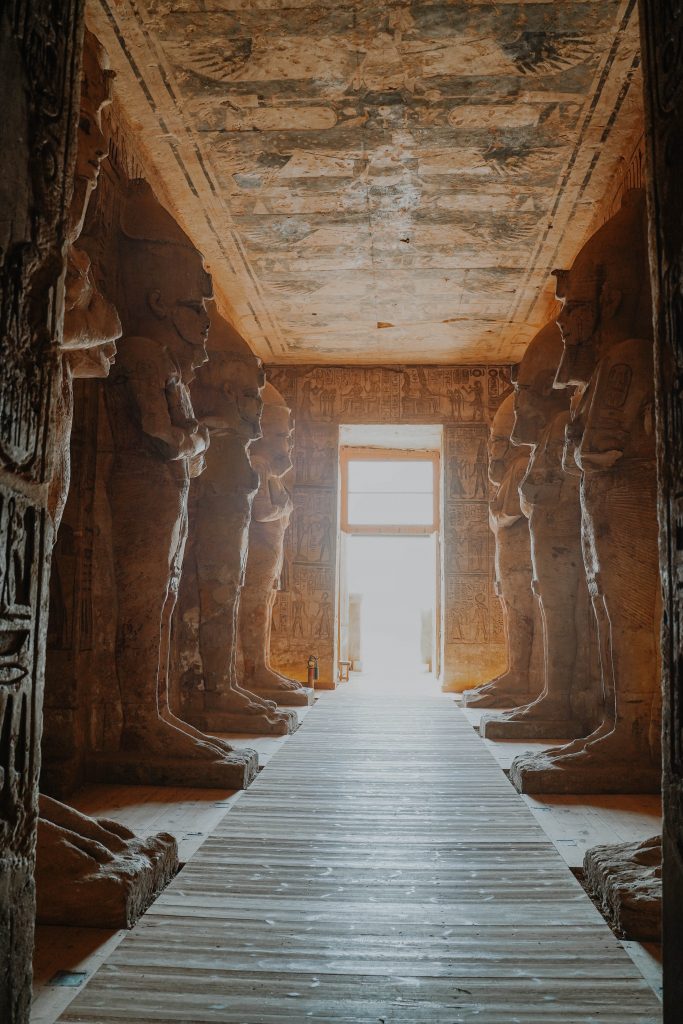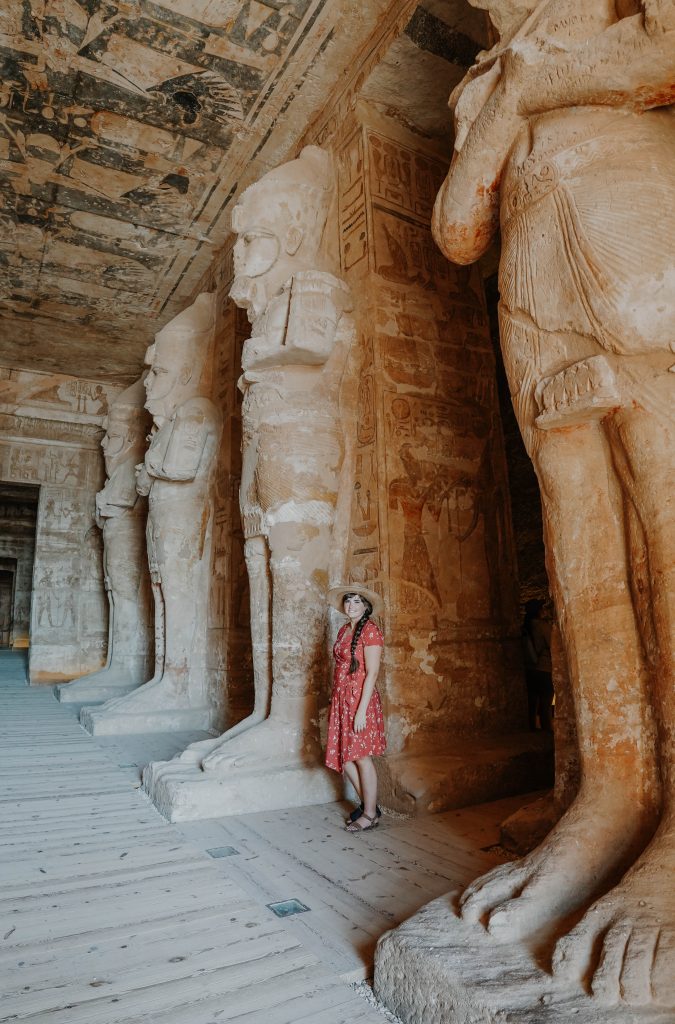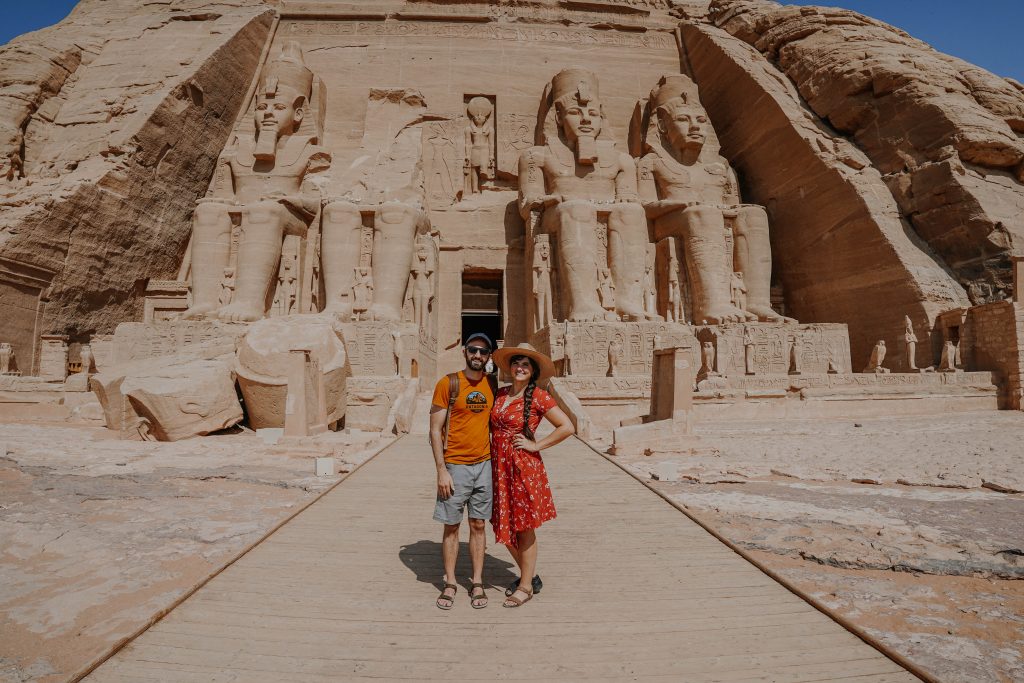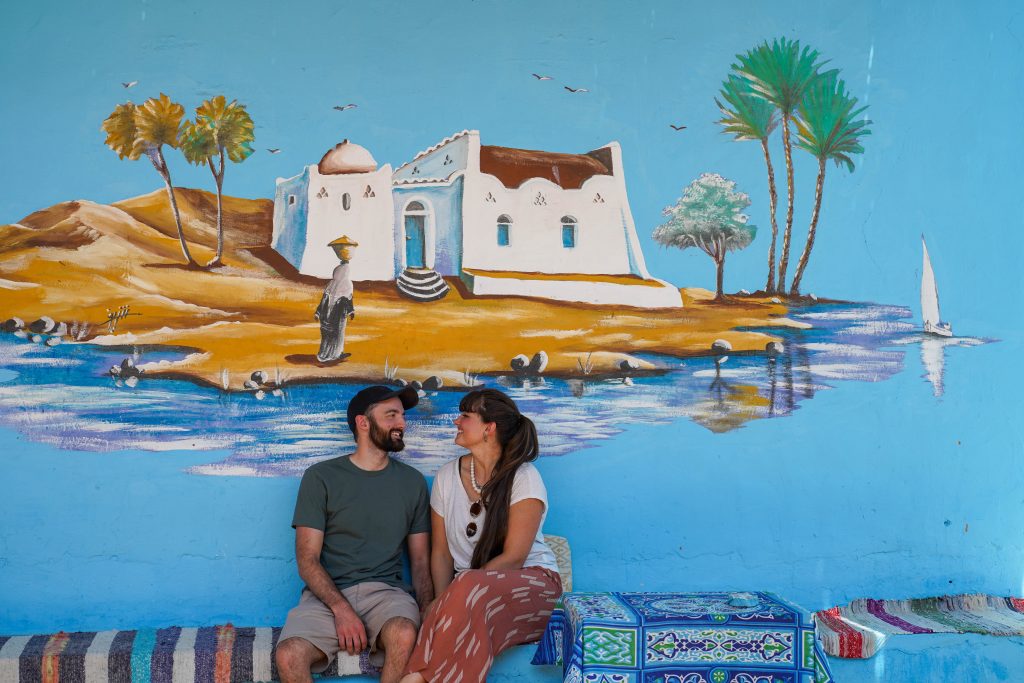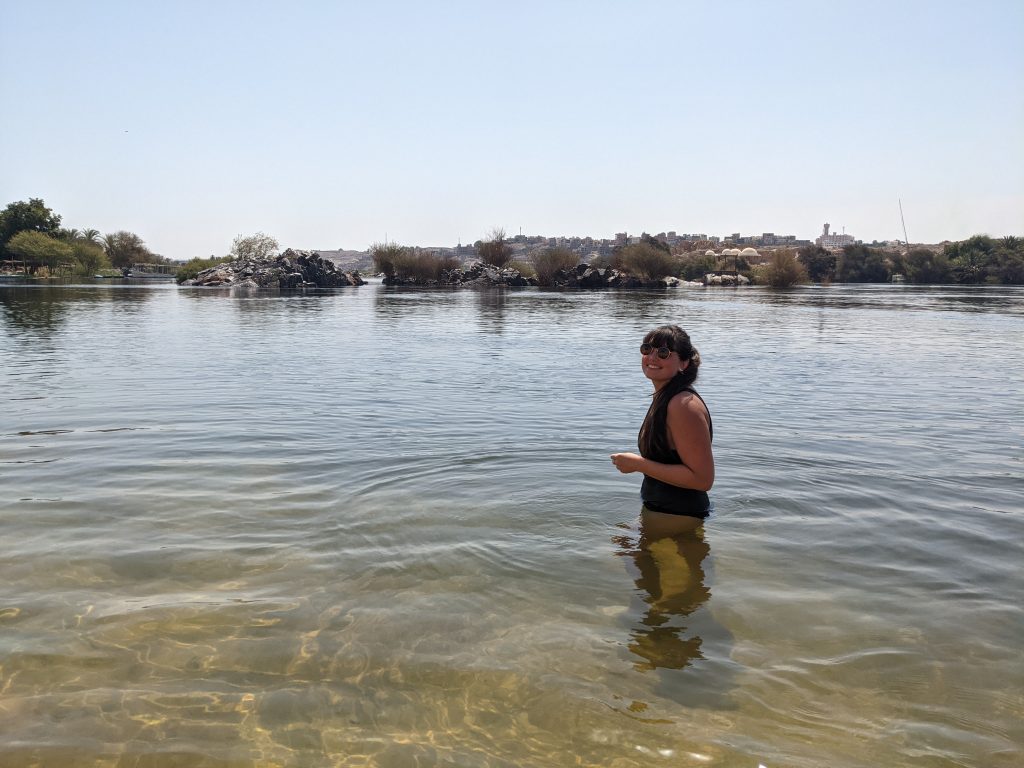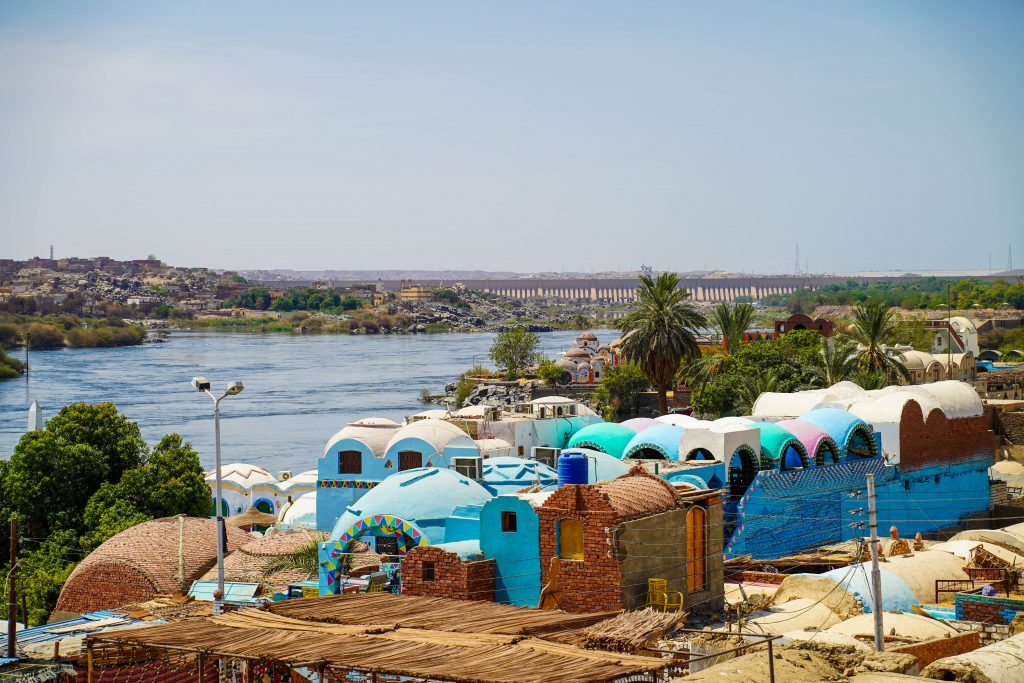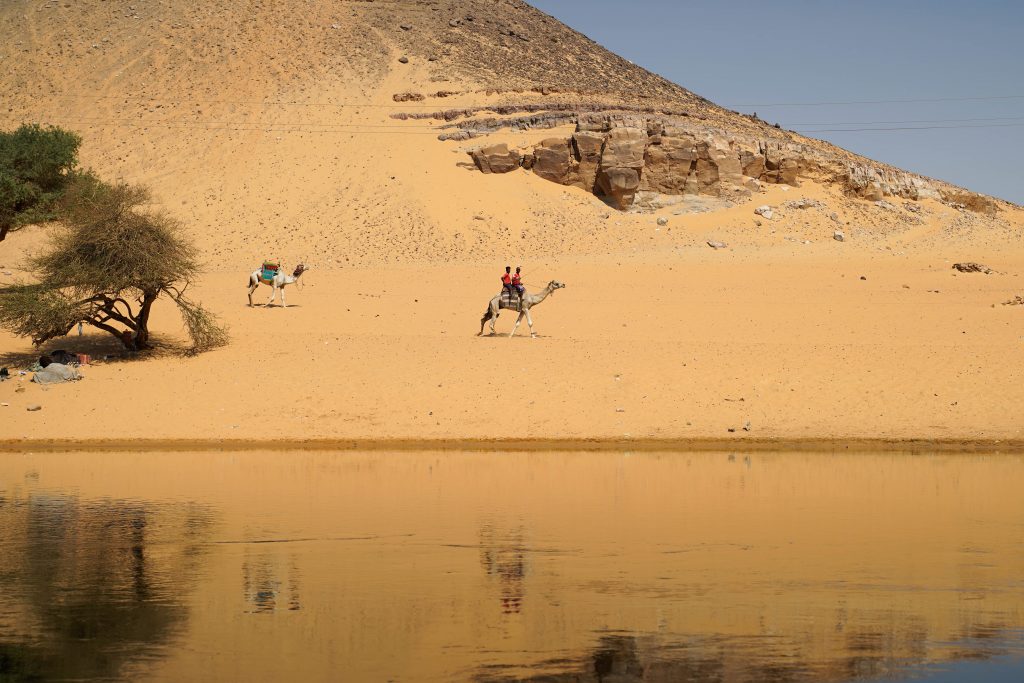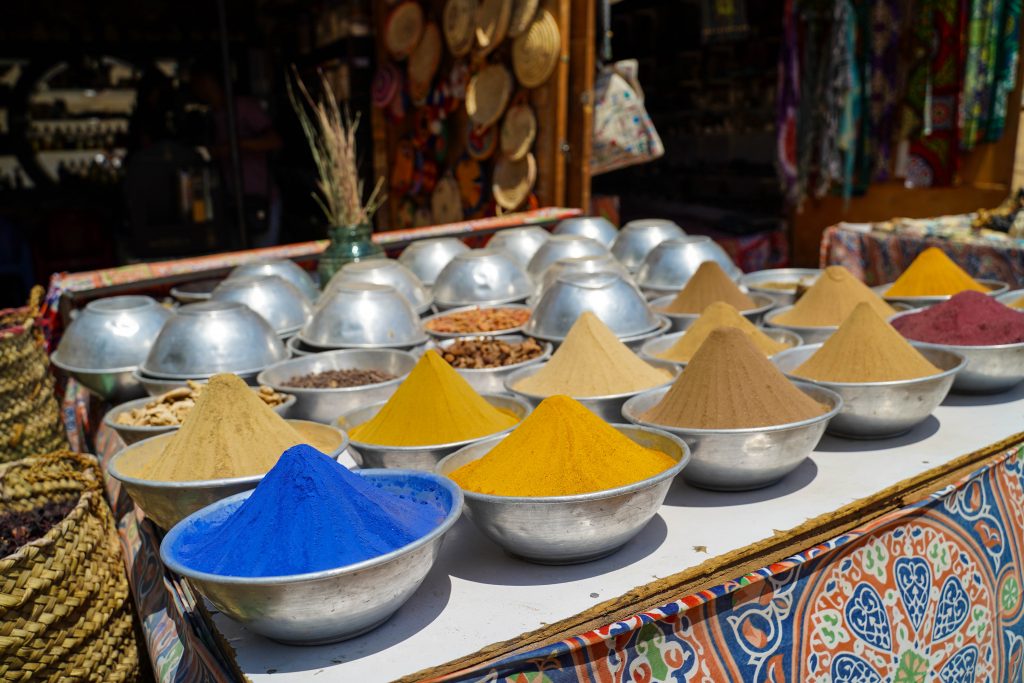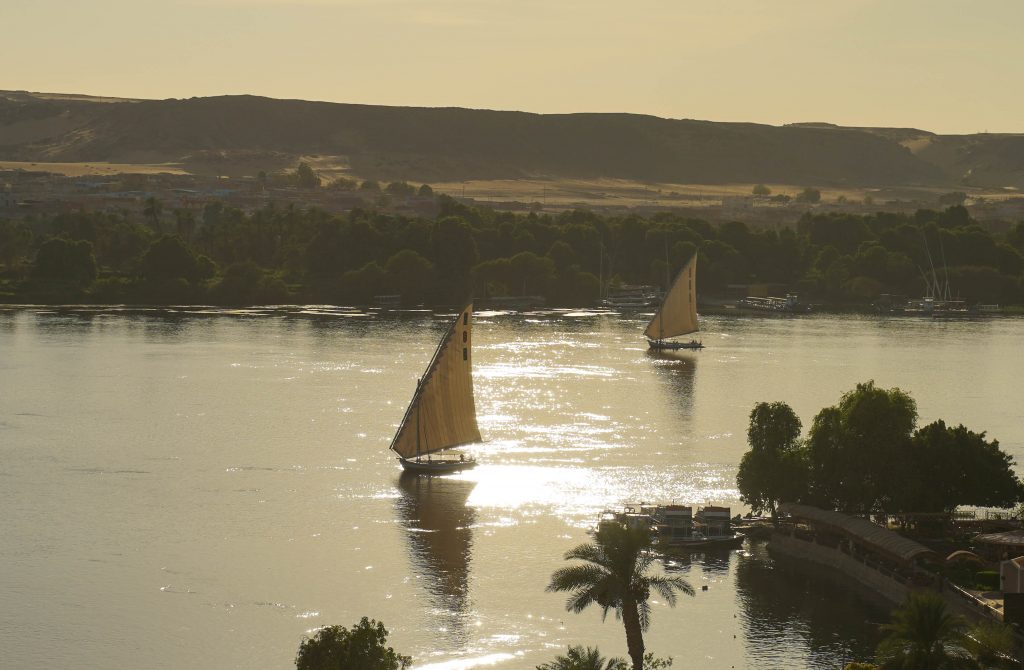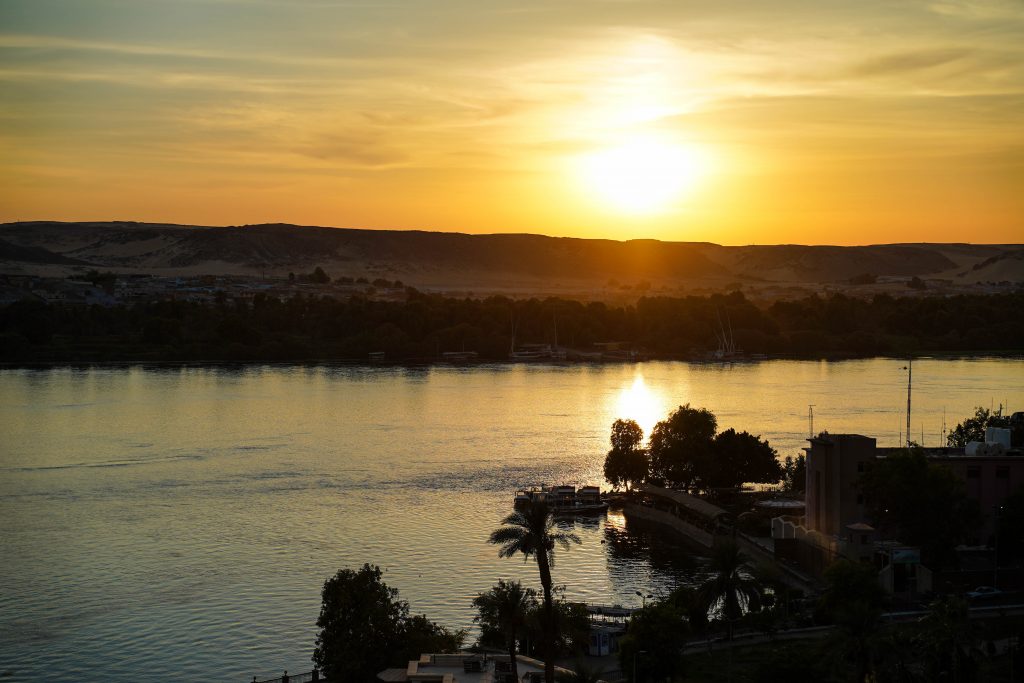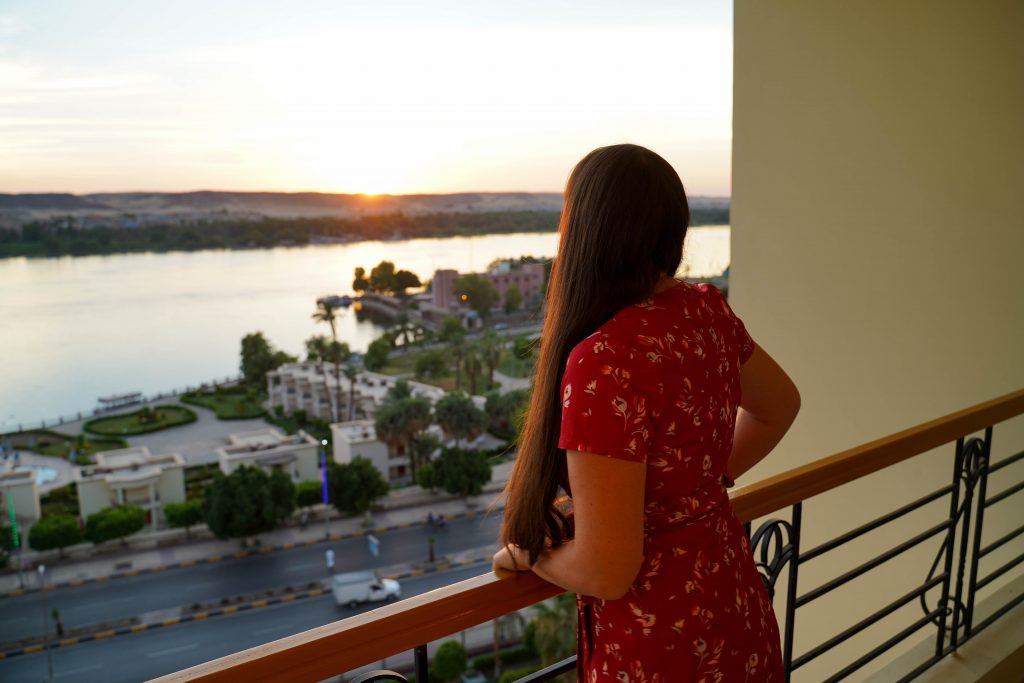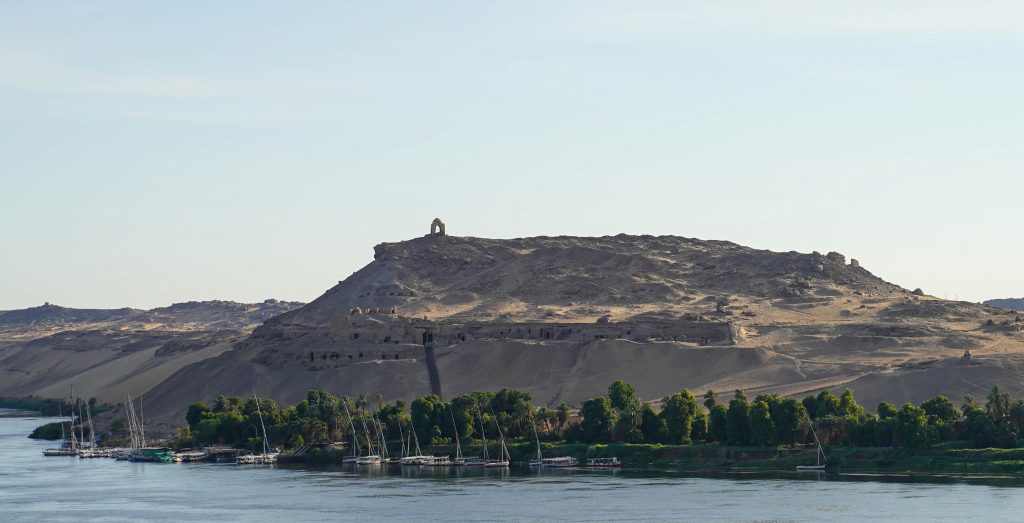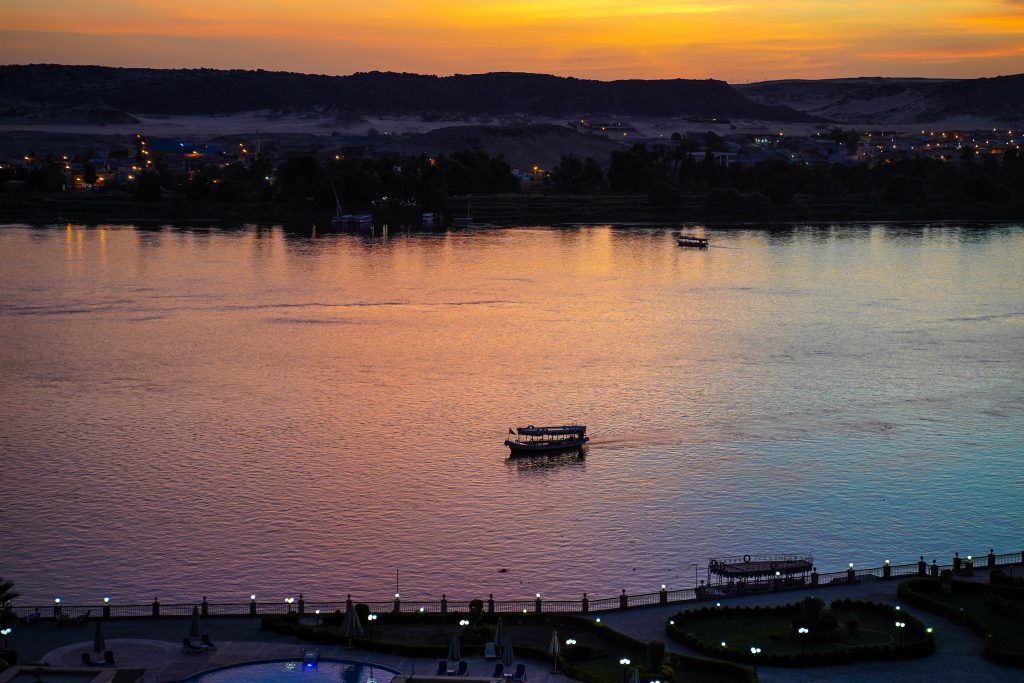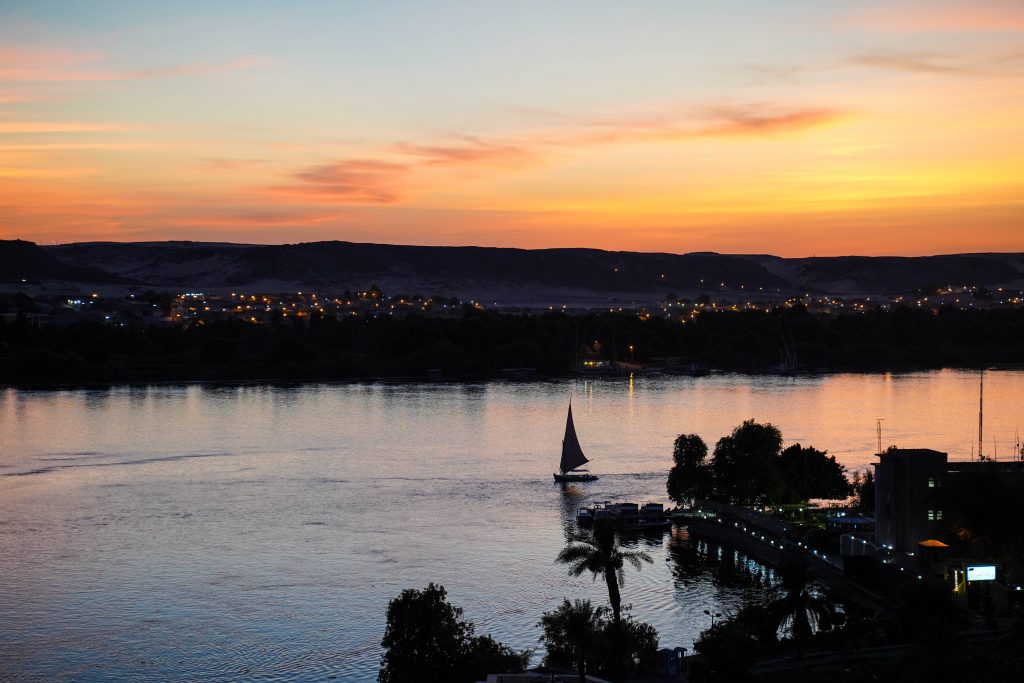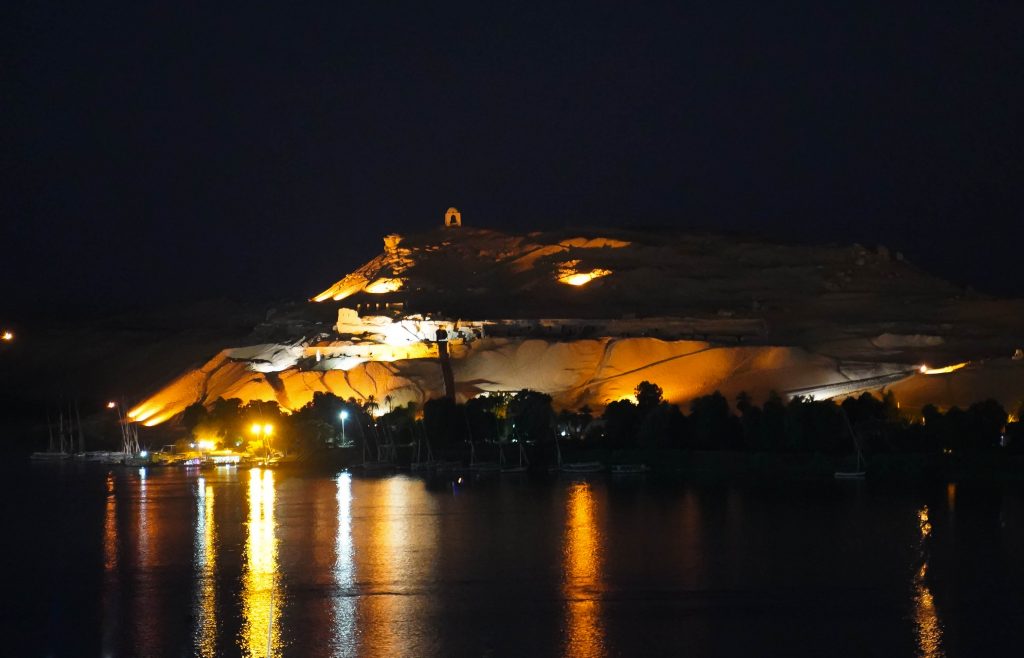When many people picture a trip to Jordan they picture: Petra. While Petra is an incredible and unique historical site, Jordan has so many other richly historical places to visit and one of them is the Roman archeological city Jerash. It’s a special city and archeological site and is known as one of the best preserved Roman ruins in the world. (It is second only to Pompeii)
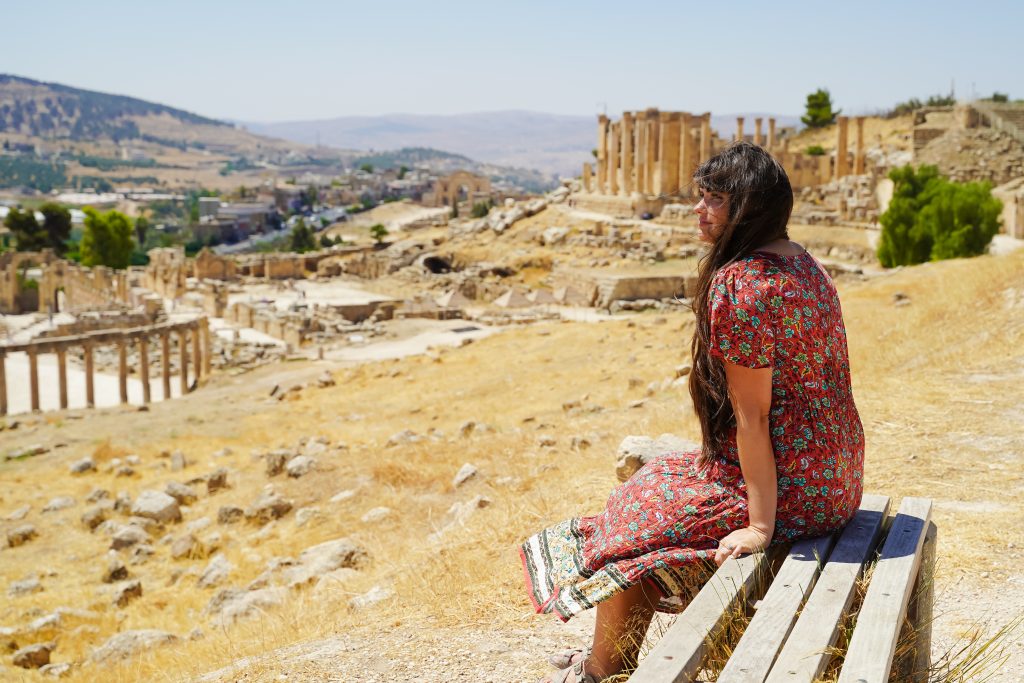
Where is Jerash?
Jerash is a quick 45 min drive North from the capital city of Jordan- Amman.
How to get there:
We visited on a tour however if you want to visit by yourself, traveling via bus is doable and safe. The bus station at Tarbabour (just north of downtown Amman) has the most frequent buses however there isn’t a set schedule as buses leave when they are full. (so add waiting time to your trip if taking this route) The drop off in Jerash city is a quick walk from the ruins and the cost of the bus is just 4 JOD or $5.60 USD.
You could also rent a taxi for the trip which will set you back between $50-$60 for a half day or day tours from Amman are another great option.
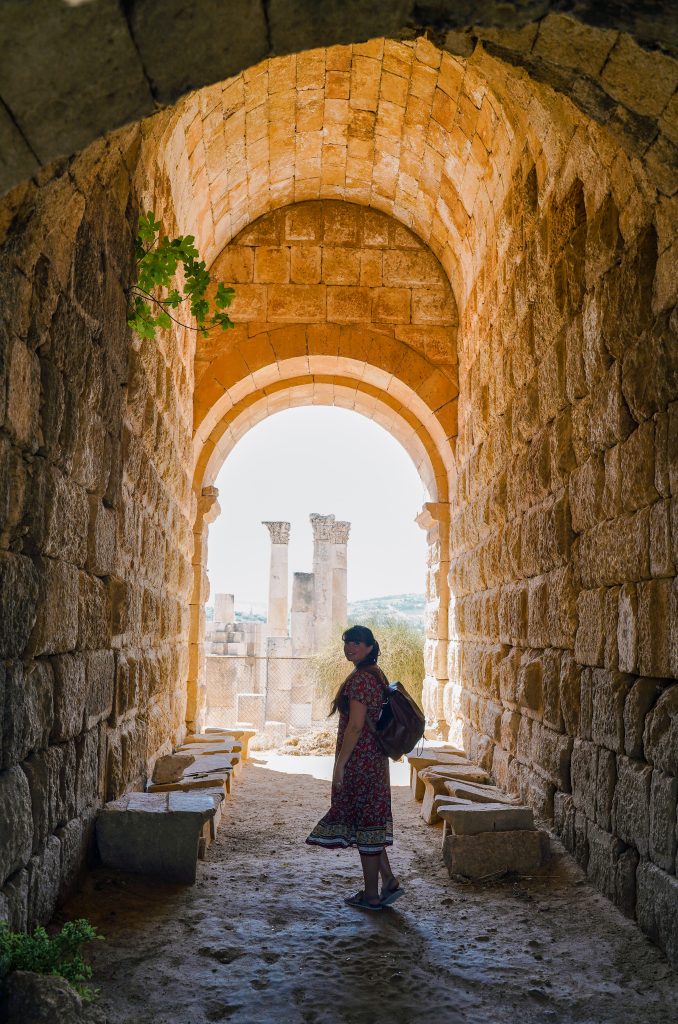
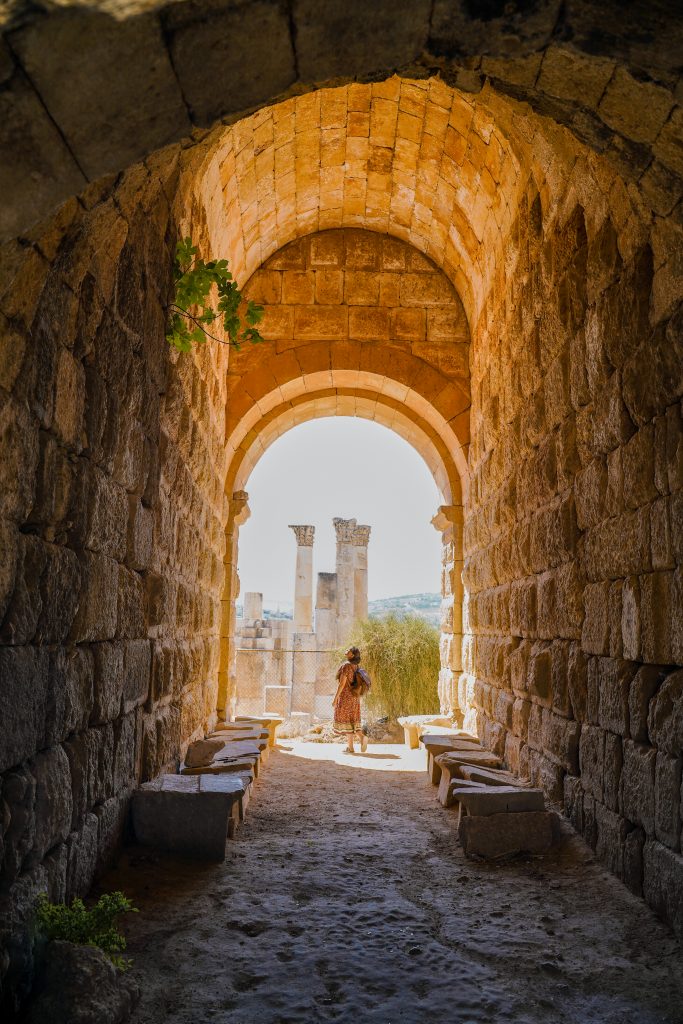
Hours of operation:
Summer hours: 7:30-7:00
Winter hours: 8:00-5:00
Cost of admittance
12 JOD/ $17 USD
History of Jerash
The area around Jerash was originally settled as early as the Neolithic period (7500-5500 BCE) and became a major city during the ancient Greek rule (Hellenistic period around 2000 BCE) The Greek city was known as Gerasa. There is lots of evidence of the Greek foundations with specific temple architecture credited to that time period as well as ancient Greek inscriptions. There are additional inscriptions that allude to the Emperor Alexander the Great’s general passing through this city.
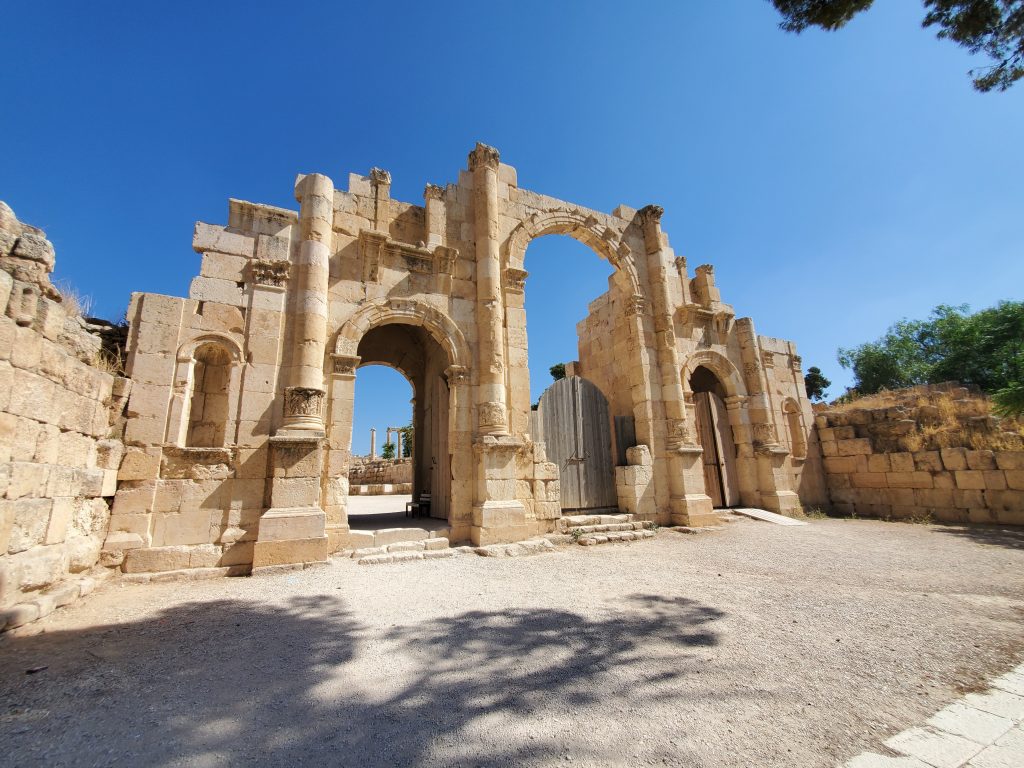
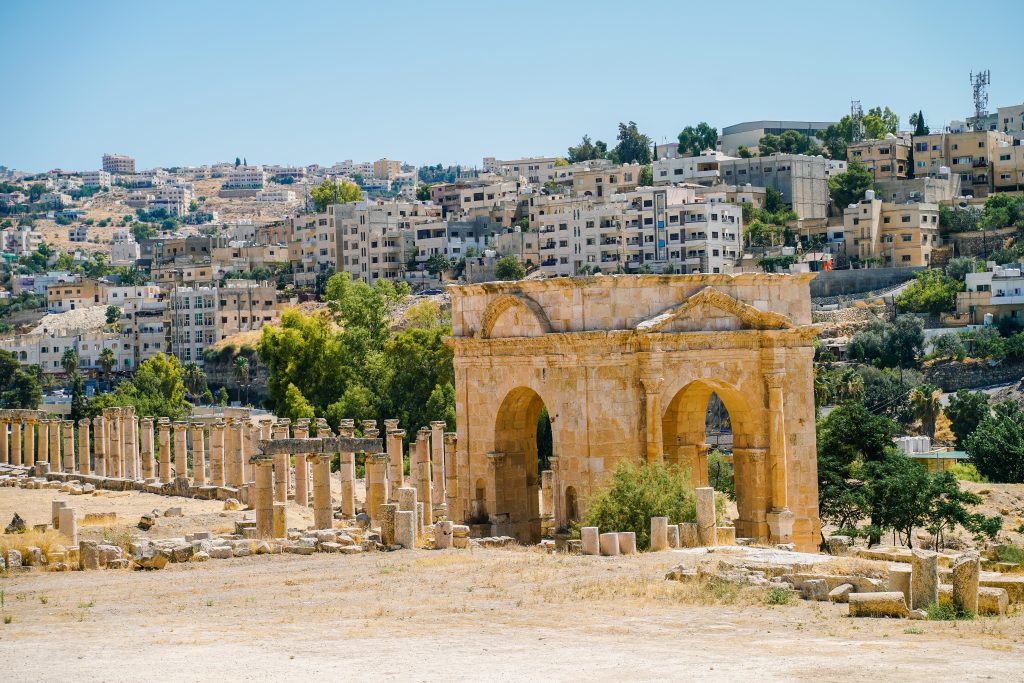
The Roman Empire
The Romans conquered this area in 63 BC and the city was then annexed to the Roman province of Syria as at the time it was mainly inhabited by Syrian people with a small Jewish community. The Syrian province worked mainly as semi-autonomous cities that relied on Rome for protection but otherwise maintained some degree of freedom from Roman politics. Around AD106, Jerash was absorbed into the province Arabia (which included the ancient city located in Amman and Petra.) The Arabian culture at the time was known as Nabataean and many of this culture’s coins, art, and other influences found within Petra are also found in Jerash. (one such example is a temple dedicated to a Nabataean god called Pakidas.
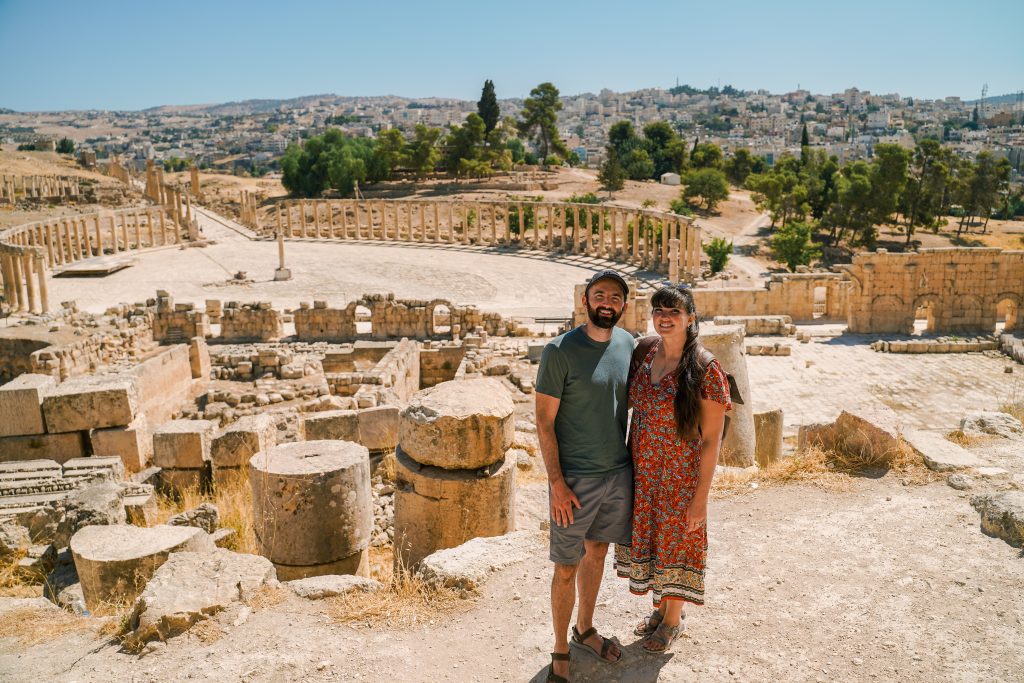
While Jerash flourished due to its prime location at the axes of several trade routes, it became even more affluent under the Emperor Tajan. He ordered new roads built within the city in order to support another major trade route known as the new Trajan road connecting Bosra to the Red Sea gateway in Aqaba.
The majority of the structures still standing today date from the rule of Roman Emperor Hadrian who actually visited and stayed in Jerash during the winter of 129 CE. (see photos below of the triumphal arch built for his visit known as “Hadrian’s Arch.” Jerash’s wealth during this time period enabled ambitious programs of public works including new temples. The population by 175 AD is estimated to be anywhere from 10,000 to 25,000 people.
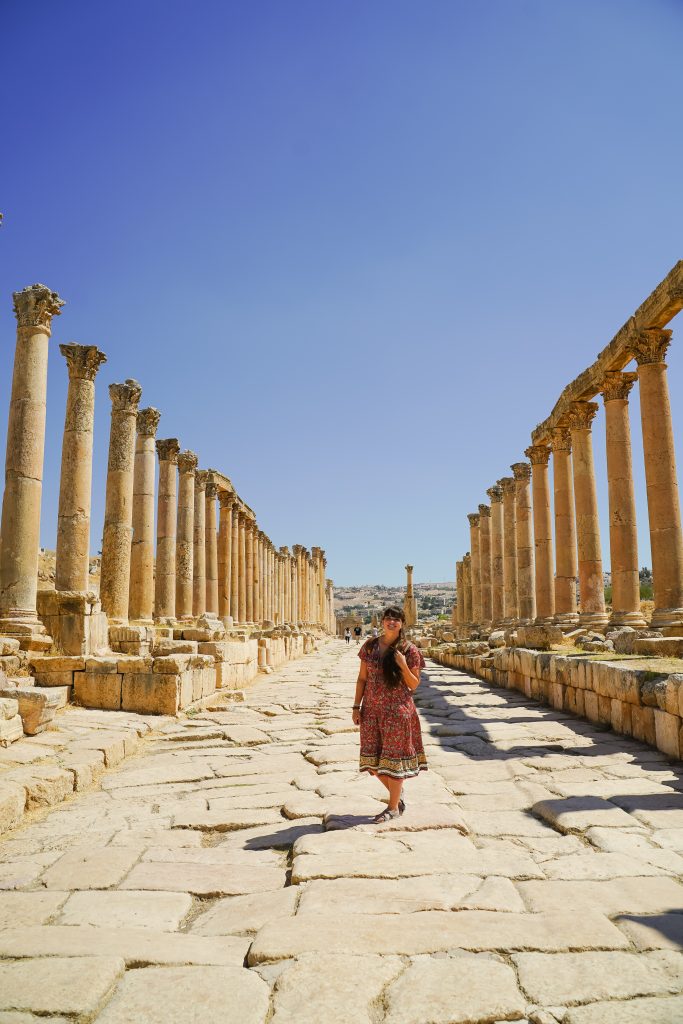
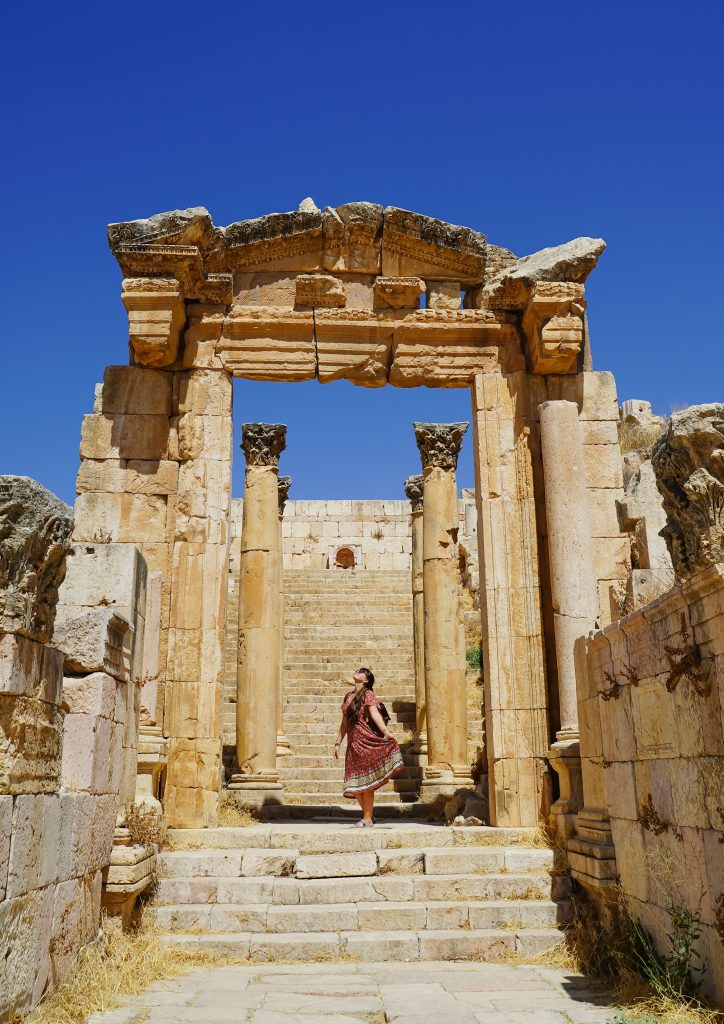
The Byzantine Empire
It’s unknown when Christianity arrived to the city, however Jerash flourished under the rule of the Byzantine Empire. As many as 15 churches were built by 600 AD. Many of the churches once contained amazing mosaics that were later damaged by earthquakes and invading Arab armies. (There are some amazing mosaics from this time period visible in the ruins still.)
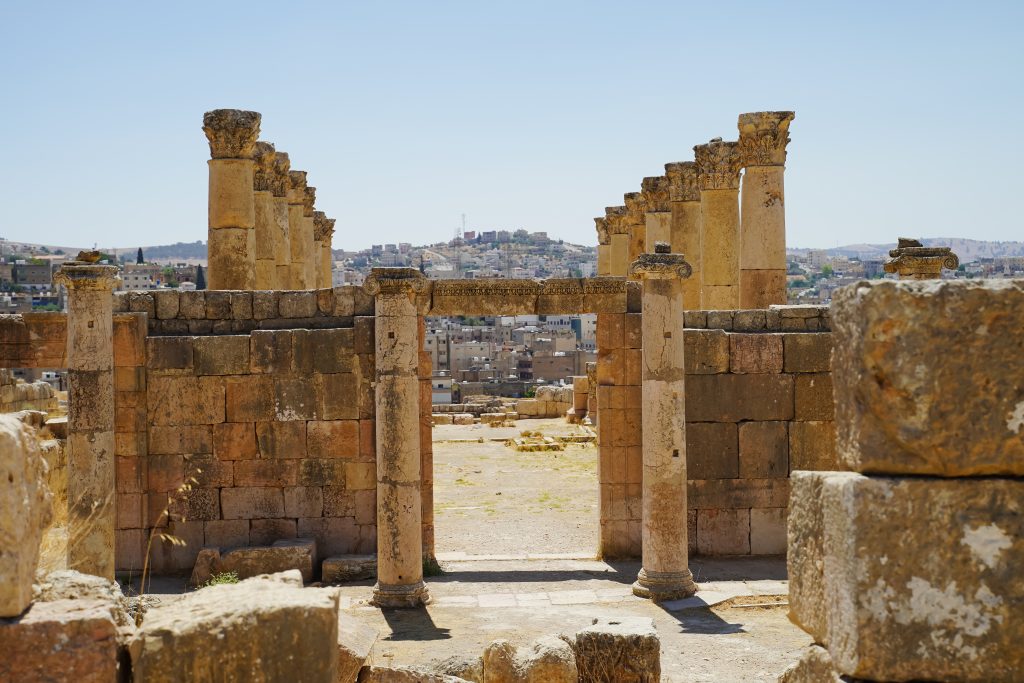
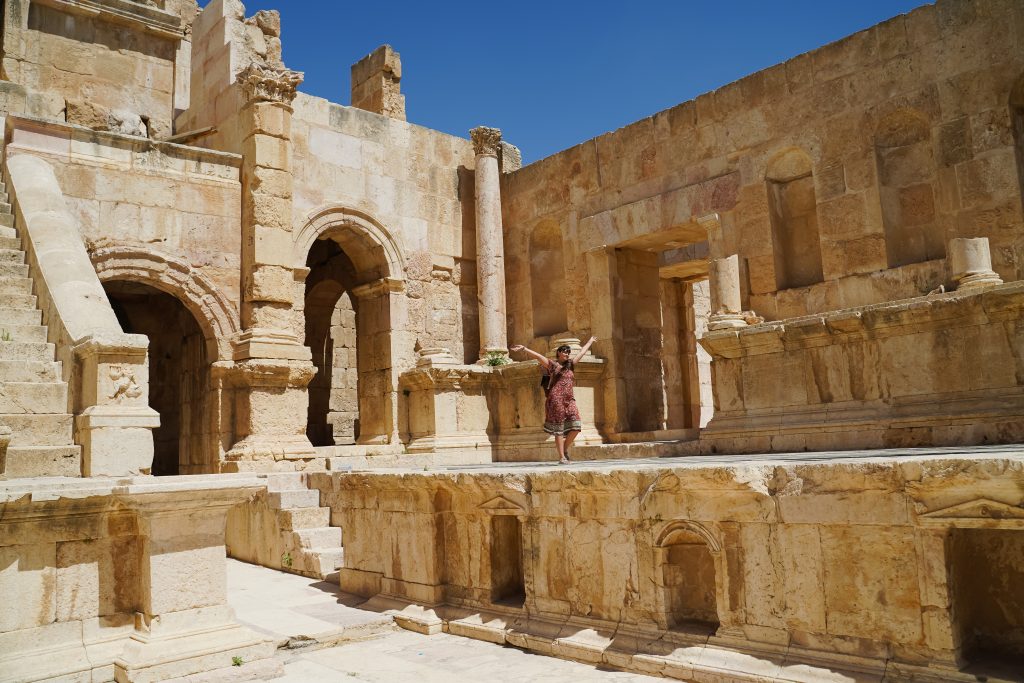
The Fall of Jerash
Persian armies captured, plundered, and occupied Jerash between 614-630 weakening it so much that when the Arabs arrived in 636, the city surrendered immediately. This was the major start of decline for the city and while it still survived as a small and humble city for some years, the wealthiest citizens abandoned it (likely for the major city Damascus). This coupled with new trade routes bypassing the region altogether caused a steeper decline. By 1130 the city had long been abandoned and fallen to ruins.
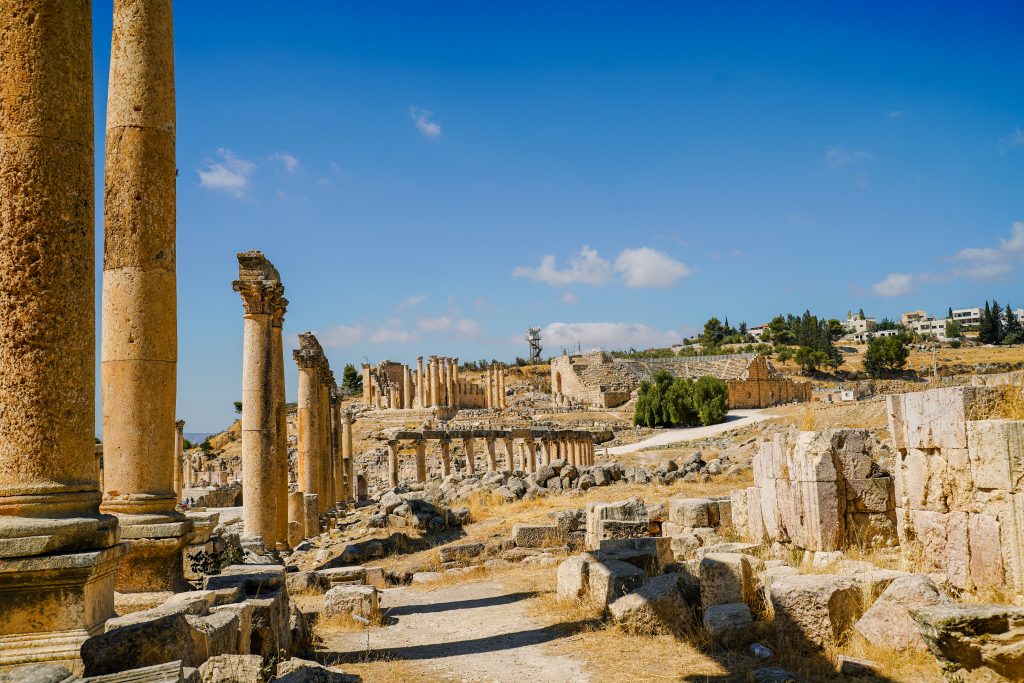
Points of Interest:
*I recommend walking the loop in counter clockwise and ending at the south theater or temple of Zeus.
Hadrian’s Gate
As previously mentioned the Emperor Hadrian actually visited and stayed in Jerash during the winter of 129 CE and in honor of his visit, a colossal archway was constructed at the south entrance to the city. Hadrian’s gate is likely the first part of the city and monument you will see as you arrive from Amman and marks the start of your fore way into history.
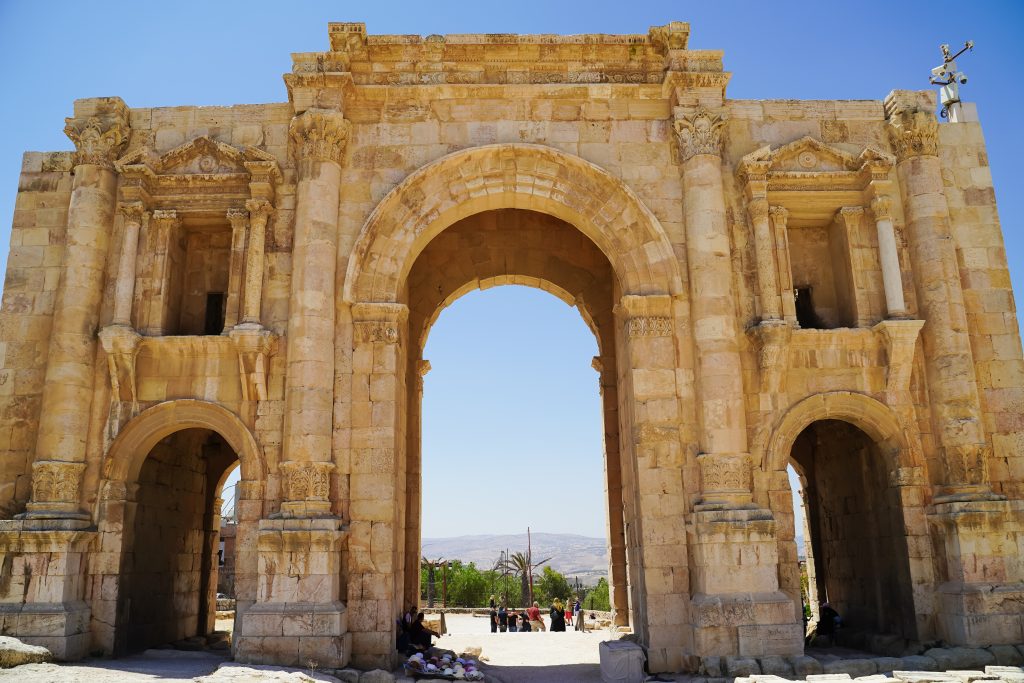
Hippodrome
This was a common sporting arena used or gladiator battles and most importantly chariot races. The Jerash hippodrome is anticipated to have had capacity for 15,000 spectators.
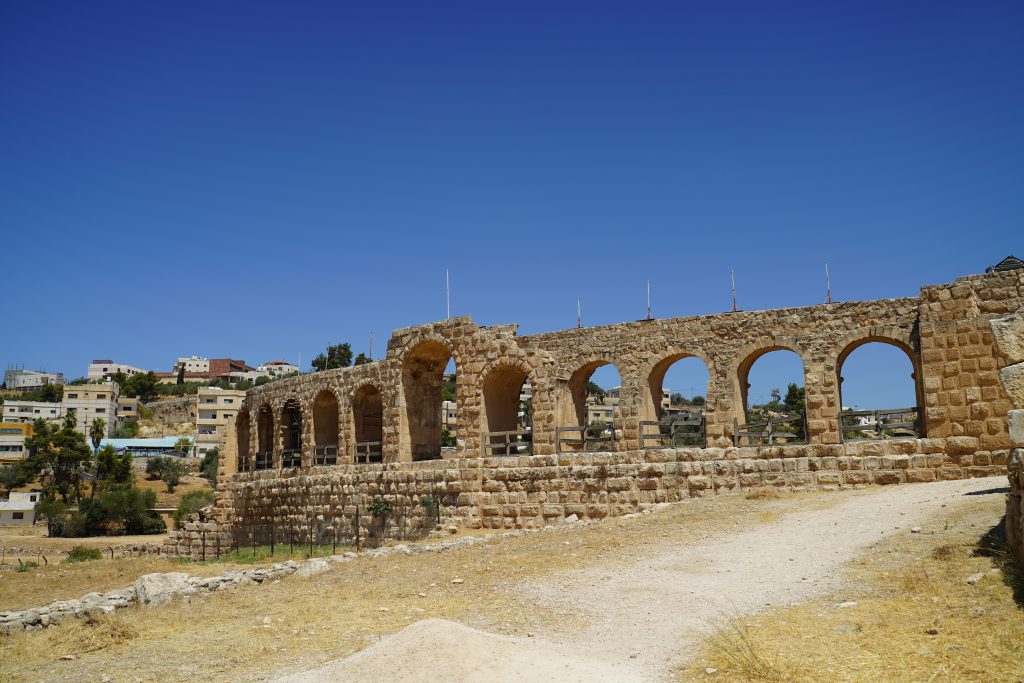
Forum (Oval Plaza)
The oval plaza served as the city’s forum and marketplace during Jerash’s Golden Age and is about 300 feet by 300 feet in width and diameter. It has 56 Iconic columns surrounding it and is an impressive place to take in from views on the above hillsides.
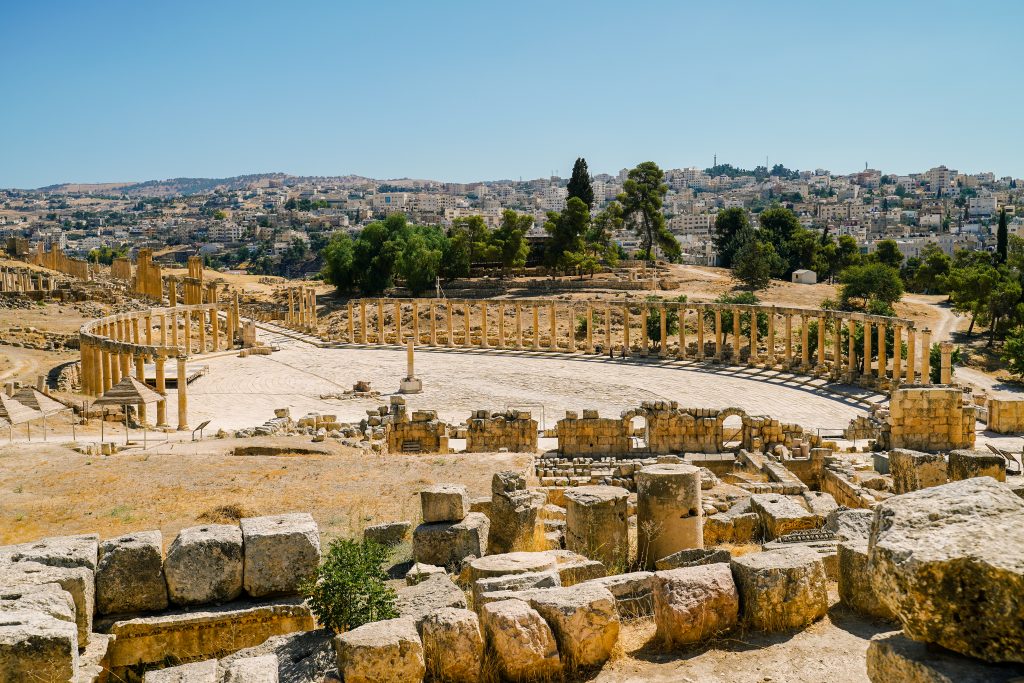
Colonnaded street
This was the main road through the city and overall region- it connected both the North and South gates. Admire how well the road has held up after all this time, including the visible wheel marks in the stone in some places.
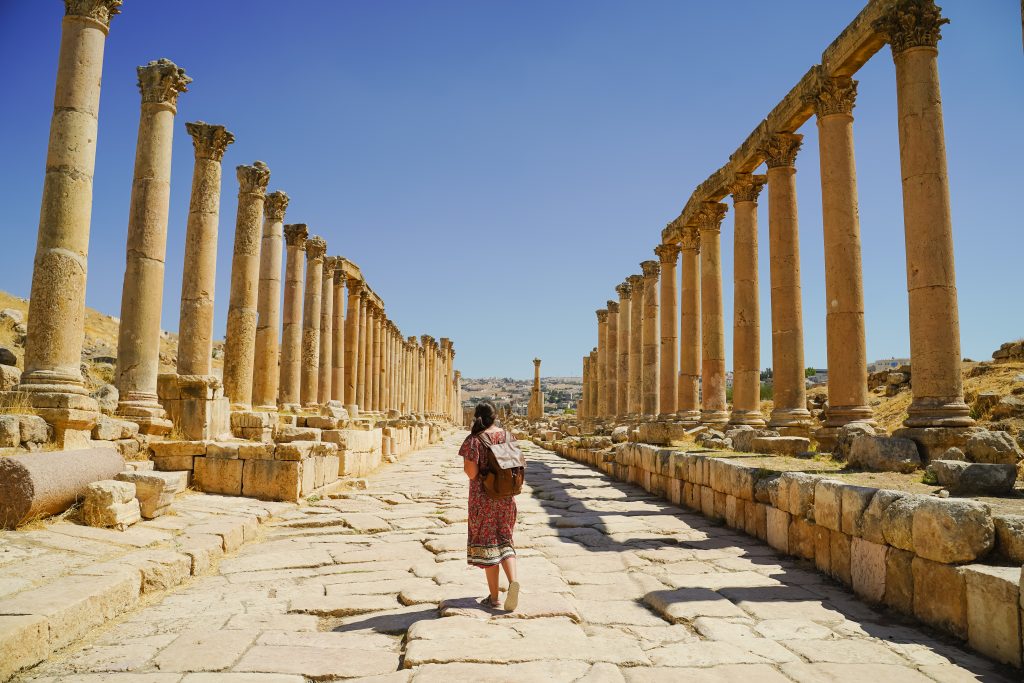
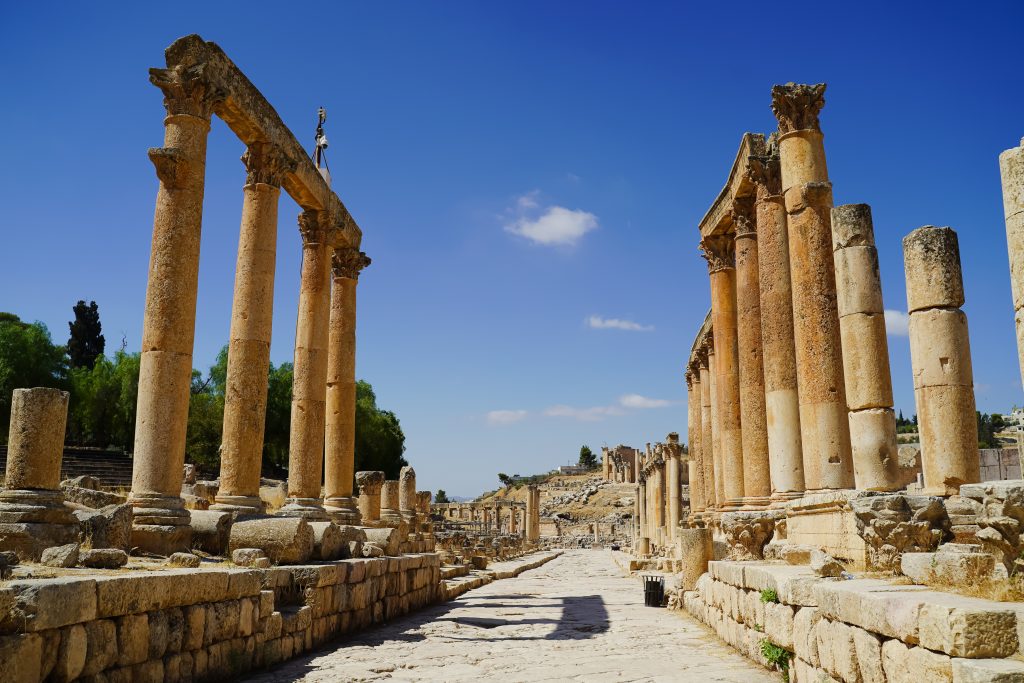
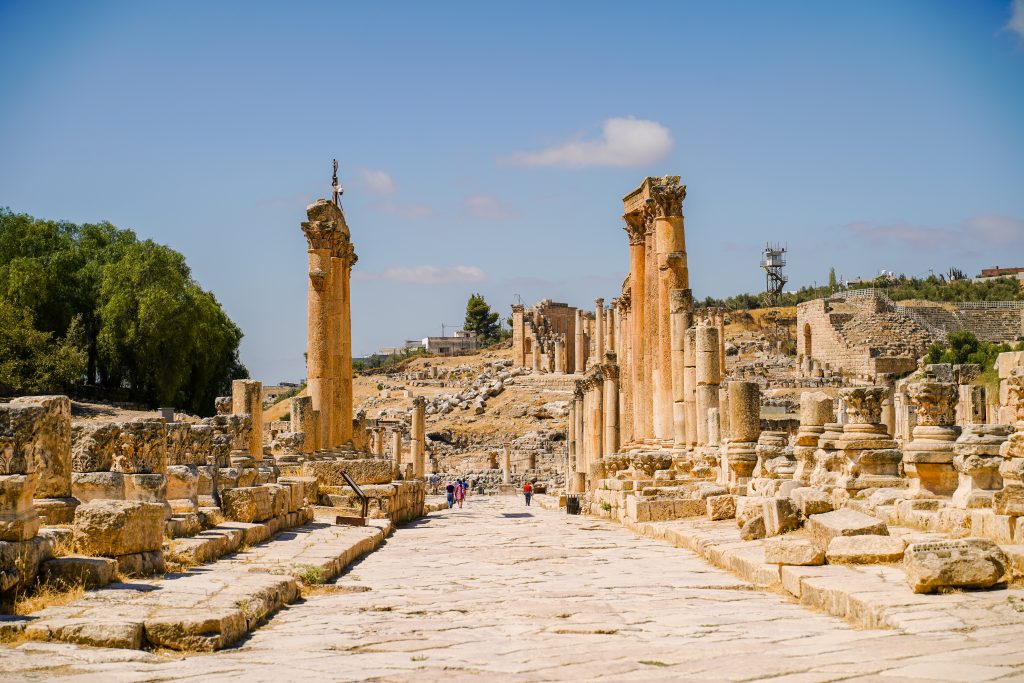
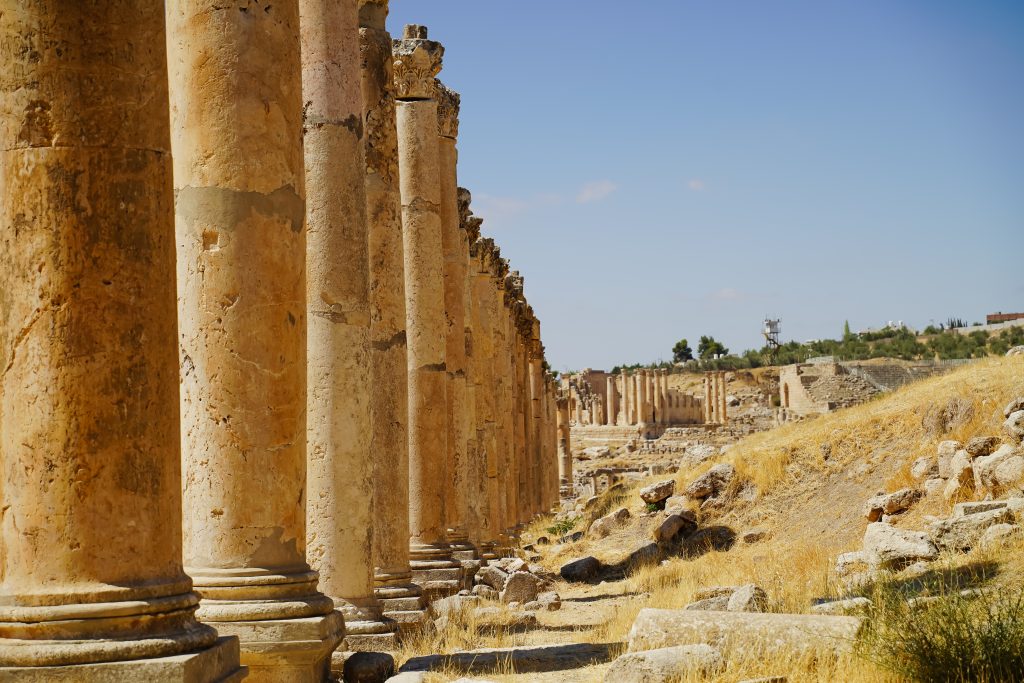
North Theater
This theater is built similarly to the South theater but has a few more nooks and crannies open for exploring. The other very unique feature is the colorful mosaic floor in the center of the theater as it converted into a church during the Byzantine rule.
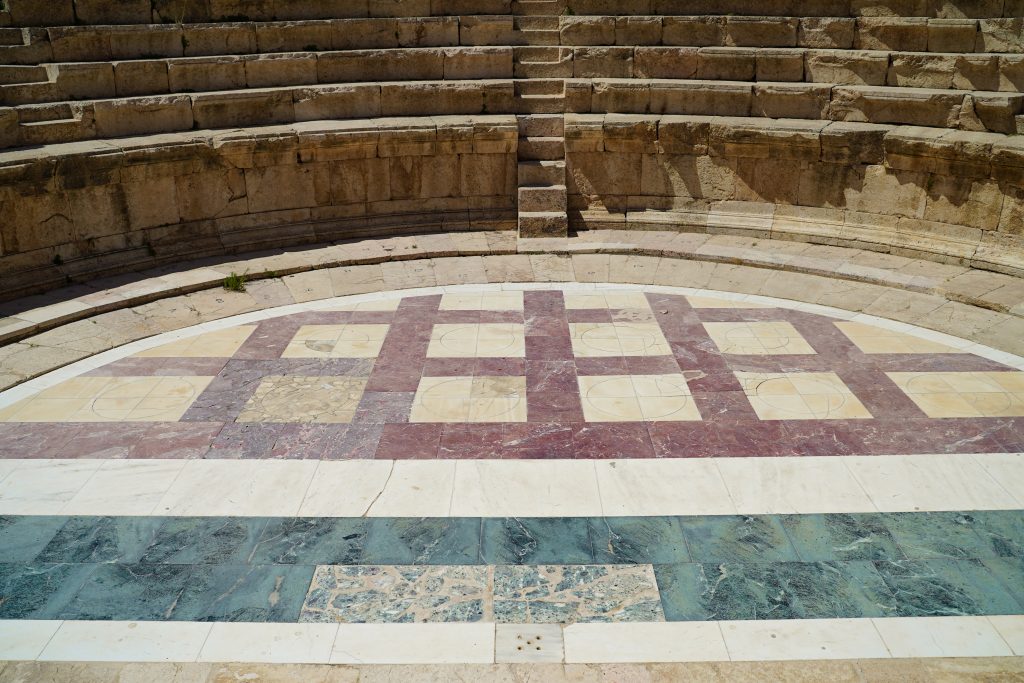
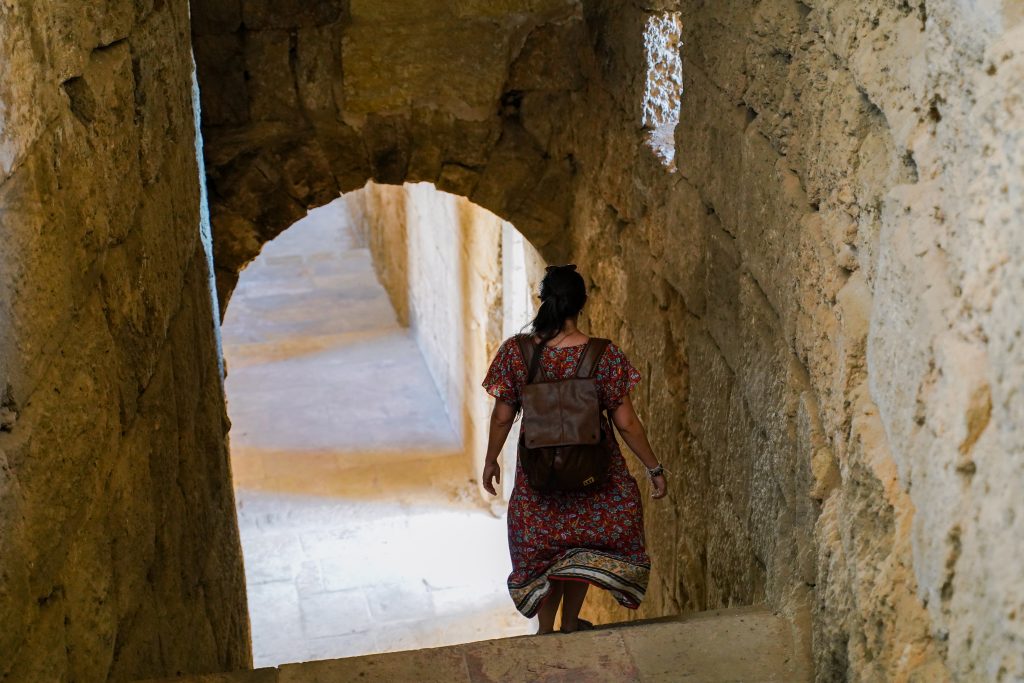
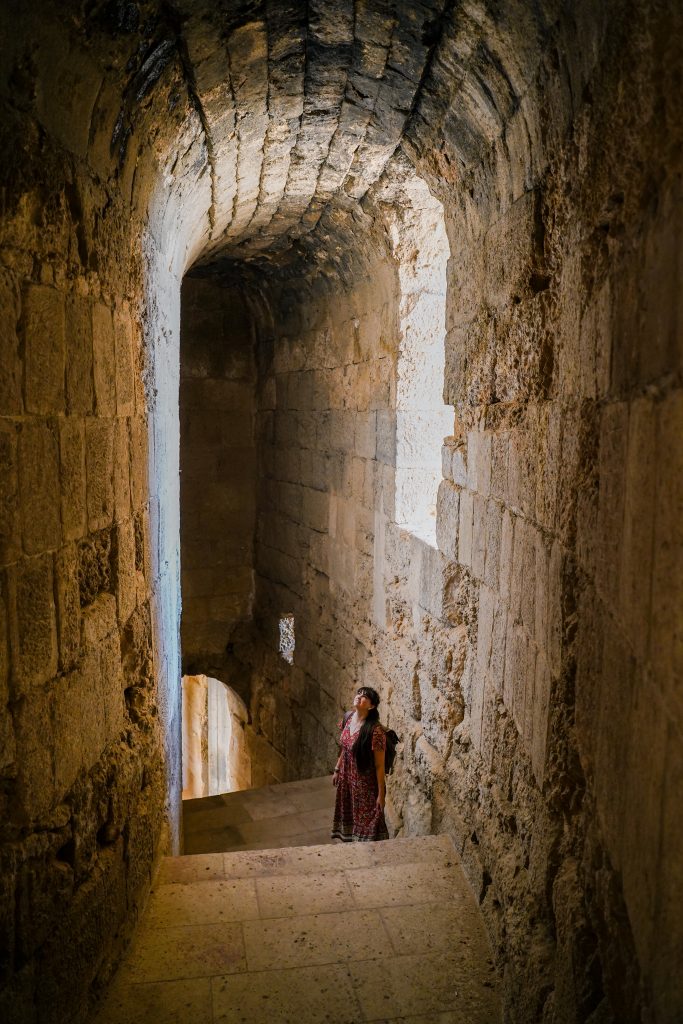
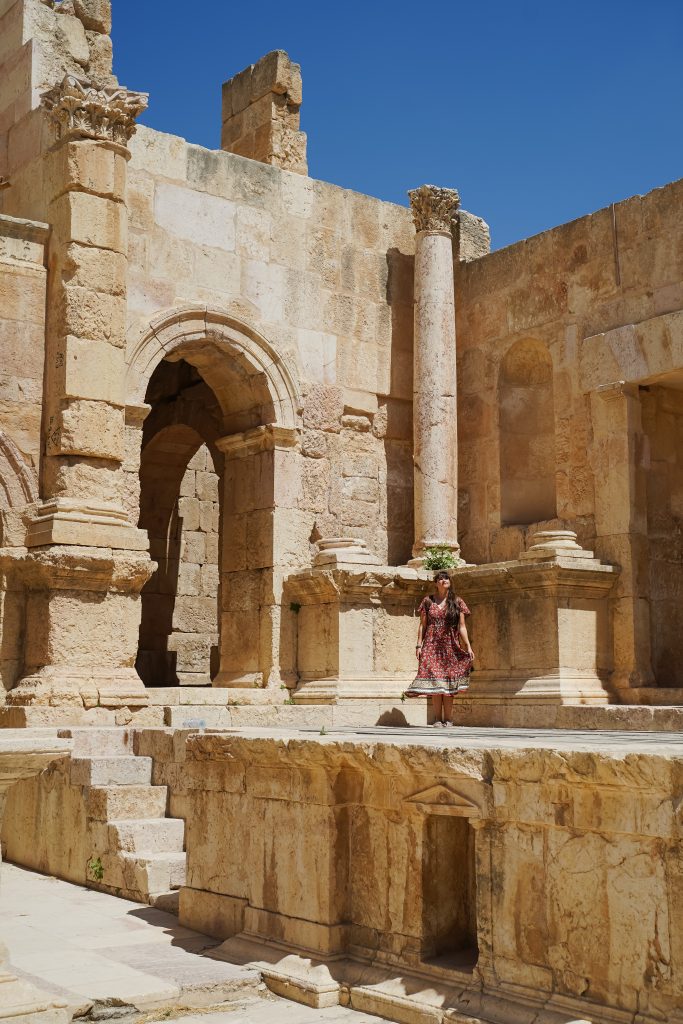
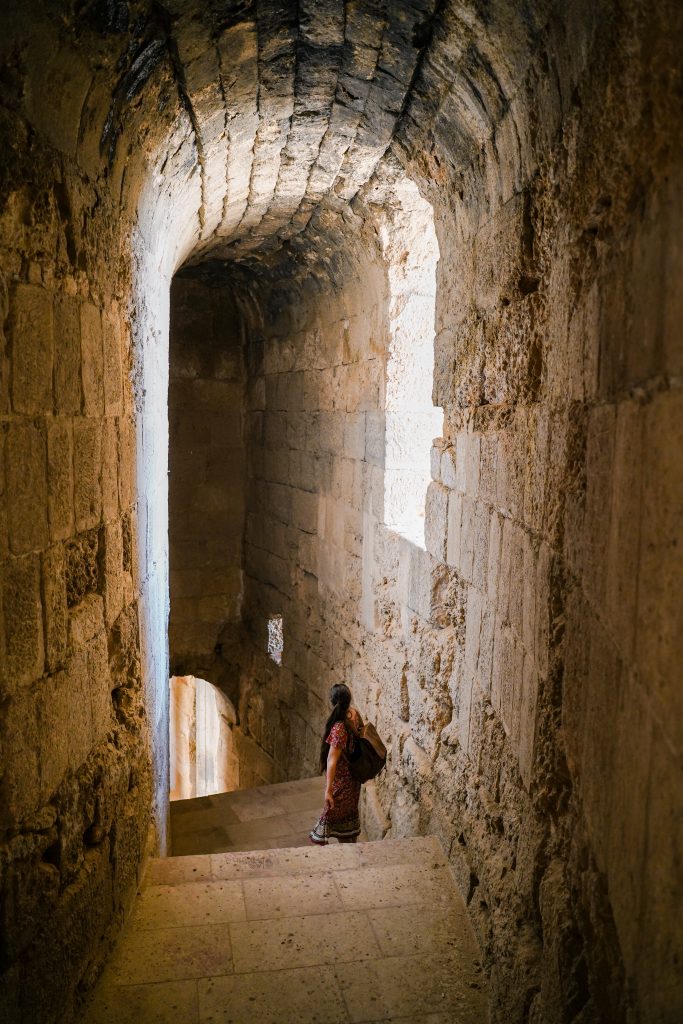
Temple of Artemis
As the daughter of Zeus, Artemis was a popular patron goddess among the people of the region. This temple was built in 200 AD and 11 of the temple’s 12 original columns are still standing.
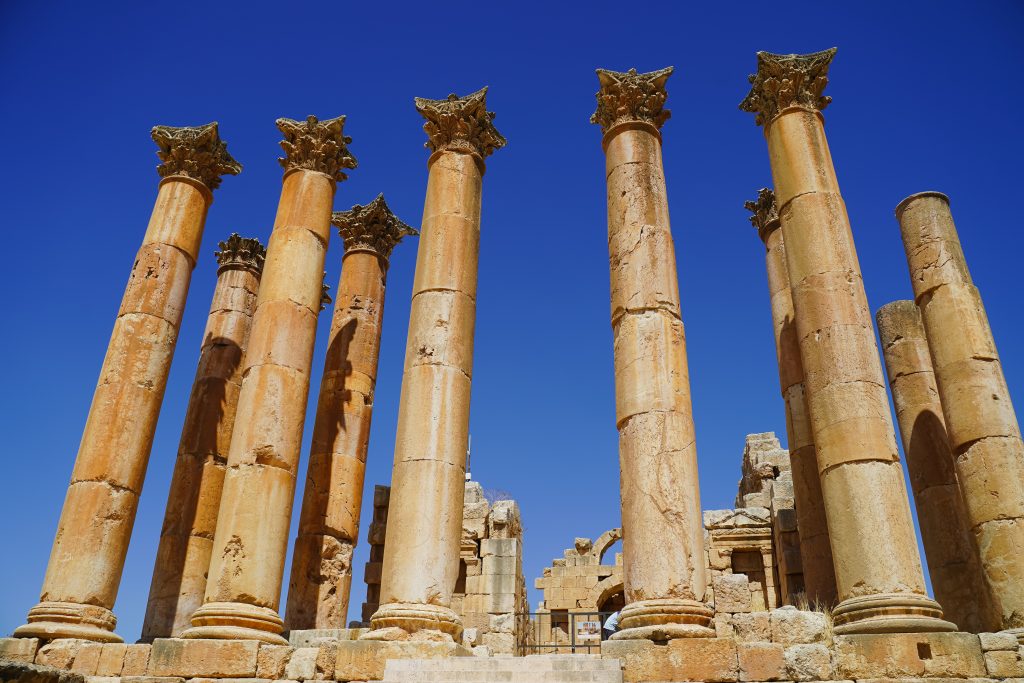
One of my favorite spots was the short bit of walk between the temple of Artemis and Zeus. The views from that hill were just amazing! I’d def recommend walking that whole loop and climbing the hill to this view.
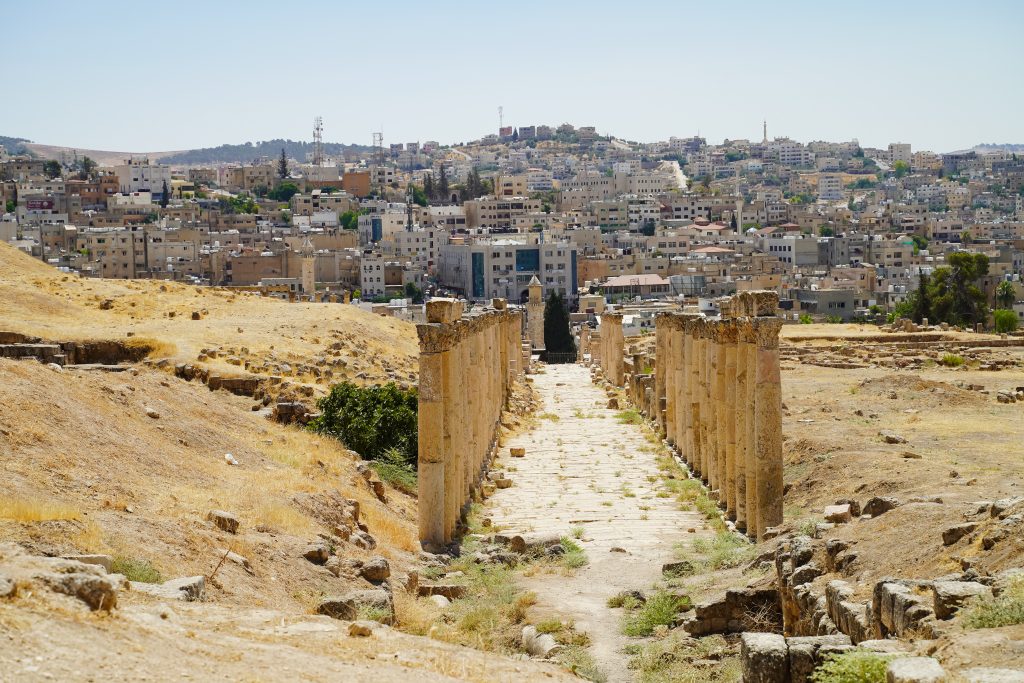
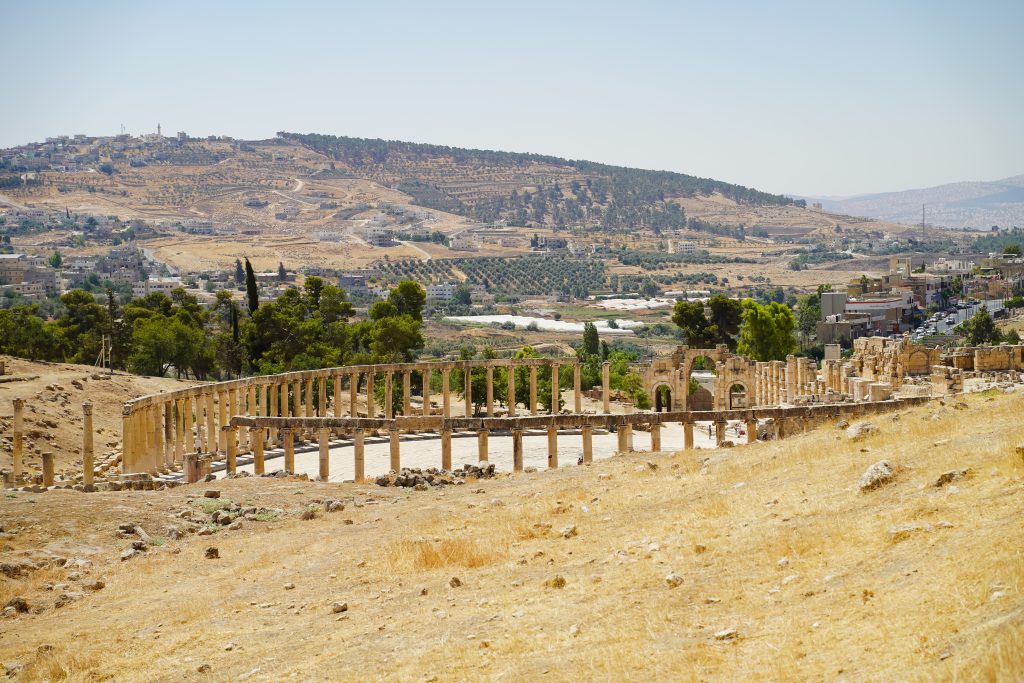
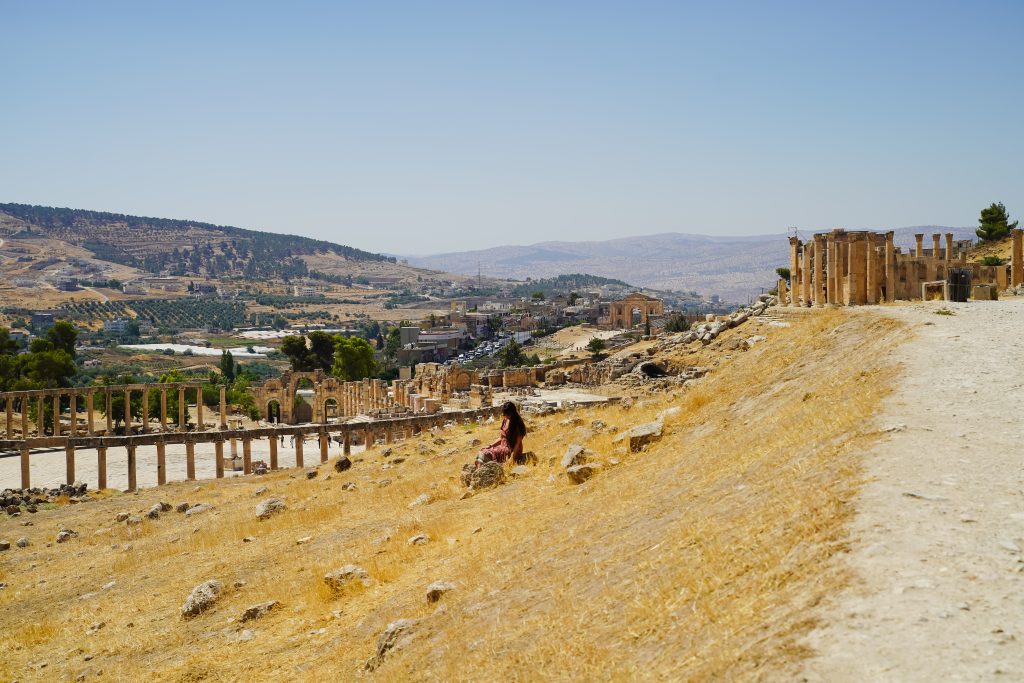
South Theater
This is the larger theater of the two and usually has a small band or guys playing bag pipes performing in there. If you notice this make sure you drop a coin or two. (Jordan is a lot better than Egypt in regards to tips as for 1: Bathroom tips are actually optional everywhere we went, so when your guide mentions it as bad form not to tip… you probably should)
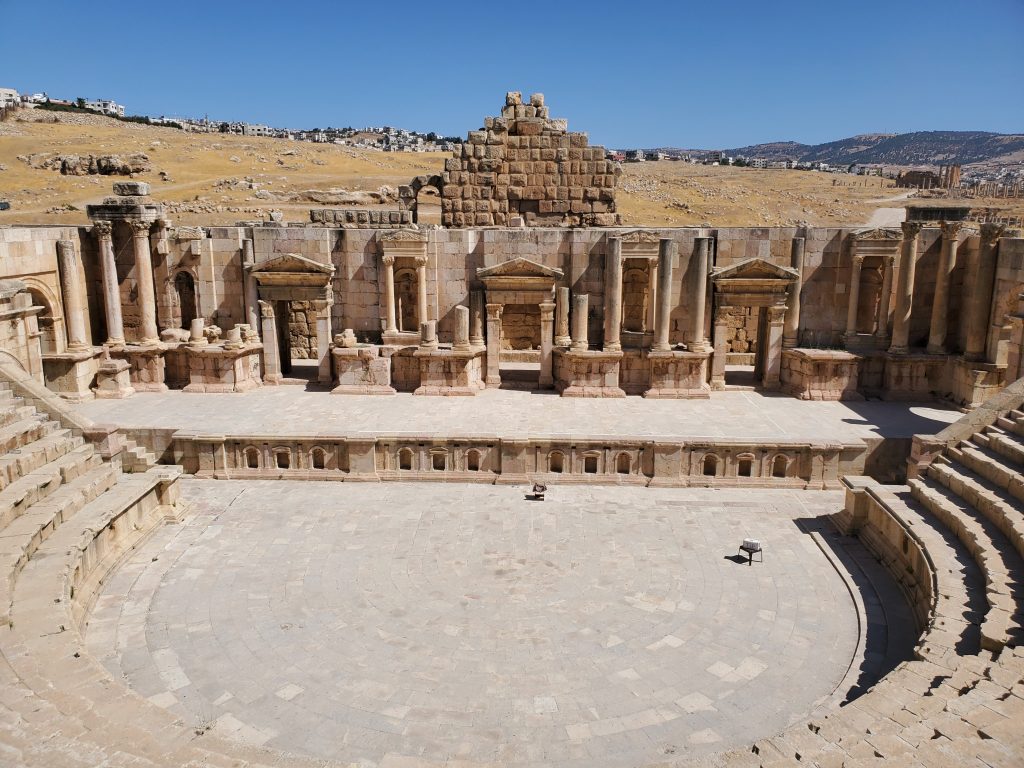
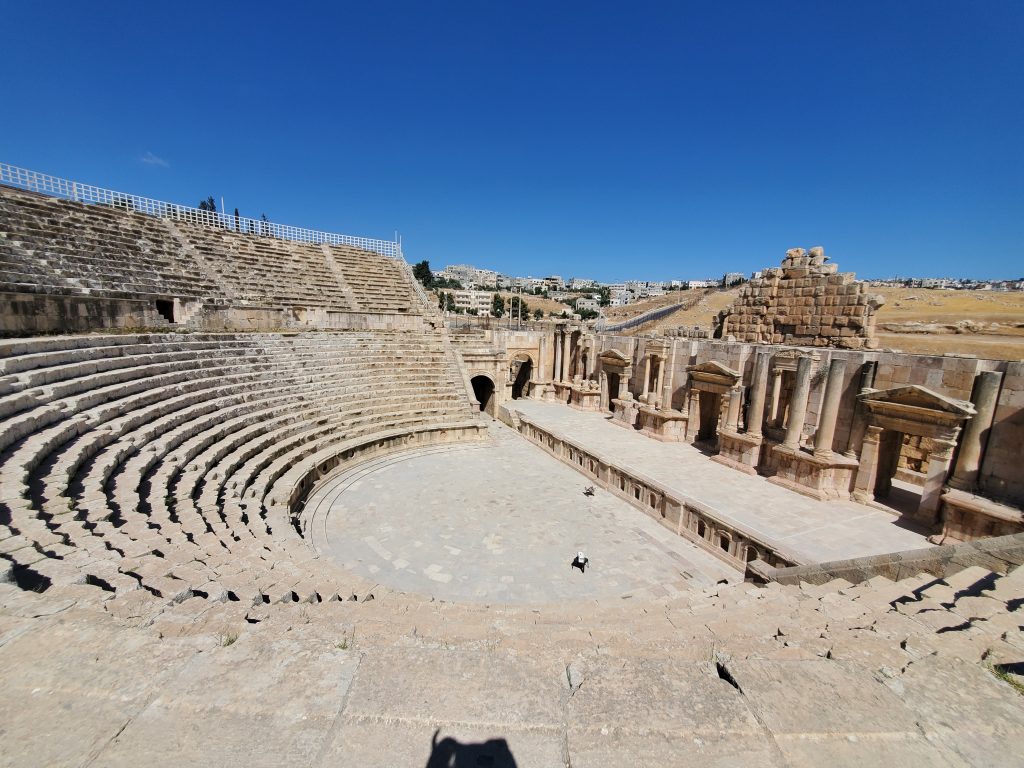
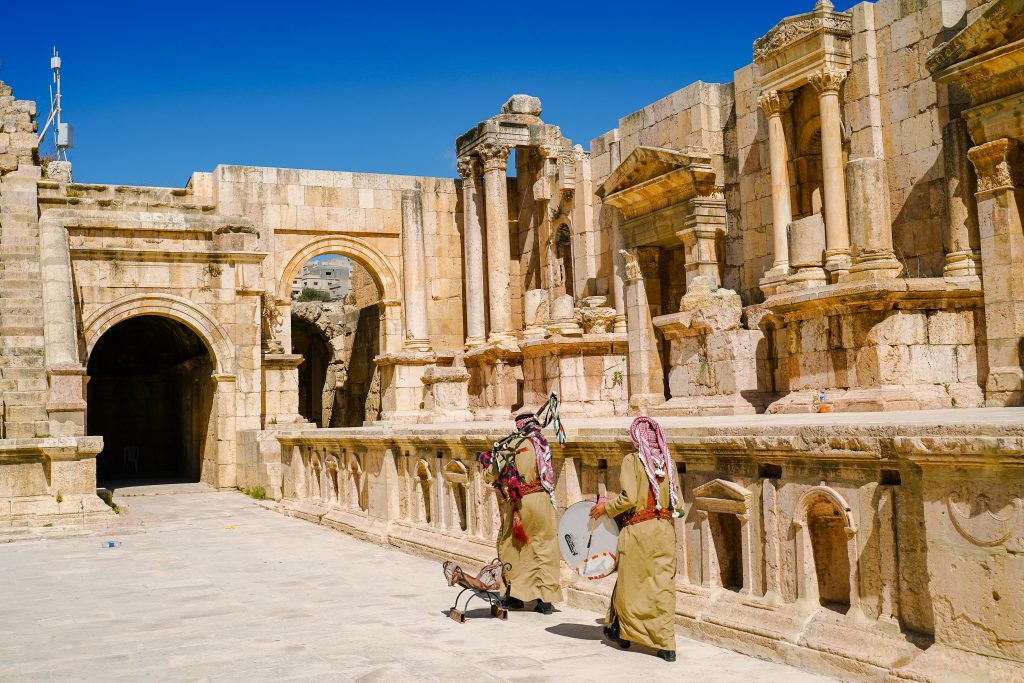

Temple of Zeus
A great place to end your tour and take in more views of the colonnaded street and oval forum. You can explore around the edges or even climb to the top of the ruins through a stair case that was open when we were there.
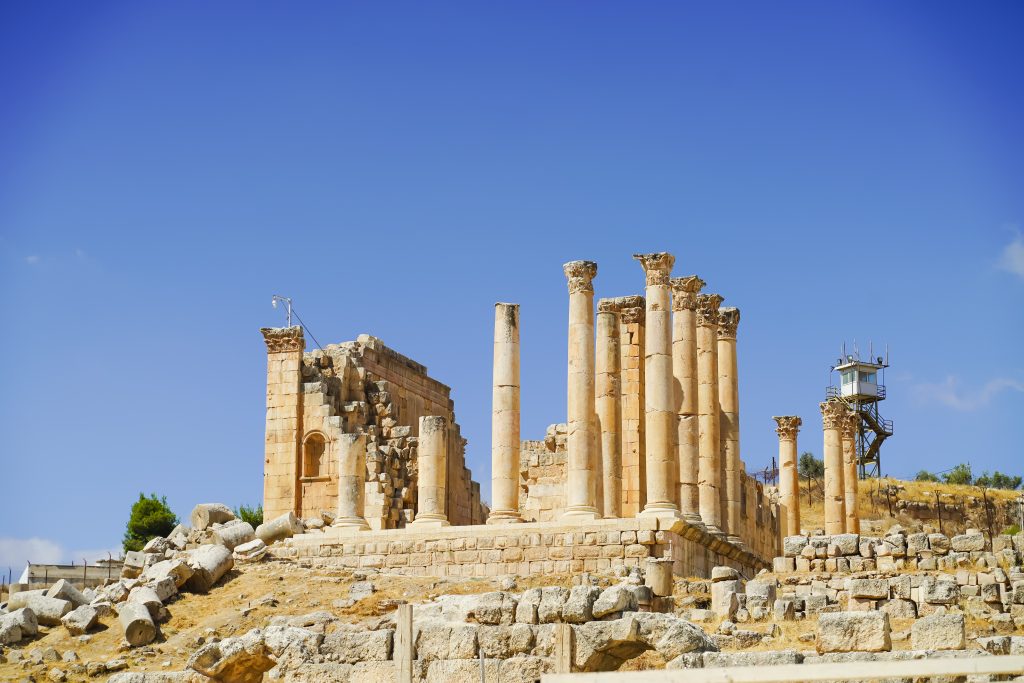
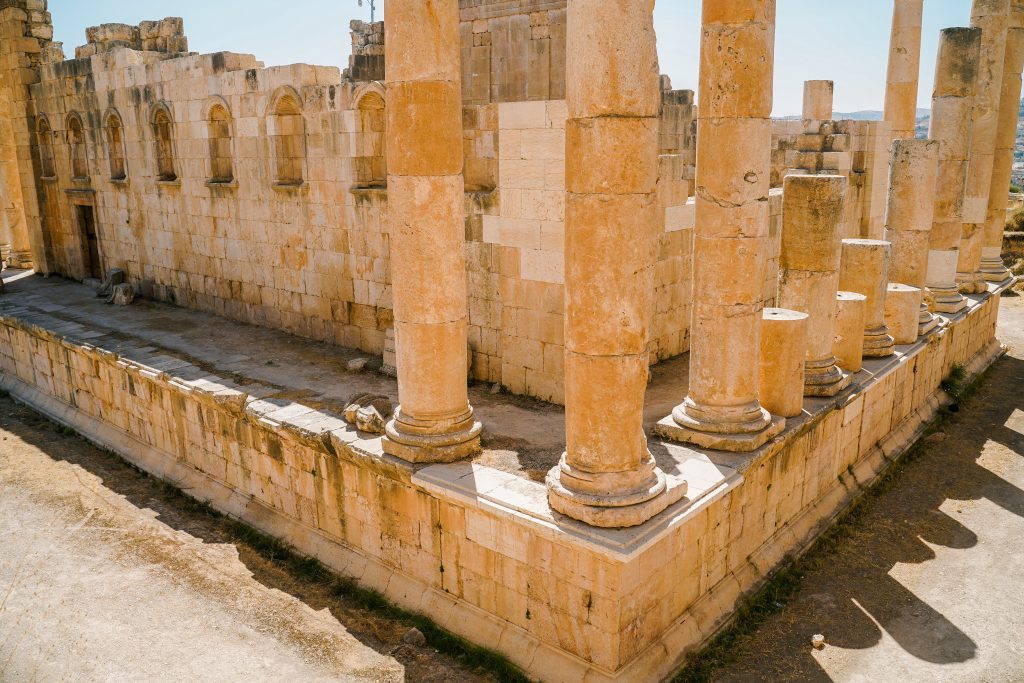
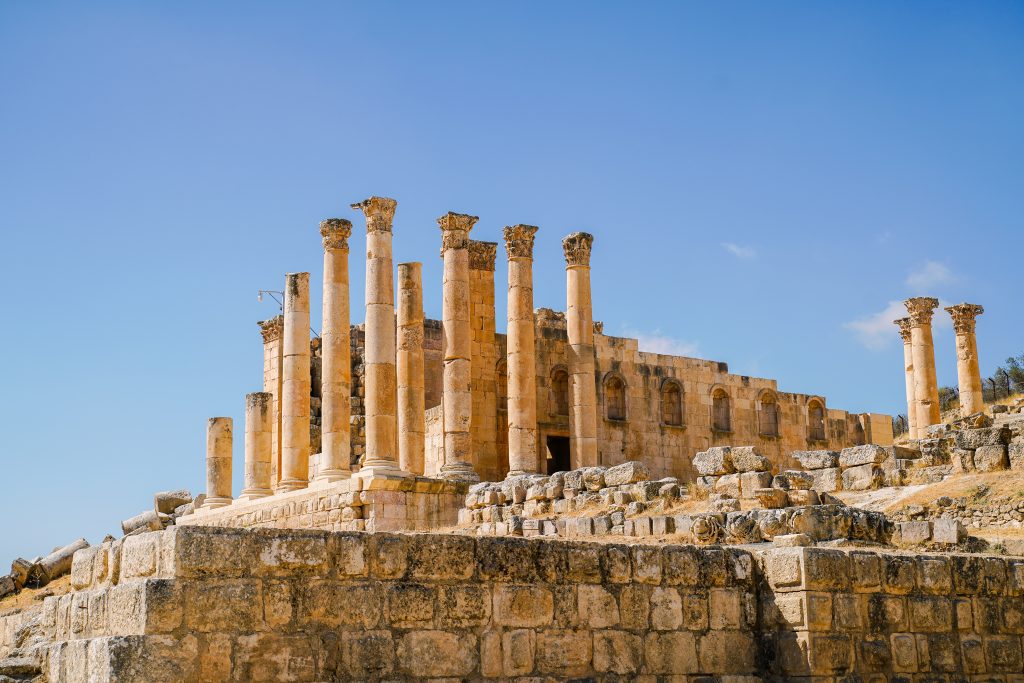
The Jerash Souk
The marketplace is just outside the entrance to Jerash archeological site. (As we’d point out about any museum or tourist spot, you end with the gift shop) Souvenirs are likely to be cheaper here than Petra and the shop sellers were much more respectful and courteous. I highly recommend checking out things here to save yourself from having to buy any of your keep sakes in Petra. (They were much more aggressive and a la Egypt vendors there)
Summary of our visit:
We had a leisurely morning having one of the best breakfasts on our trip before being picked up by our driver at 9. We stopped and picked up our tour guide along the way as well and made the short drive to Jerash. Once there our guide walked us through some of the buildings pointing out significant architecture and unique features of Jerash and then we had over an hour to explore on our own. It was plenty of time to walk the whole loop and wasn’t very busy at all so we had the place in large part to ourselves.
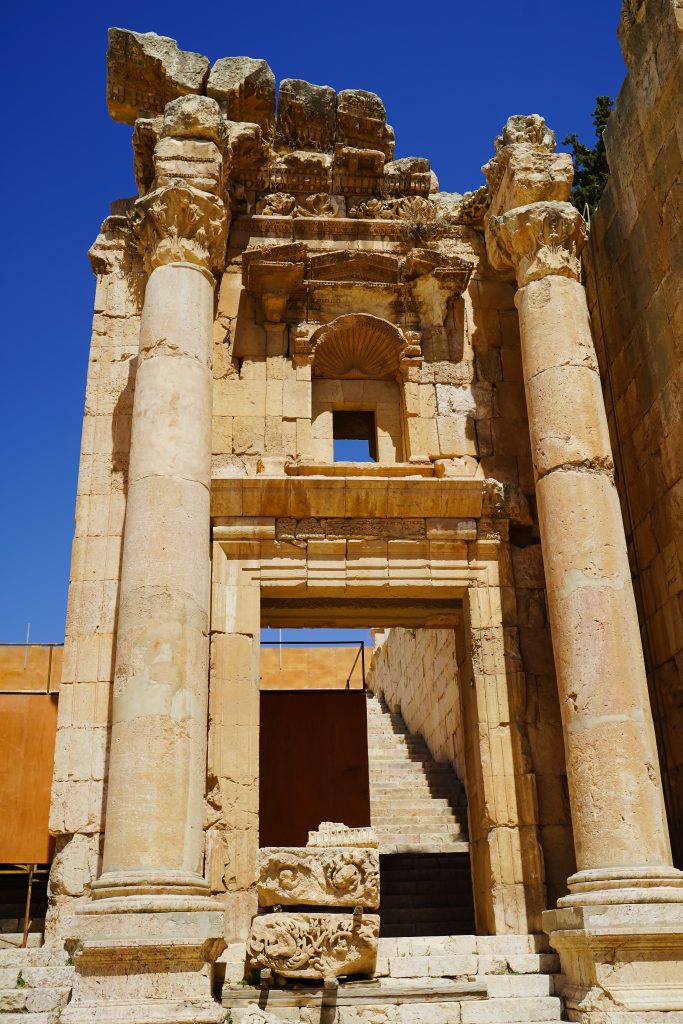
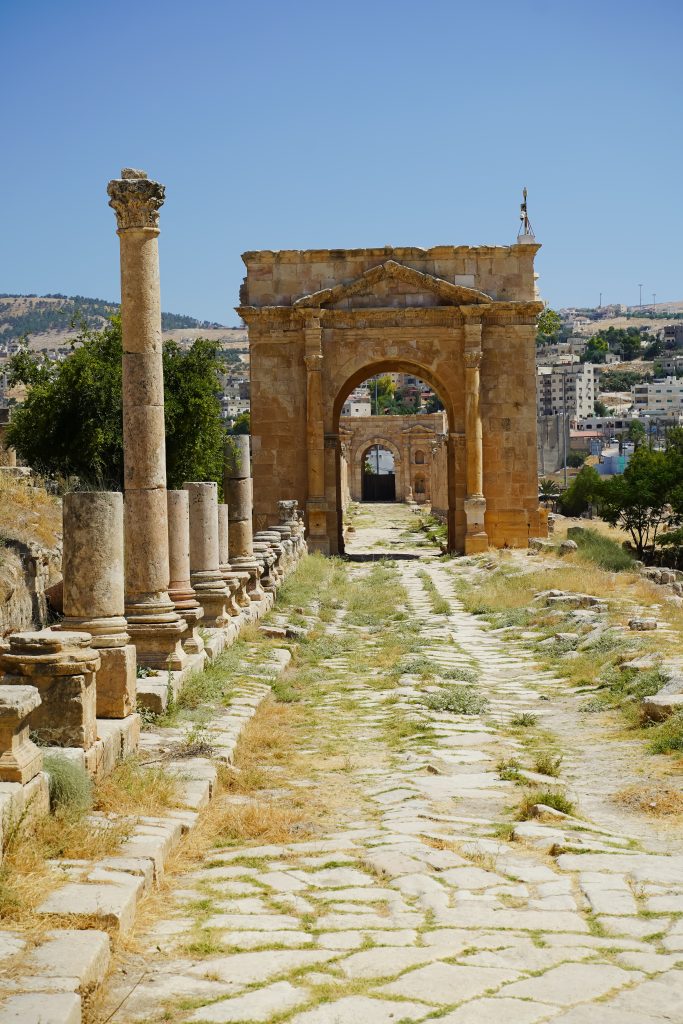
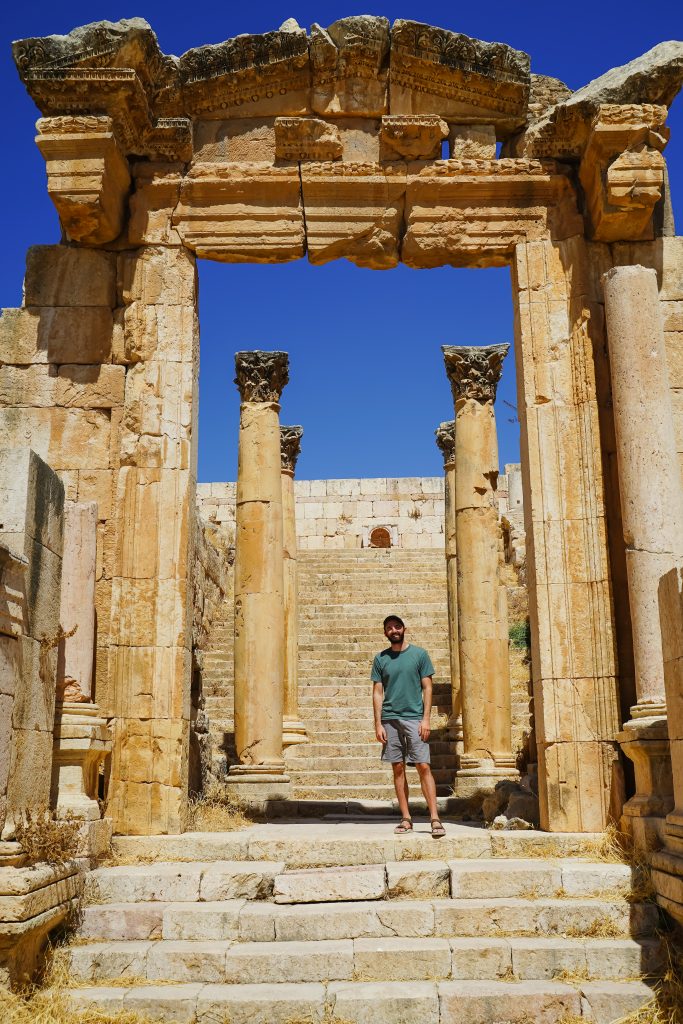
Once we finished exploring and taking photos we met our guide and driver back in the Souk at the entrance where we got some delicious slushies, picked up a couple souvenirs and headed back toward Amman to continue south towards Petra. We were pretty impressed with the size and condition of Jerash. Considering how easy a place it is to visit, it’s absolutely a must see on a trip to Jordan.
